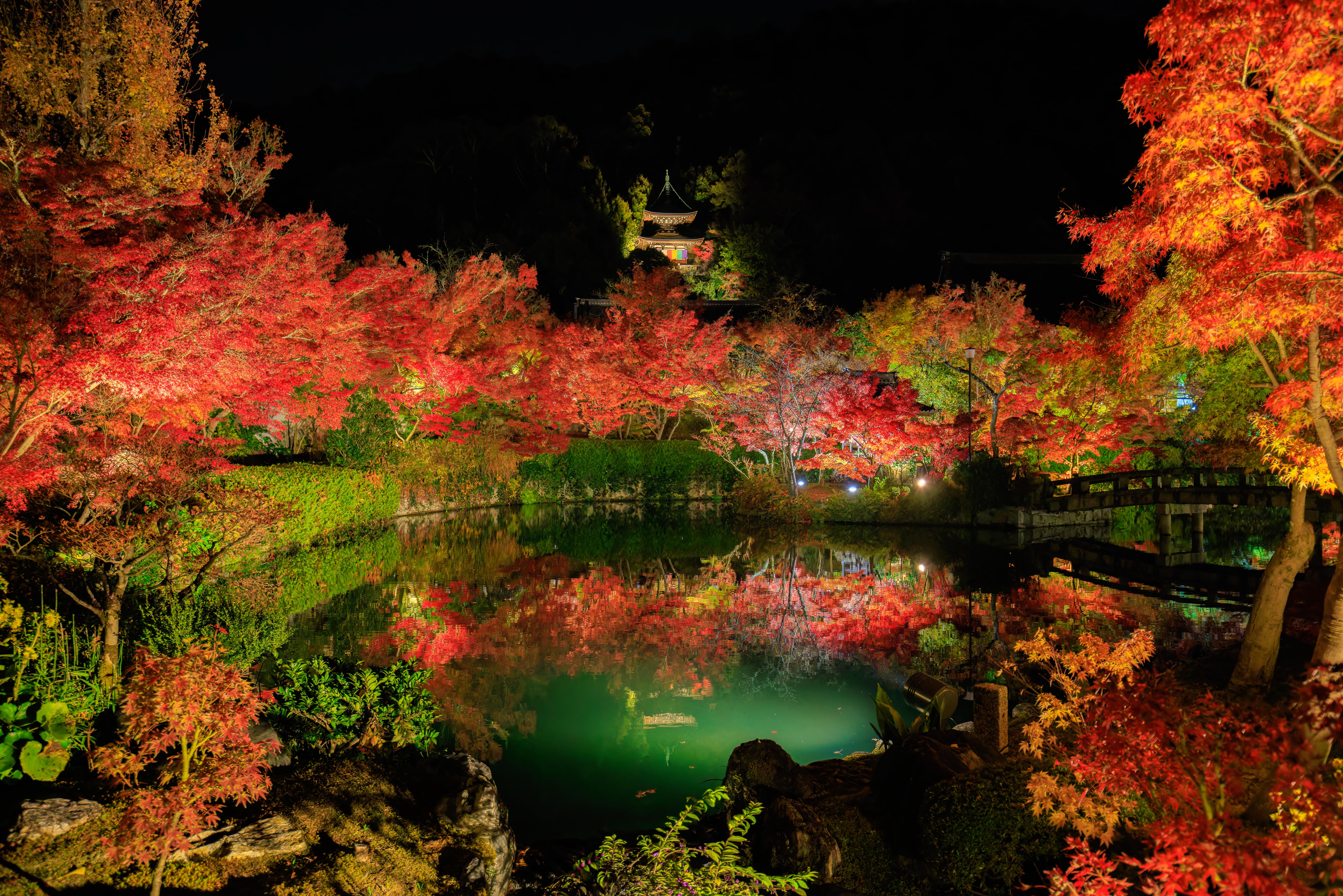We left relatively early from the Hyatt Place Kyoto by bus to Ginkaku-ji, the Silver Pavilion, where we enjoyed the temple and a bit of fall color. We followed up by walking along the Philosopher’s Path which was unfortunately well past peak. We headed from the path’s south end to get lunch followed by a visit to nearby Eikando Zenrin-ji where the maples were plentiful and the colors were much better! We then walked to Nanzen-ji, which had some fall foliage. After walking around the area and the Keage Incline, which apparently is much better for cherry blossoms than fall foliage, we had a quick dinner and headed back to Eikando Zenrin-ji for the evening illumination event.
Breakfast
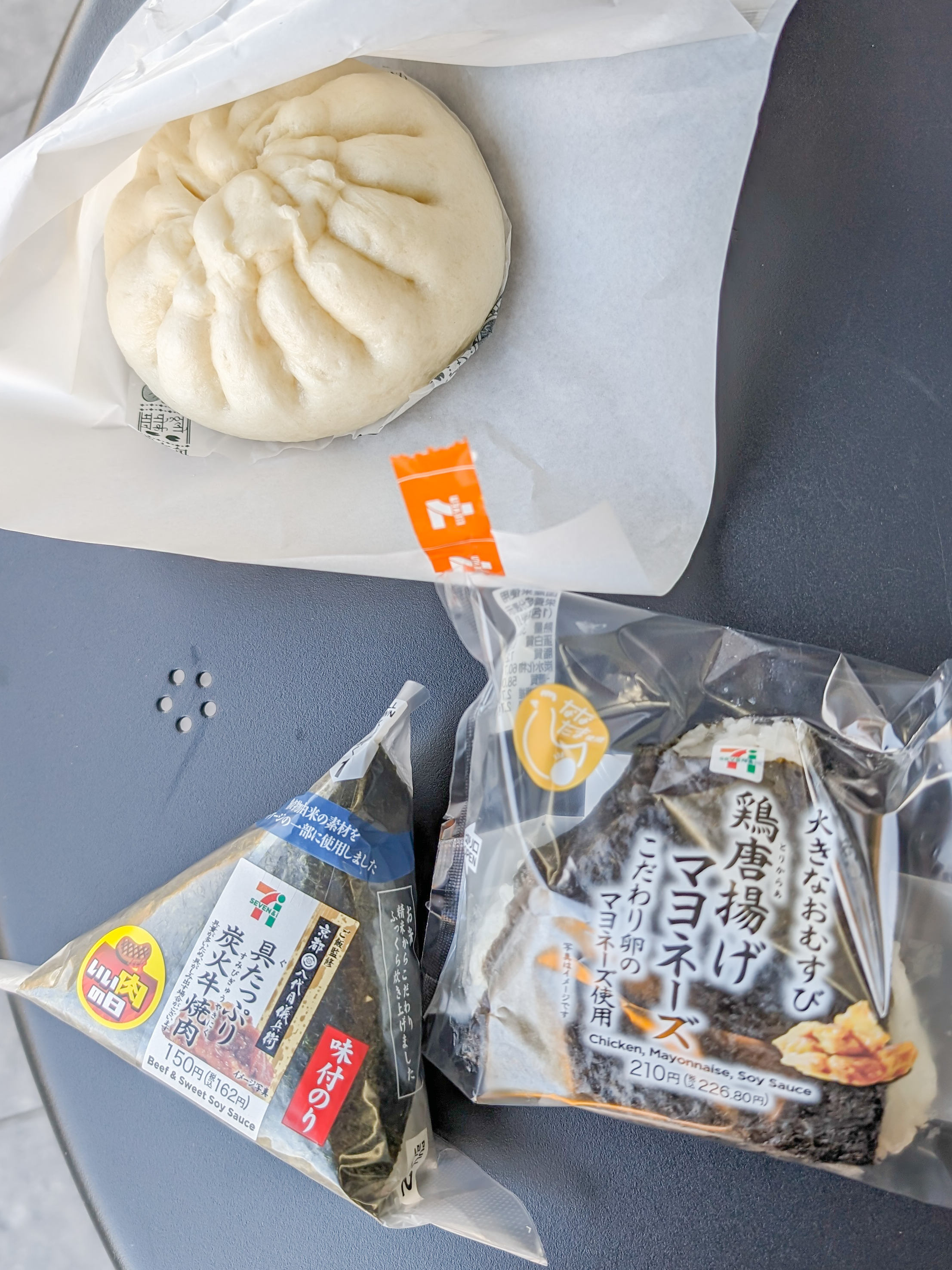
After waking up at the Hyatt Place Kyoto, we headed to the nearby 7-Eleven to grab a quick breakfast. We didn’t get much, just some onigiri and a pork bun. We discovered that they have a beef flavored onigiri! It was all pretty good, particularly considering the very affordable price! We ate at one of the two tables outside as the counter area inside was full of people who were eating as well.
After eating, we caught the 204 bus from the opposite side of the street to head east on to Ginkaku-ji. We got off at Ginkakujimichi, by the start of the Philosopher’s Path. This pedestrian walkway runs along a canal roughly between Ginkaku-ji and Eikando Zenrin-ji. This canal is part of a much longer canal route that runs to Lake Biwa1, the largest freshwater lake in Japan, on the other side of Kyoto’s eastern mountains.
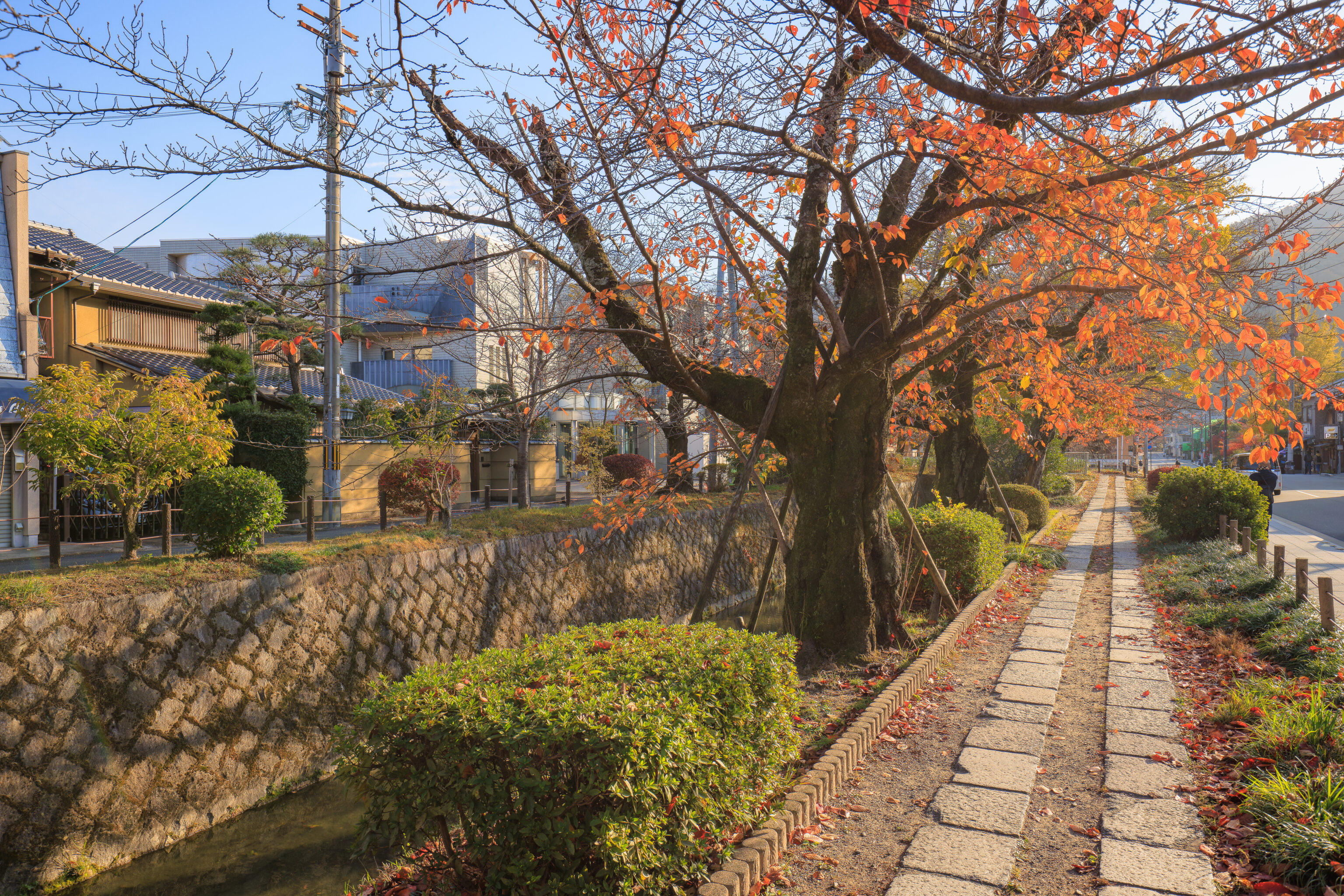
It was quickly apparent that there weren’t really any Japanese maples here and that the trees had mostly already dropped their leaves. Still, we started walking on the path to reach Ginkaku-ji.
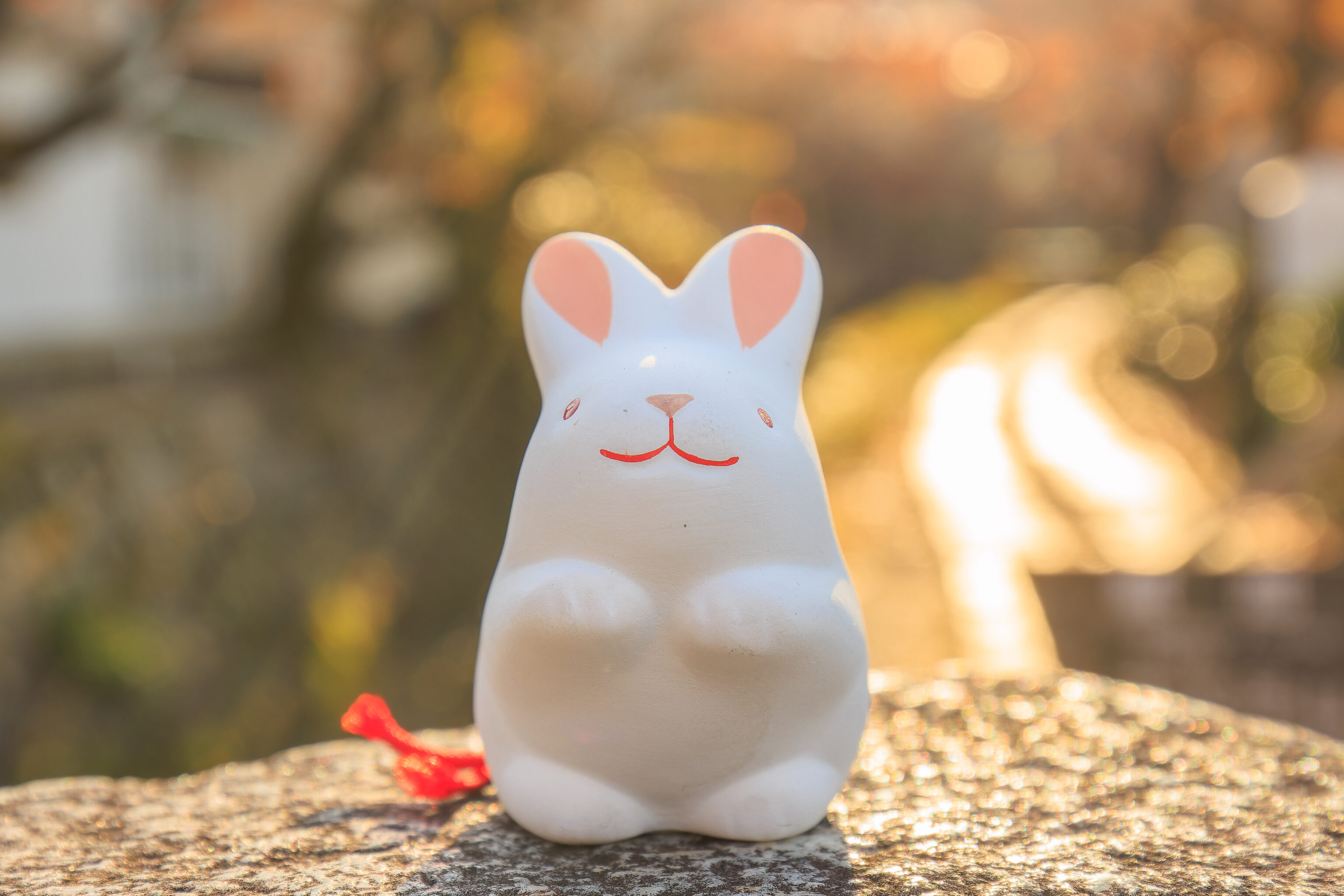
Someone left this little rabbit on a bridge that crosses the canal! It is currently the year of the rabbit, which may have something to do with this little critter’s presence! This bridge leads to the road that continues east to Ginkaku-ji while the canal and Philosopher’s Path curves to the south.
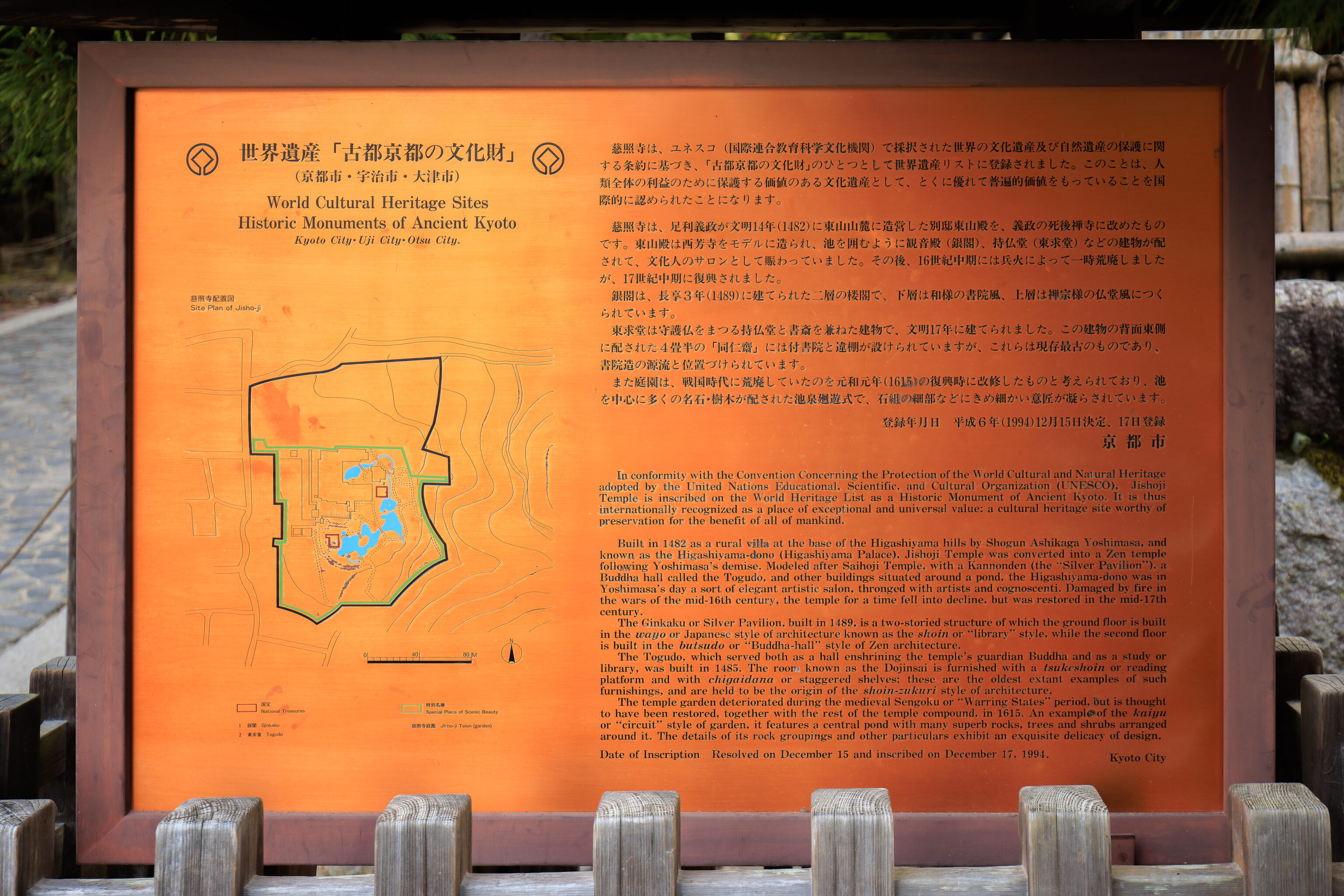
Ginkaku-ji, more formally Jisho-ji, is part of the Historic Monuments of Ancient Kyoto World Heritage Site. Ginkaku refers to the Silver Pavilion, the most well known building in this temple.
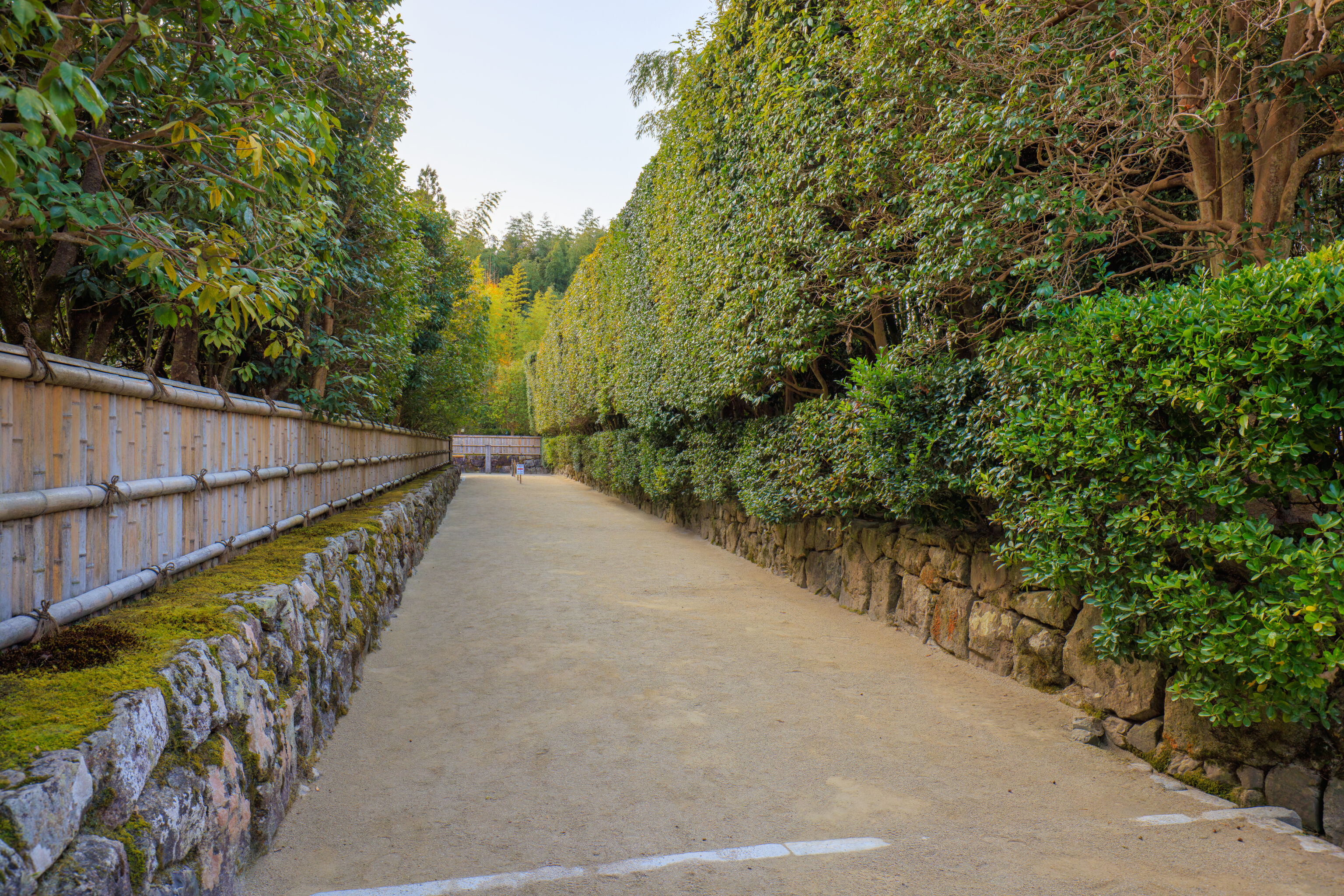
The entrance was just beyond the World Heritage Site sign. It was not busy at all when we arrived! Very different from everywhere we visited yesterday!
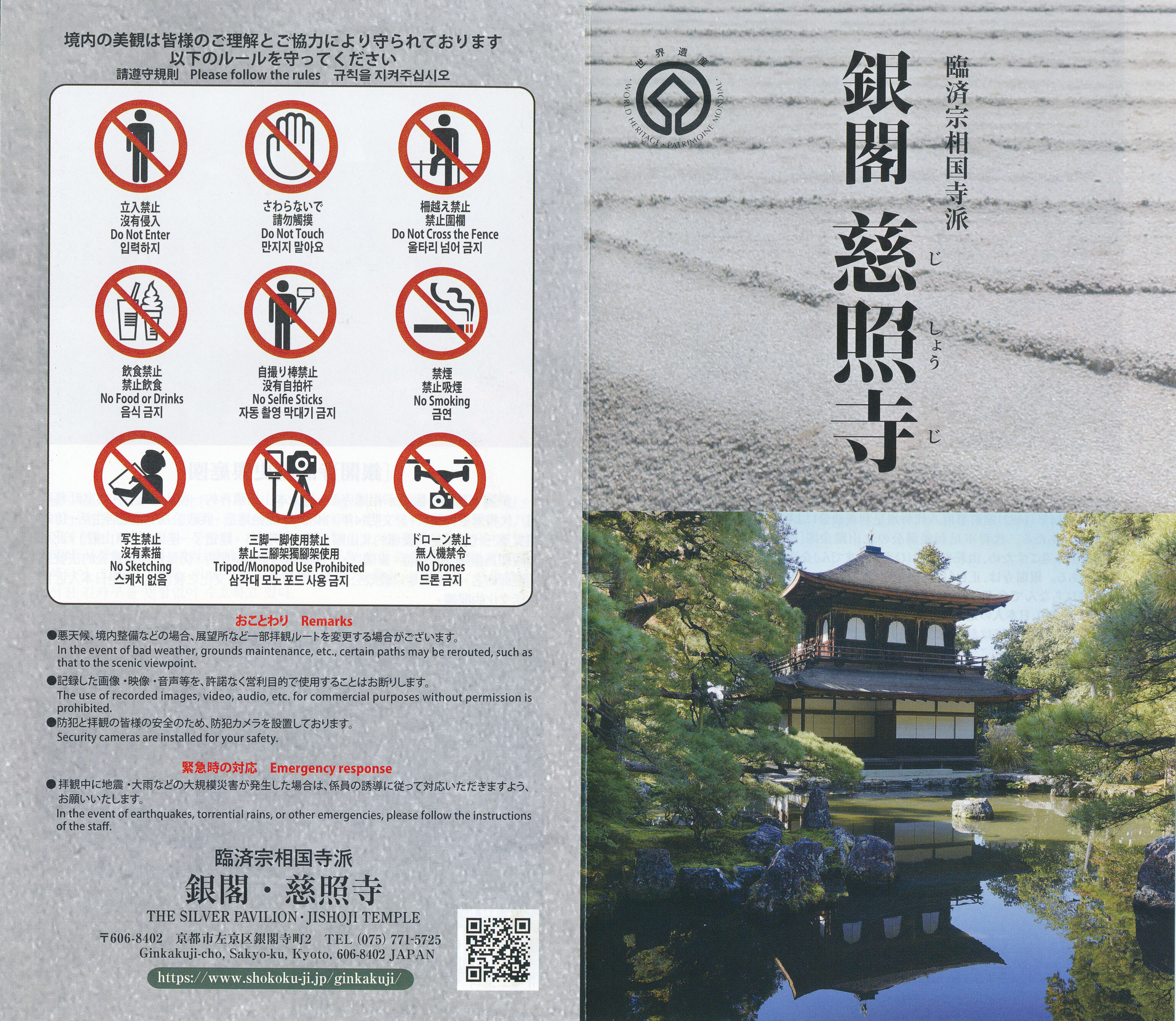
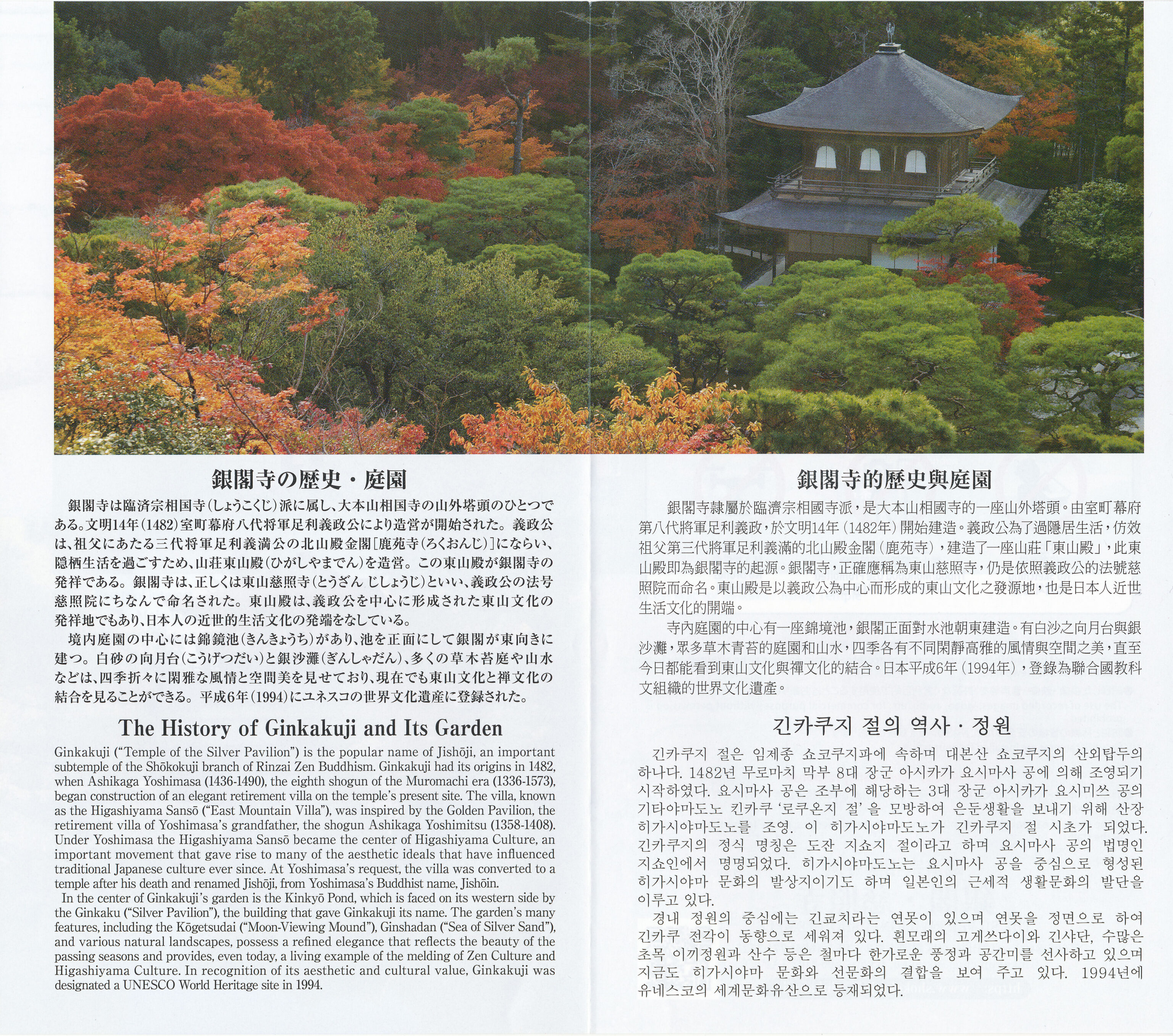
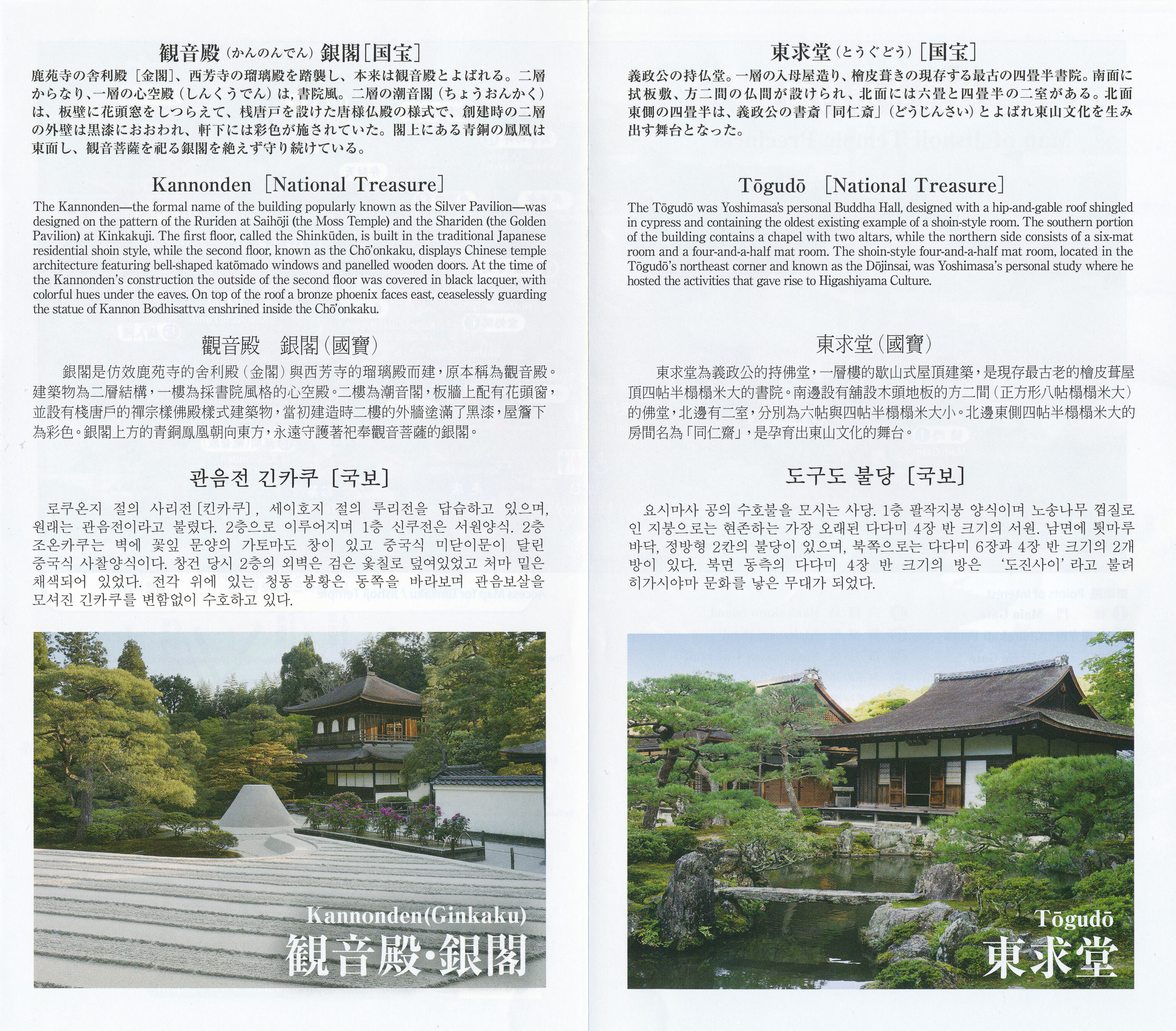
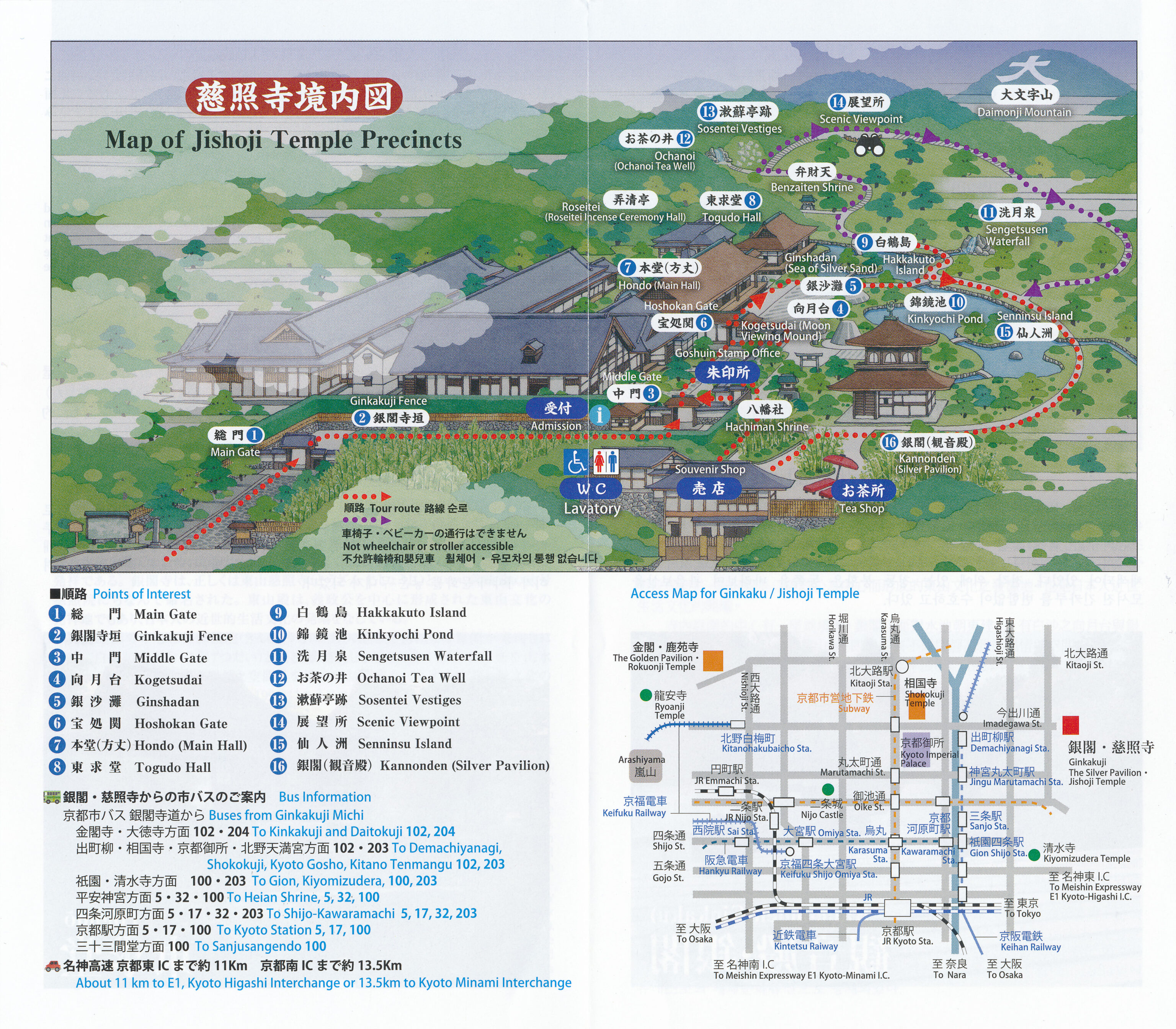
We paid the entrance fee and received a small informational pamphlet which included English text along with a map.
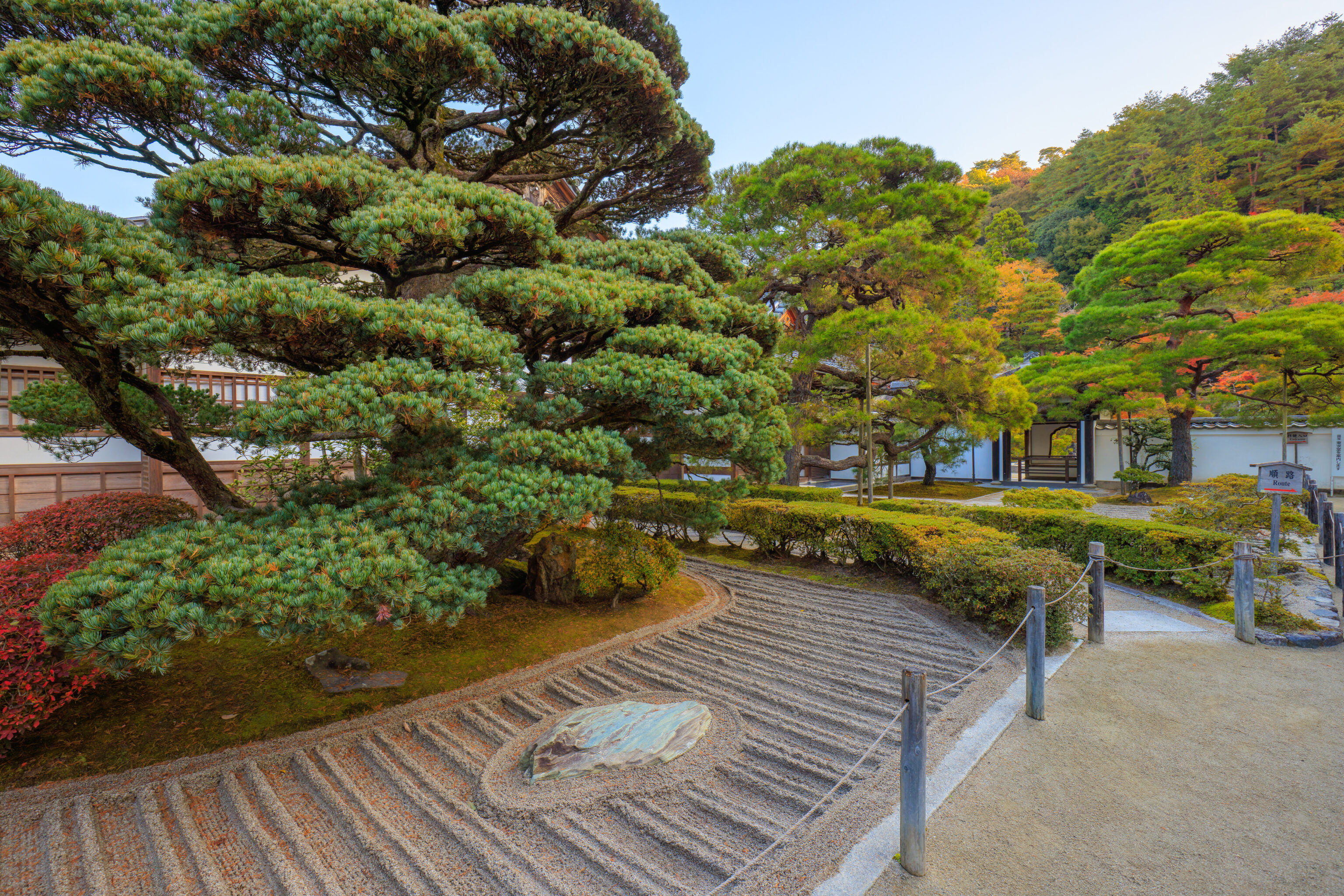
We immediately saw a small dry garden. Most of the trees seemed to be evergreens, though we did see some fall colors here and there.
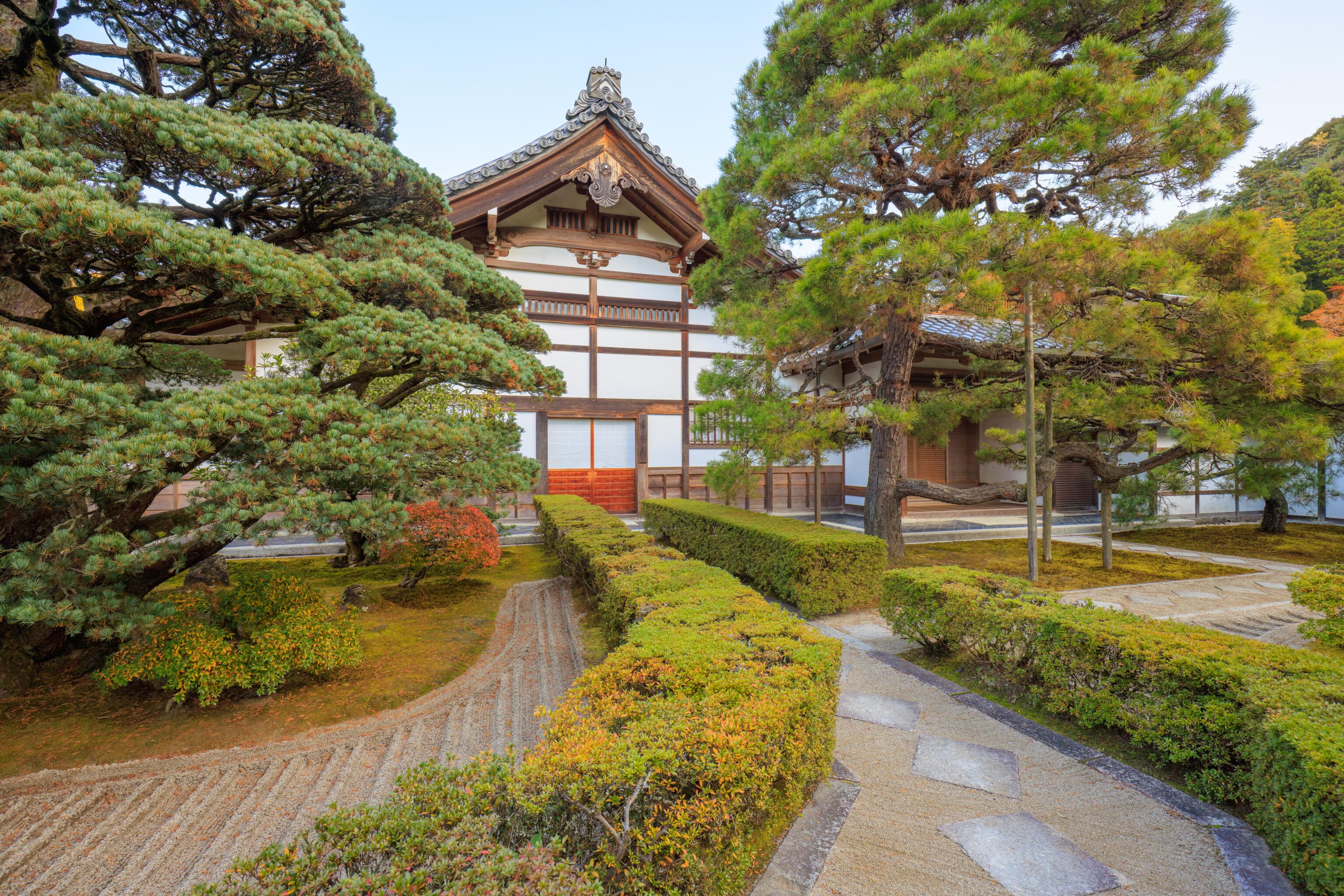
The path to this building was blocked, the simple rope barrier is visible in the previous photo on the right.
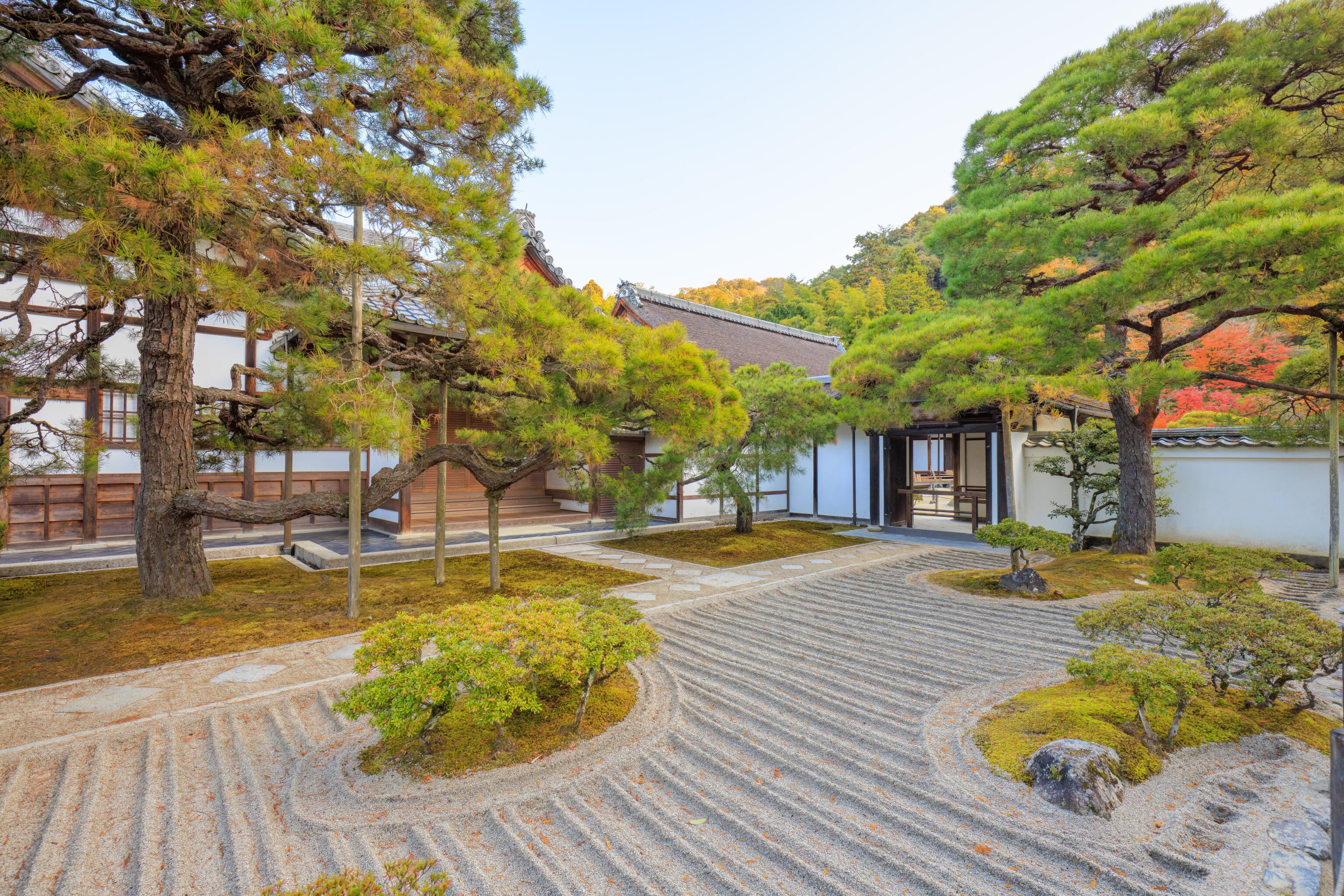
We continued along the route, passing by more well raked dry gardens.
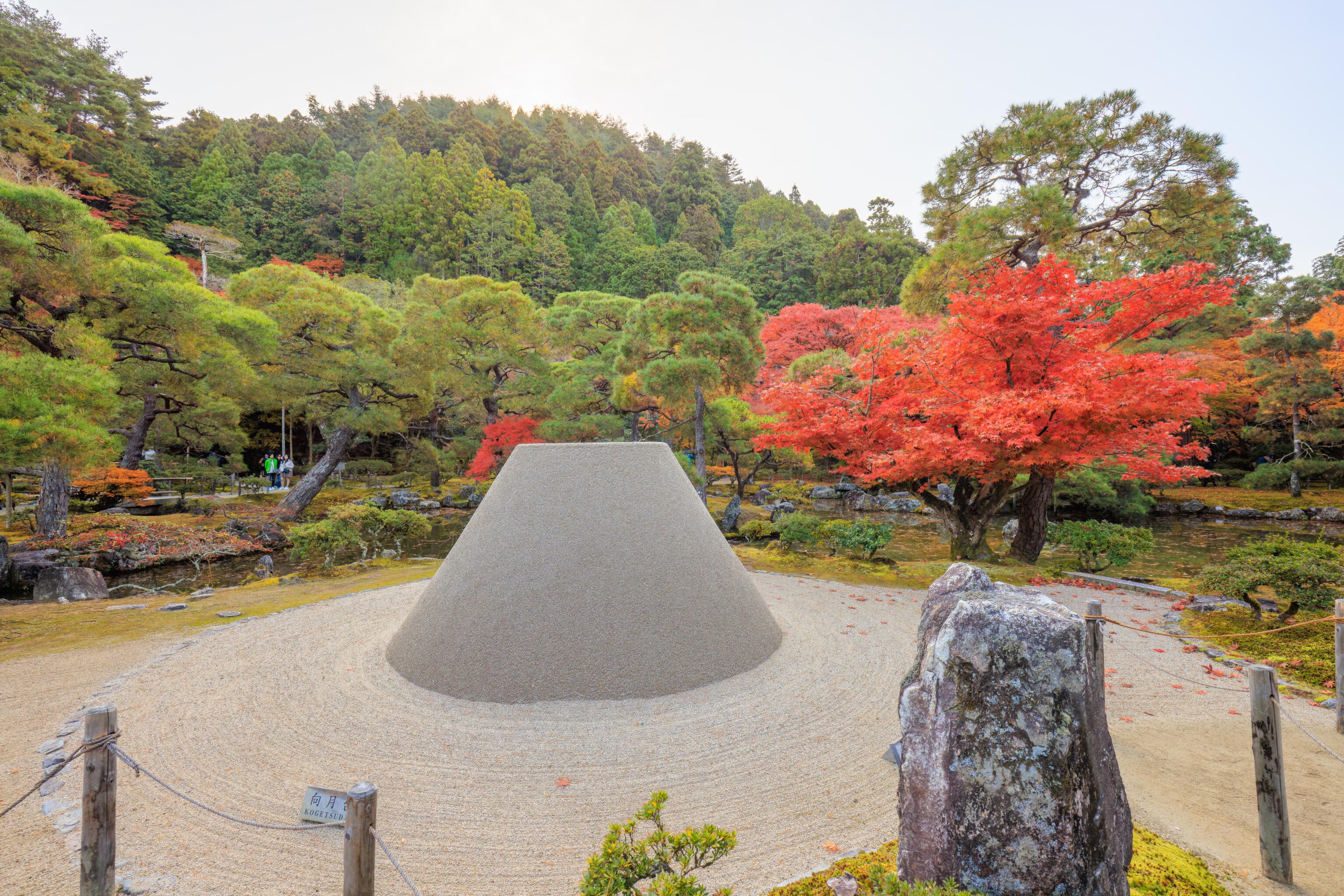
Although this mound of sand looks like a little volcano, it is actually the Moon Viewing Mound. The story is that when viewed from the Silver Pavilion, it looks like the reflection of the moon2.
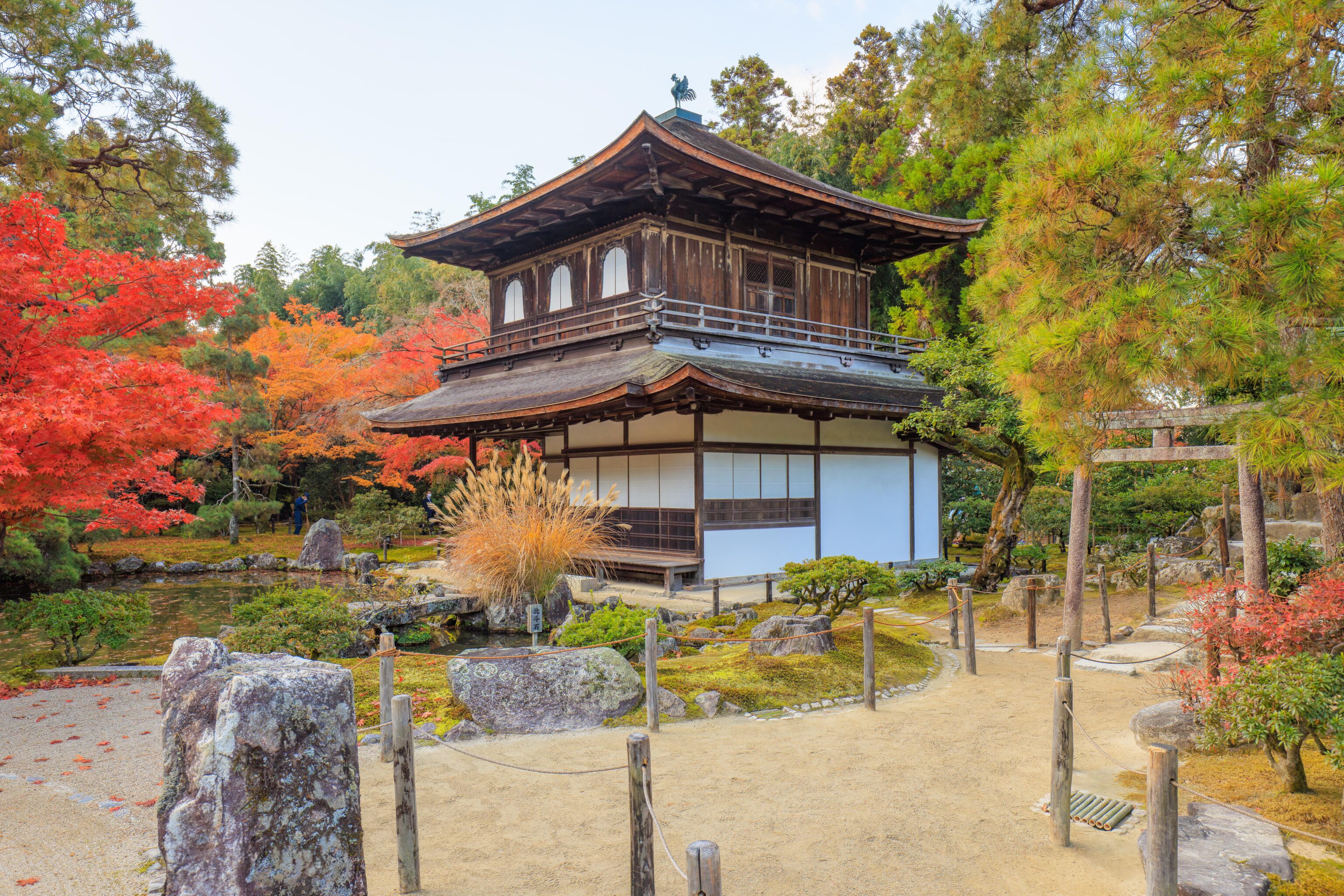
So where is the Silver Pavilion? It is nearby! Immediately, one notices that there is no silver at all here. The name comes from the original plans to coat the structure with silver foil, similar to how Kinkaku-ji, the Golden Pavilion, is coated with gold foil3,4.
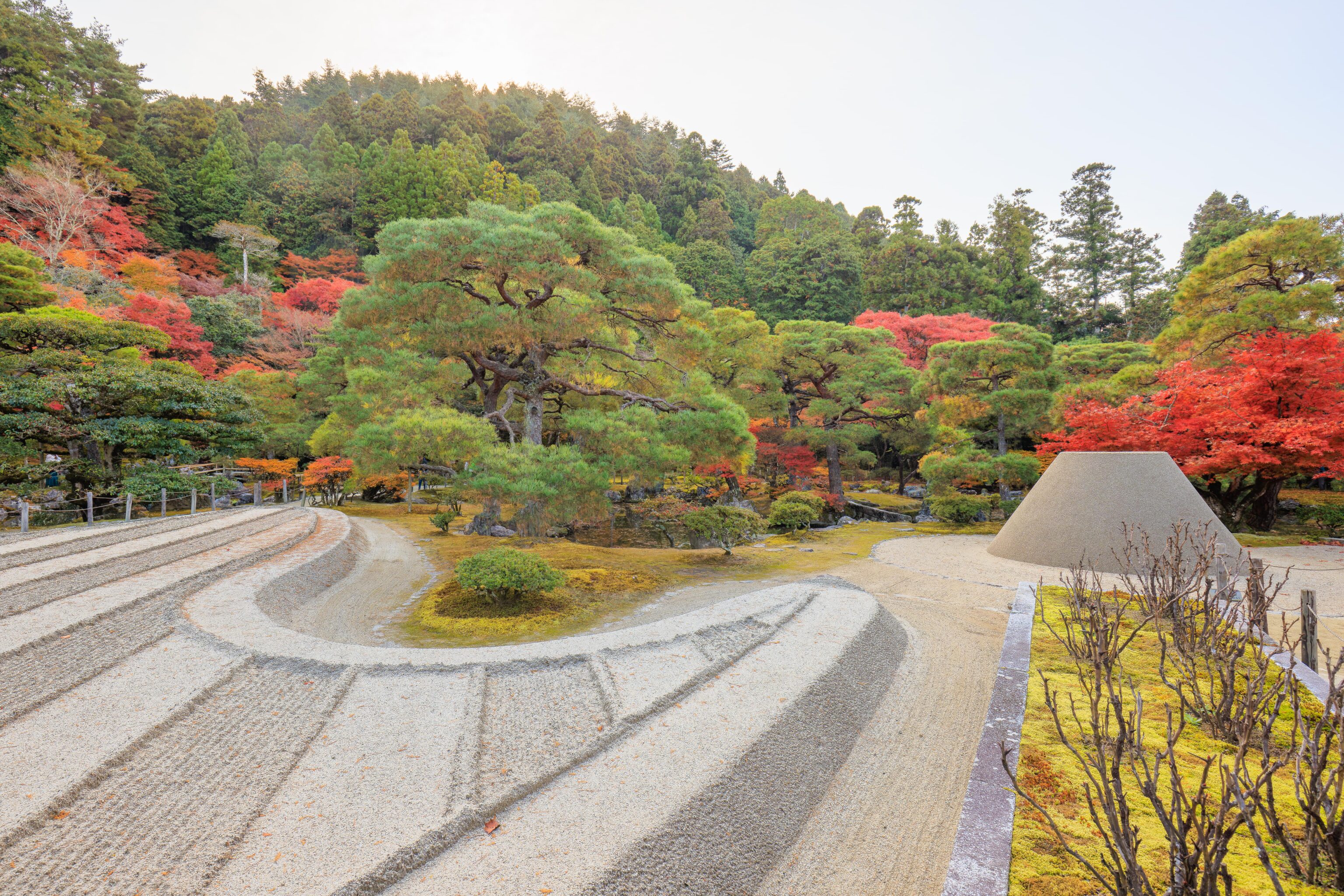
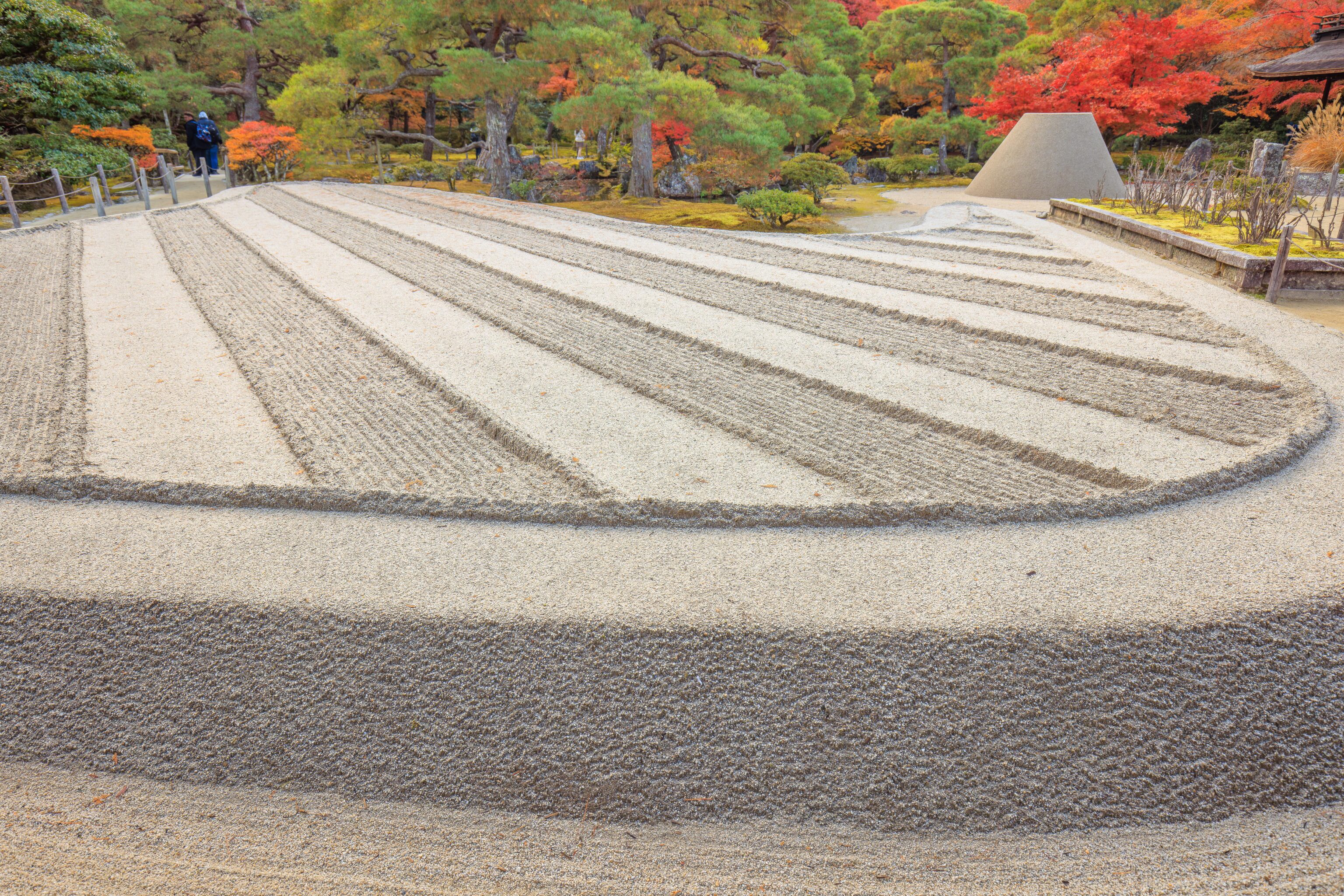
The dry garden next to the Moon Viewing Mound consists of an area of raked raised sand. Very different than most dry gardens! This area is Ginshadan, the Sea of Silver Sand. It is apparently made of compacted sand5, which seems to suggest that this is basically a solid sand platform sitting on the natural ground underneath.
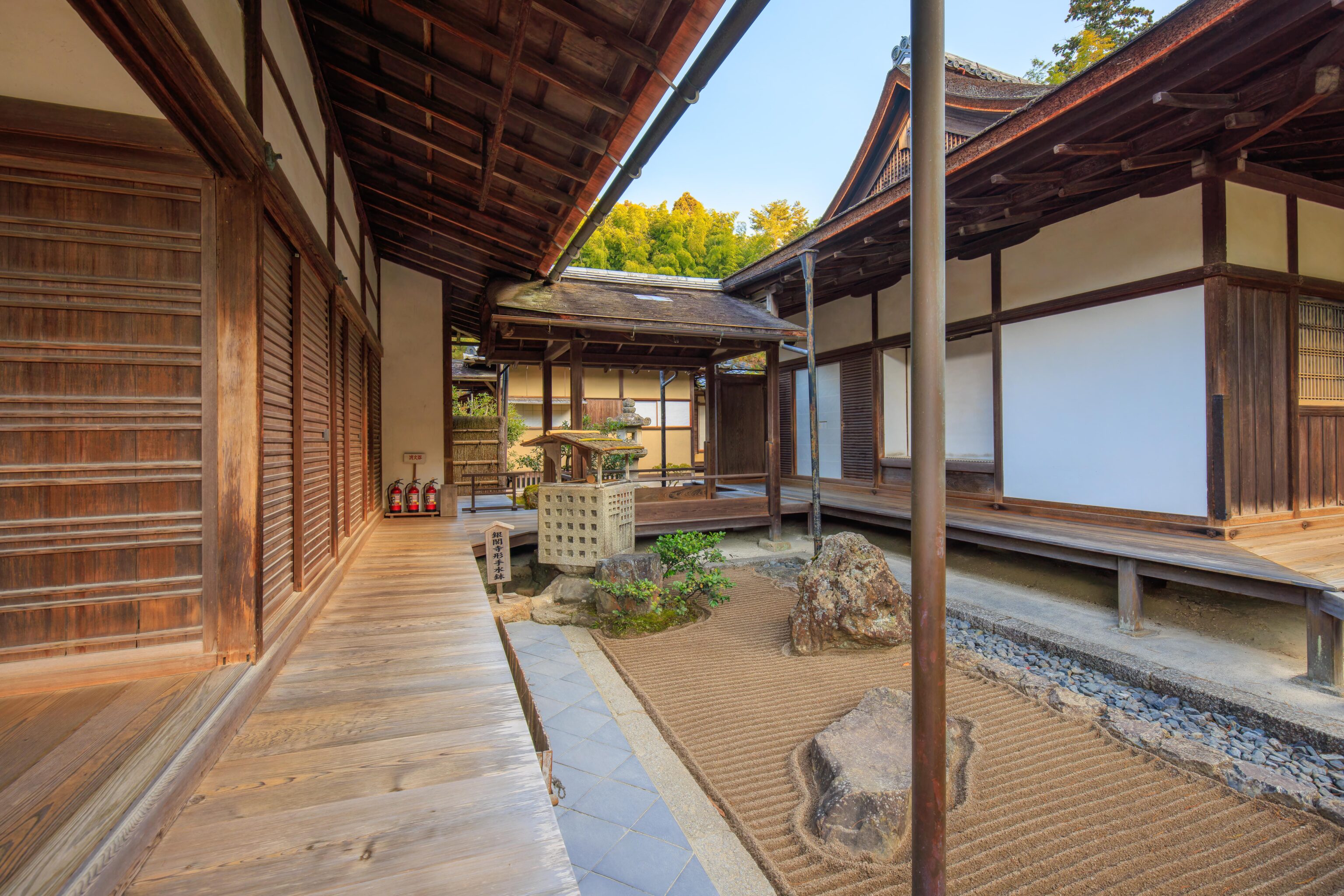
A little bit of dry garden between two temple buildings.
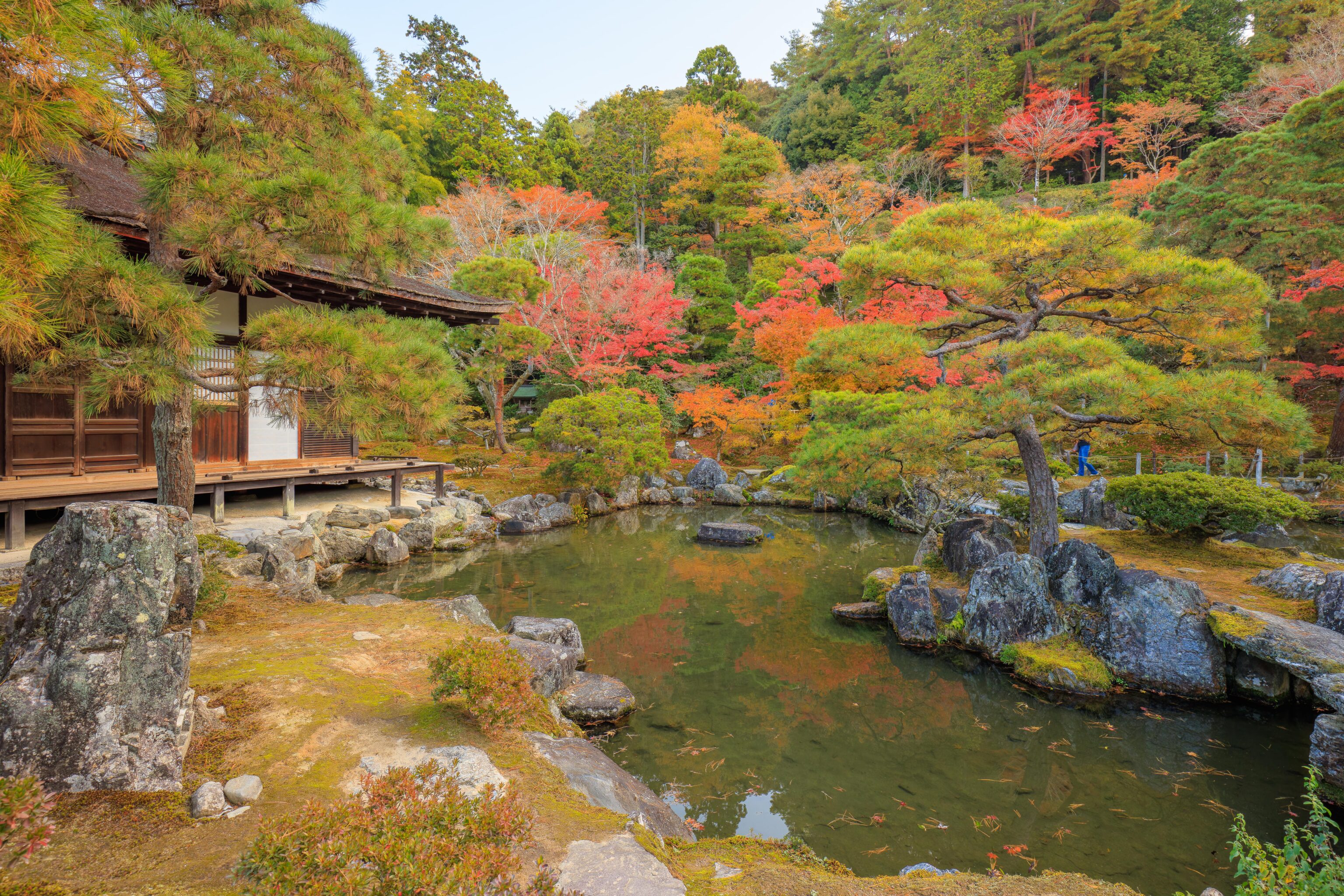
The path continues on to the edge of the Kinkyochi Pond, #10 on the map. This pond was on the far side of the Moon Viewing Mound when we first saw it.
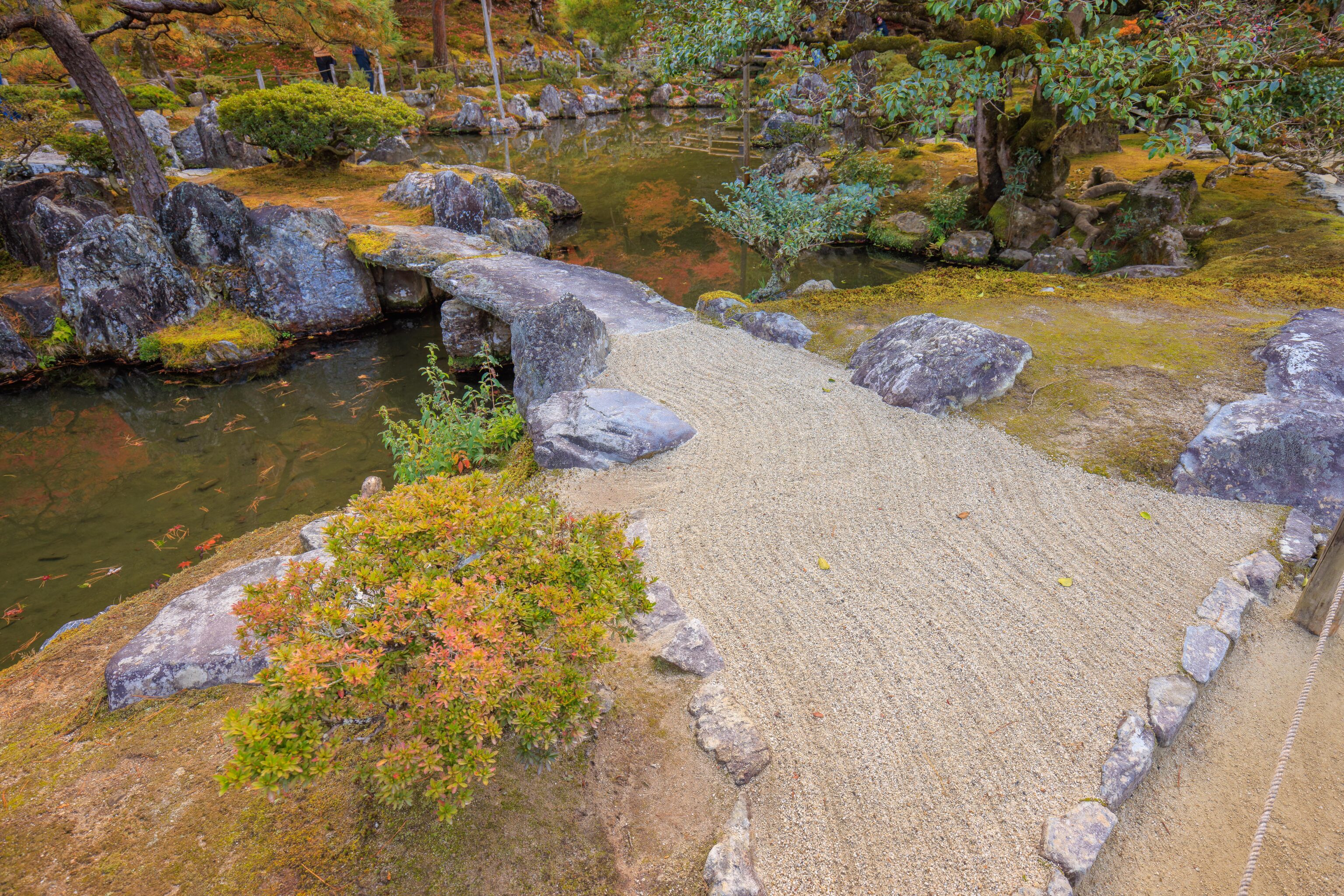
A raked sand path led to an inaccessible bridge across the pond’s surface.
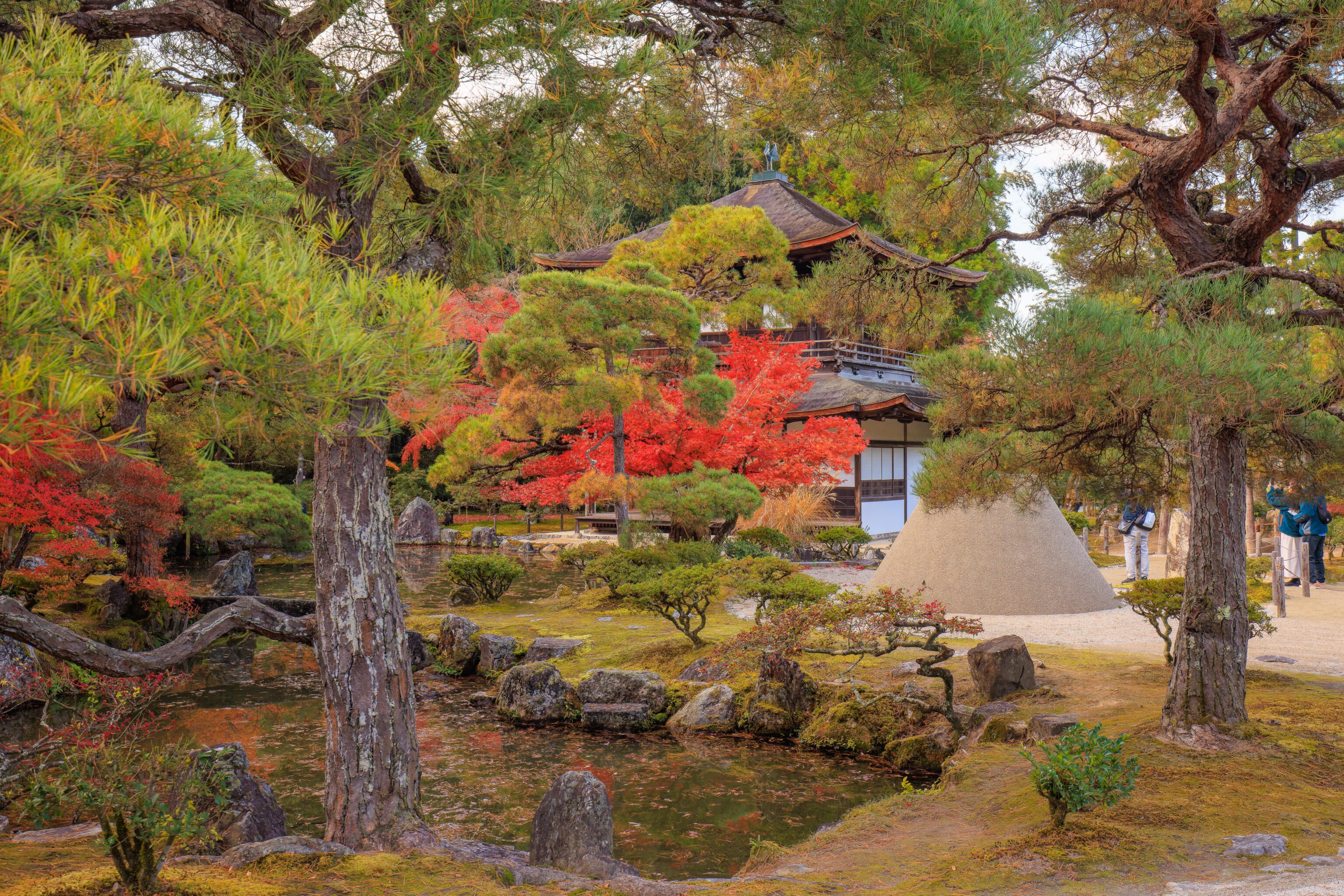
Soon, we could see the pond in the foreground and the Moon Viewing Mound as well as Silver Pavilion beyond.
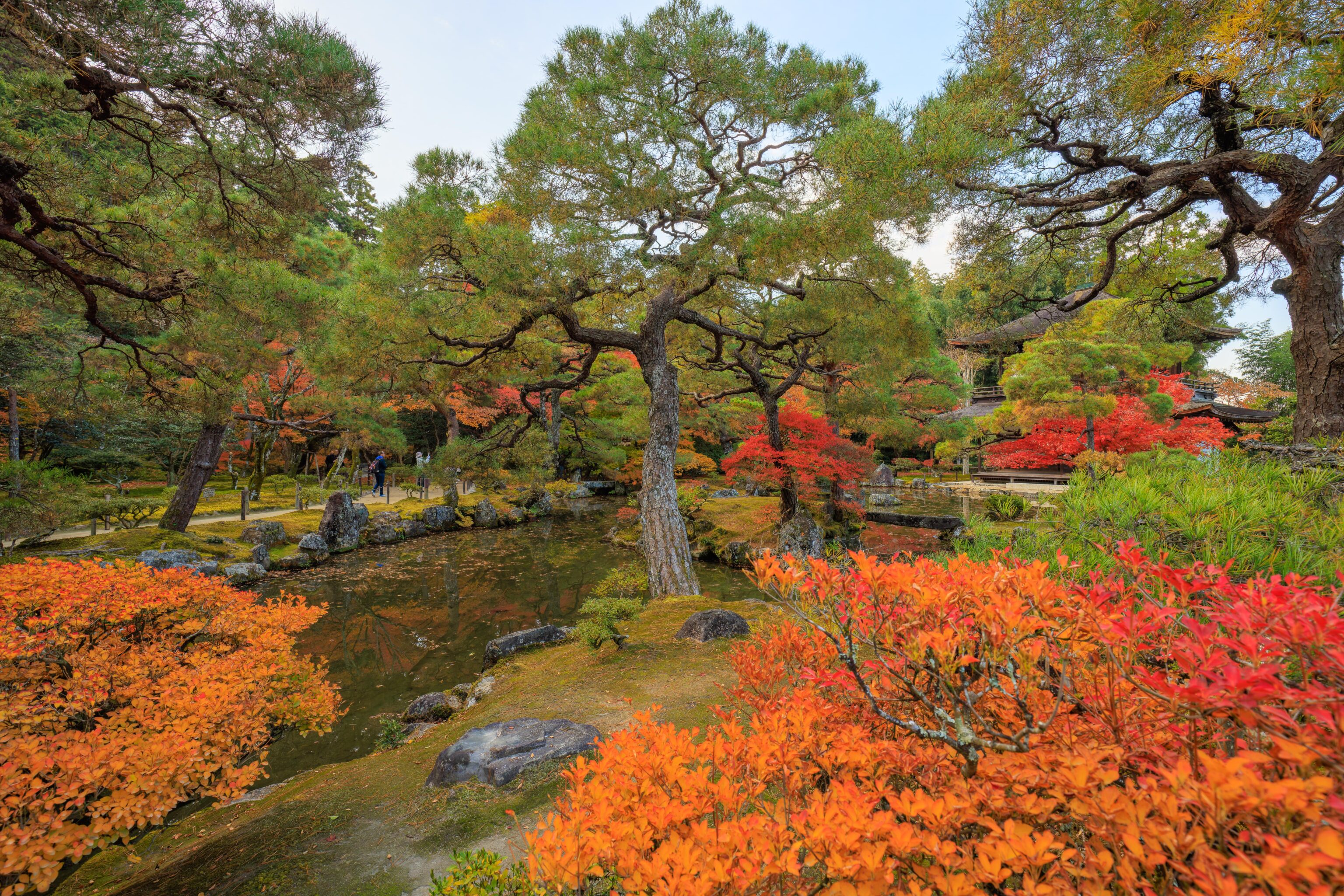
There was a little bit of fall foliage around the pond.
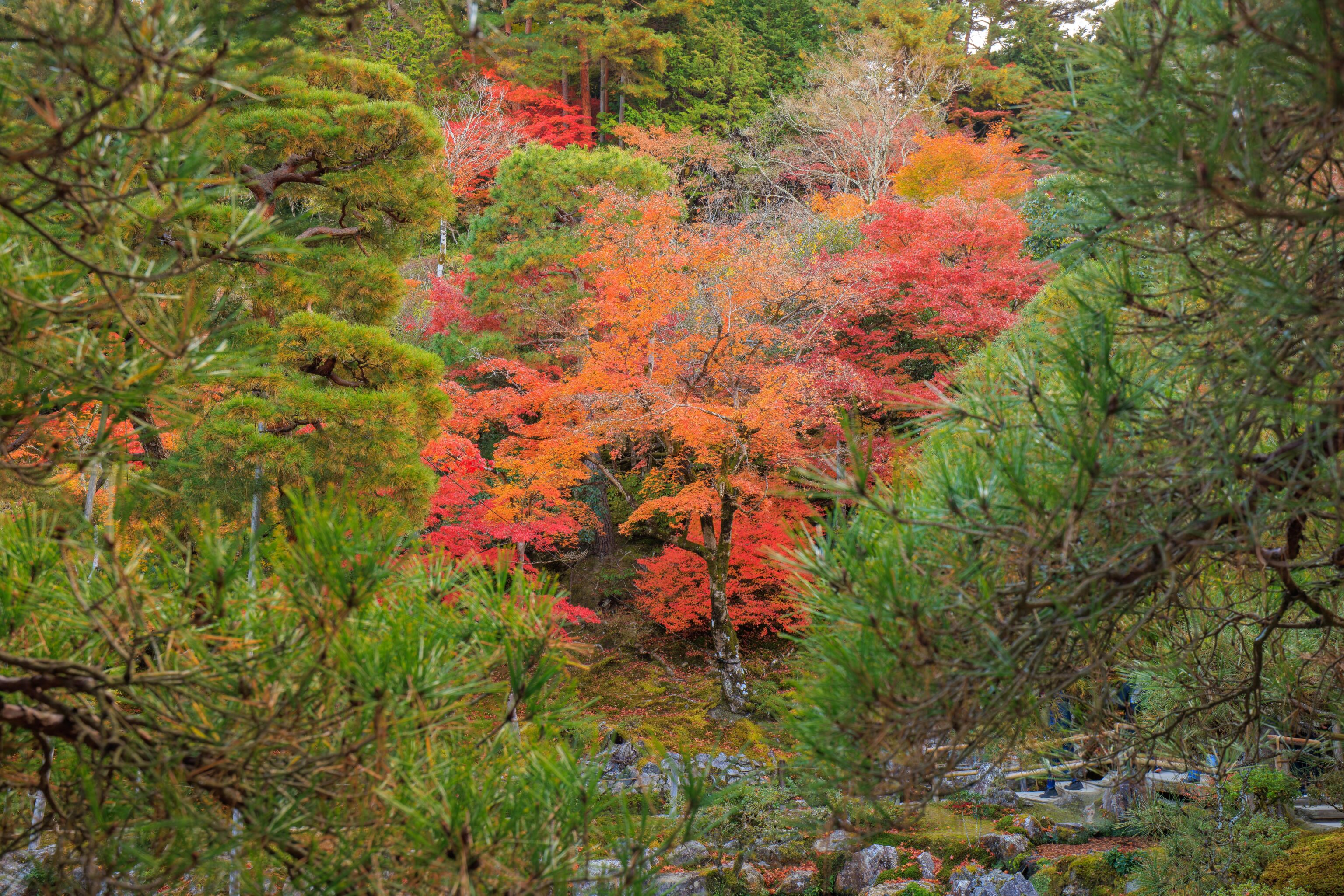
We saw some nice colors a bit further away through a gap in the pines.
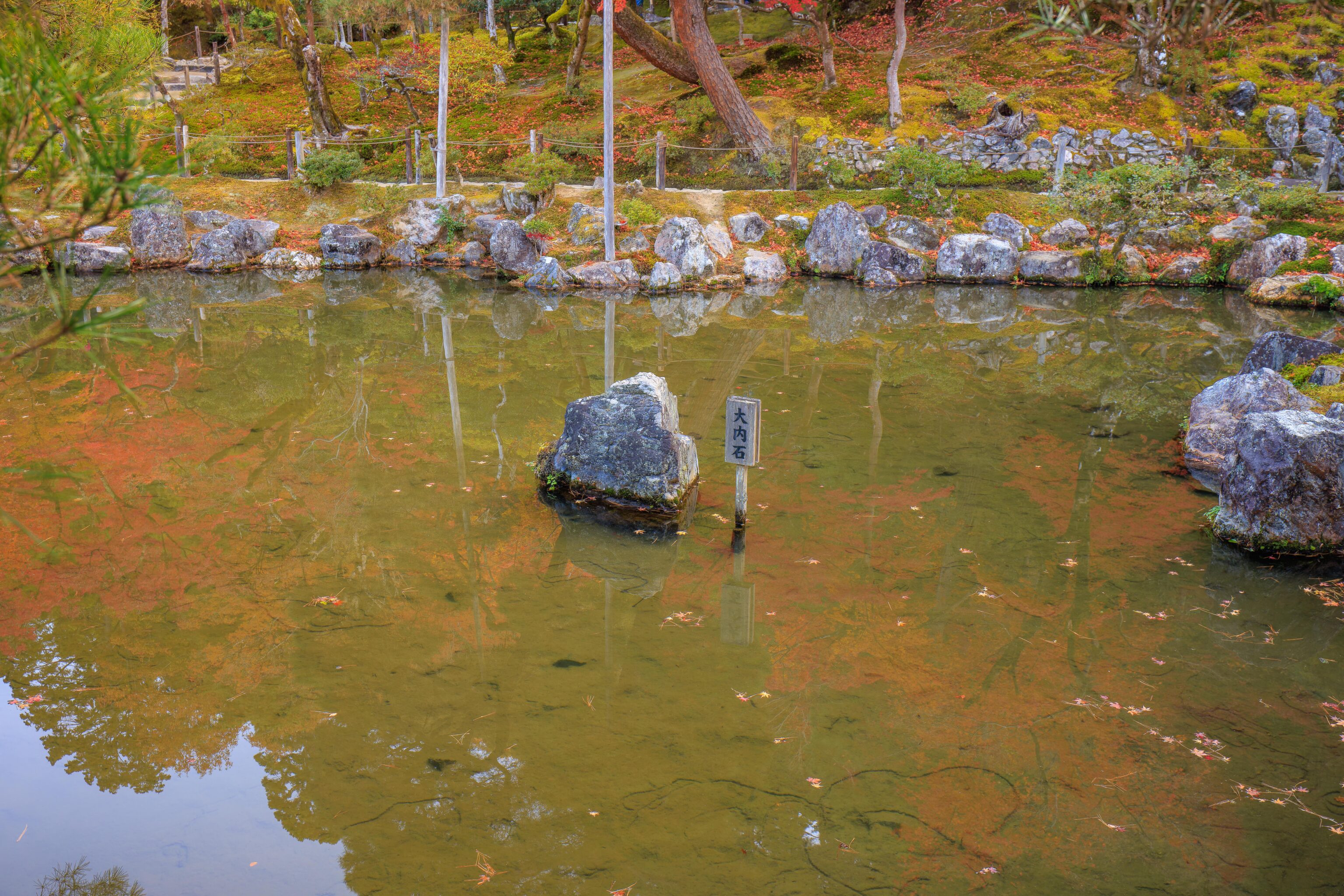
This stone in the pond was labelled. It is the Ouchi Stone and seems to have been a gift from a lord, Ouchi Masahiro6. There doesn’t seem to be much English language information on this stone. We only really gave it attention because it was significant enough to have a name sign!
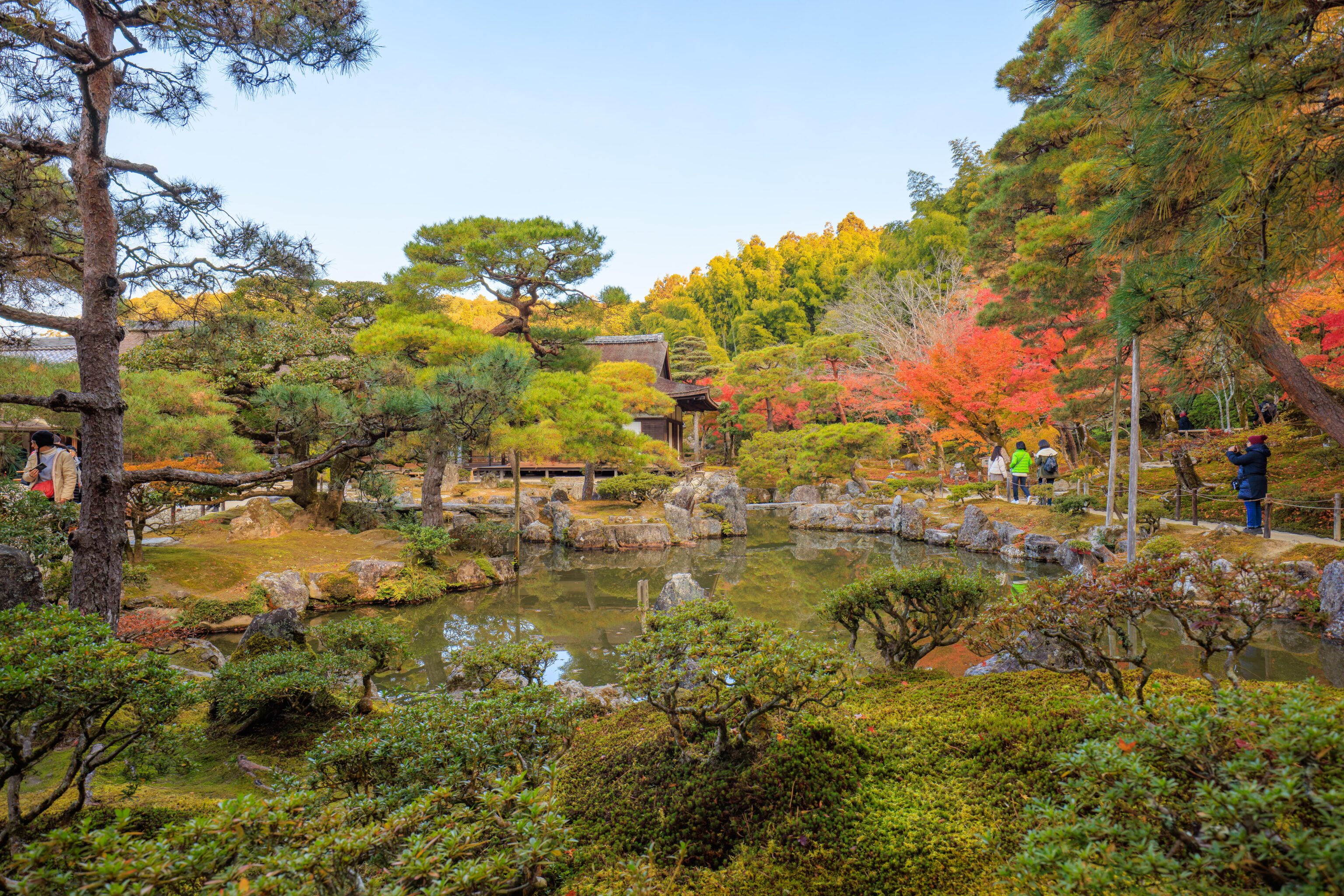
We continued walking around the pond.
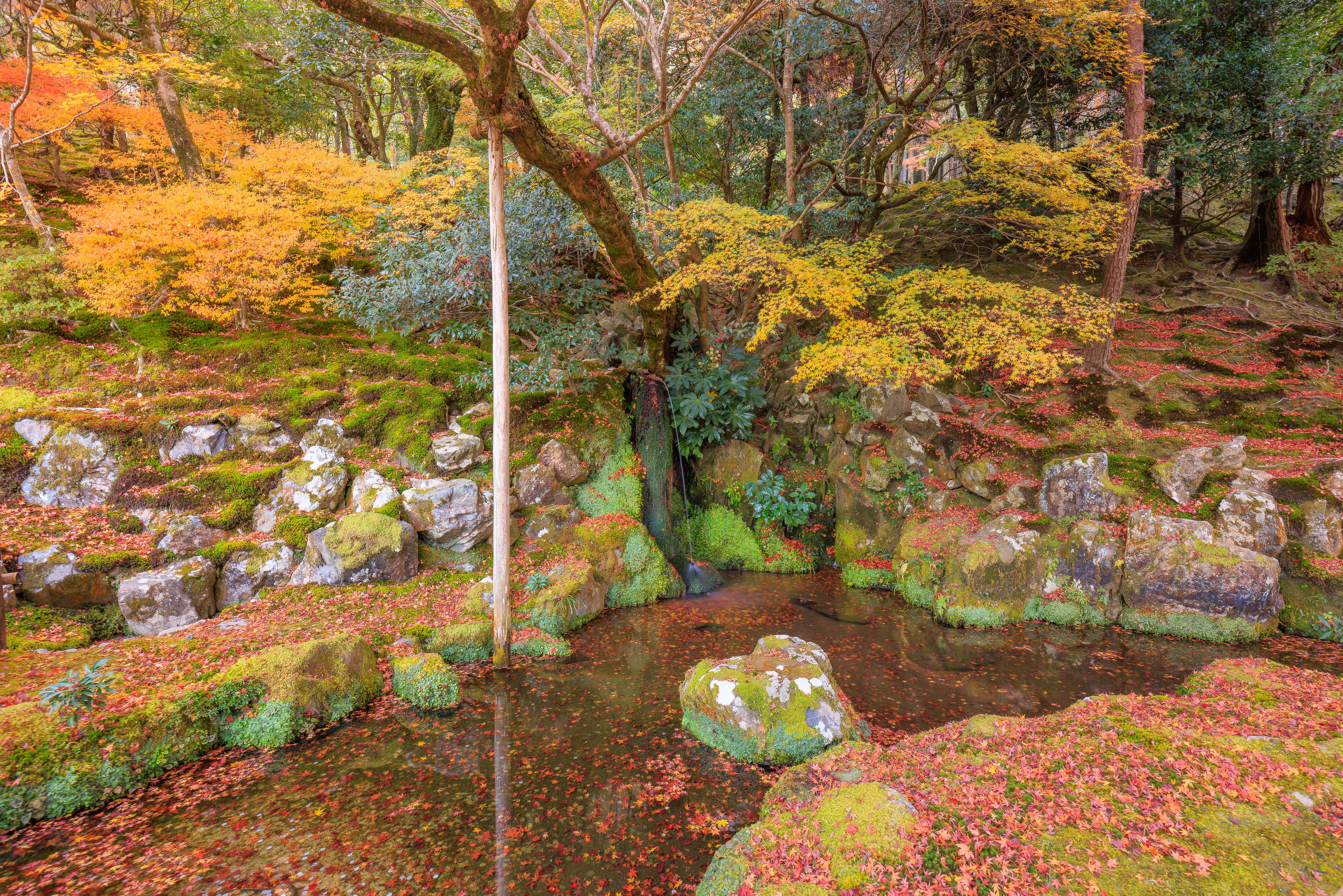
There was a tiny waterfall which is barely visible here! It is at the base of the tree supported by the pole.
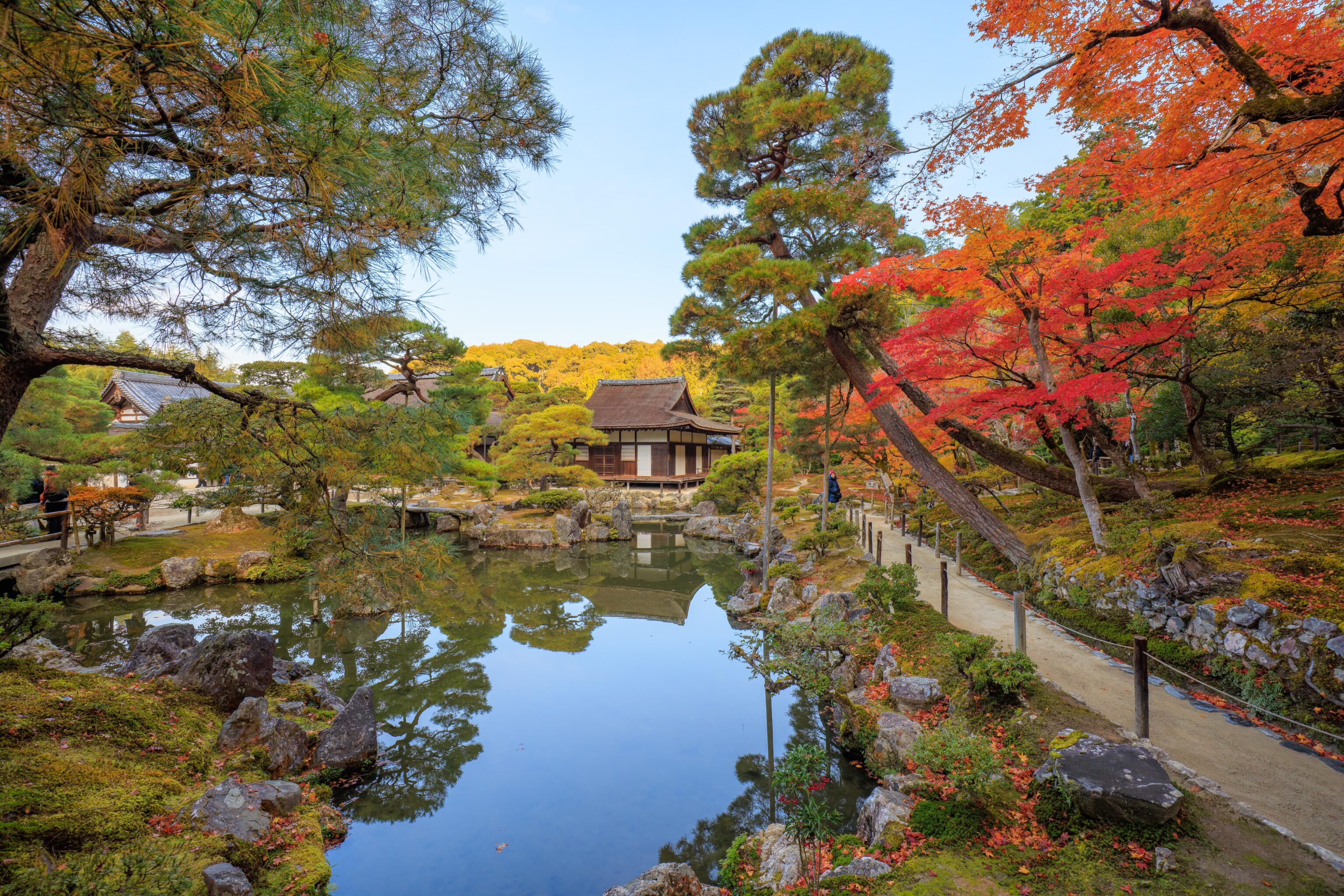
A pretty view with a nice reflection on the pond’s still surface.
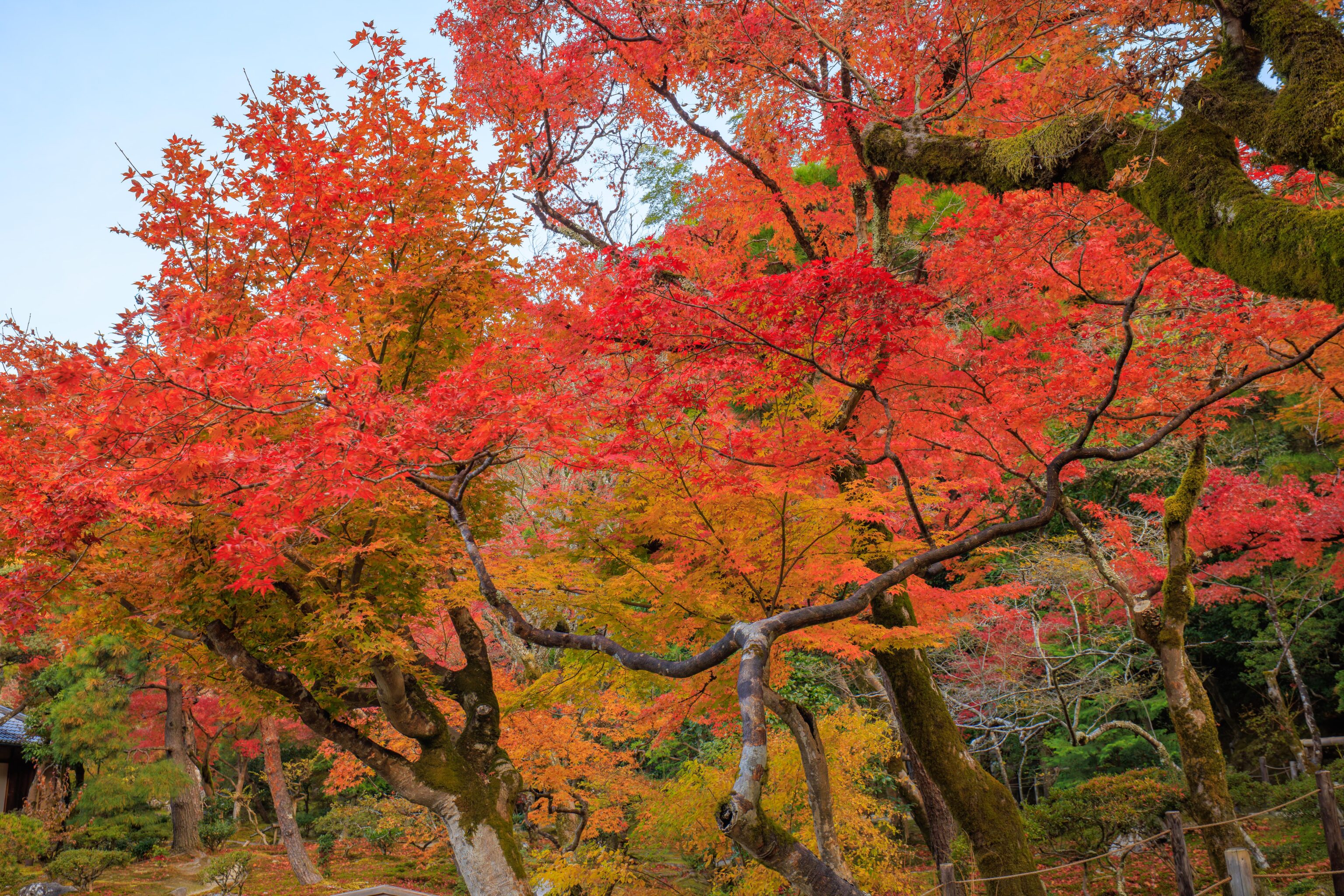
There were more fall colors here due to the presence of maple trees.
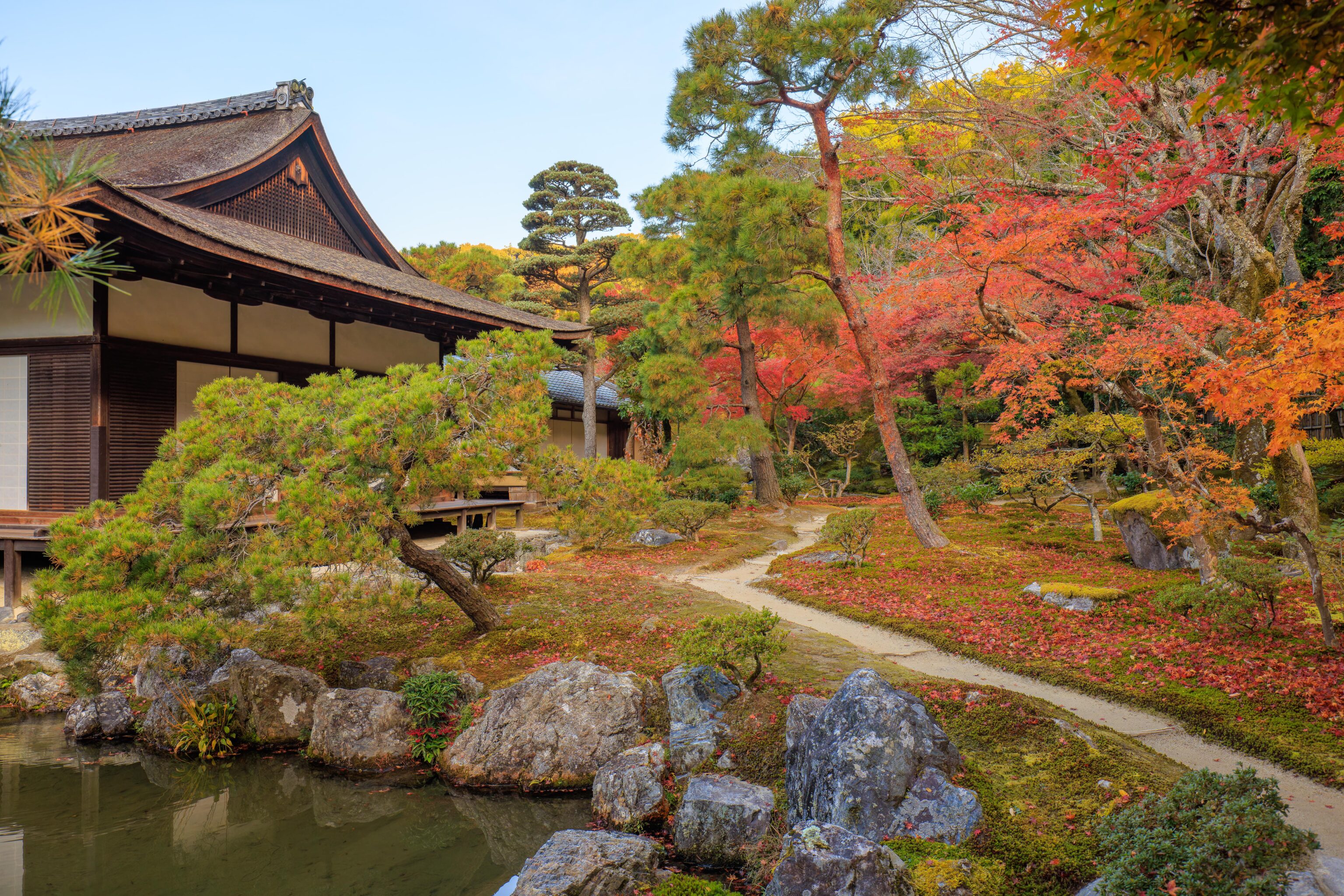
We continued waling along the route.
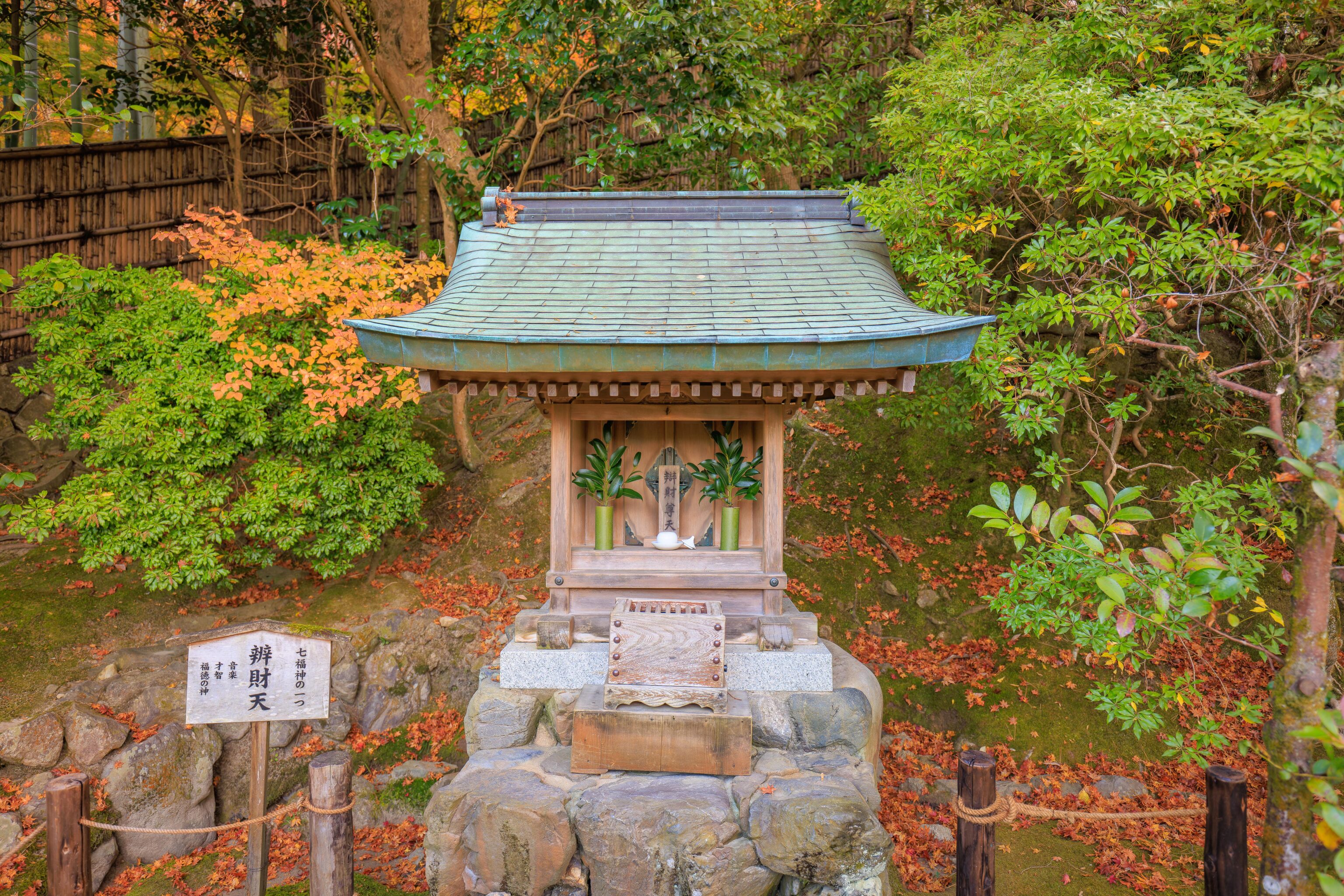
We passed by the Benzaiten Shrine, labelled but not numbered on the map, as the path headed up the side of the eastern mountains.
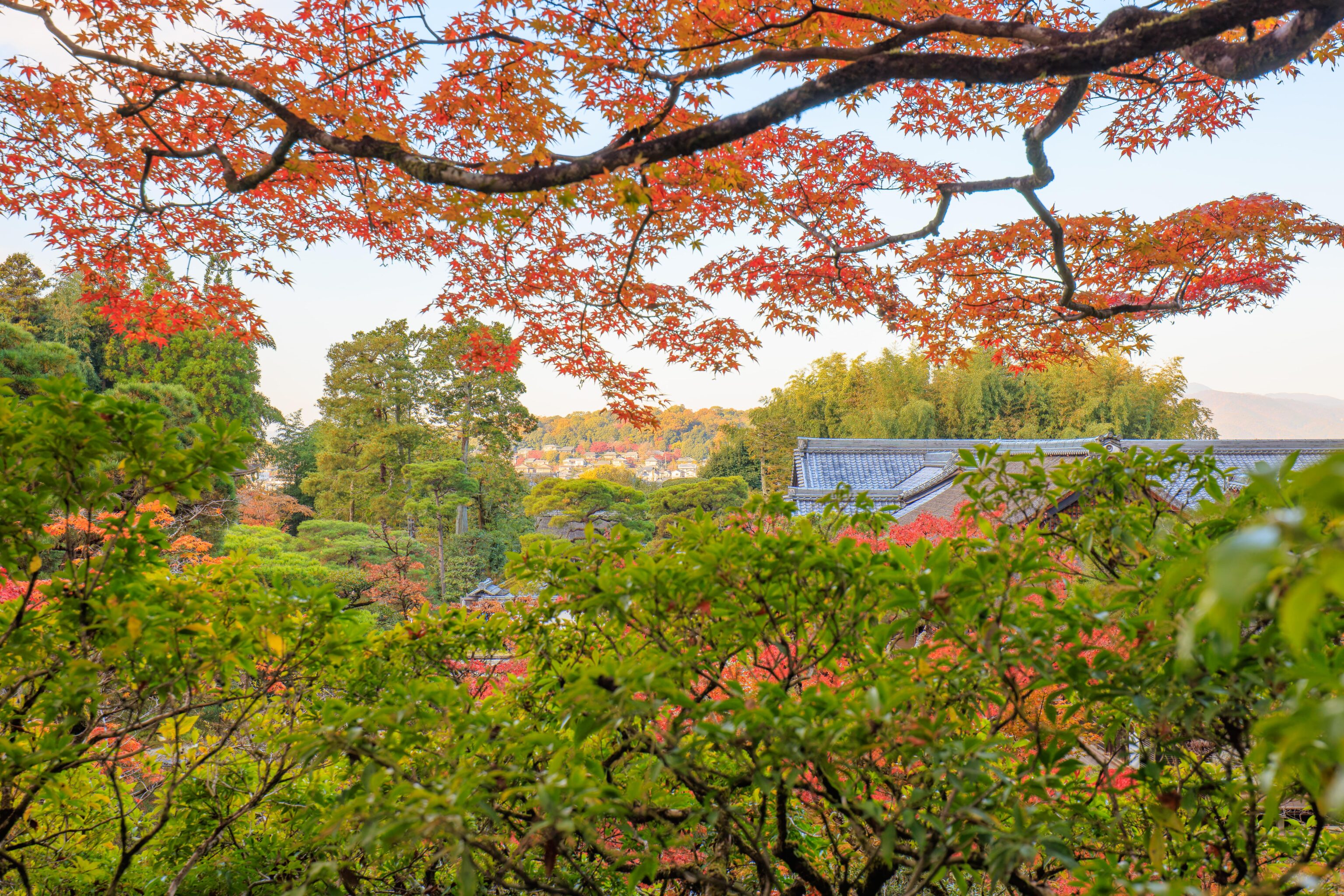
Soon, we had a little bit of color and a little bit of view!
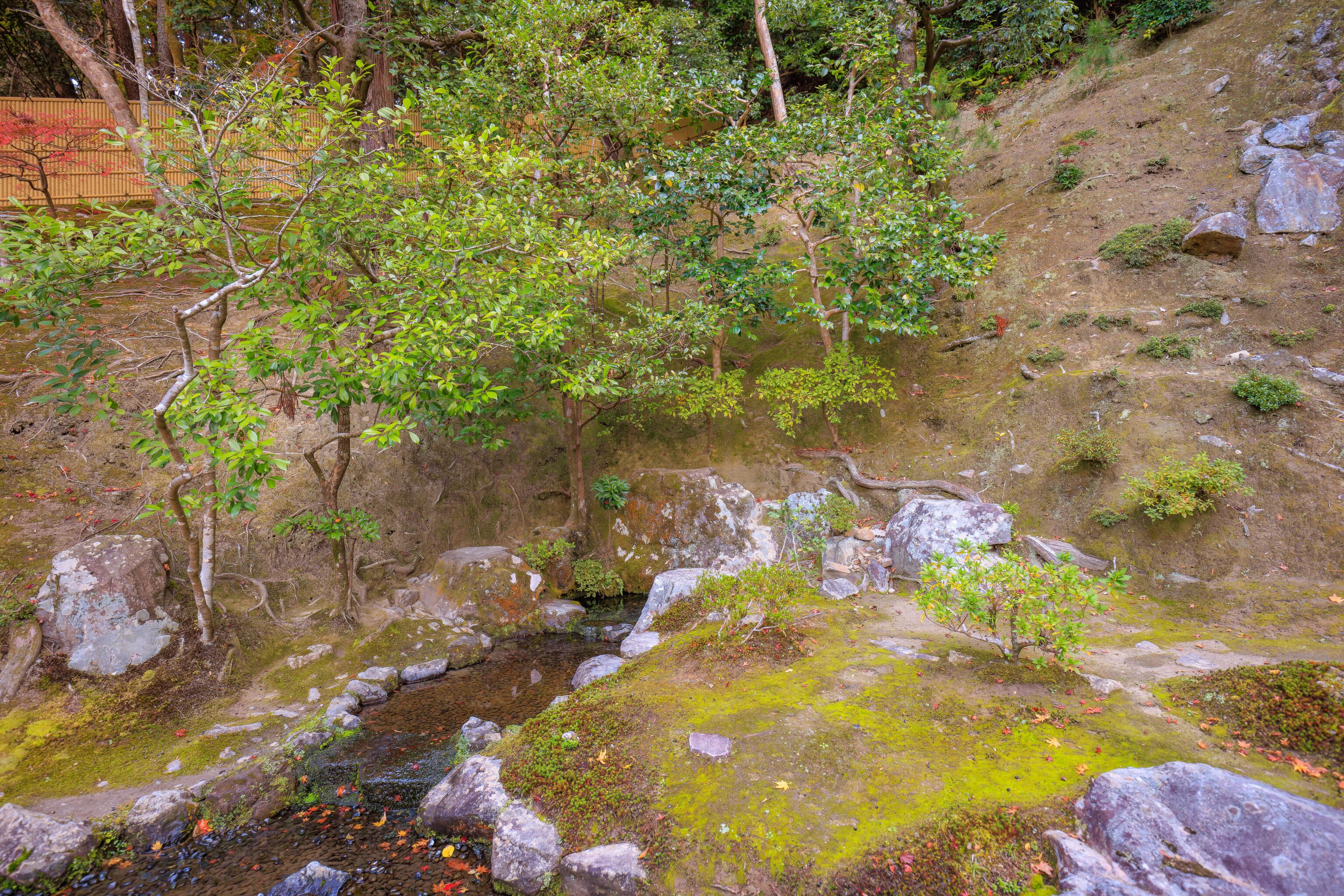
A small spur on the path led to the Ochanoi Tea Well, #13 on the map. This small pool of water is fed by a spring and may have been used as a purification station7, though other sources only mention its use as a source of water for tea8.
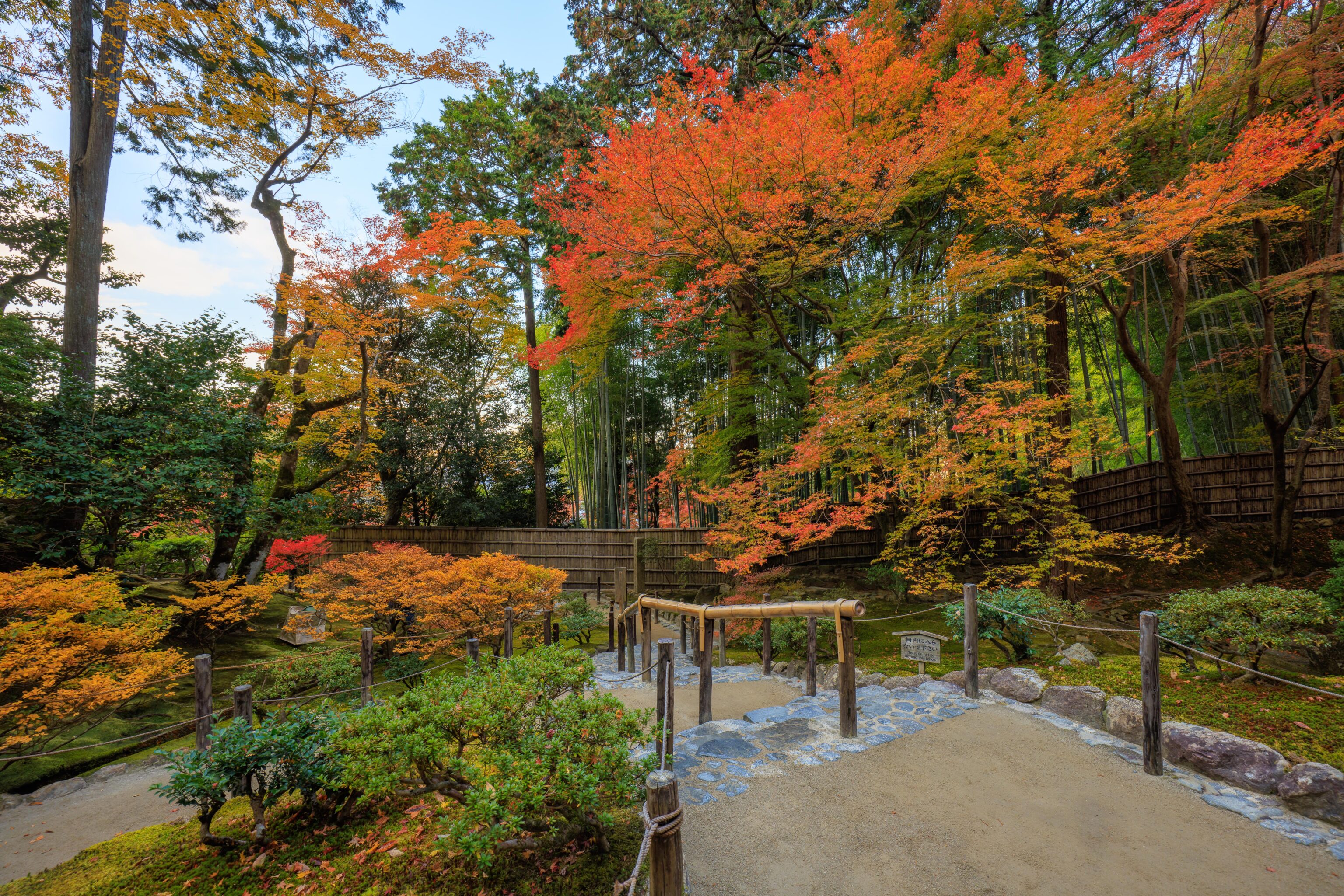
The area around the well was pretty with some Japanese maples and other smaller plants that were showing fall colors.
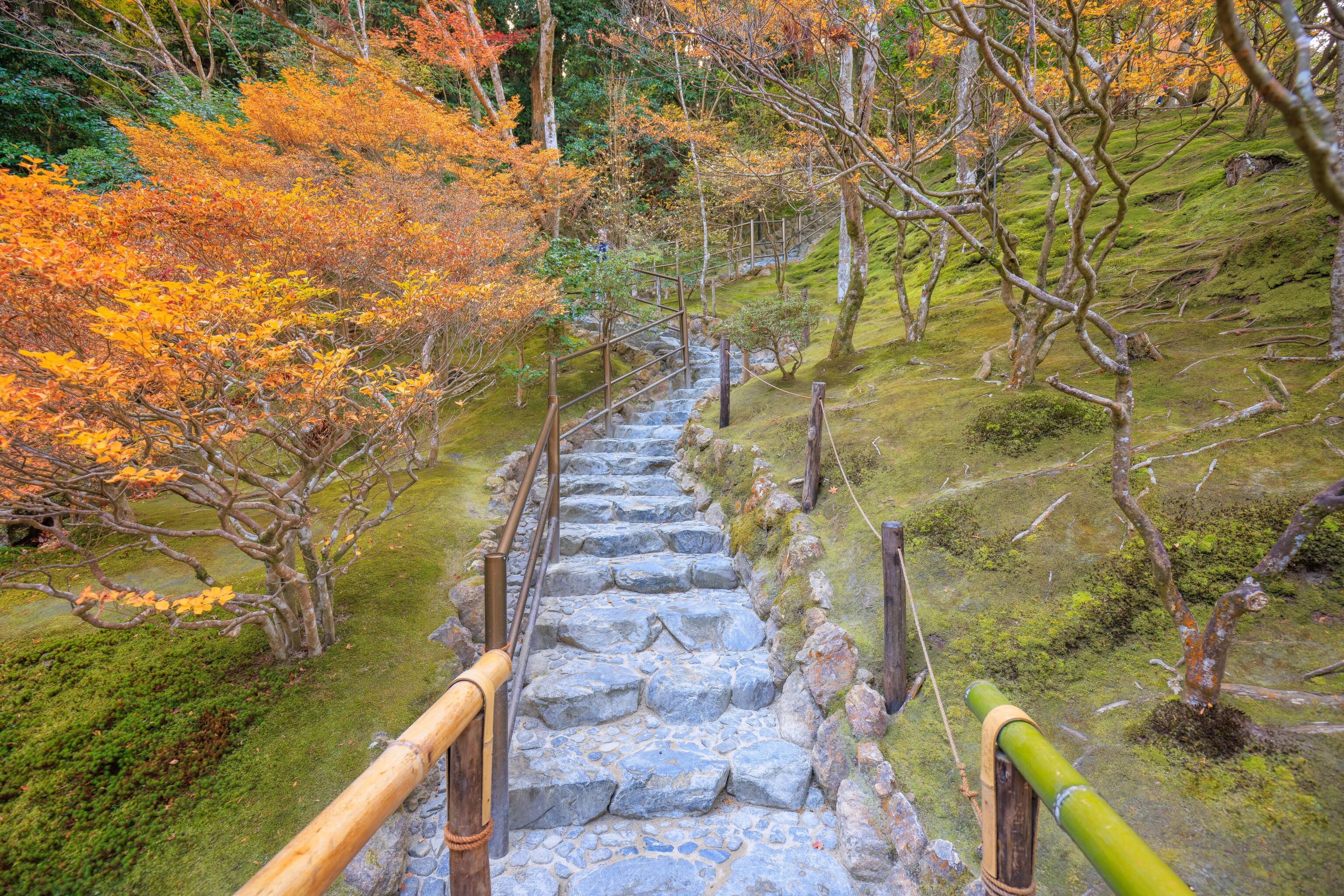
We continued following the route as it started to go uphill again.
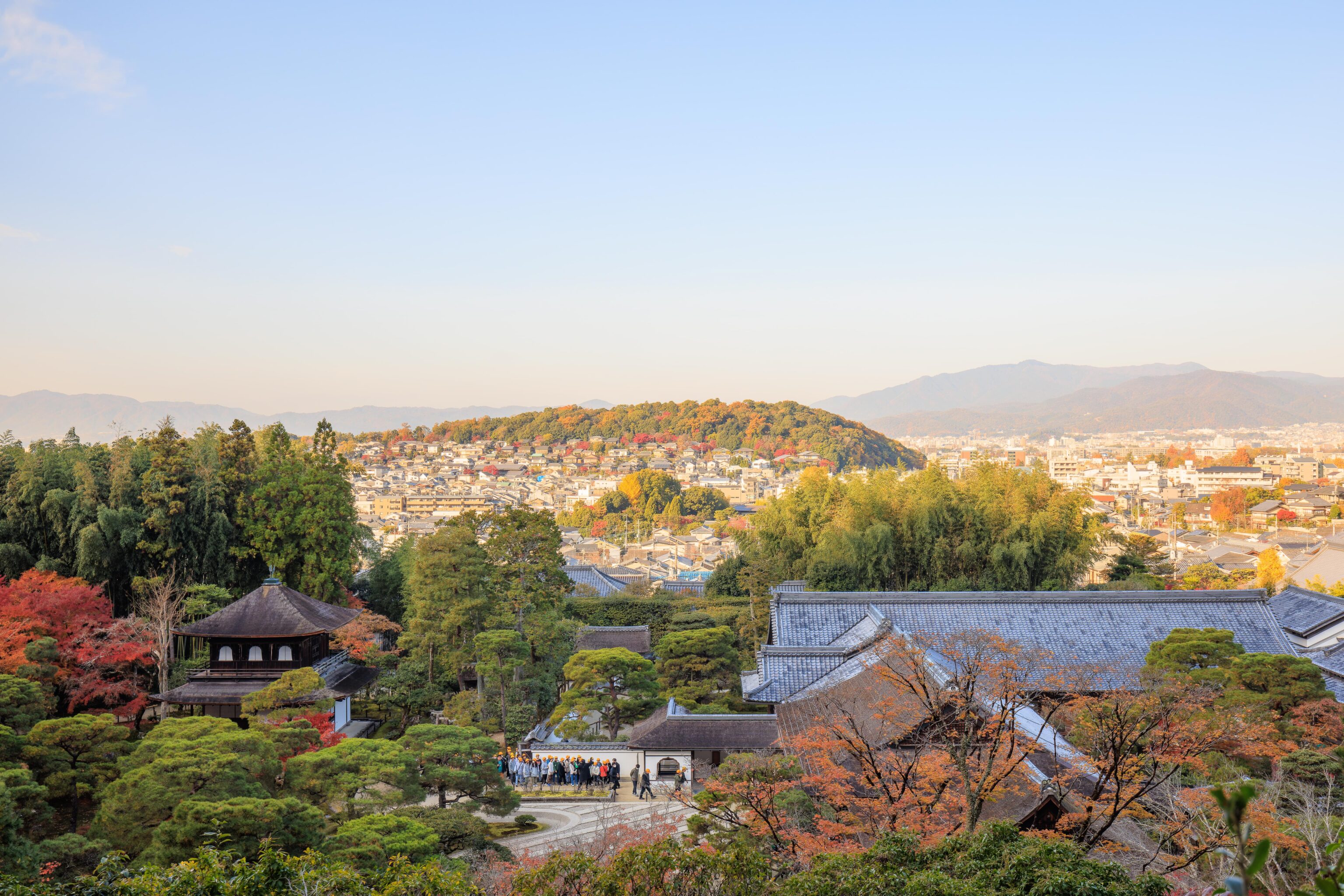
We eventually reached the highest point on the route! It isn’t very high up at all but still allows for great viewing of this section of Kyoto below us. We also noticed school groups had arrived! There are children in yellow hats down by the big dry garden next to the Moon Viewing Mound. Are they the same group that we saw yesterday at Kiyomizu-dera in the late afternoon?
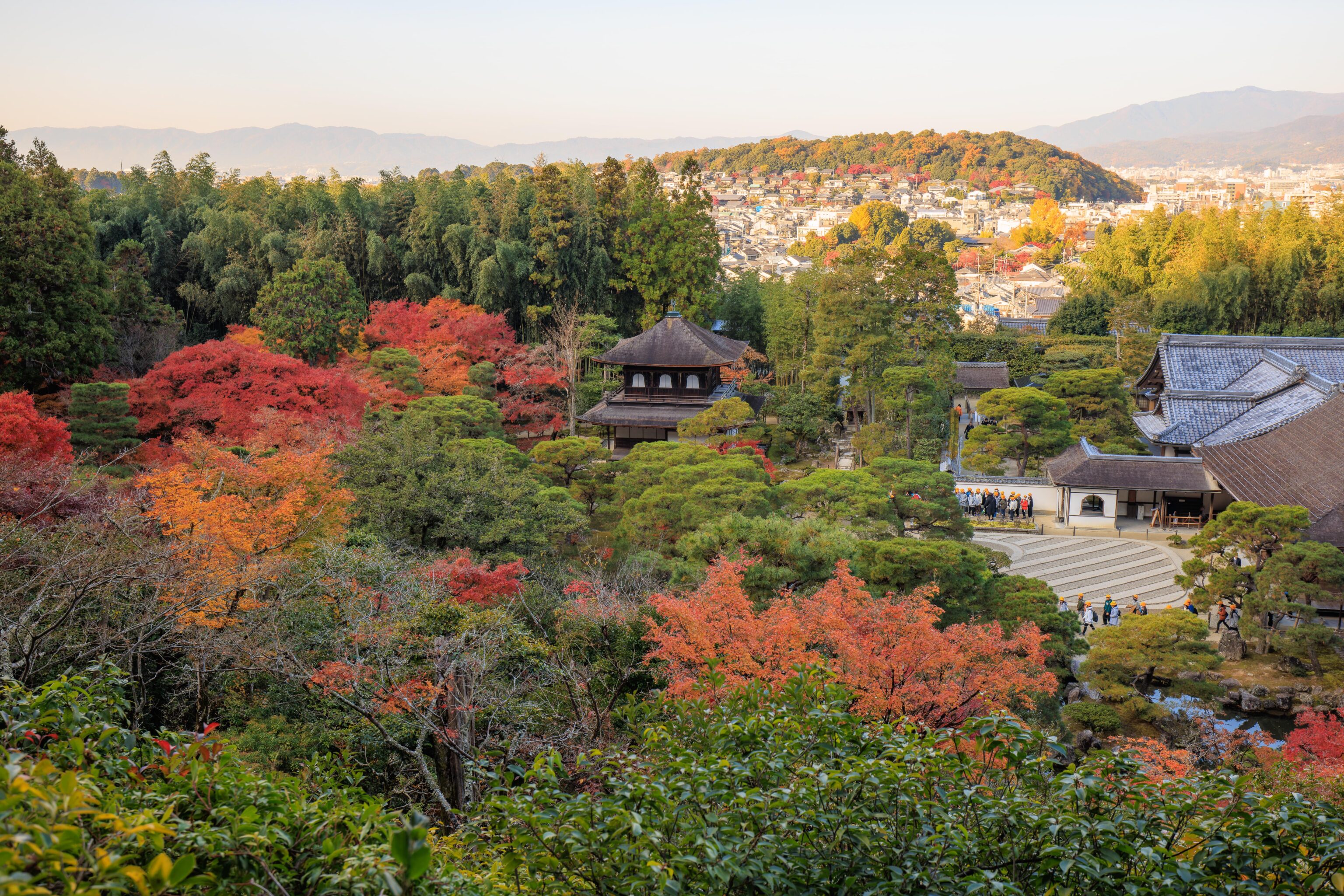
A slightly different perspective from a tiny bit further along the path. There seem to be multiple groups of kids from the same school.
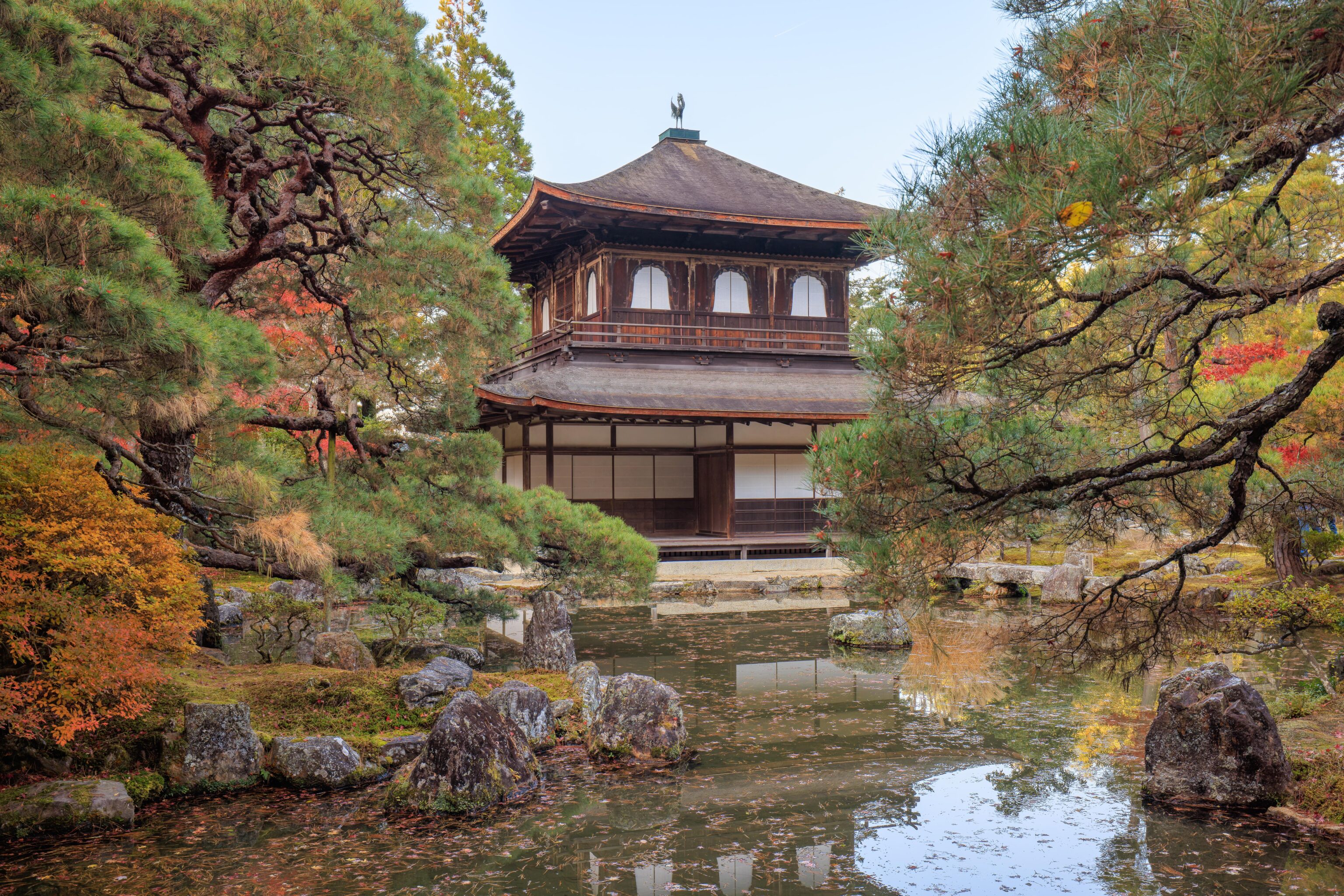
We continued on as the route headed down and returned to the Kinkyochi Pond. The school groups were taking group photos in front of the Silver Pavilion. We waited until one group finished and quickly rushed in to snap a few photos before the next group could get organized.
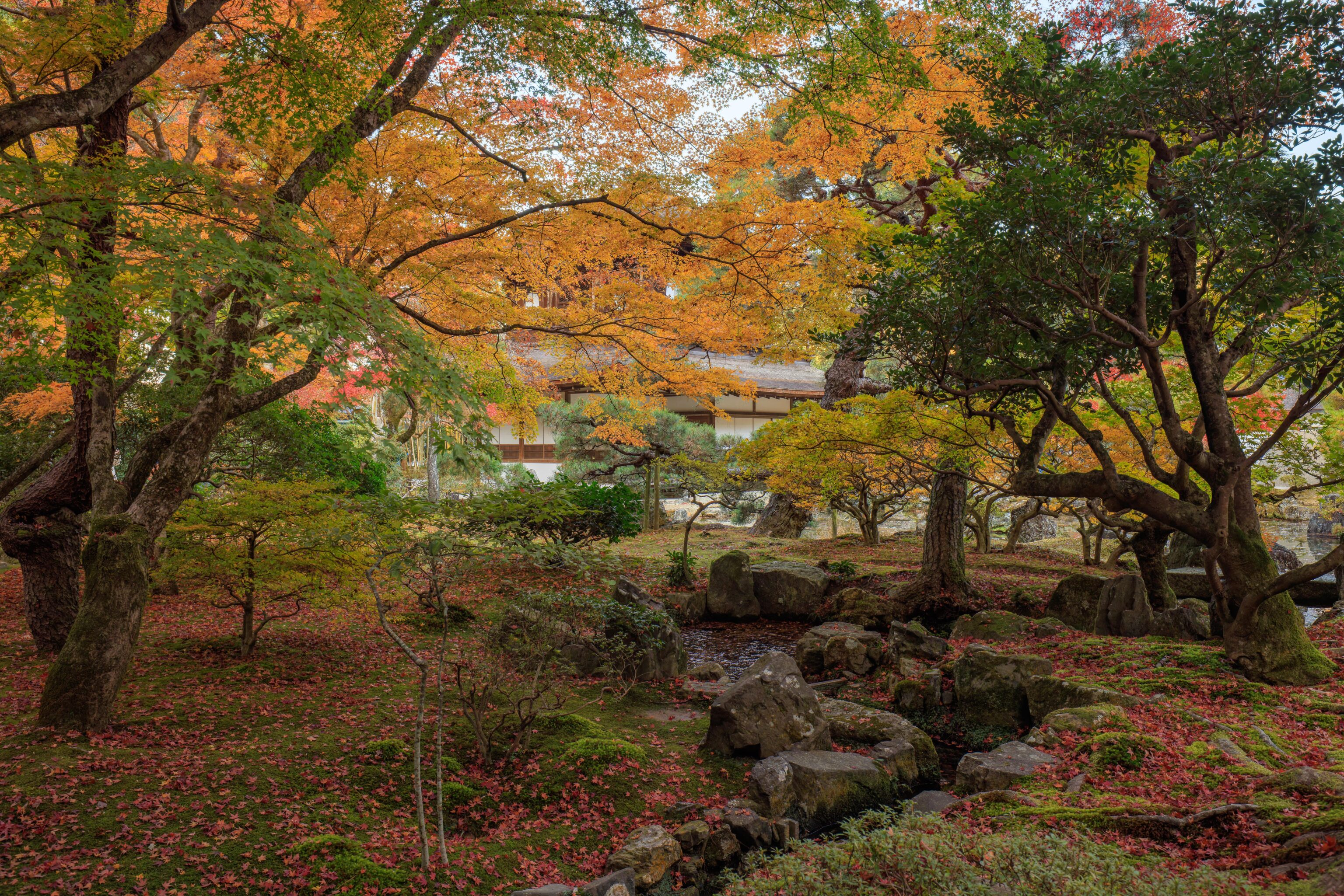
We continued following the route as it looped to the south behind the Silver Pavilion.
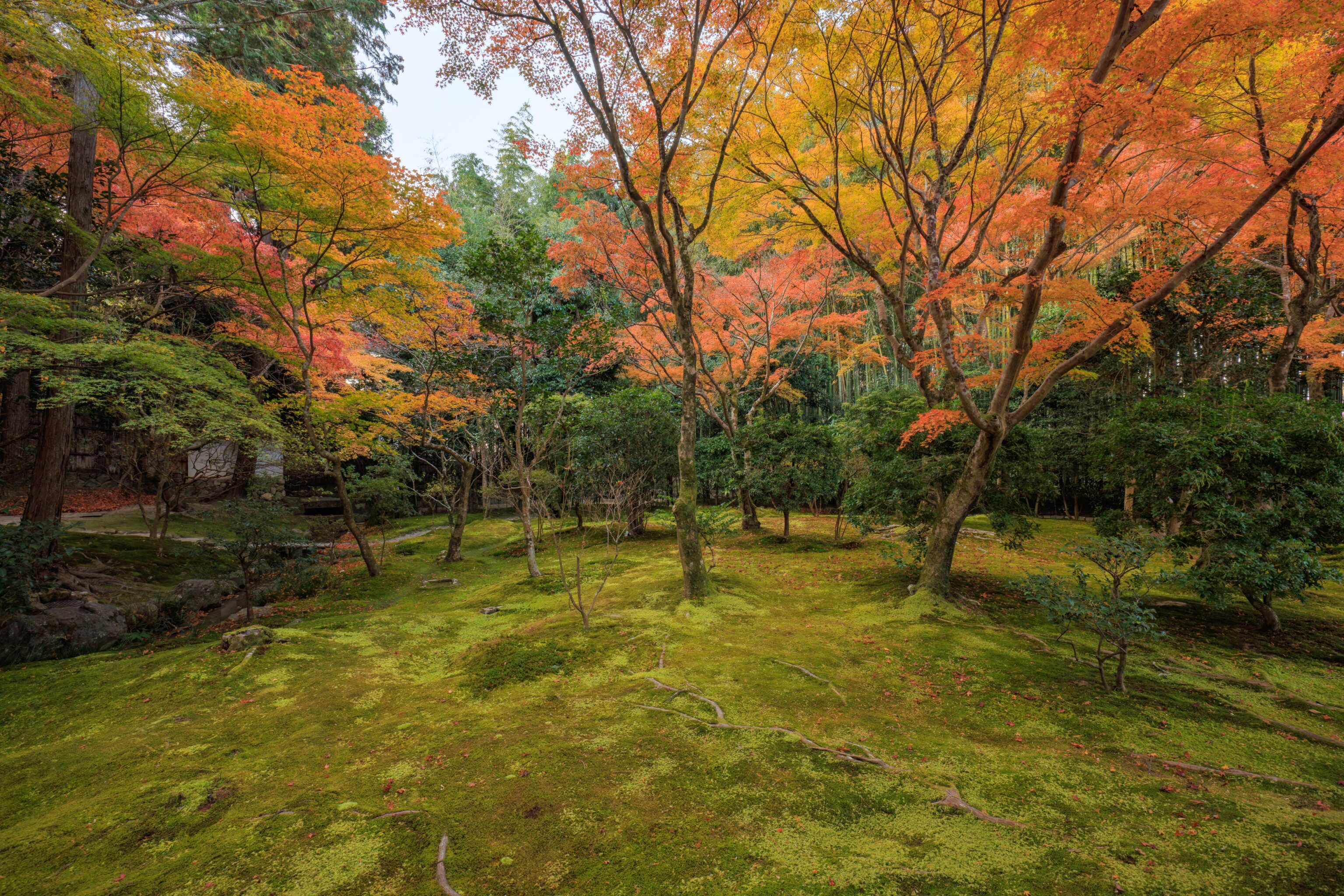
This are was very mossy and had some nice foliage as well!
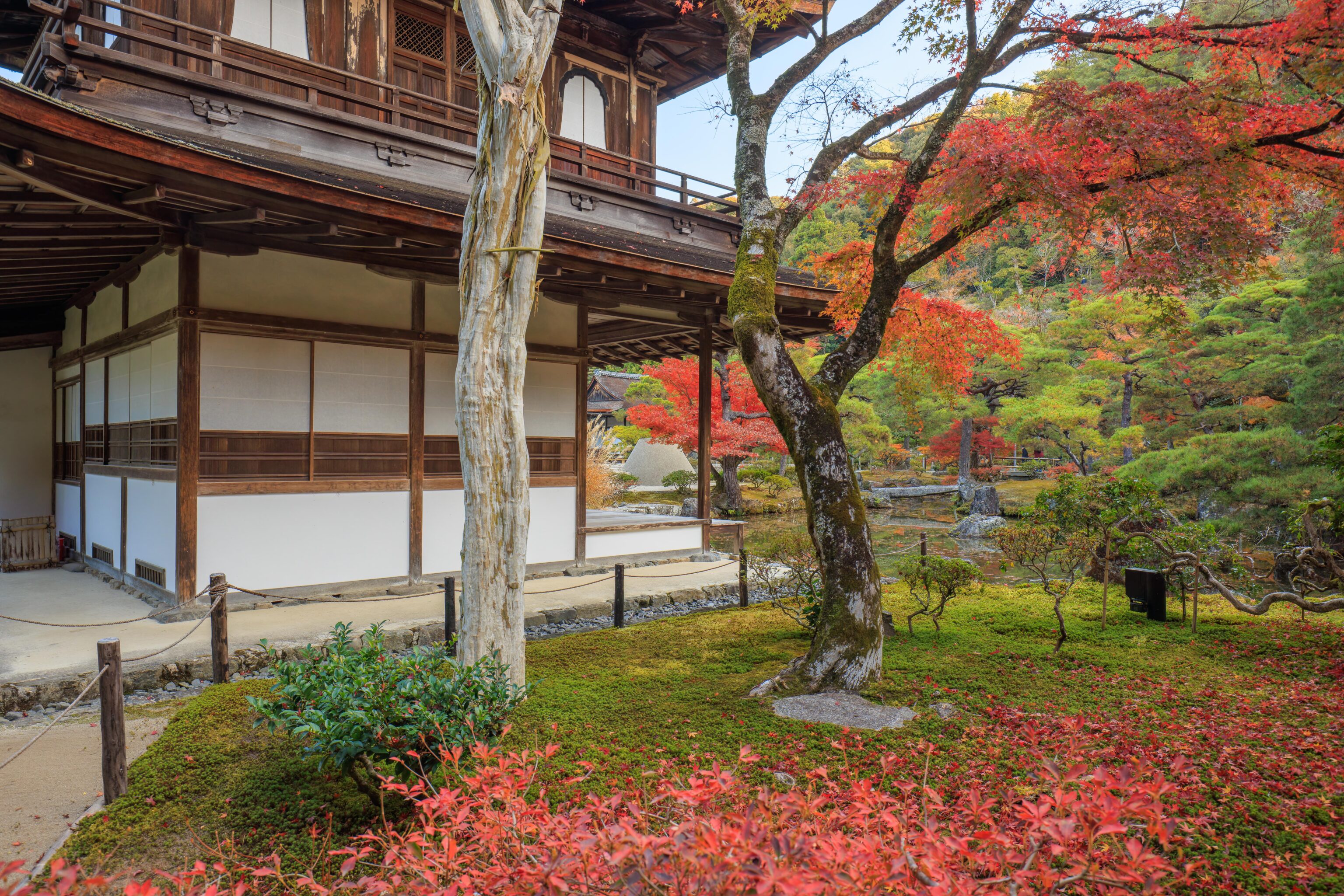
We ended up passing pretty close to the Silver Pavilion. From this perspective, we could see the Moon Viewing Mound in the background. From here, we ended up by the exit, gift shop, and bathrooms. We browsed the gift shop for awhile and used the facilities before sitting down to take a break. We saw the school groups line up one by one and then leave.
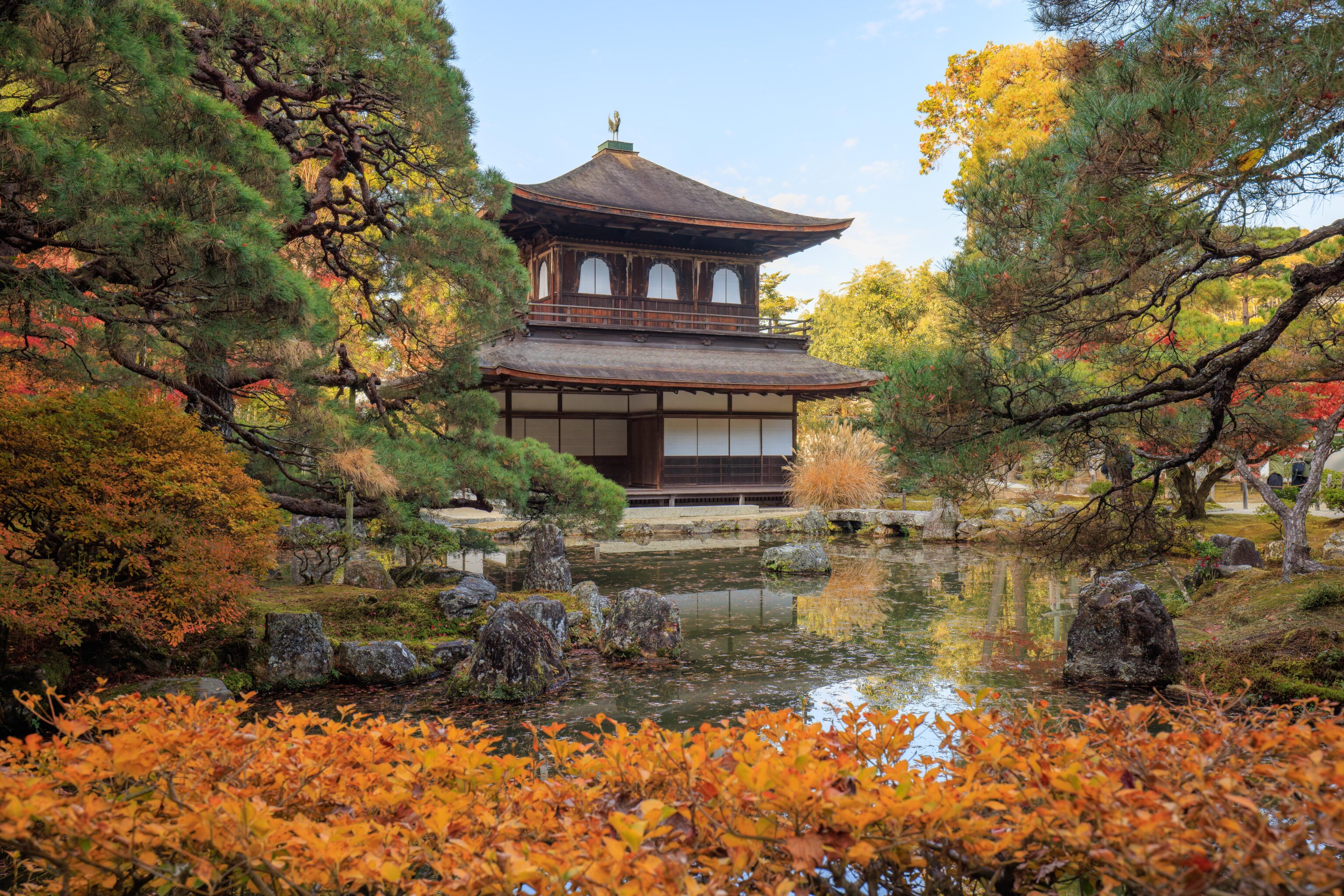
The light seemed to be a little better and the kids were gone so we returned to the Silver Pavilion view where the kids were having group pictures taken. Everything was still in the shadow of the mountains but the sunlight was slowly making its way east as the sun slowly rose above the mountains. We were able to spend a bit more time taking photos, resulting in a nicer view, but we decided not to wait for the sun to illuminate the building.
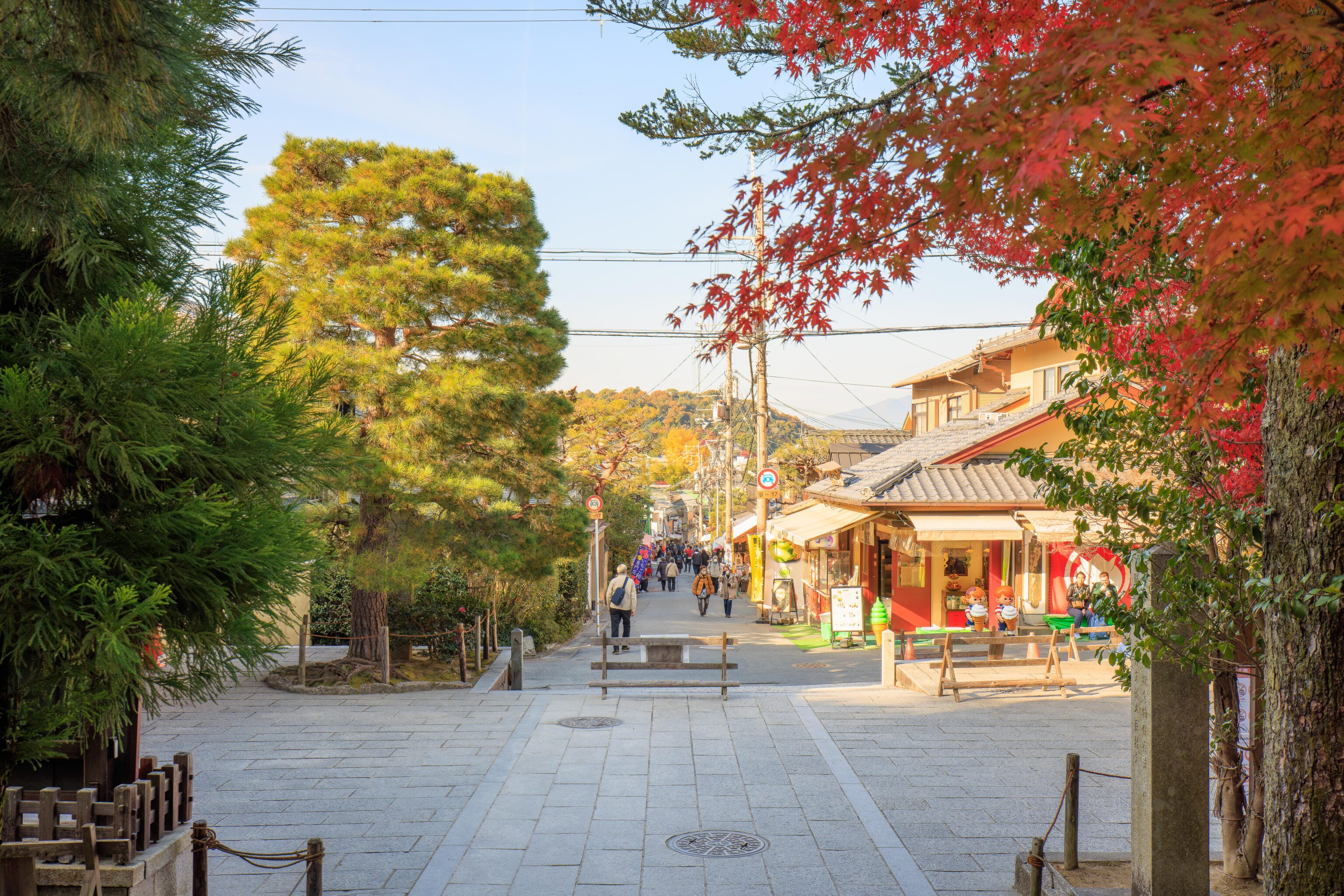
We headed to the exit. It was definitely much busier now!
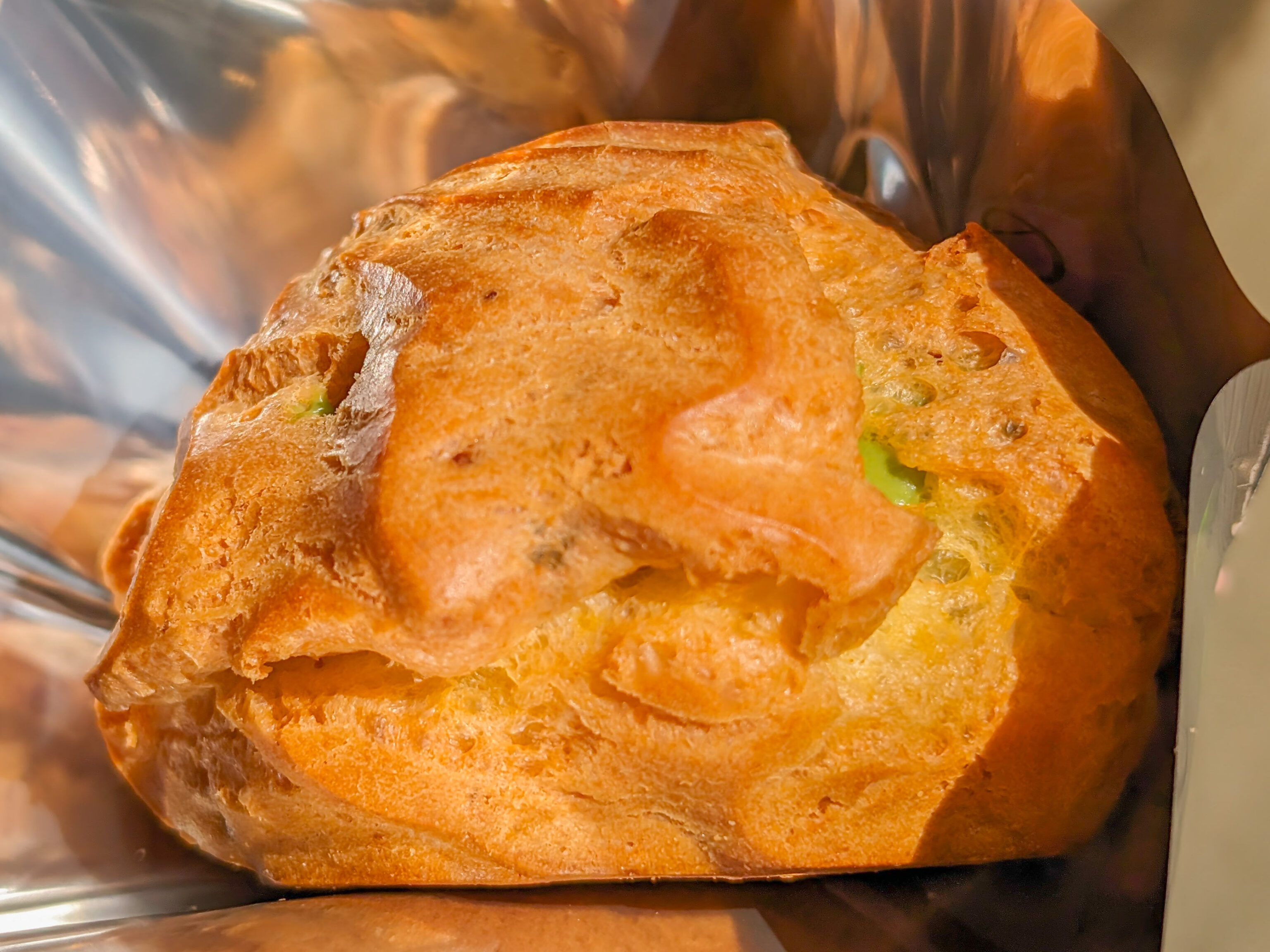
We decided to get a snack from the shop on the corner. We got a matcha cream filled pastry. It was very good!
Philosopher’s Path
From here, we returned to the Philosopher’s Path and started following it to the south.
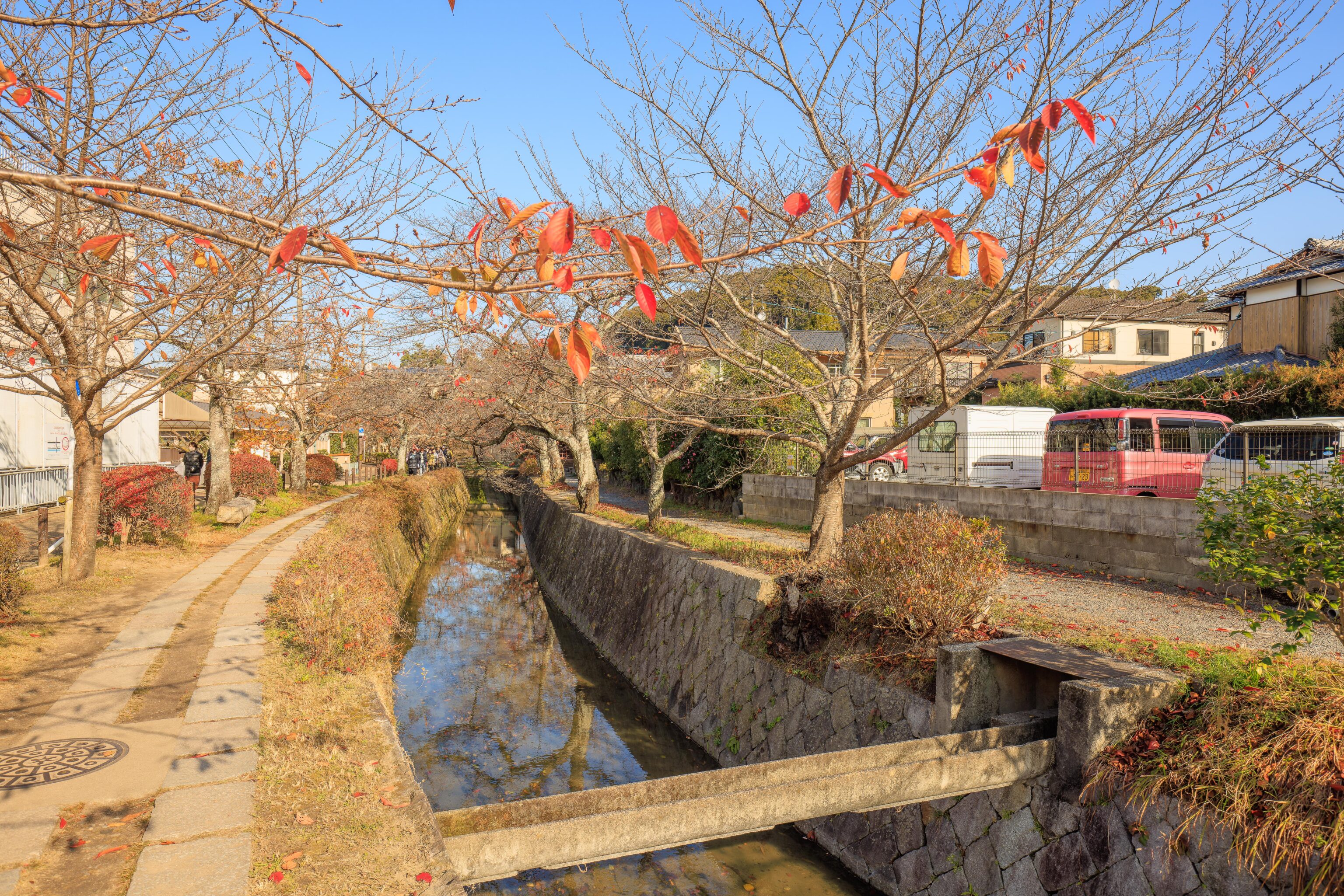
Most of the path looks like this, with the canal in the middle and paths on both sides. There are occasional bridges or other structures that cross the canal. We were a bit surprised to see a tour group walking on the path as well! They usually just seem to zip from place to place on their big busses?
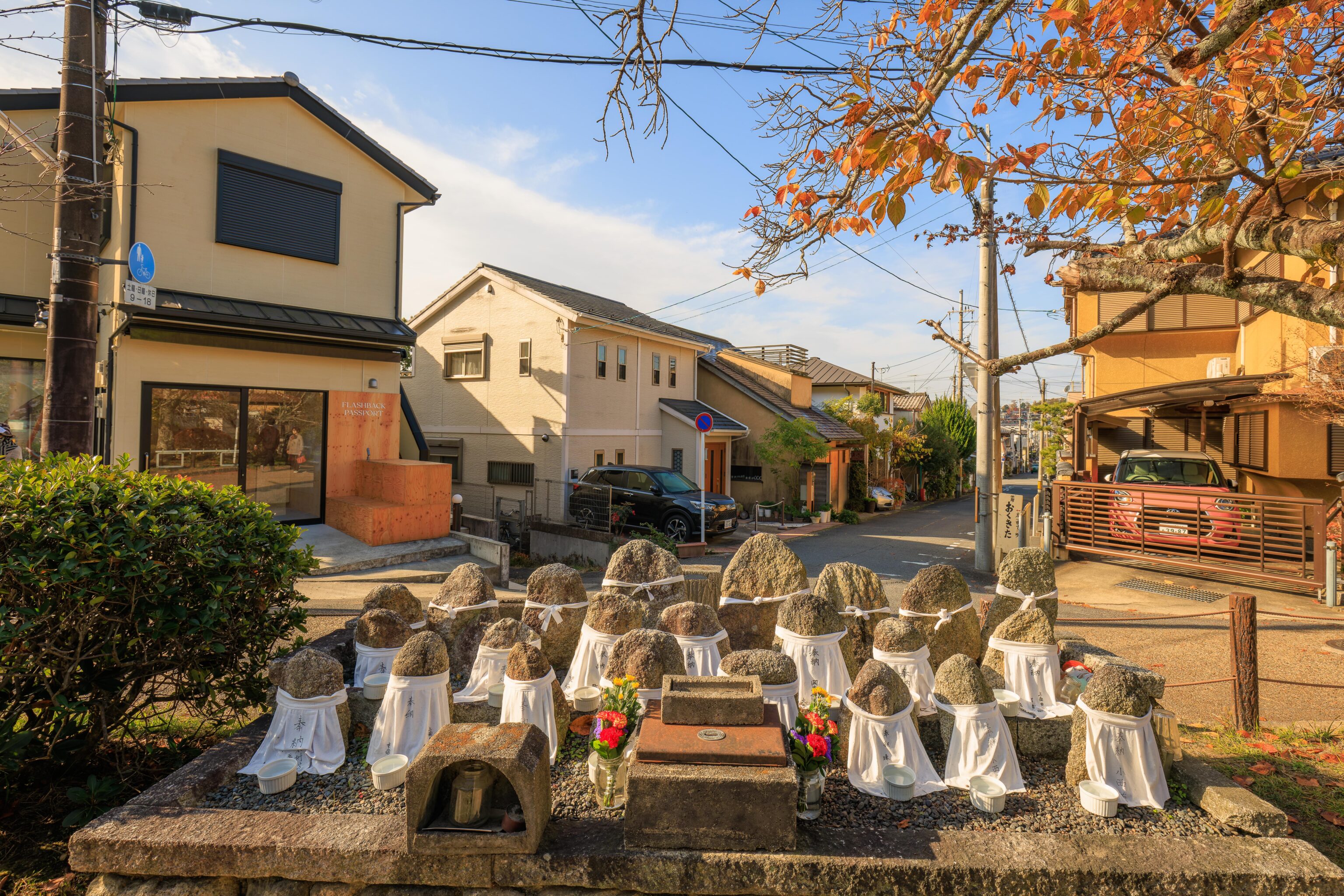
We passed by a group of jizo statues.
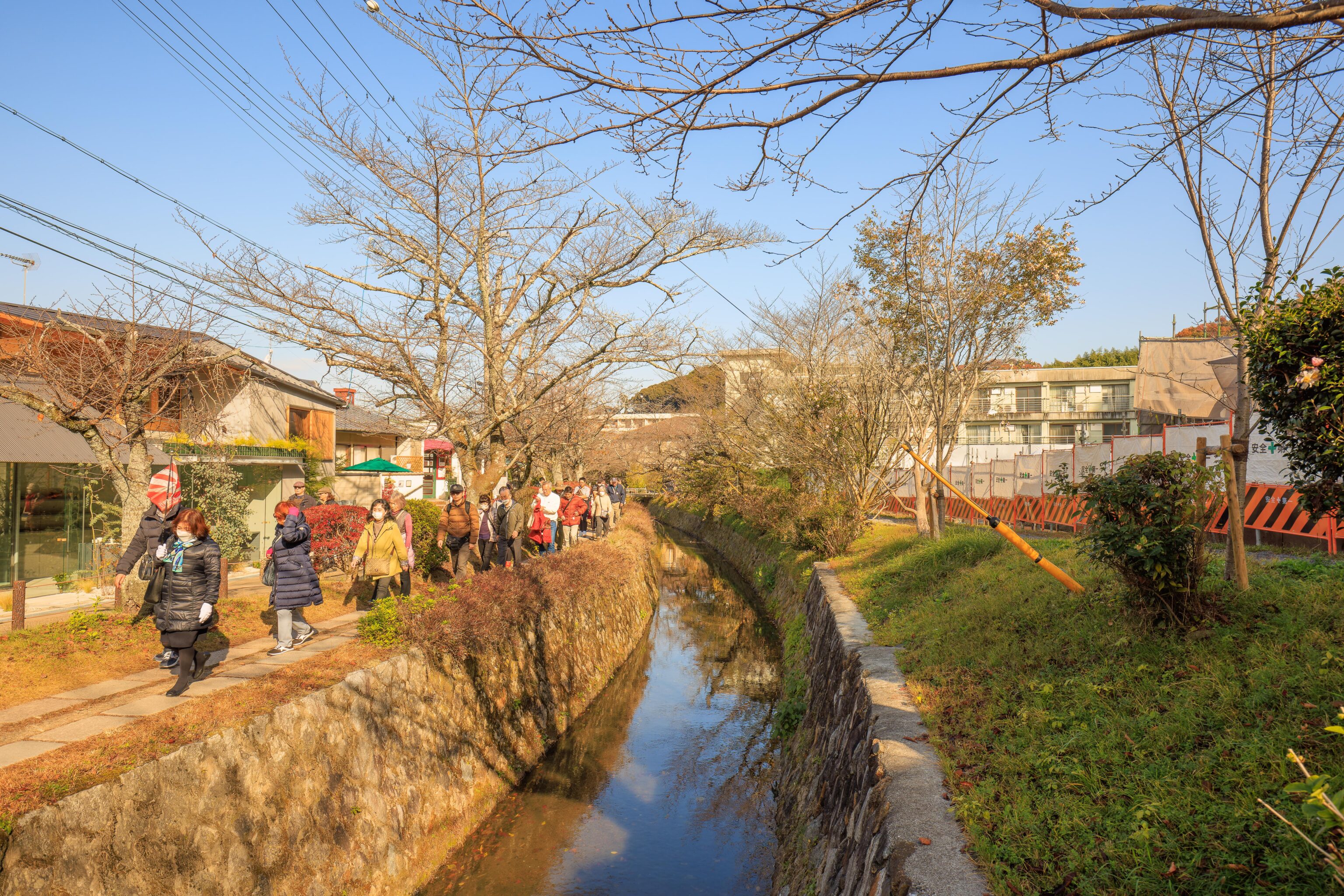
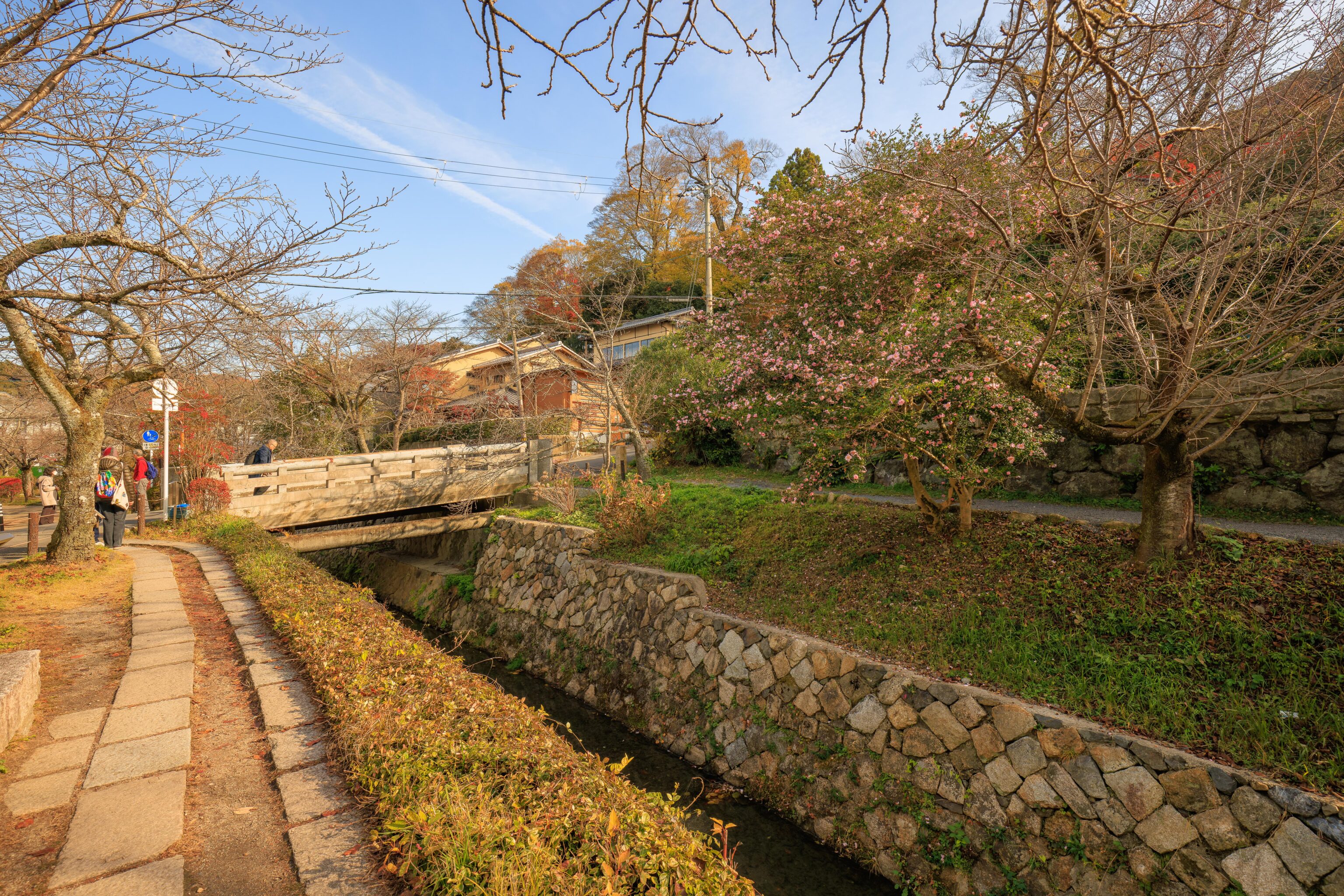
While the weather was pleasant, we didn’t really see any fall foliage in this area.
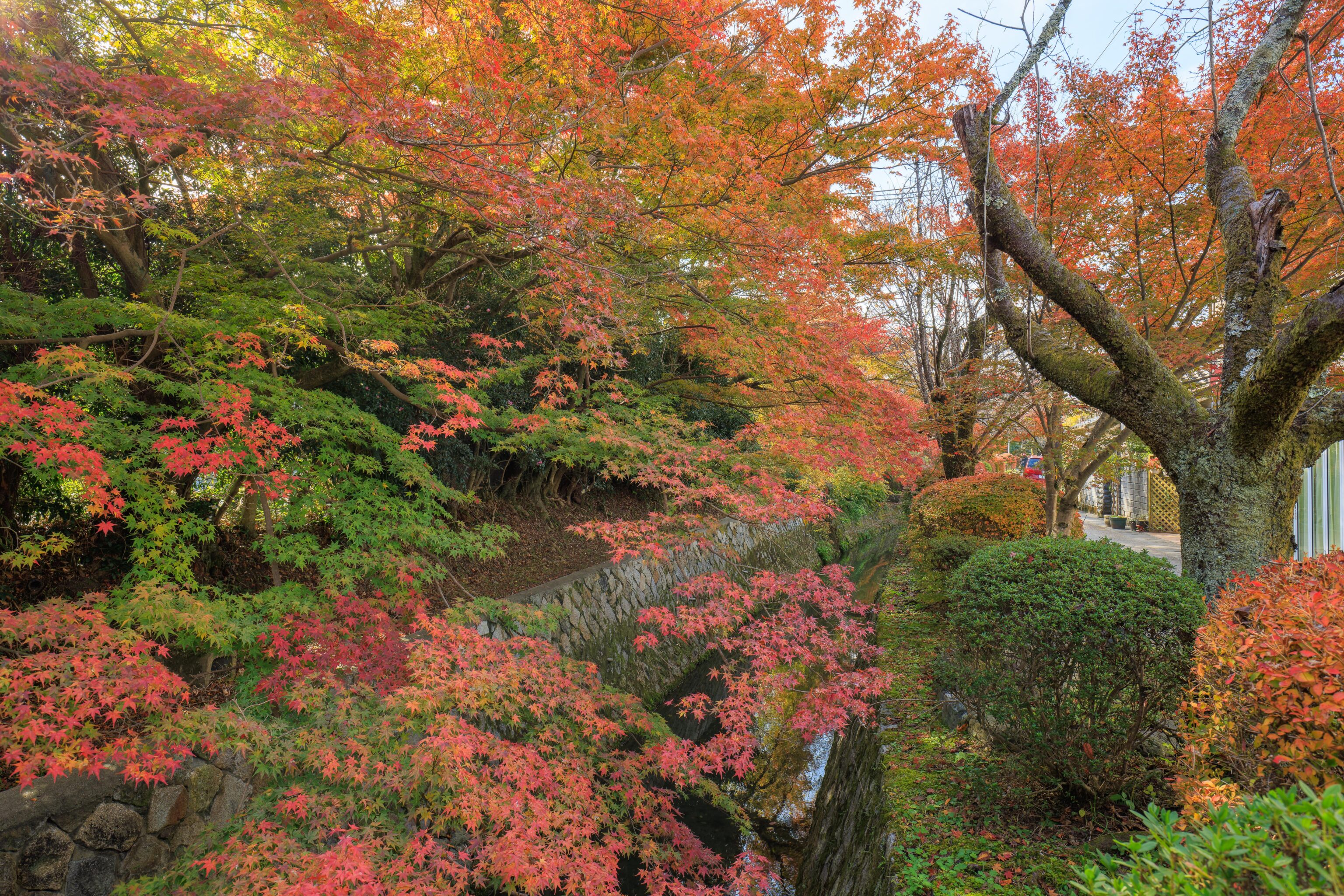
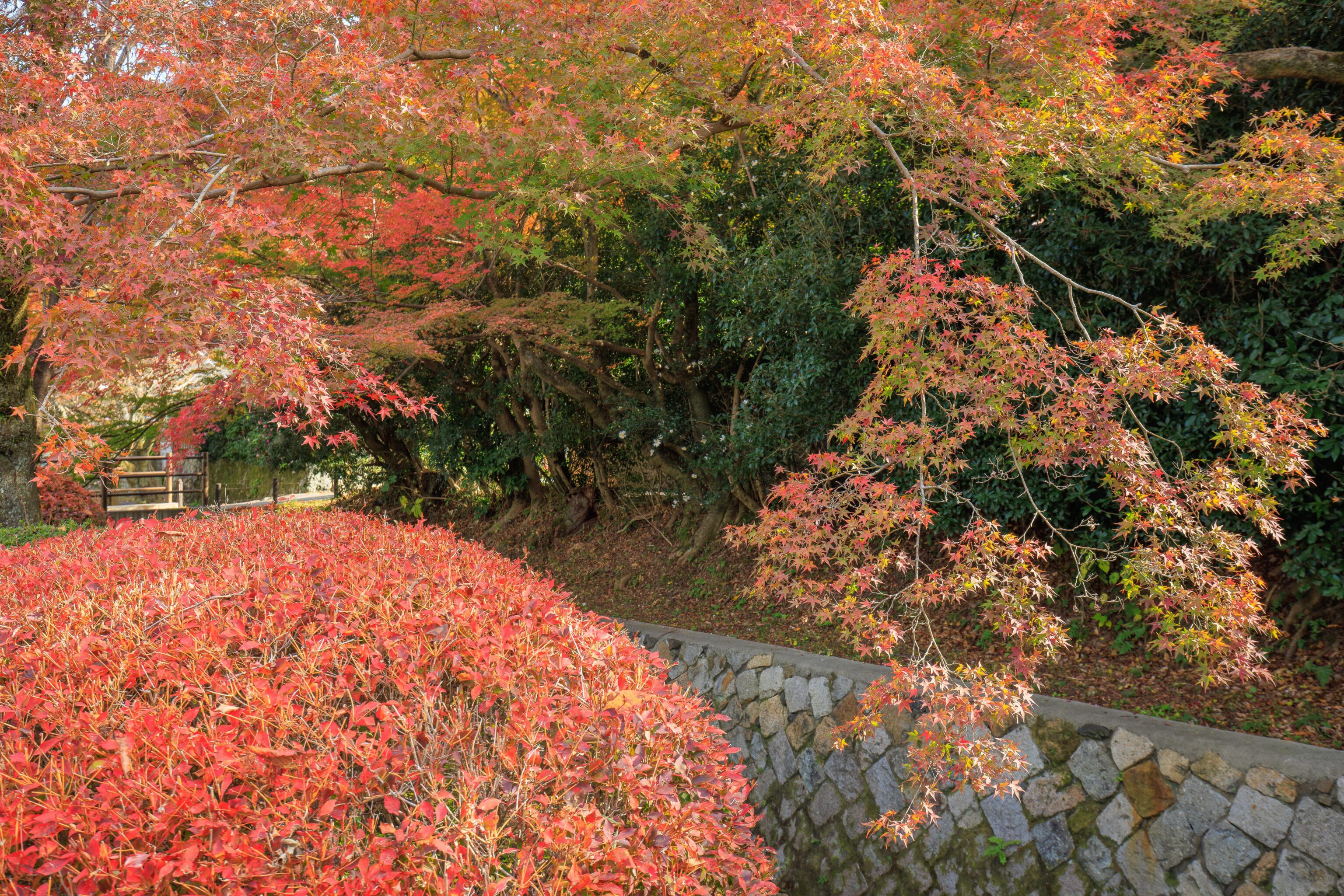
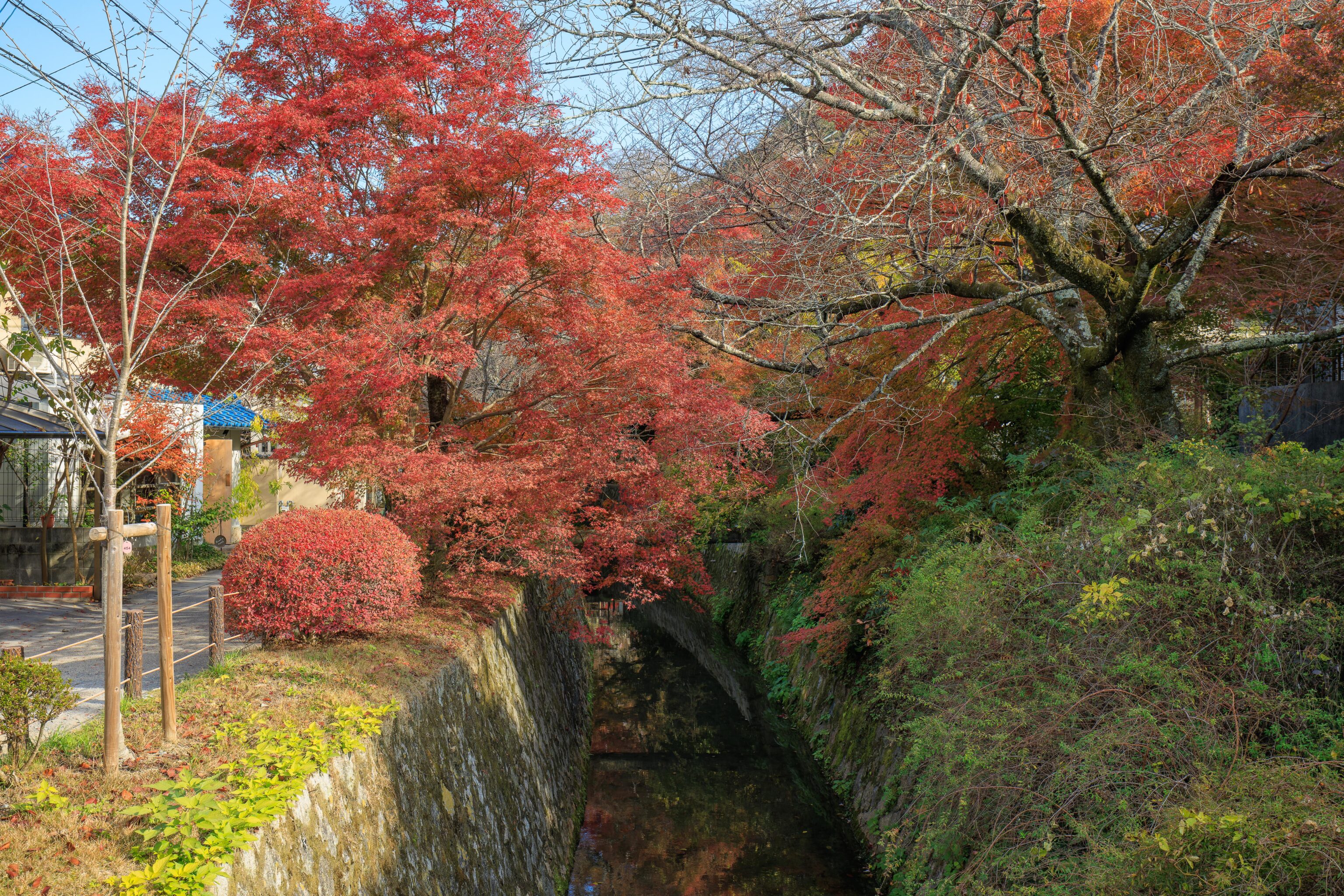
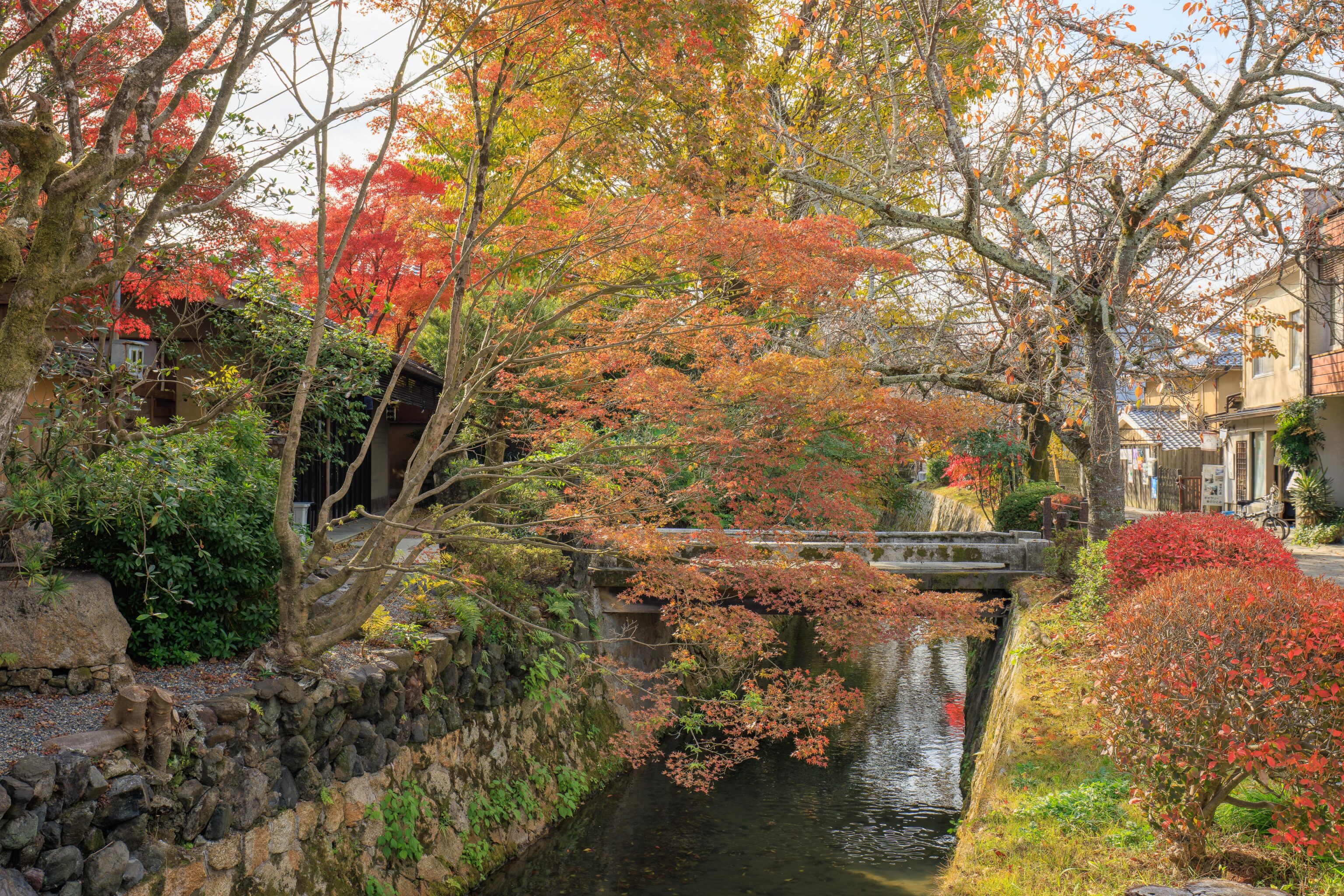
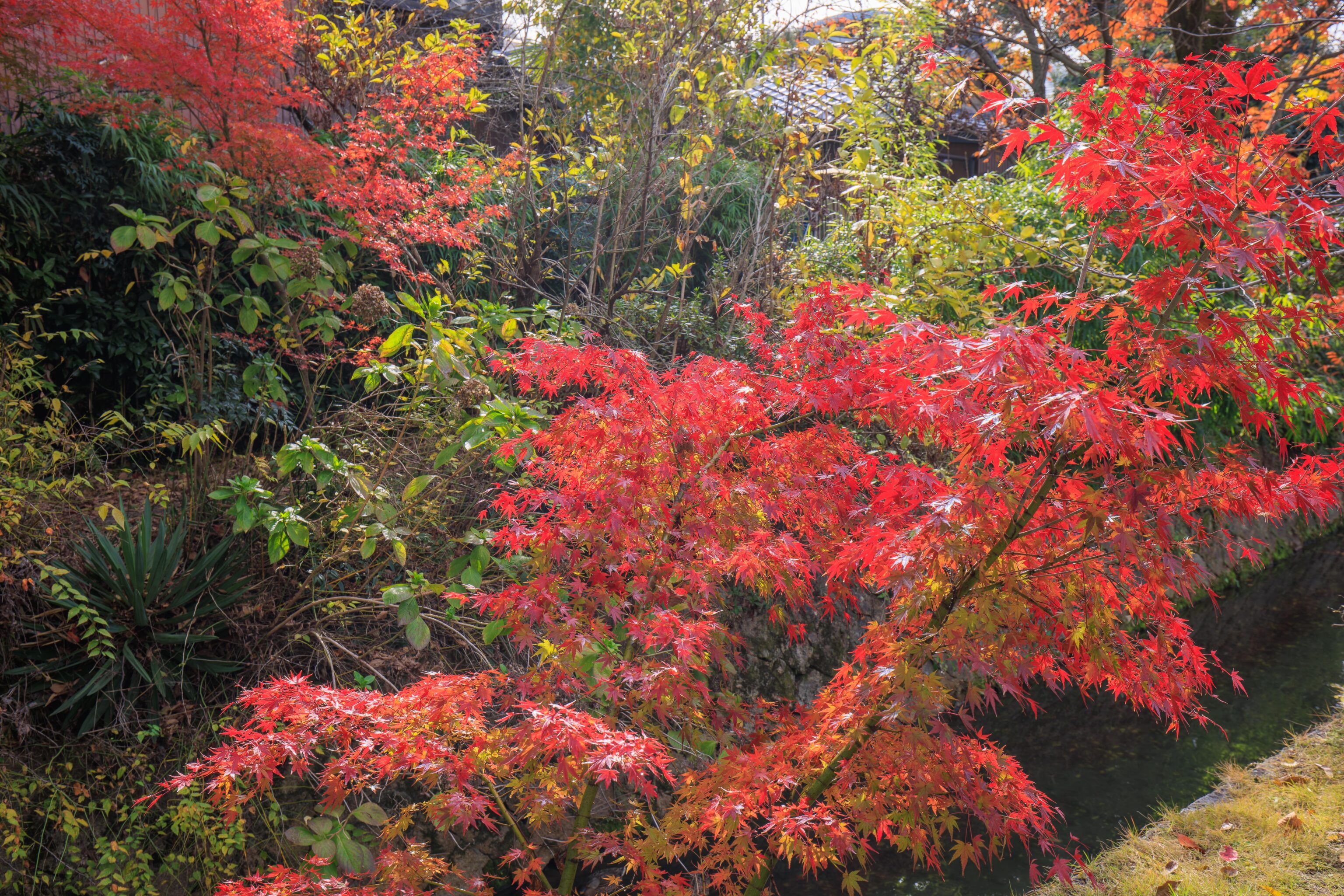
Eventually, we saw a bit of color as we passed by an area with some Japanese maple trees!
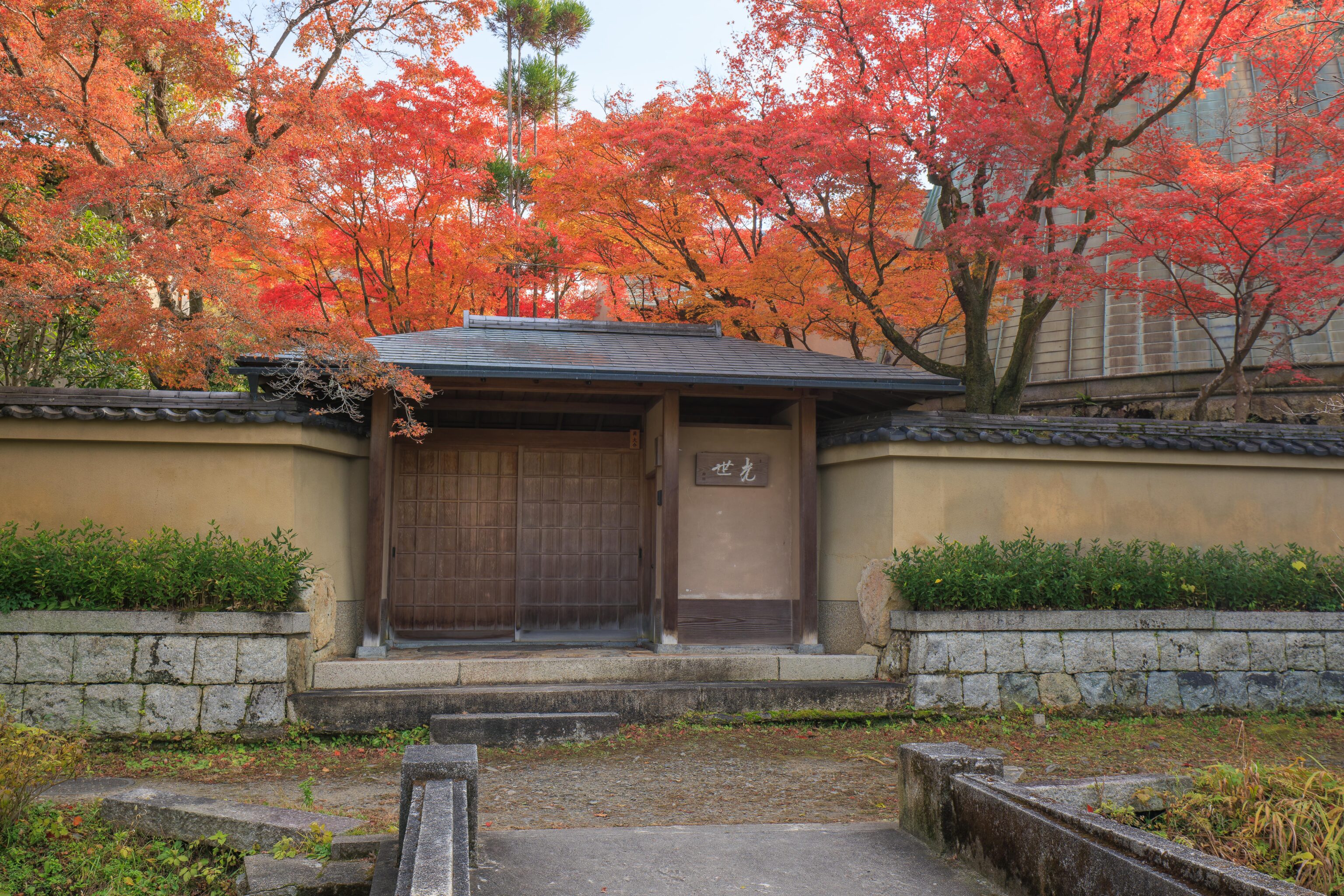
This entrance to what seemed like a private residence looked quite nice with a canopy of maples.
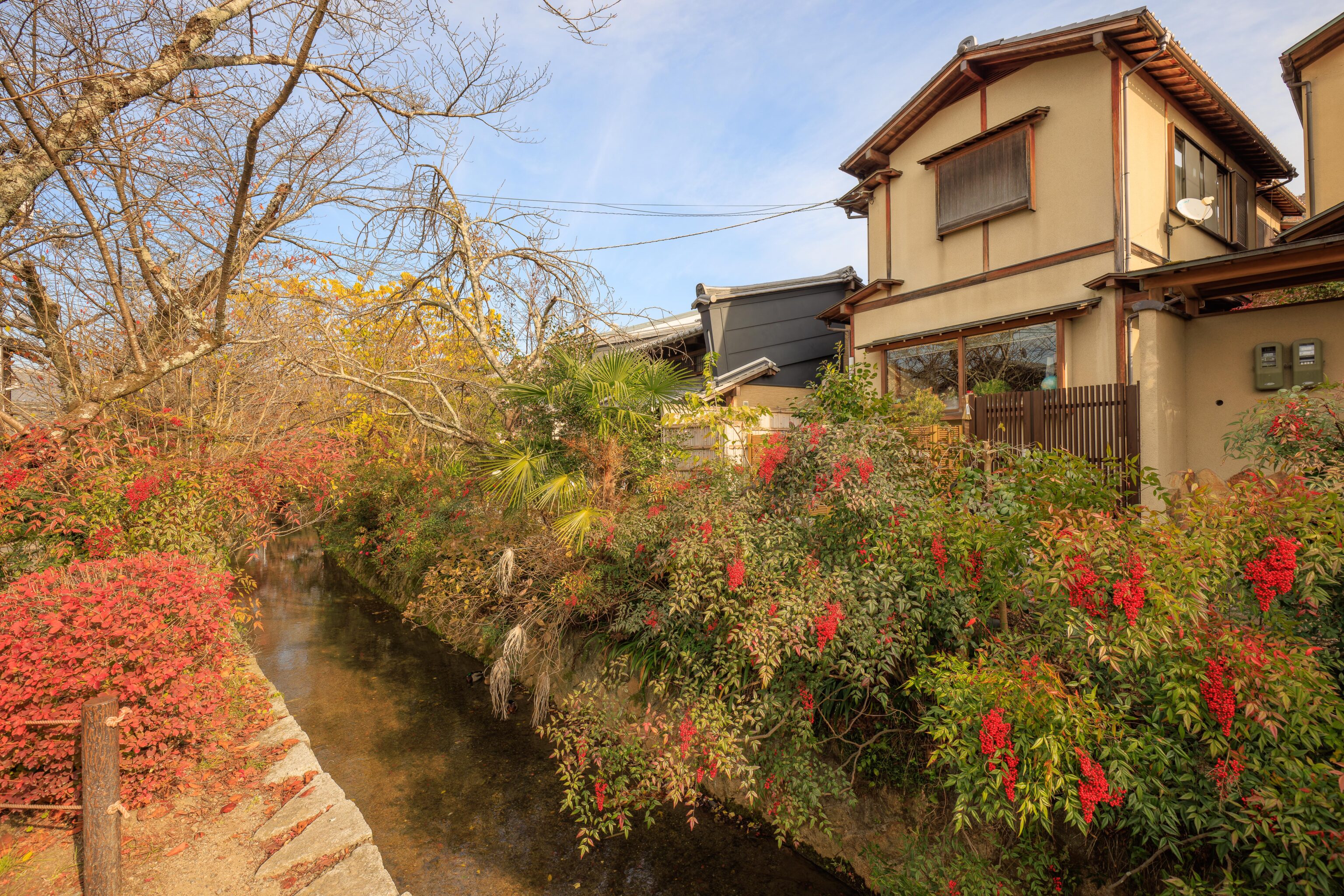
We passed by some plants that had many large groups of berries!
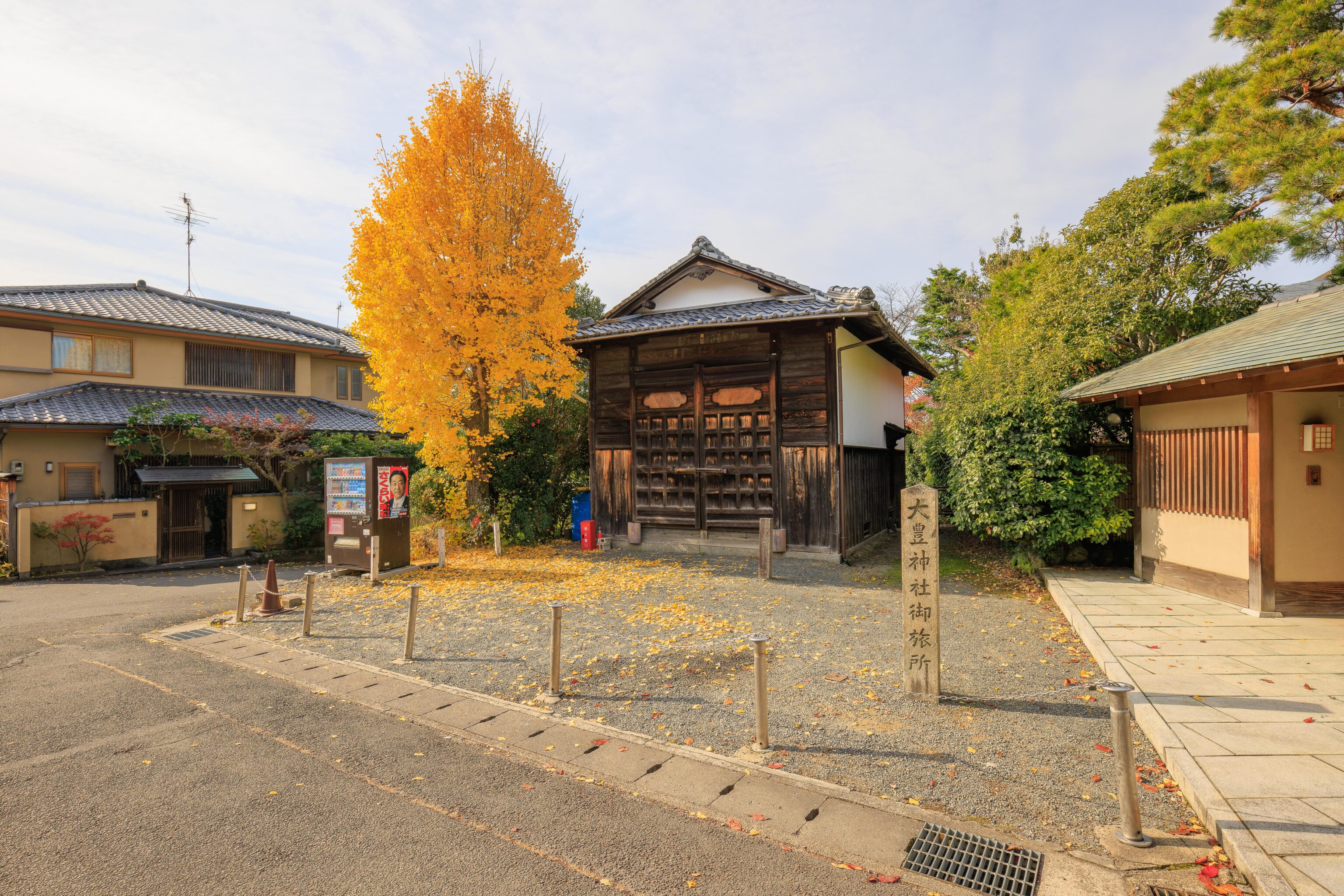
A very Japanesey scene, in the sense that it could be any random place in some random city.
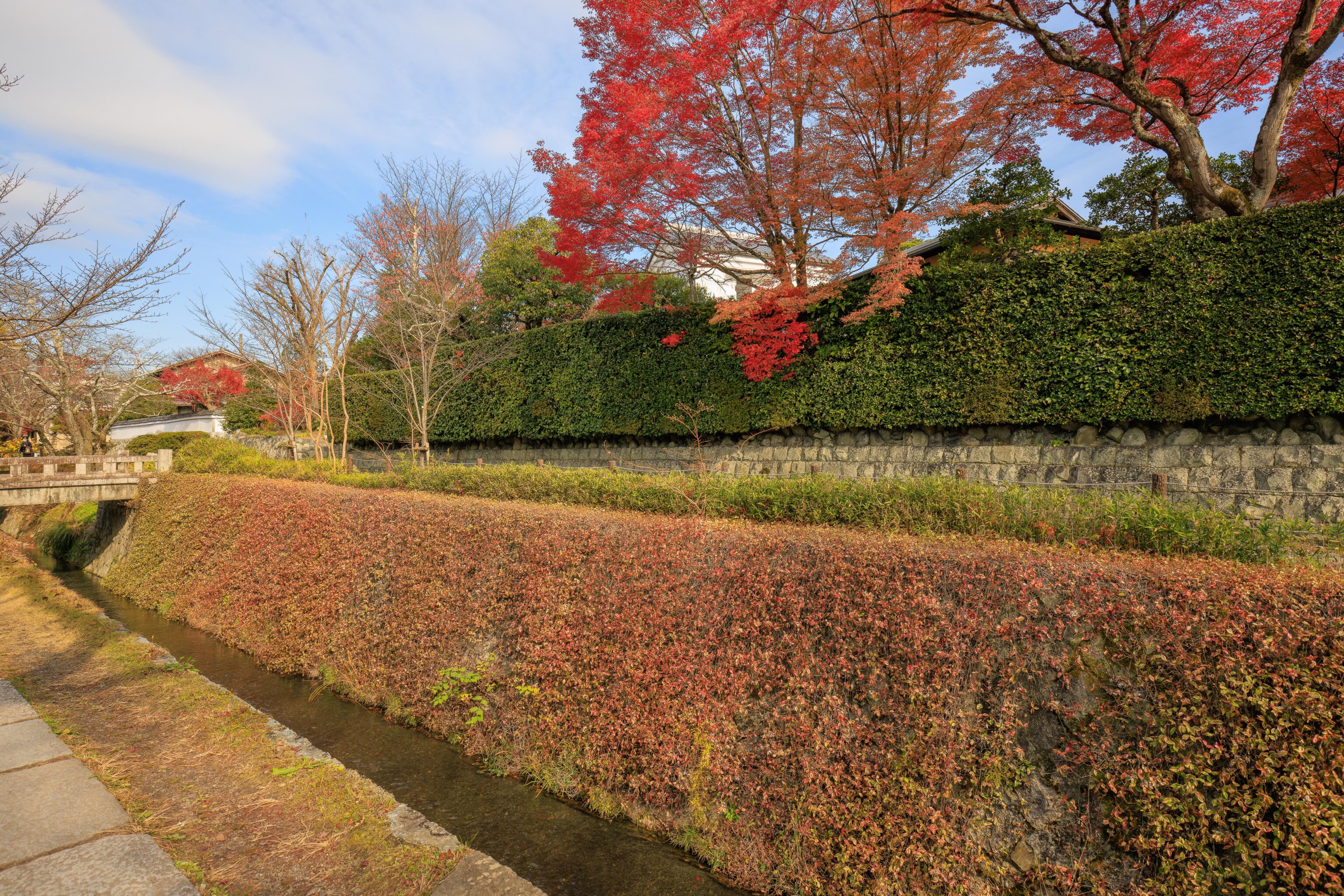
A nice well maintained hedge above a vine covered embankment. It seems like maybe the vines would have been all red not long ago?
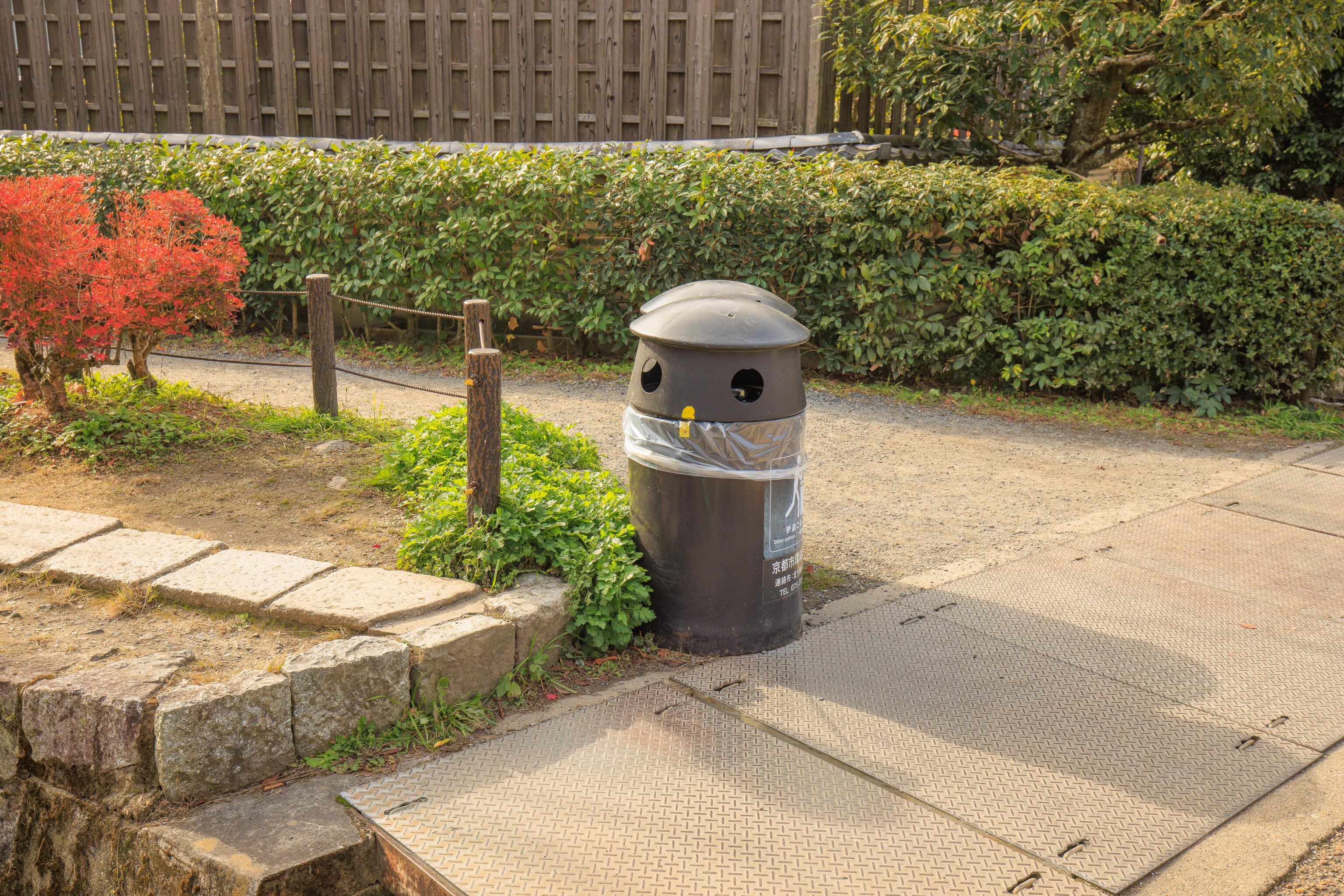
Just a coincidence? Or a pretty successful attempt at making this look like baby chicken’s face?
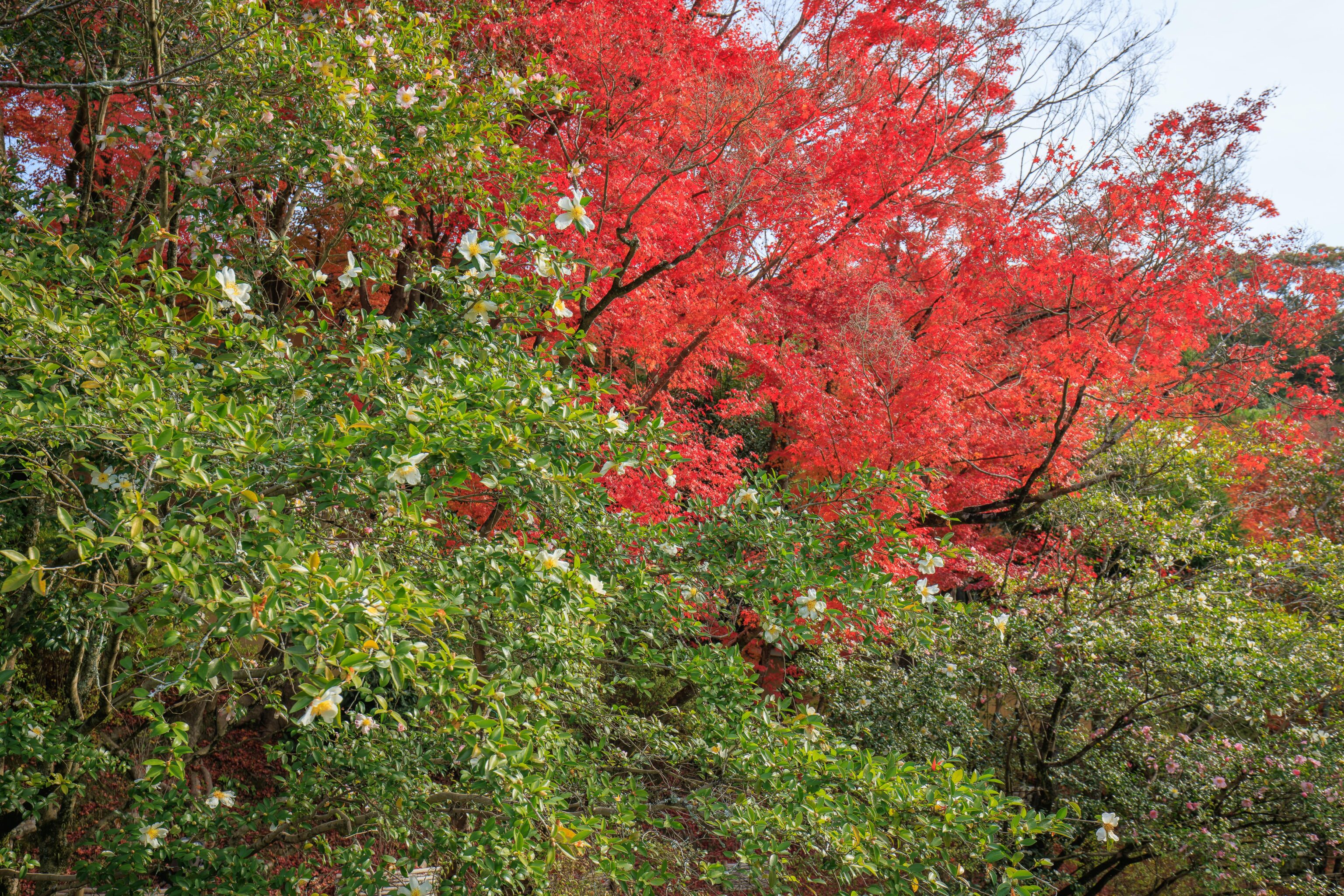
This tree had flowers!
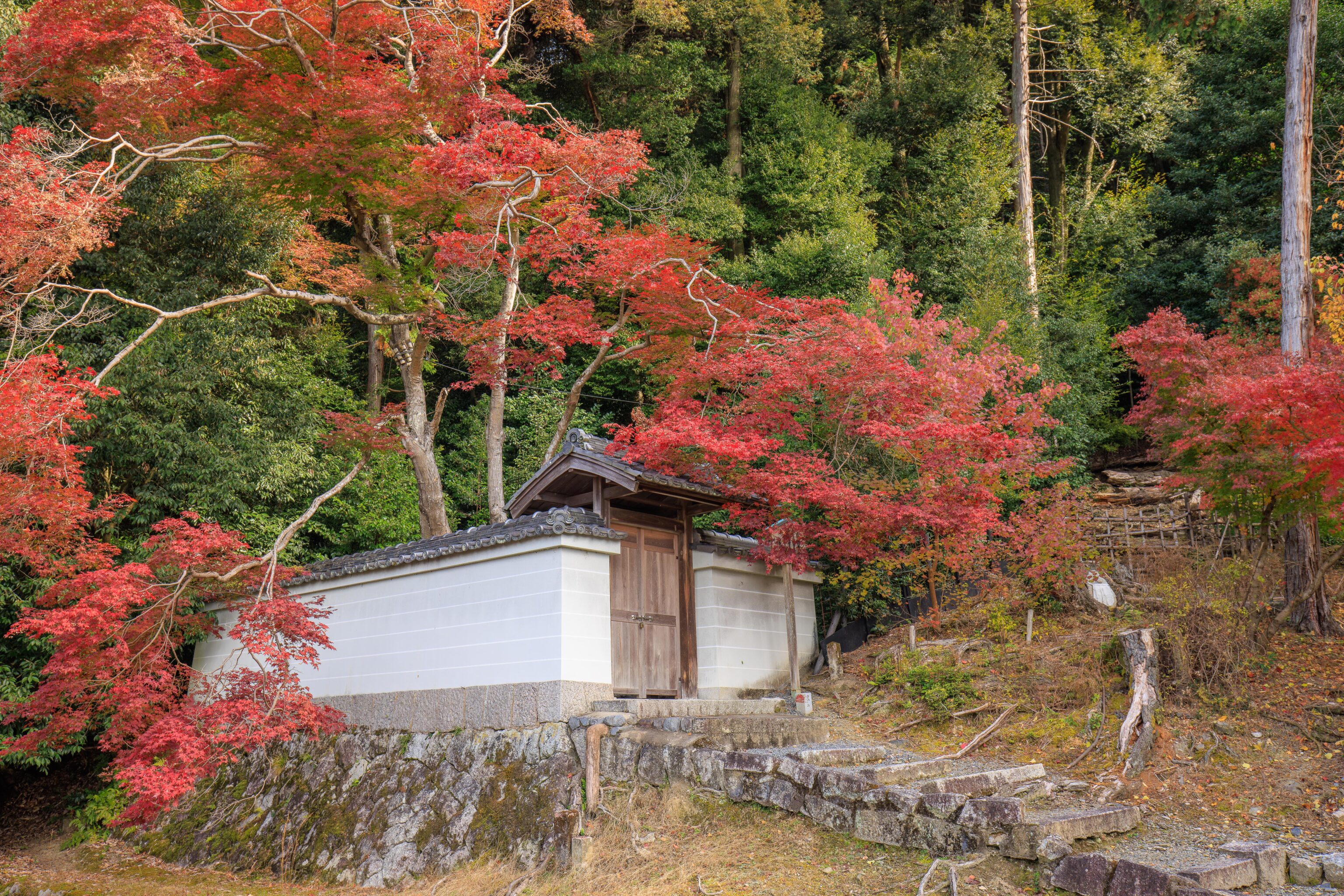
Another entrance. Looking it up on Google Maps, it is labelled as 宗諄女王墓, Queen Sojo Tomb. She was apparently a Japanese nun who died in 1890 and was part of the imperial family bloodline9 .
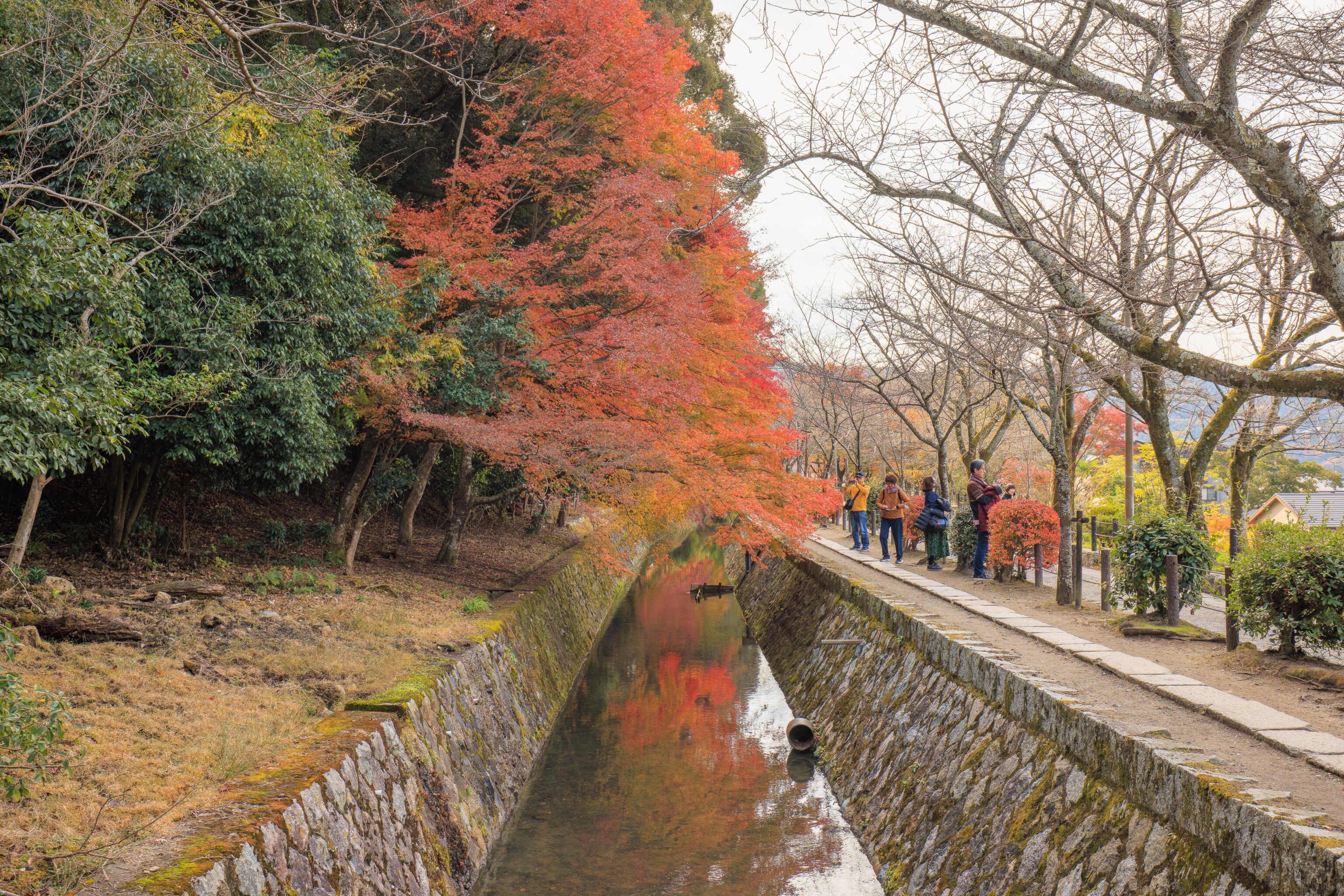
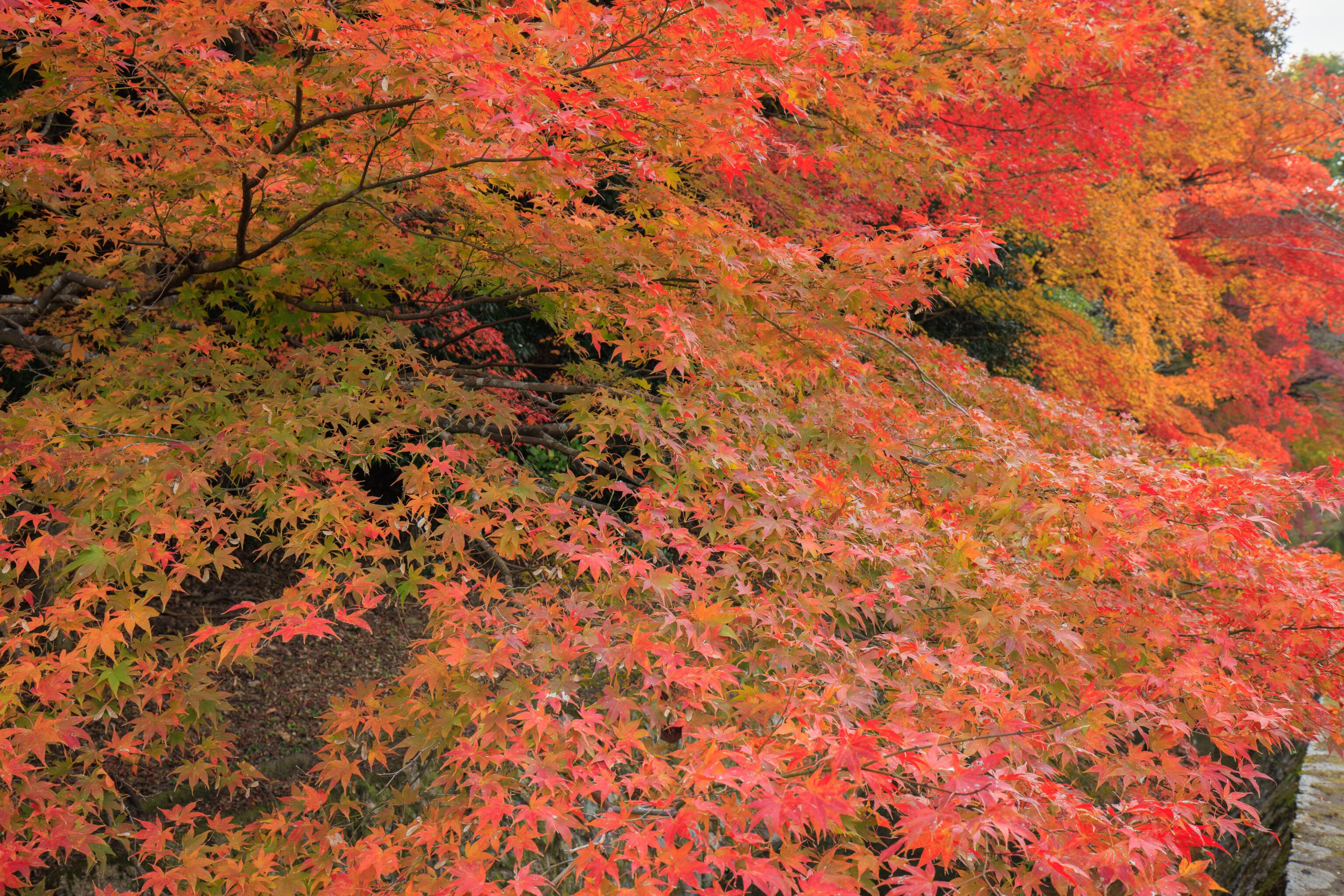
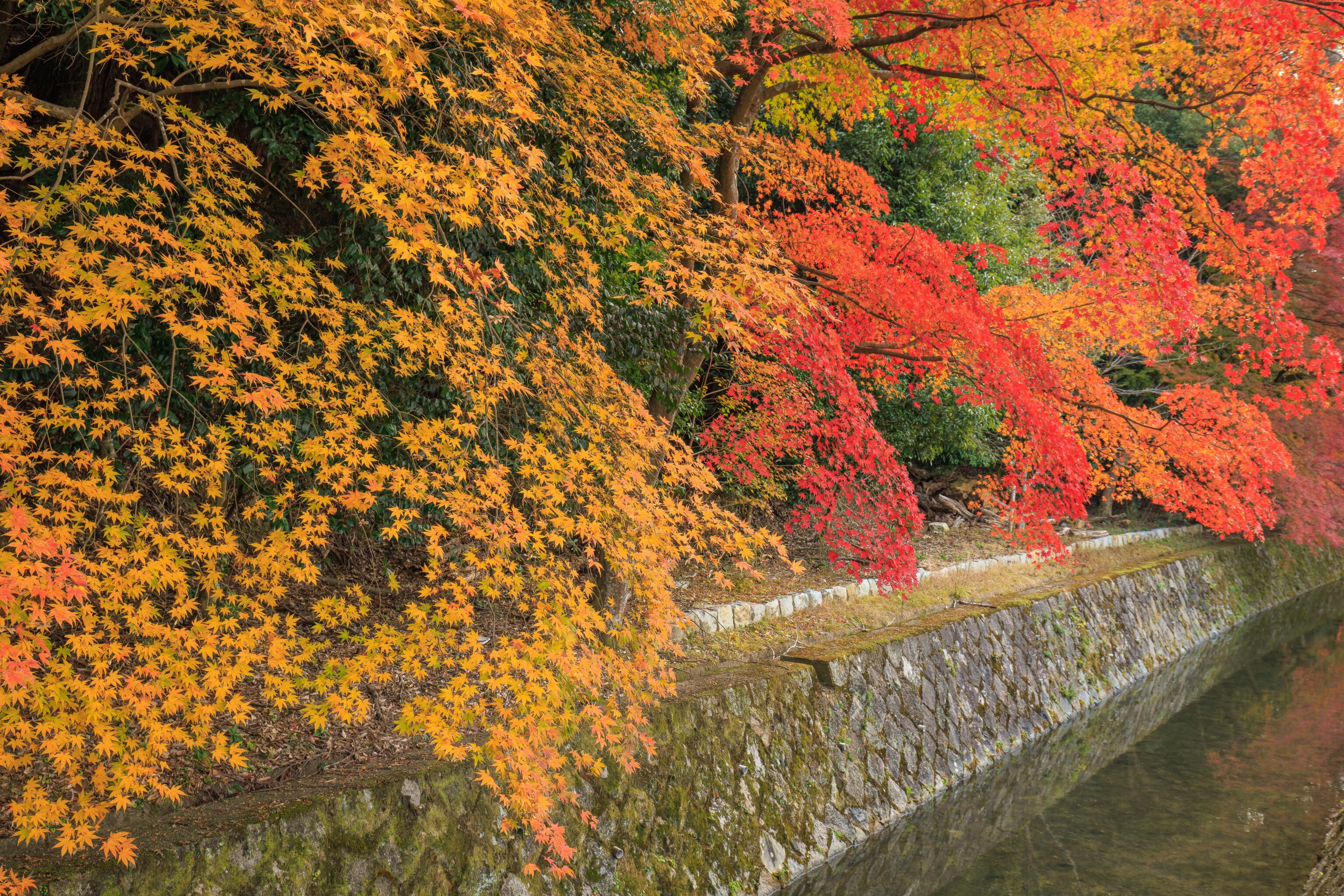
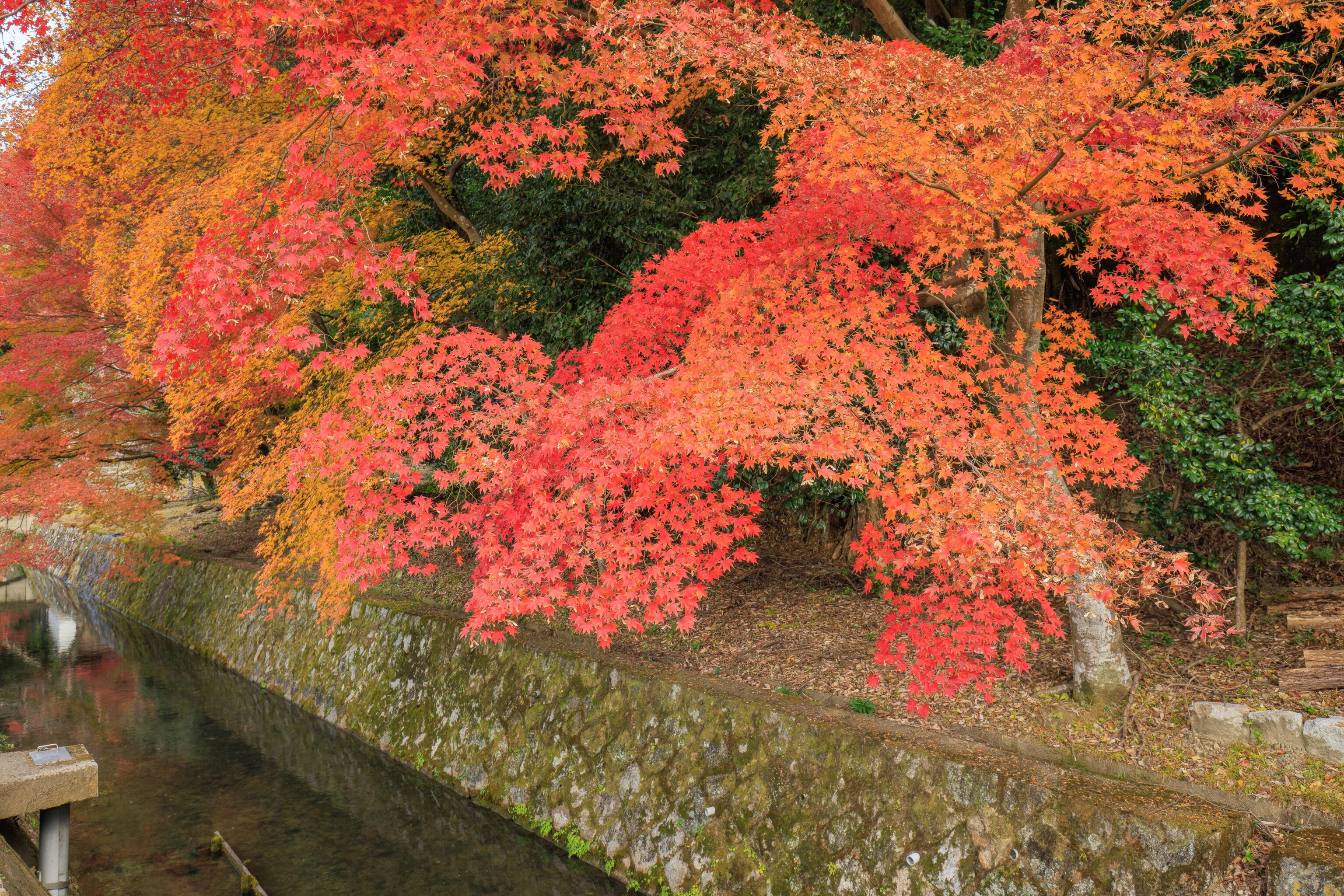
Just after the tomb entrance, we reached a small area with many beautiful maples showing some excellent fall colors. There were actually quite a few people here photographing the leaves! Other than the tour group that we saw earlier, this was the most people we saw in one place on the path!
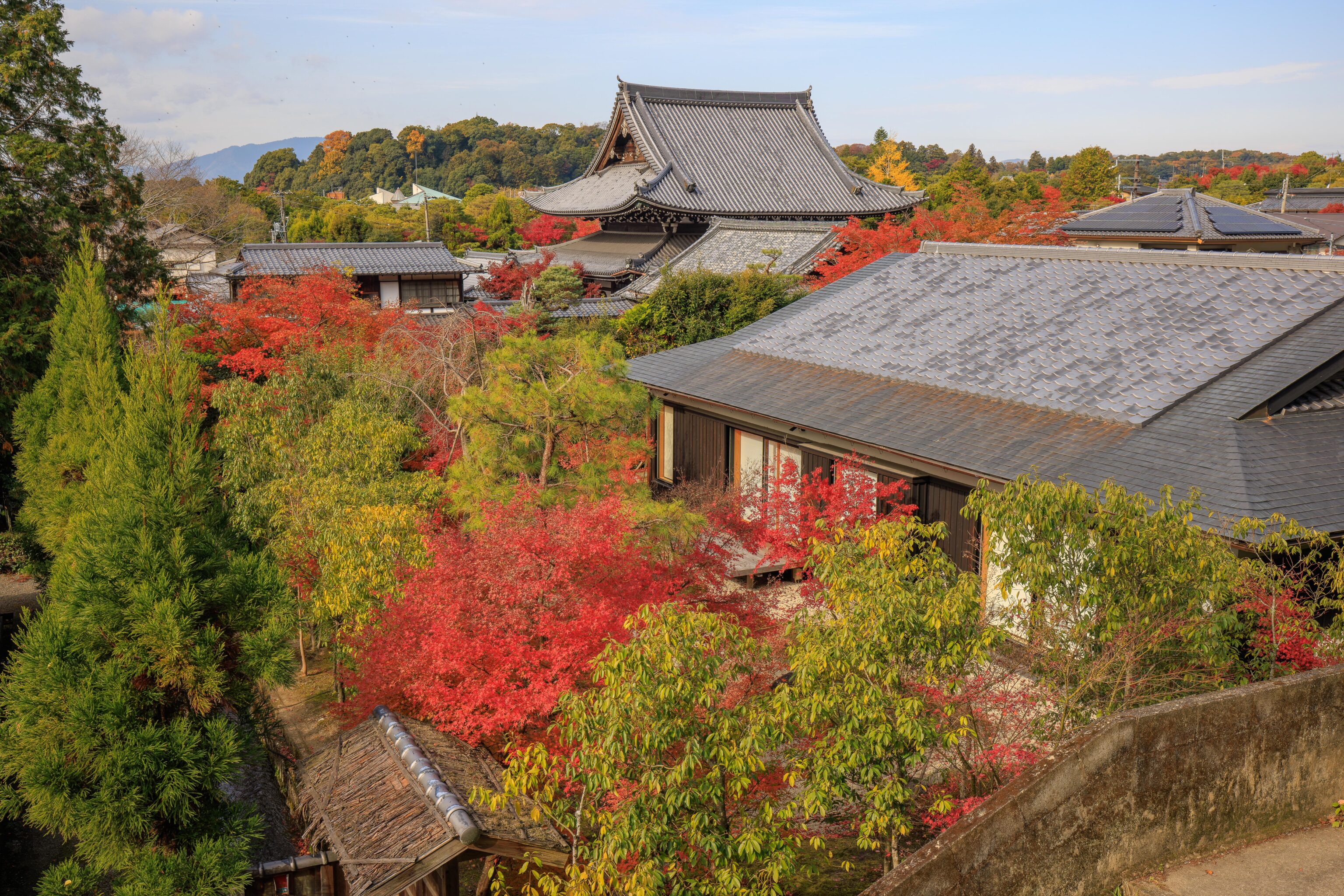
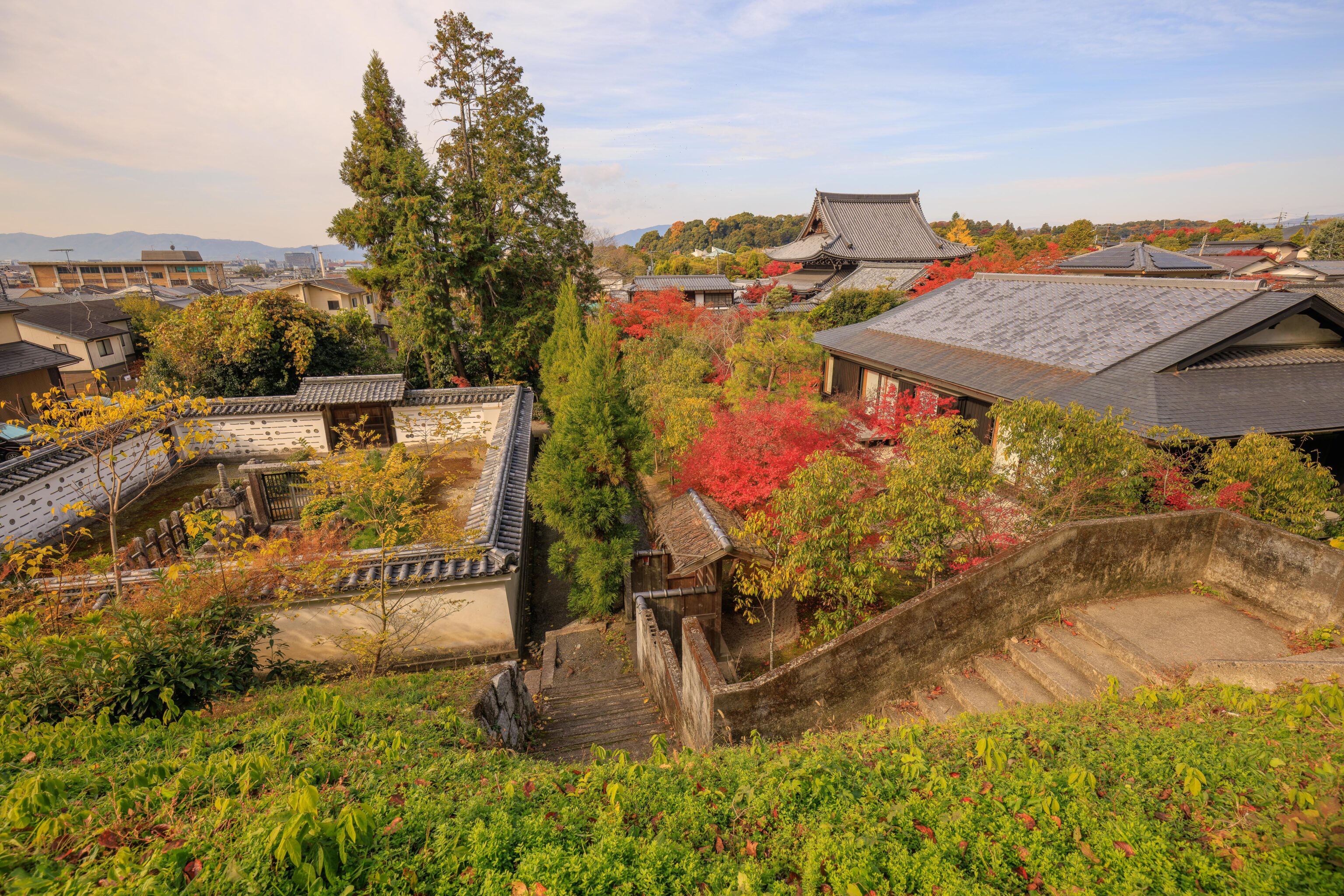
This part of the path was elevated a bit above the rest of the city to the west. The temple-like buildings below seem to be Koun-ji, a sub-temple of Nanzen-ji which is nearby and which we plan on visiting later today.
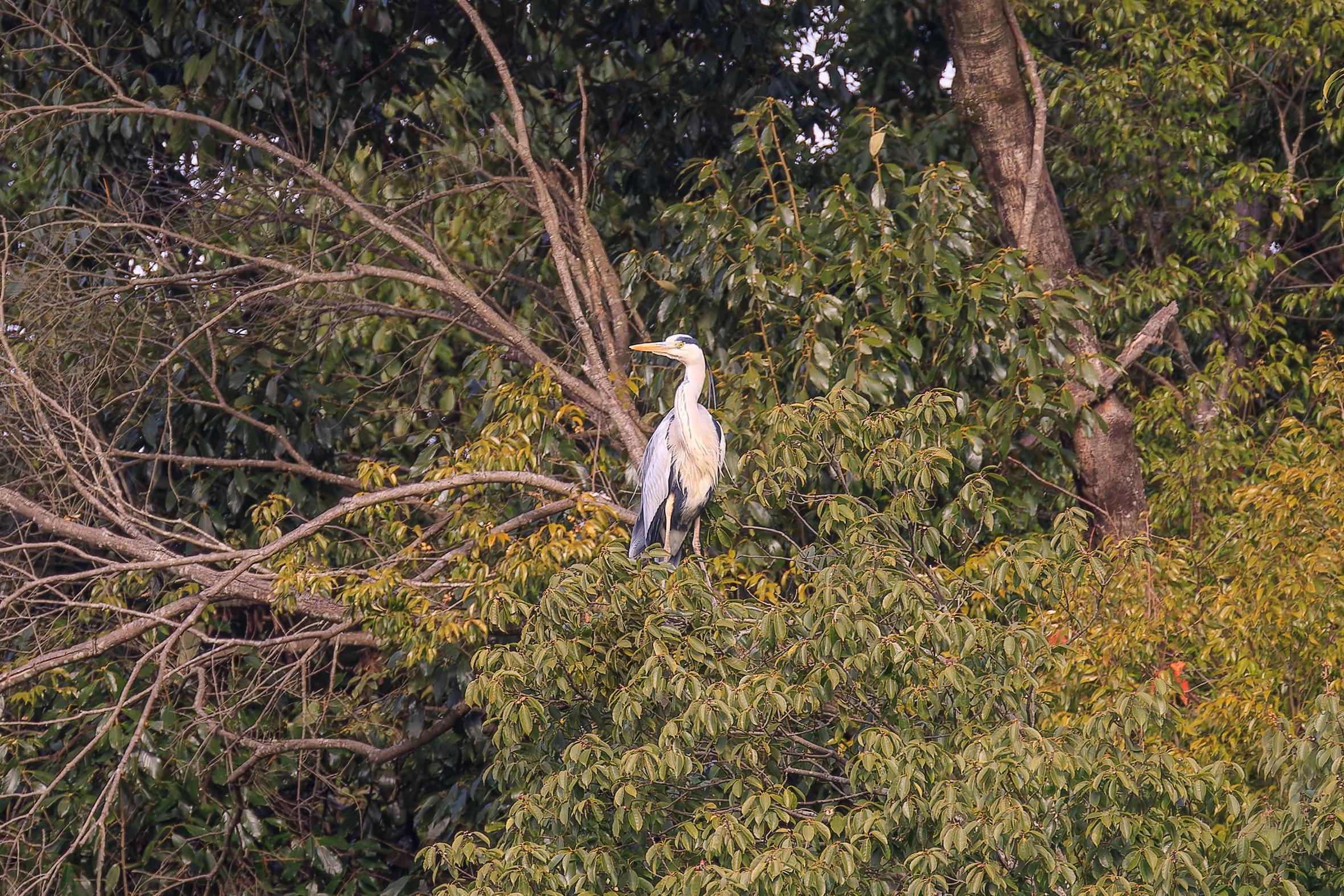
While looking at the scenery here, we saw a Gray Heron land in a distant tree! We had plenty of time to switch to the telephoto lens to photograph it.
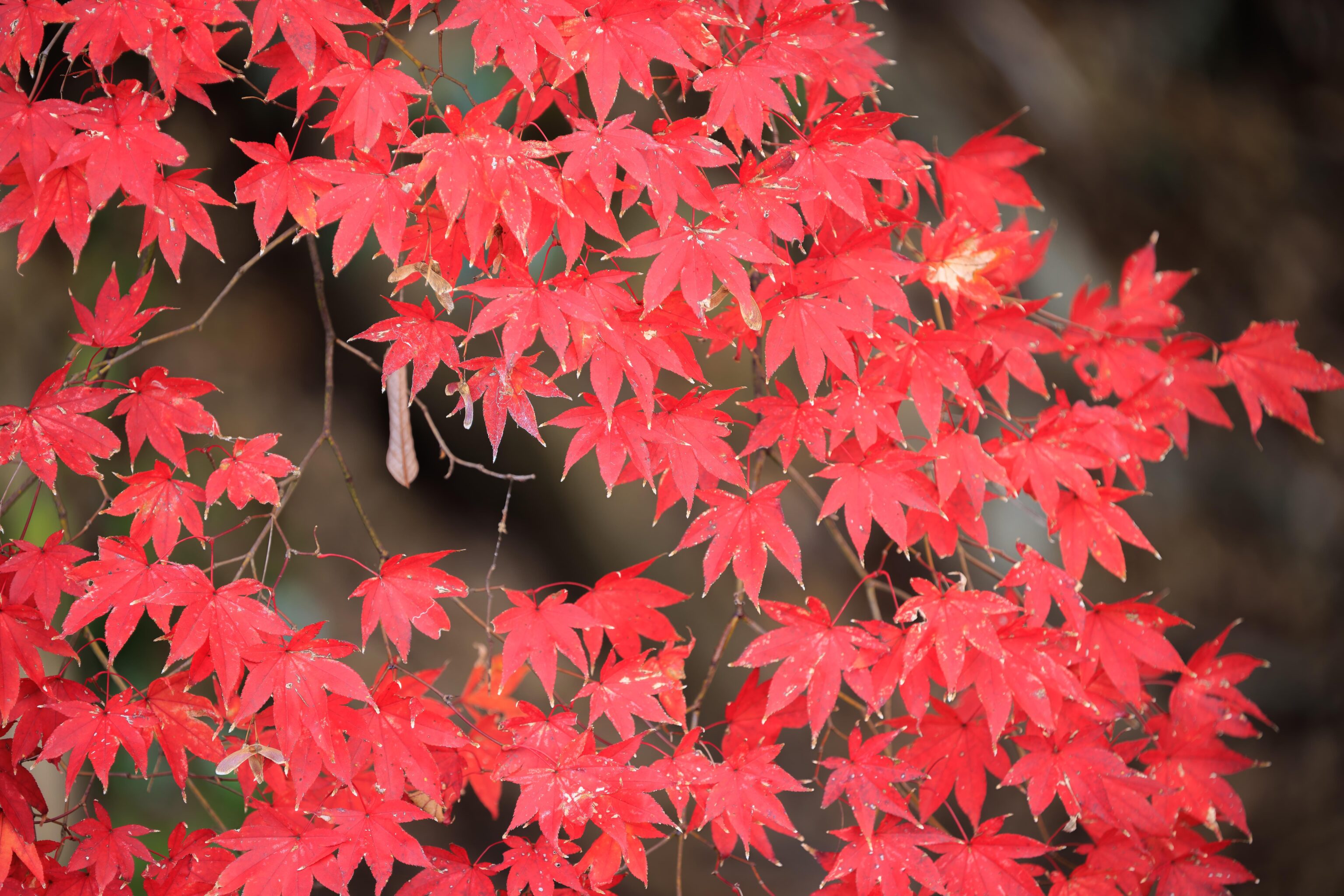
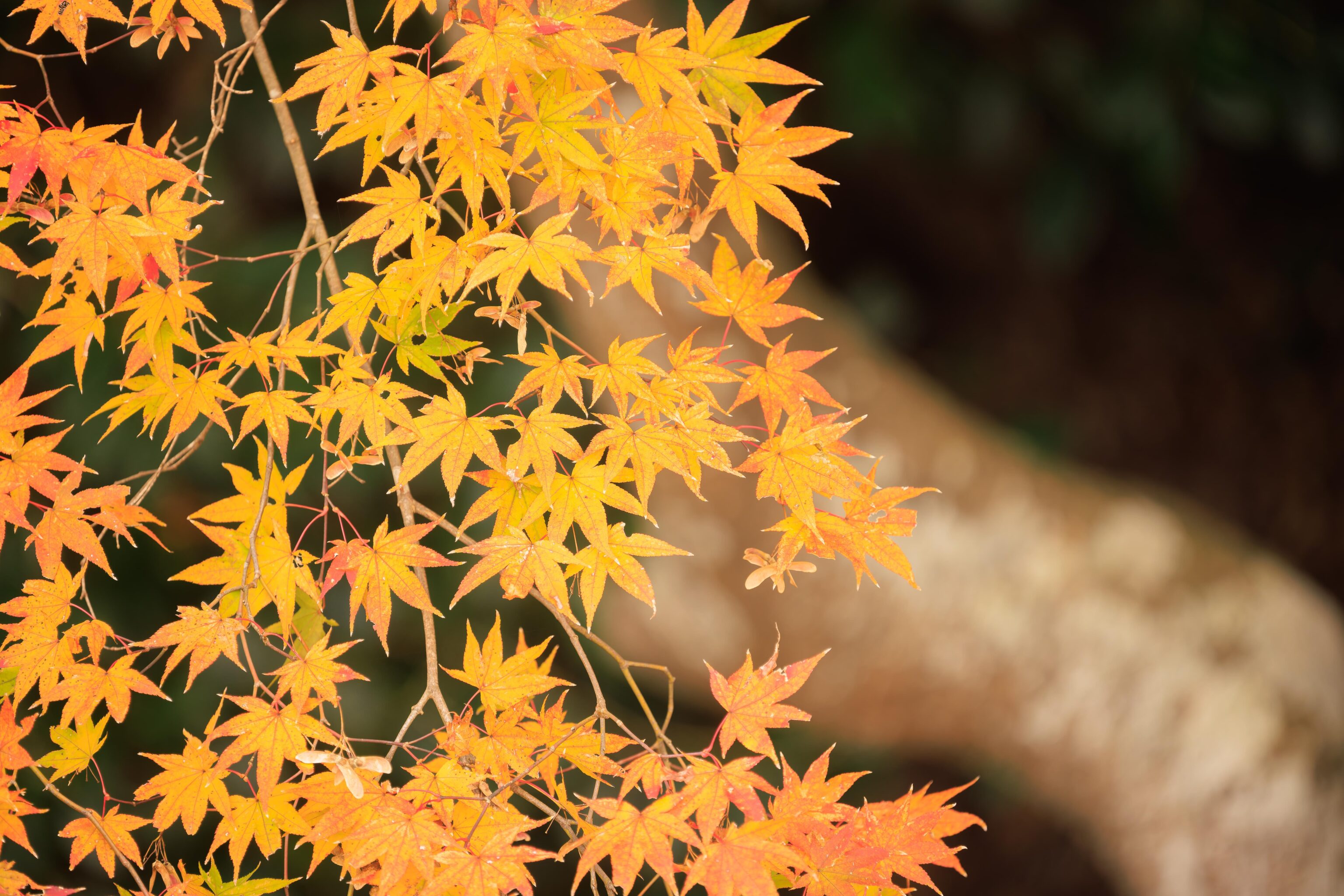
We took some closer photos of some Japanese maple leaves that were nearby while we still had the telephoto lens on the camera.
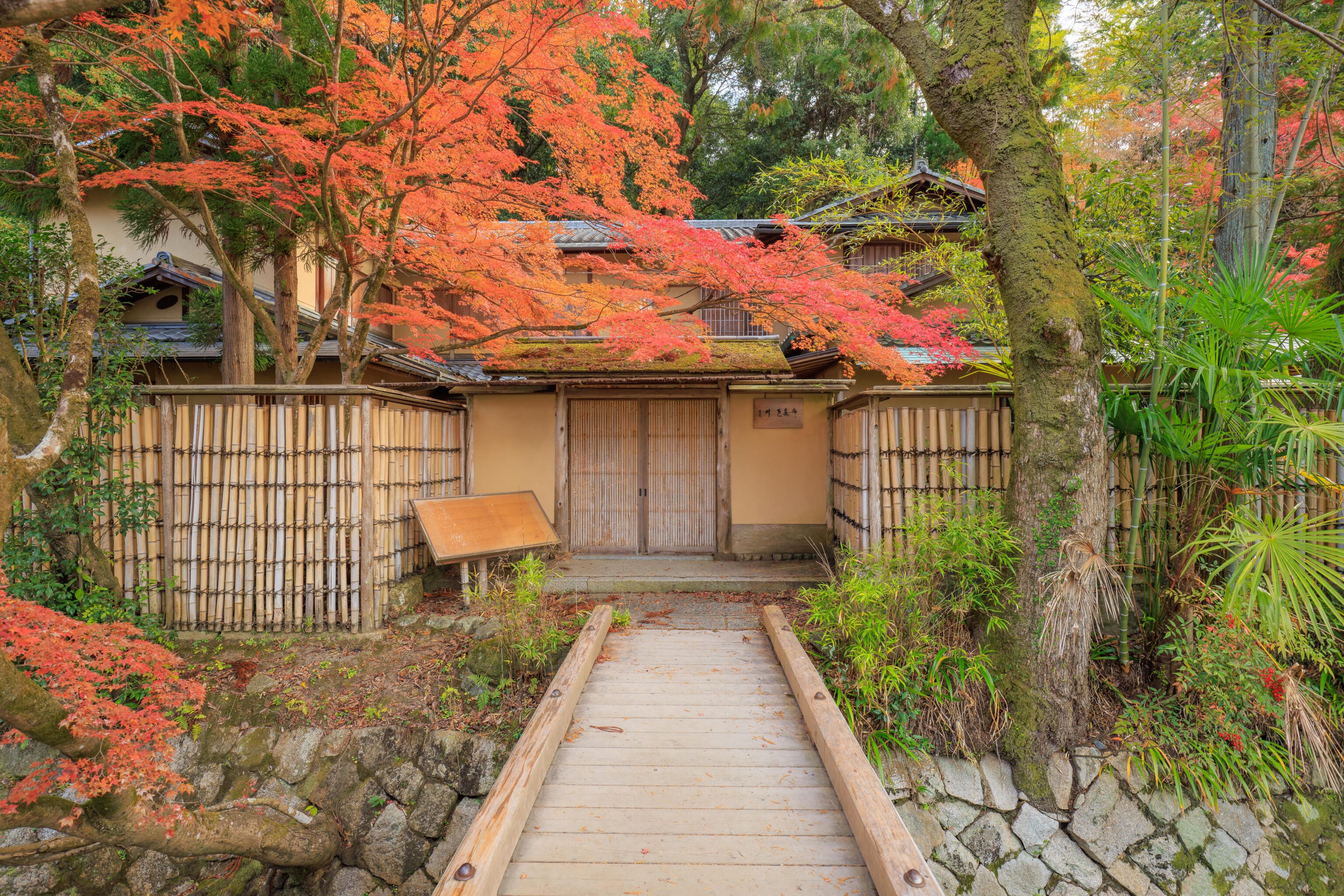
After a short walk, we passed by this bridge leading to a closed door near the end of the Philosopher’s Path. Was this a former restaurant or something? It has a place for a large sign by the door.
Lunch
After reaching the end of the Philosopher’s Path, we decided to have lunch as it was almost 11am and eating after our next destination would have resulted in a rather late lunch. We decided on a nearby okonomiyaki restaurant. The location on Google Maps seemed weird though, near small nearby temple.
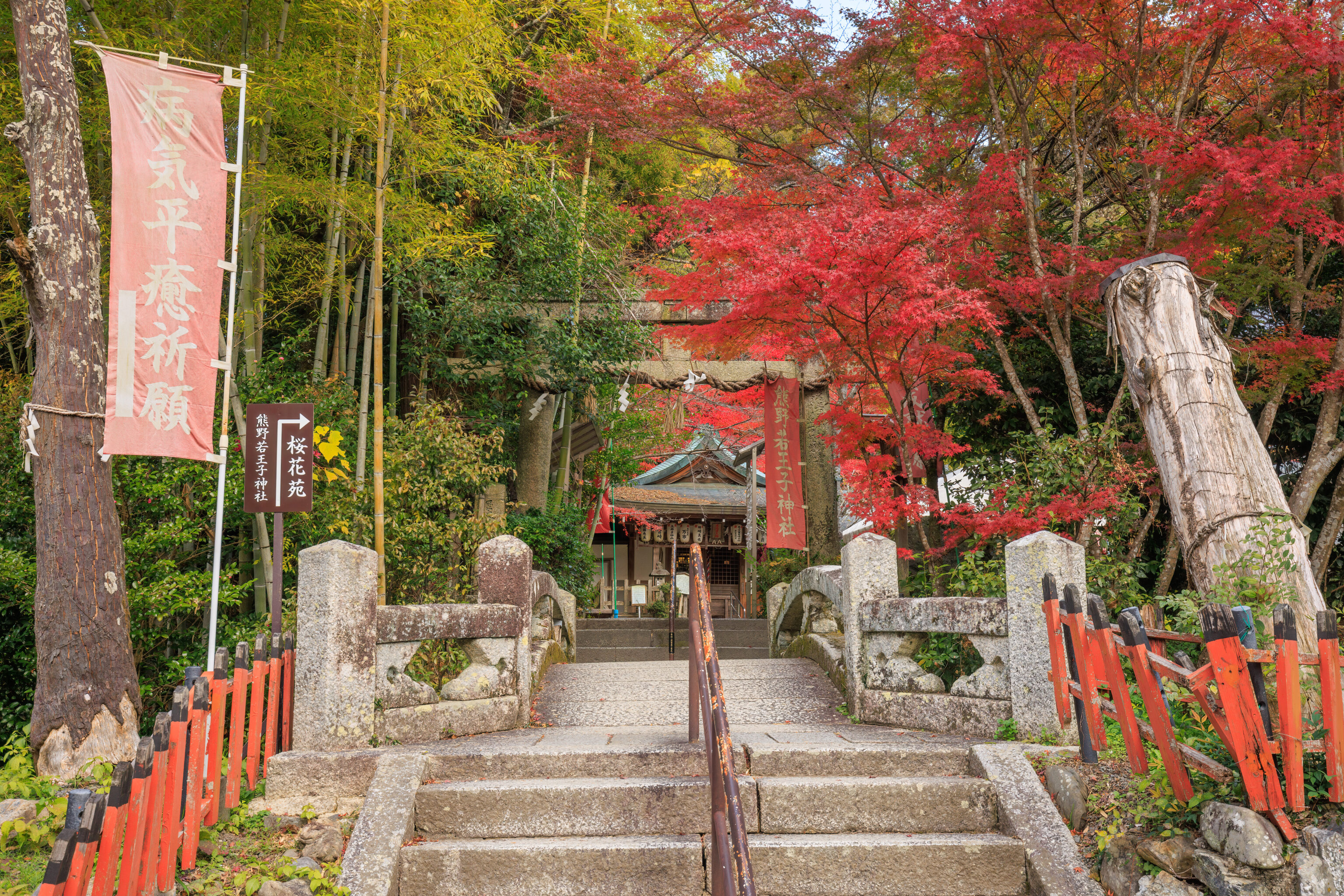
We briefly walked around this shrine, the Kumano Nyakuōji-jinja. There were a few other people there but otherwise not much was going on. It apparently has a grove of cherry blossom trees on the hill behind the shrine buildings.
We eventually realized that the Google Maps marker for Okonomiyaki Zen was appearing in the wrong place! We were pretty close though. We turned around and walked a few blocks to the west to reach it at an intersection with a larger street.
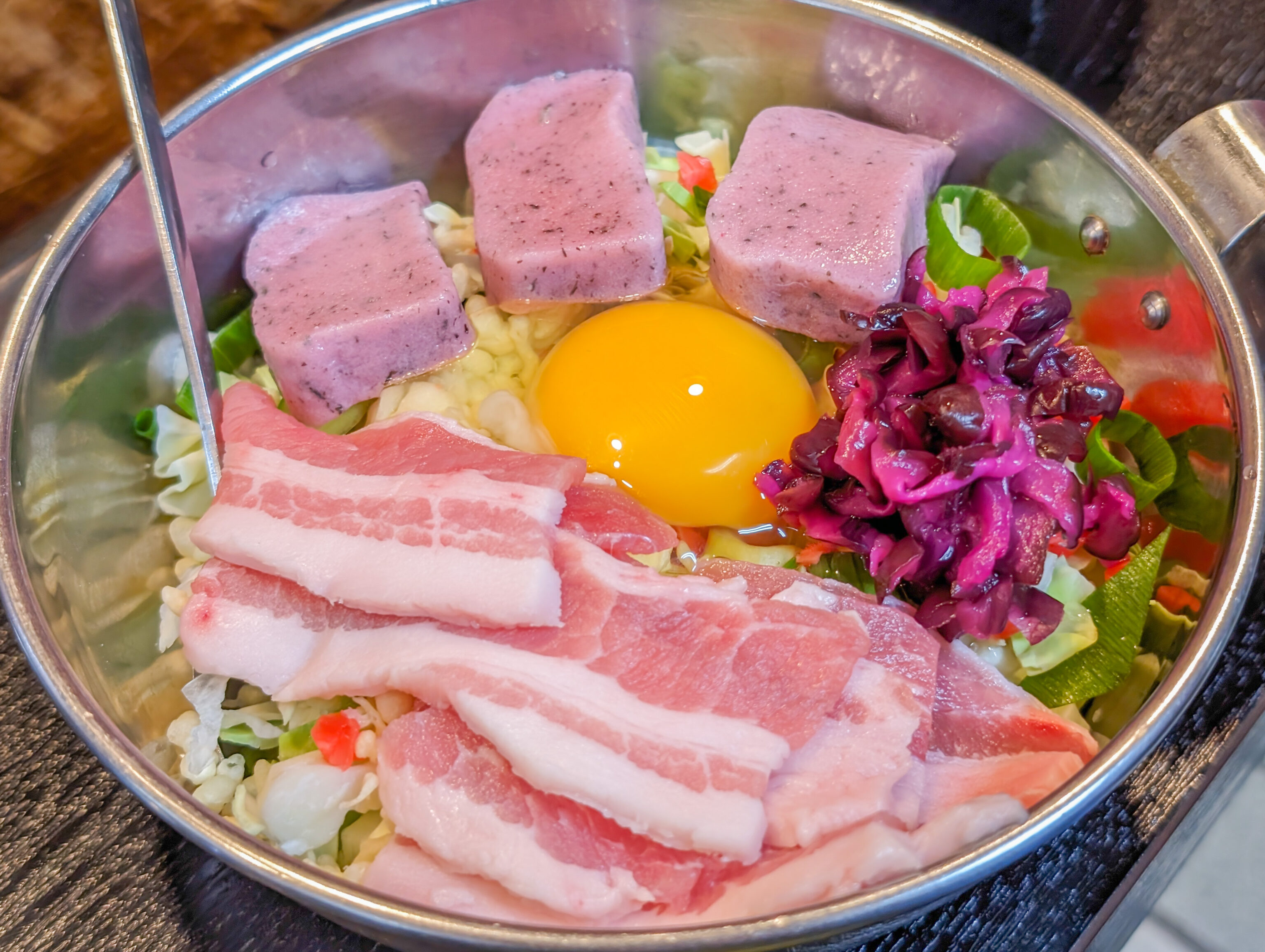
We arrived right after they opened. We ordered two okonomiyakis, one with beef and the other with pork and gluten, which was new to us. Okonomiyaki is prepared on a flat metal plate grill, the same type of cooking surface used for Teppanyaki which is somewhat well known in the US, though often misbranded as Hibachi.
In this particular restaurant, which is pretty tiny, each table has its own metal plate grill. The wait staff cook for you. A more typical setup would be that the guests sit around a very large metal plate grill and a chef cooks for everyone seated, kind of like the American Teppanyaki experience, minus all the nonsense show stuff that goes on! They were pretty quick so we only got a photo of the pork and gluten raw ingredients!
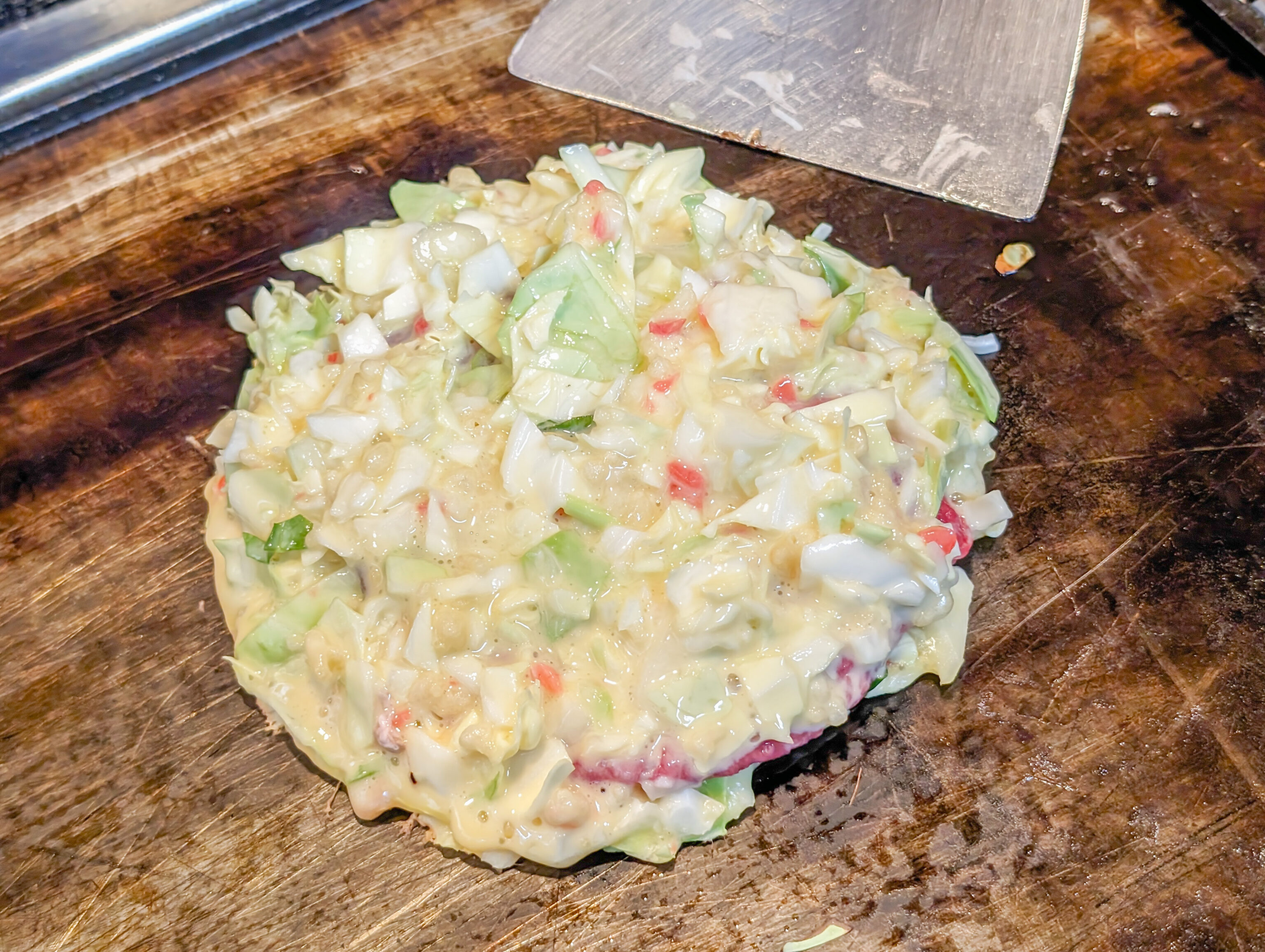
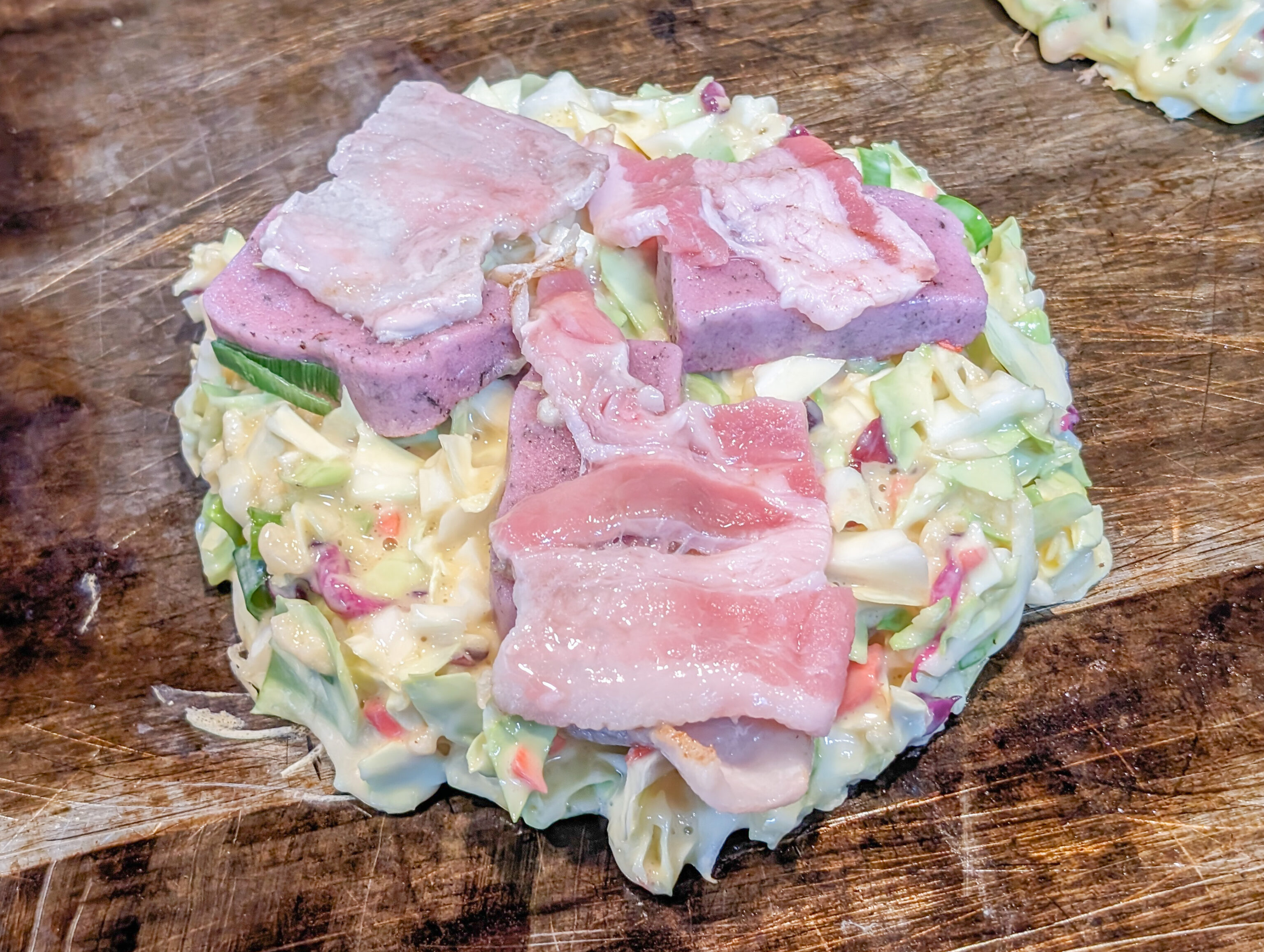
Various regions in Japan have their own okonomiyaki styles. These were the local Kyoto style. The assembly was a bit different as the beef had the meat in a middle layer while the pork and gluten had those extra ingredients placed atop.
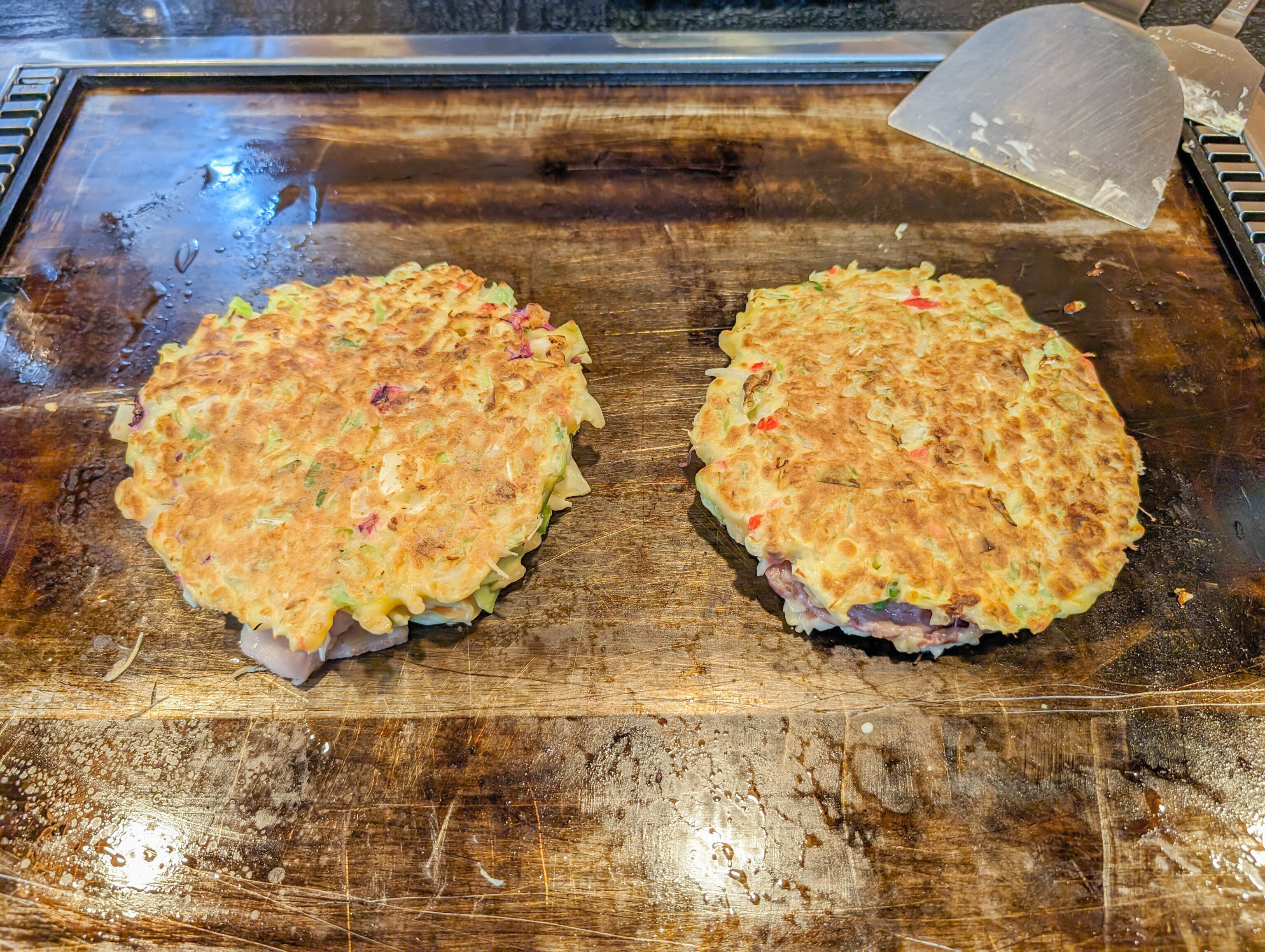
The okonomiyakis after flipping once. The pork and gluten have direct contact with the grill to be properly cooked.
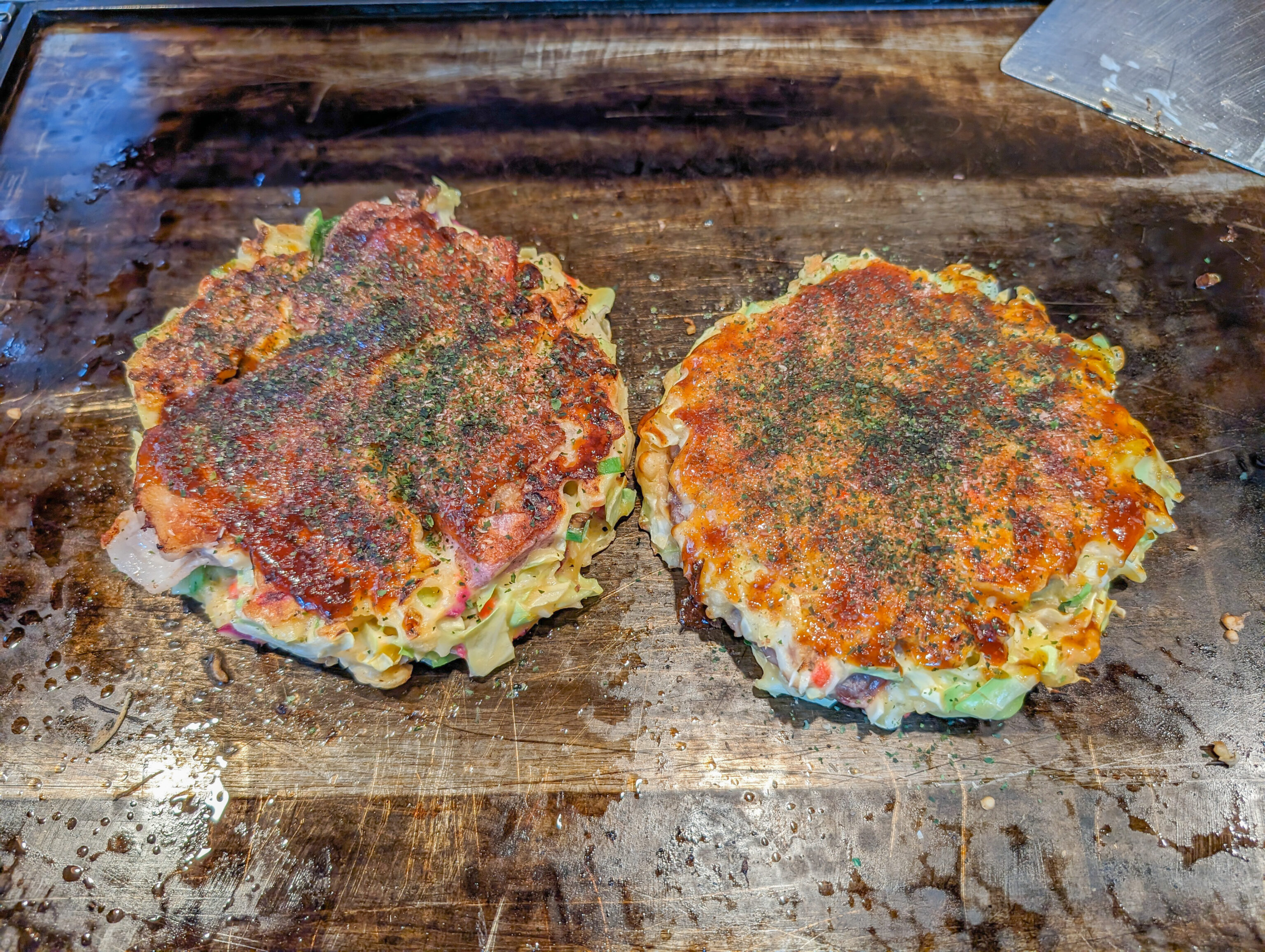
The final appearance after flipping again and adding toppings, which are done by the customer to their own taste preferences. They were very good, though also rather small!
Eikando Zenrin-ji
Our next stop was Eikando Zenrin-ji which was just a few small blocks away. Okonomiyaki Zen was cash only, which is pretty common in Japan, particularly for smaller restaurants. Our cash supplies were running low! While vending machines are everywhere in Japan, ATMs are not. Unfortunately, there were not any convenience stores or banks in the immediate area.
There was a post office about 10 minutes away though so we decided to check it out as post banks are a thing in Japan. We don’t know if every post office contains a post bank but this one did! Our next place to try would have been the corner gas station as it seemed to have a convenience store. Luckily, we didn’t have to go any further away!
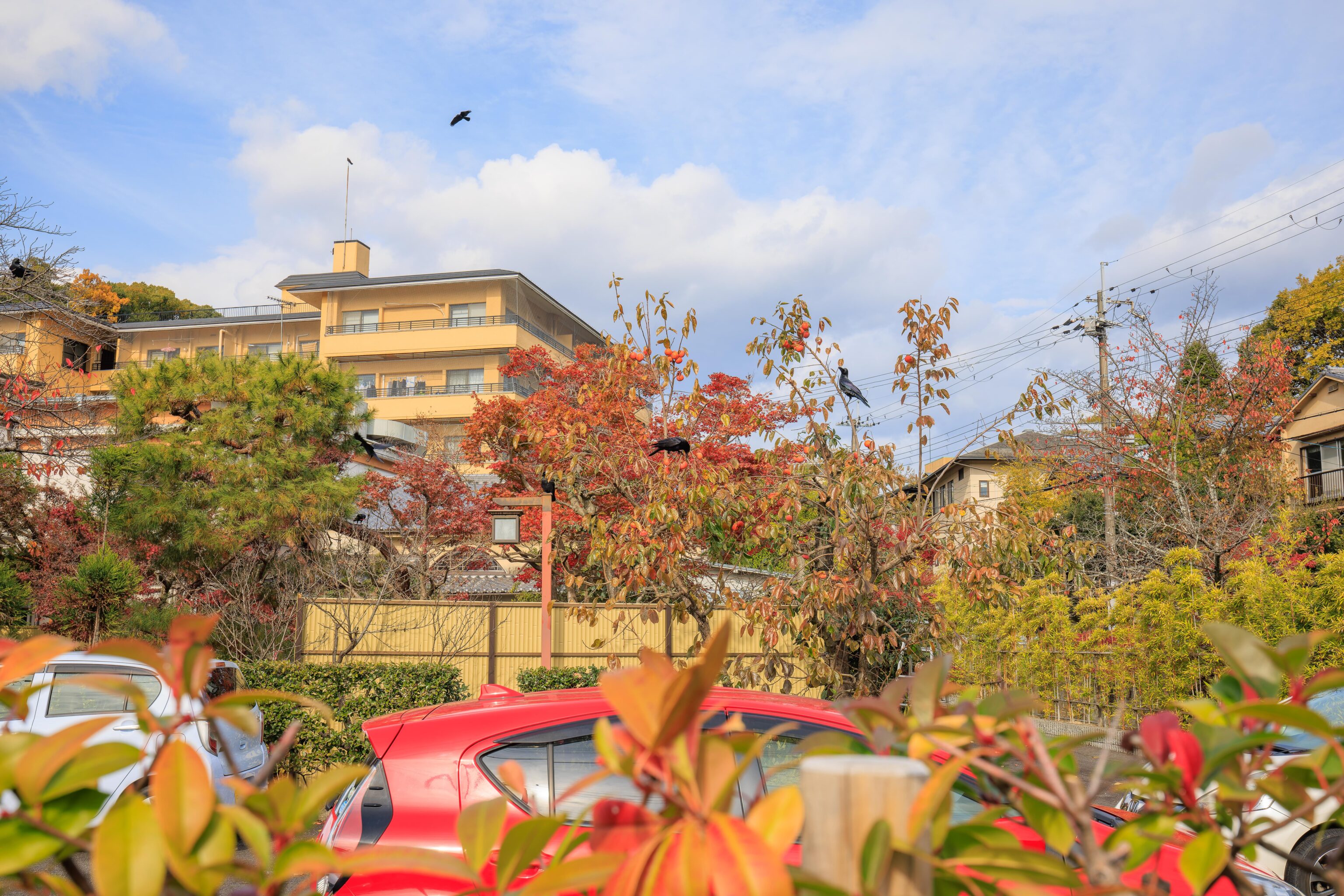
Crows are a common sight in Japan. They are everywhere, often very noisy, and often gather in large groups. We heard some nearby and saw that they were eating fruit from a tree!
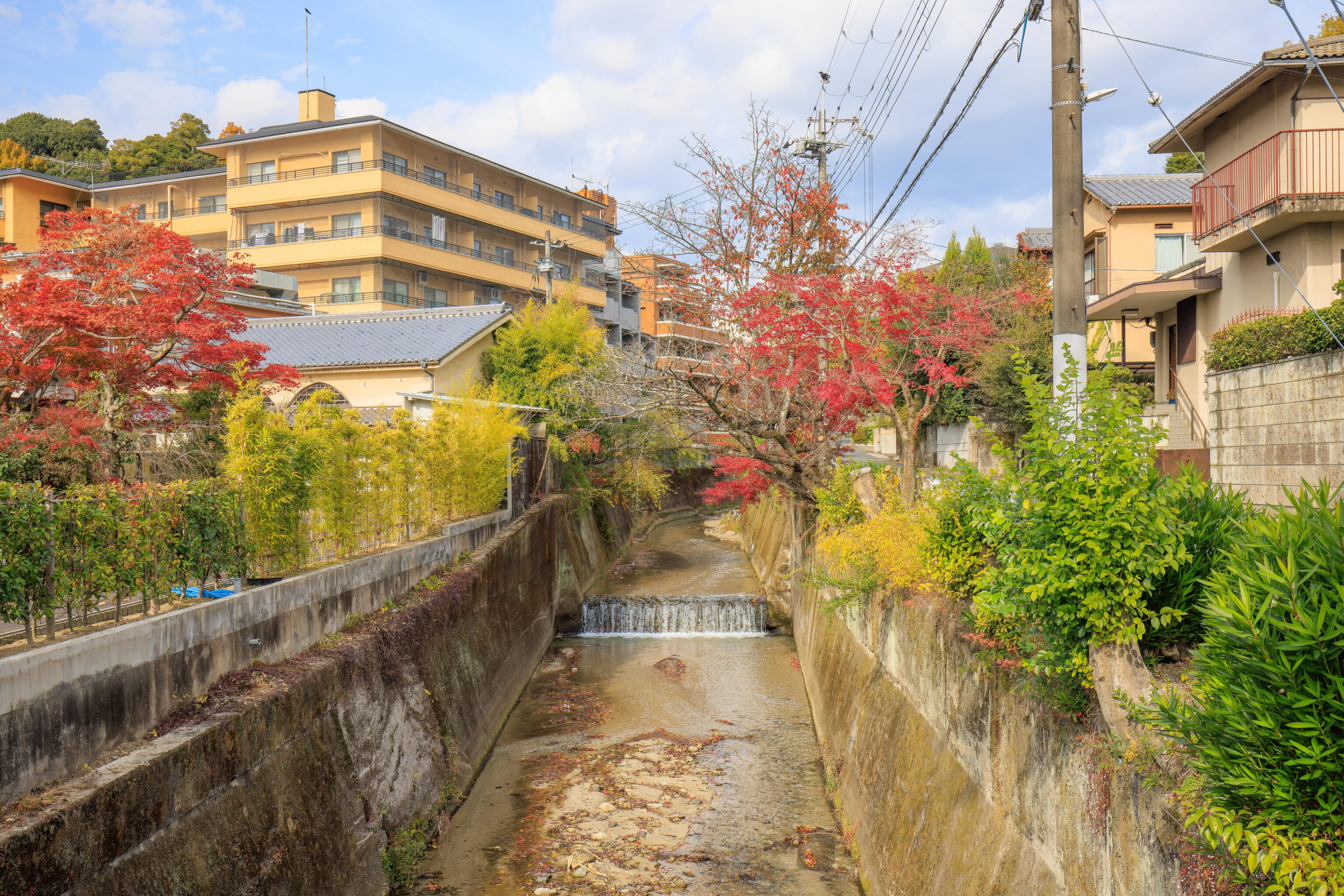
We passed over a small canal as we backtracked to get to Eikando Zenrin-ji. This canal seems to run parallel to the Philosopher’s Path.
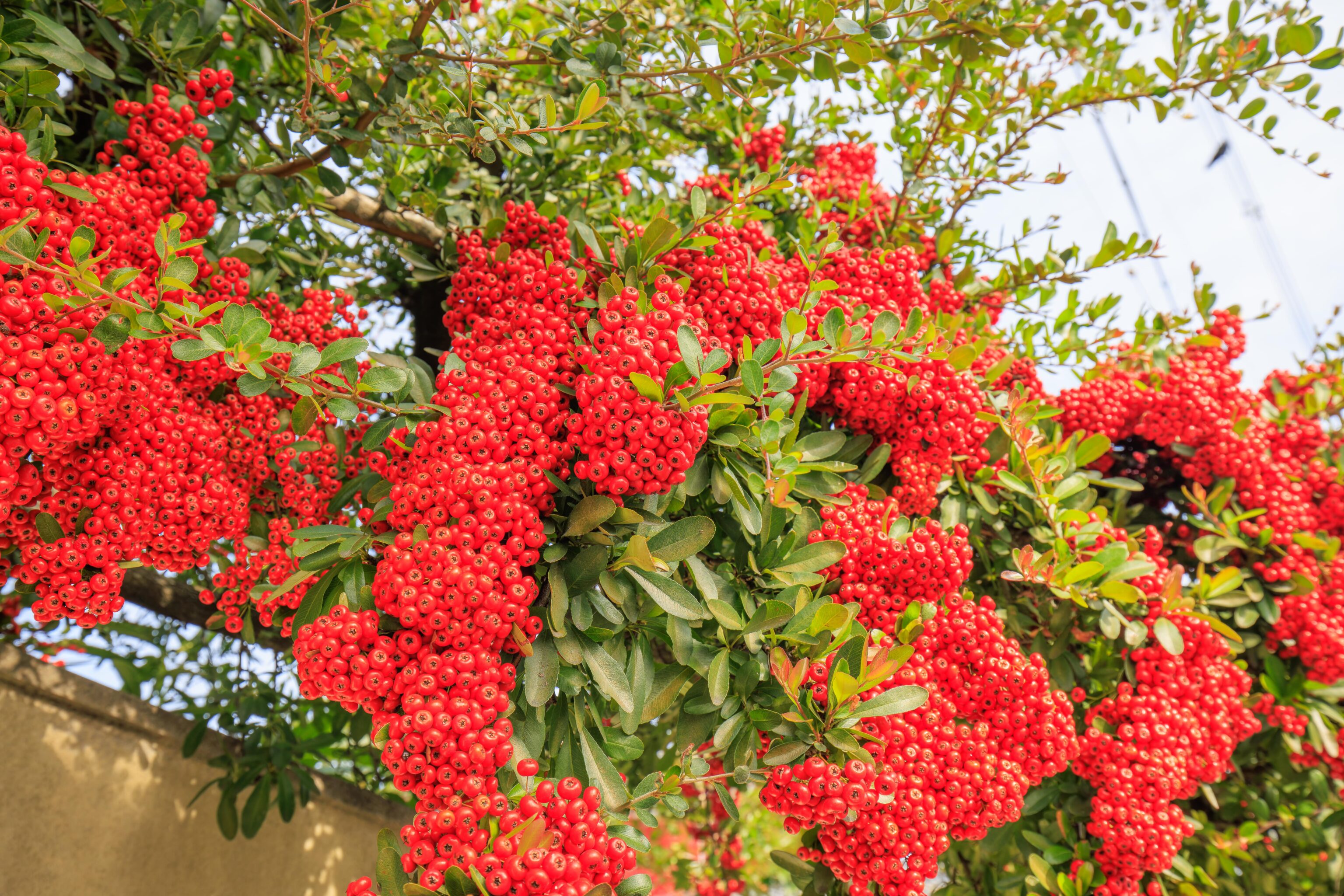
The walk wasn’t particularly scenic or notable in any way as it was just a residential neighborhood. We did pass by this huge clump of red berries though!
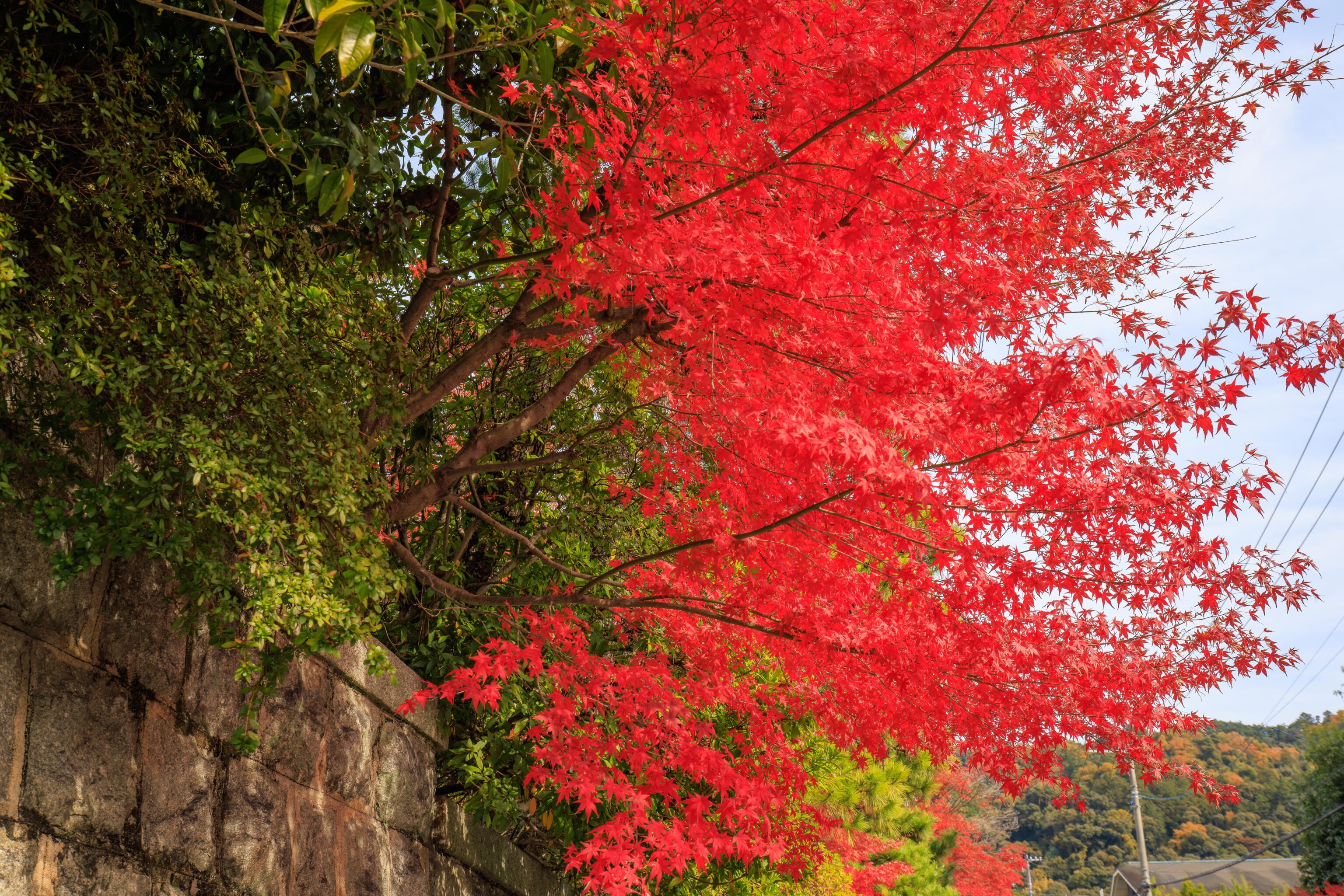
We did also see a nice maple tree!
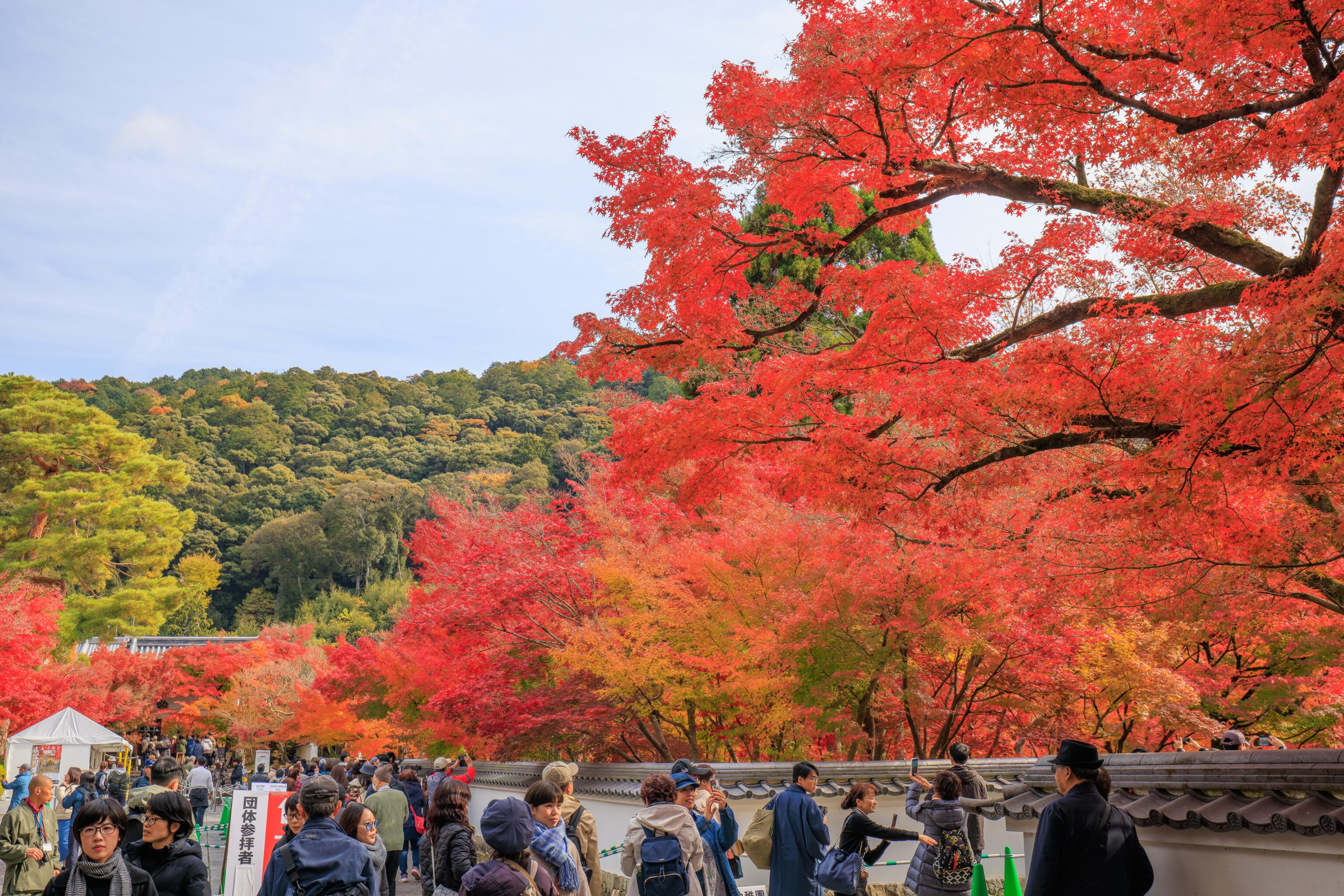
It got much busier as we approached Eikando Zenrin-ji though! When we passed by Okonomiyaki Zen and the few other restaurants in the area, we saw people queued up to eat!
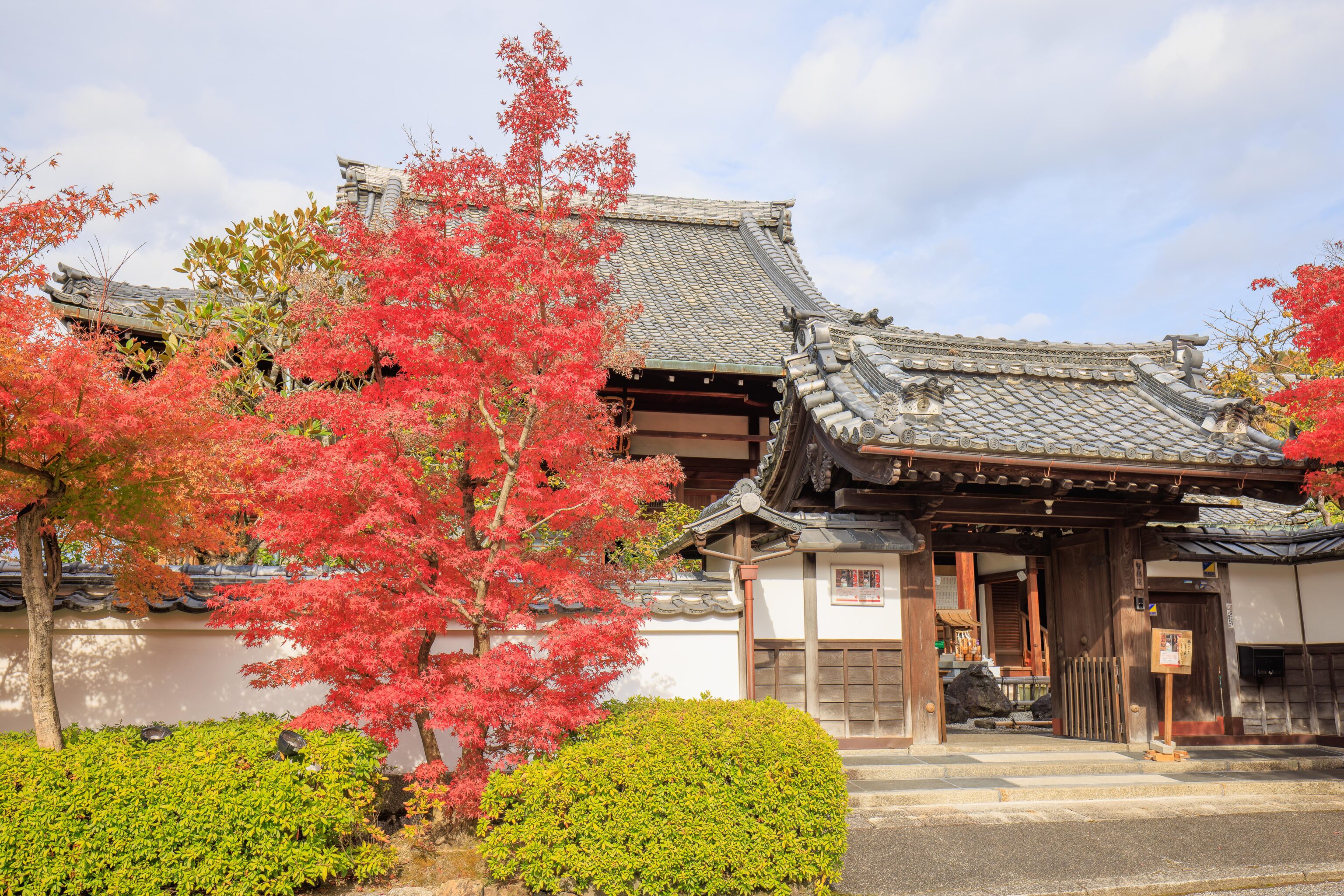
We walked past this temple building as we headed to the ticket office. There was a very short queue although it was setup for more many more people. The way ticket purchasing works here was a bit different than usual. The queue splits near the ticket office where one person goes to buy the tickets while the others bypass the ticket office and wait beyond. It is a sensible system to make the process go faster and reduce crowding.
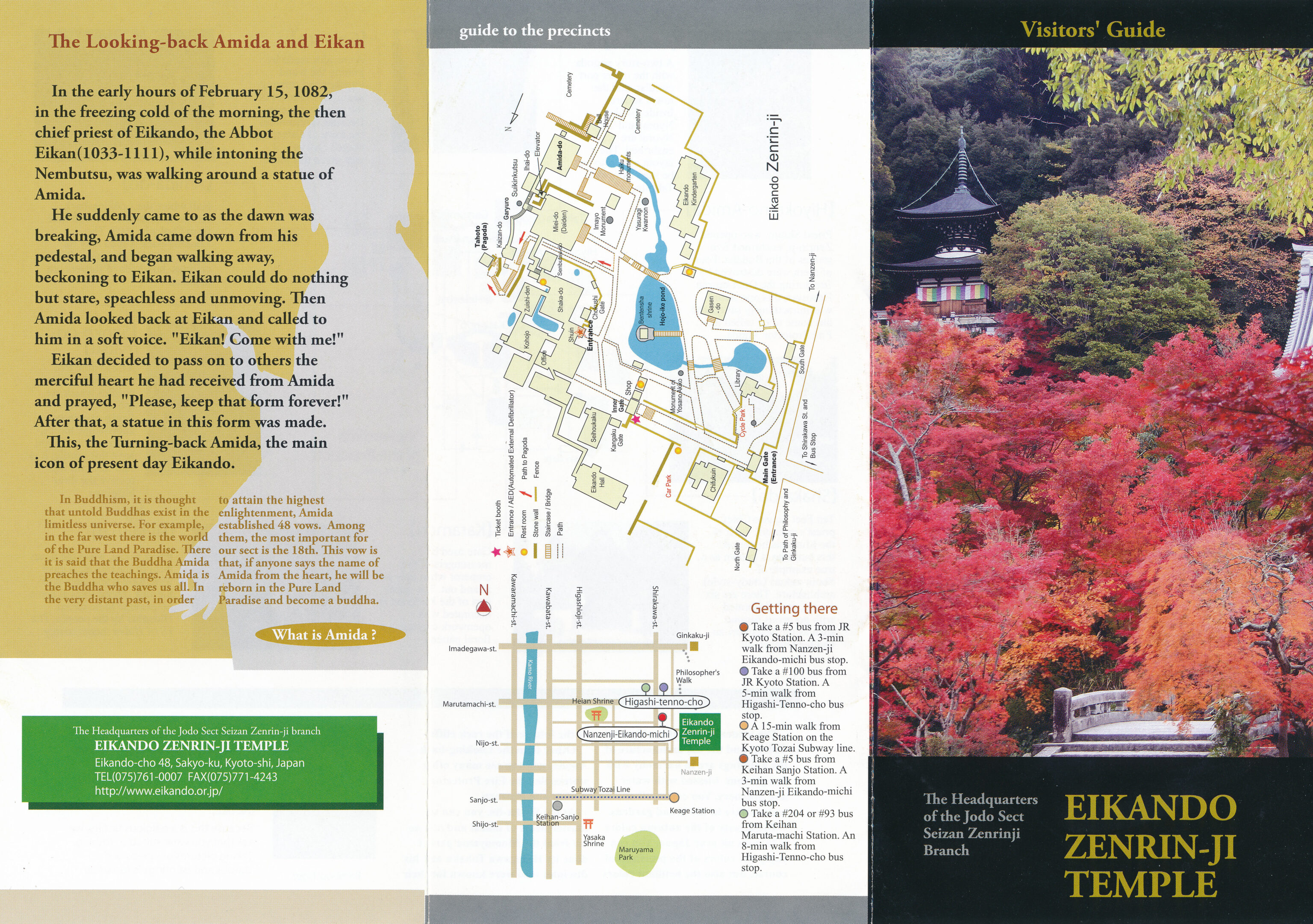
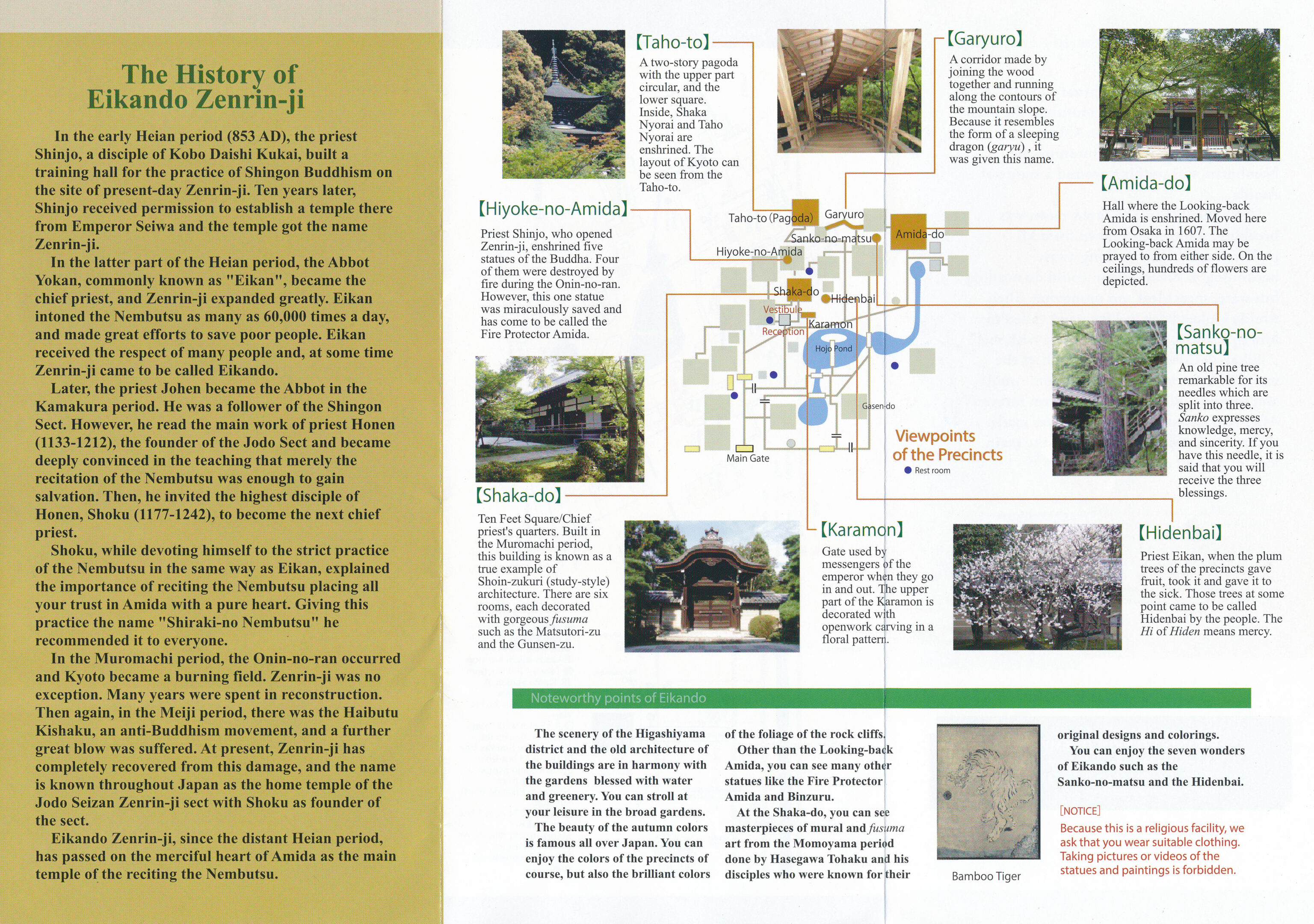
We acquired an English language pamphlet which included a helpful map.
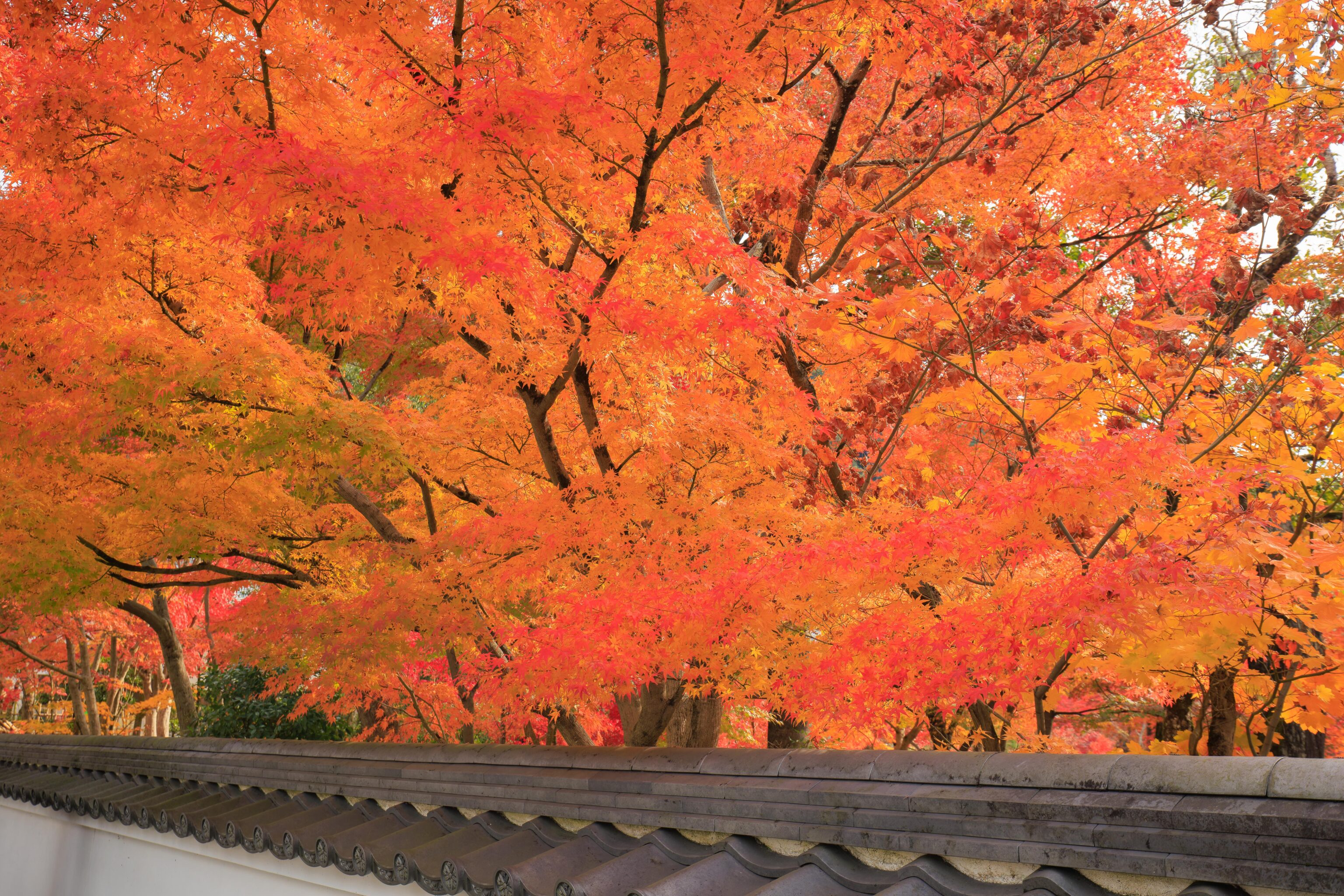
We saw many beautiful maple trees on the other side of a fence, within the ticketed area!
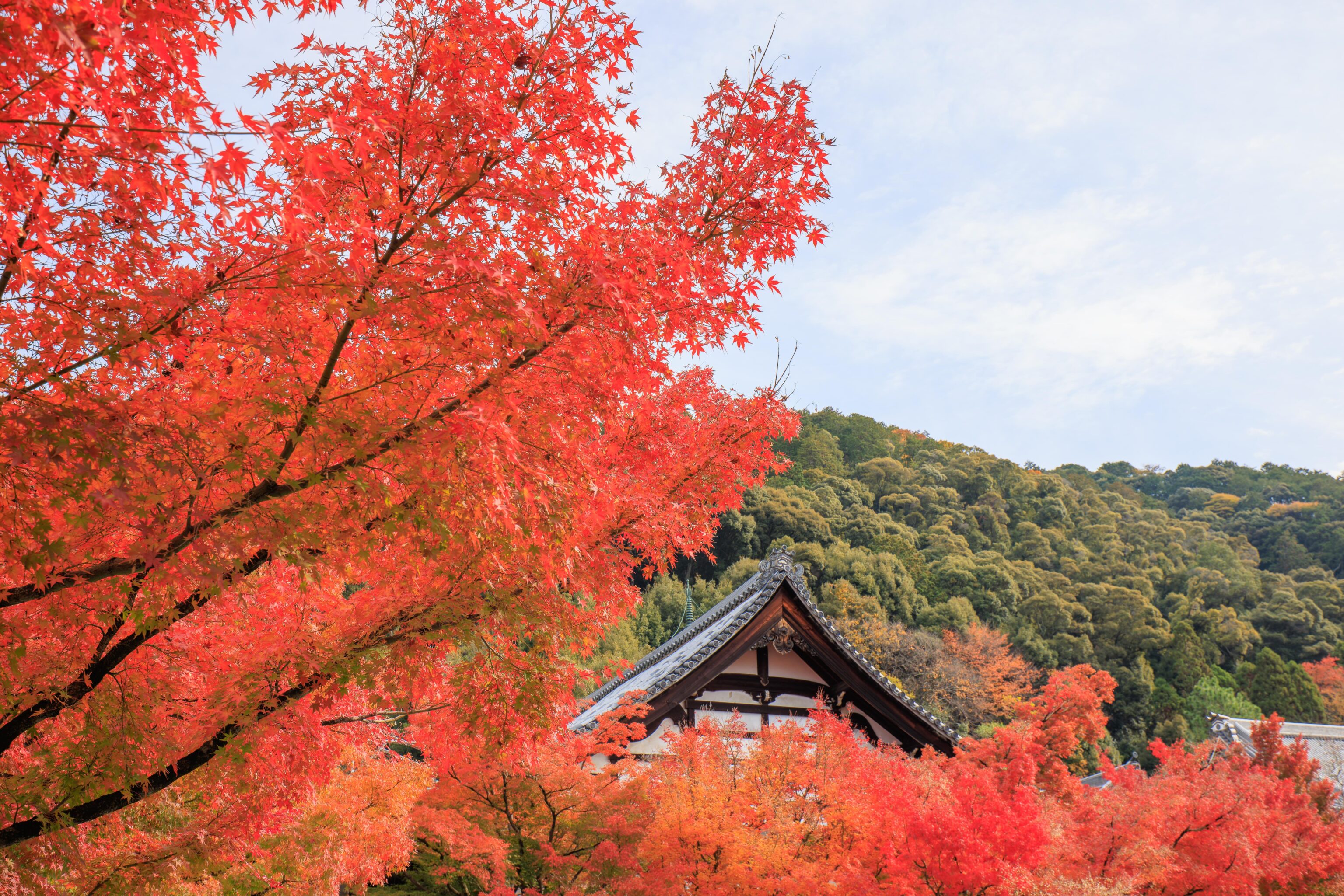
These are the maple trees we’ve been looking for! They were particularly beautiful with the temple buildings in the background. The building here is just to the east of the entrance. We have been here before so our primary focus was really to enjoy the beautiful fall foliage.
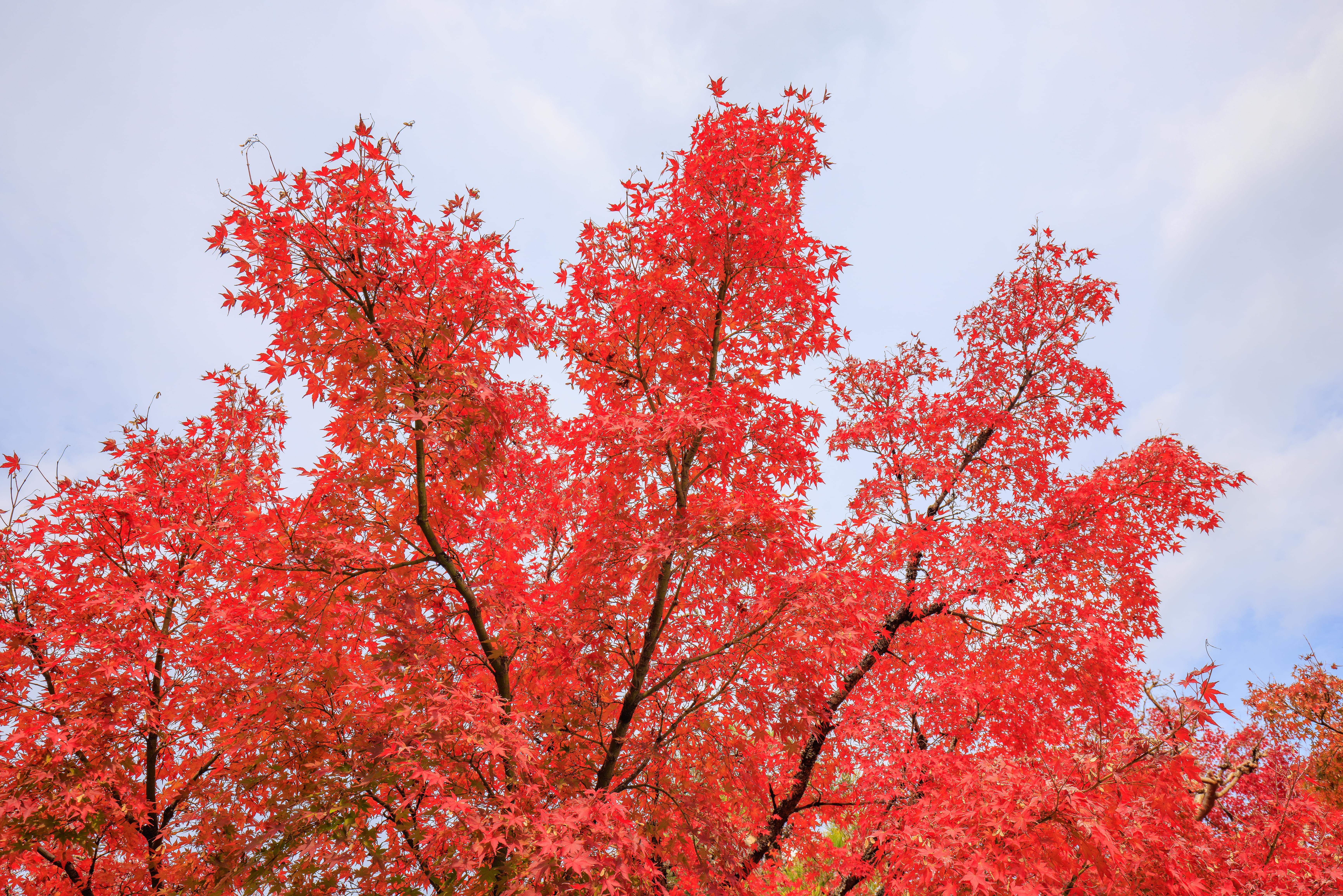
Very beautiful!
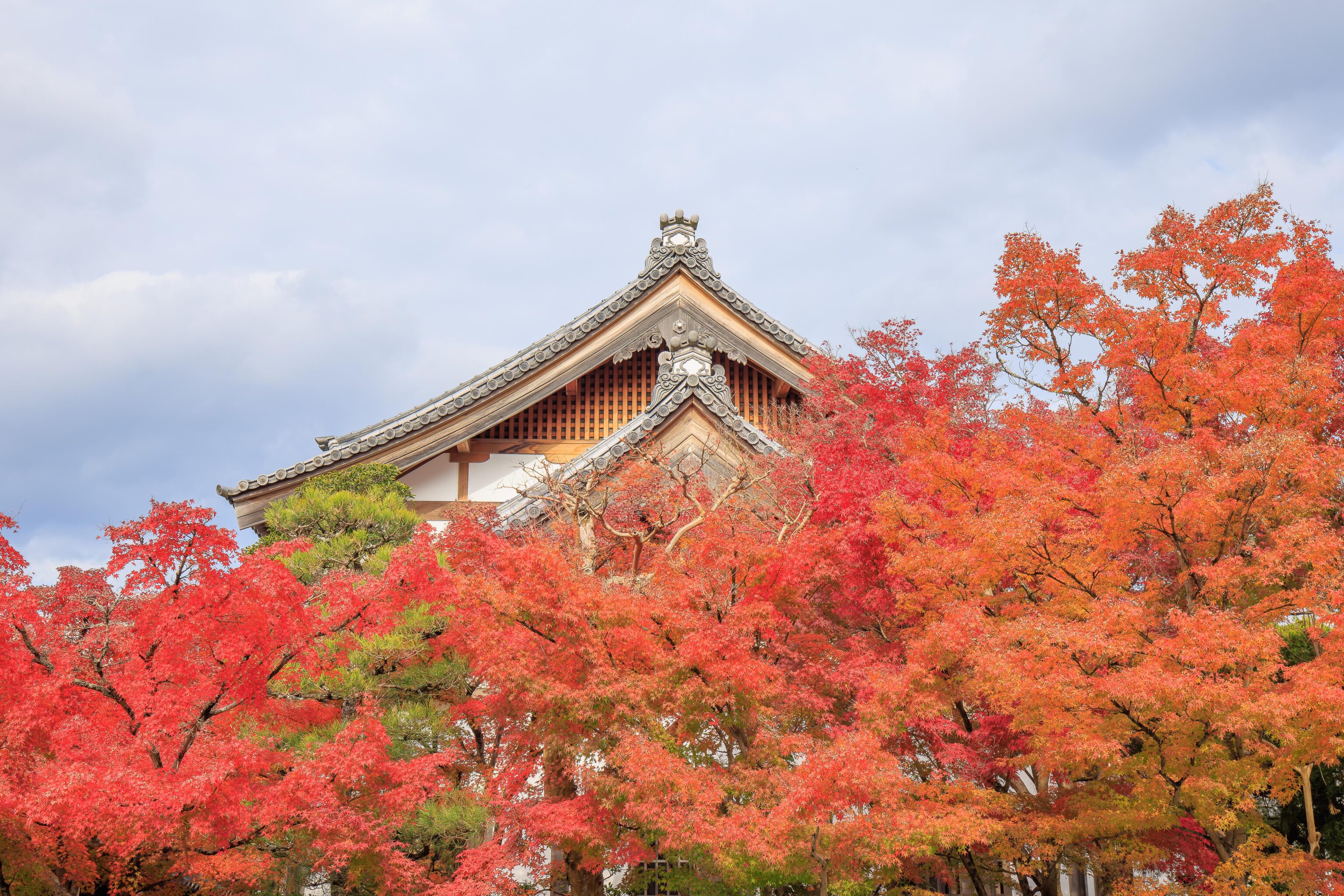
This building is to the north of the entrance.
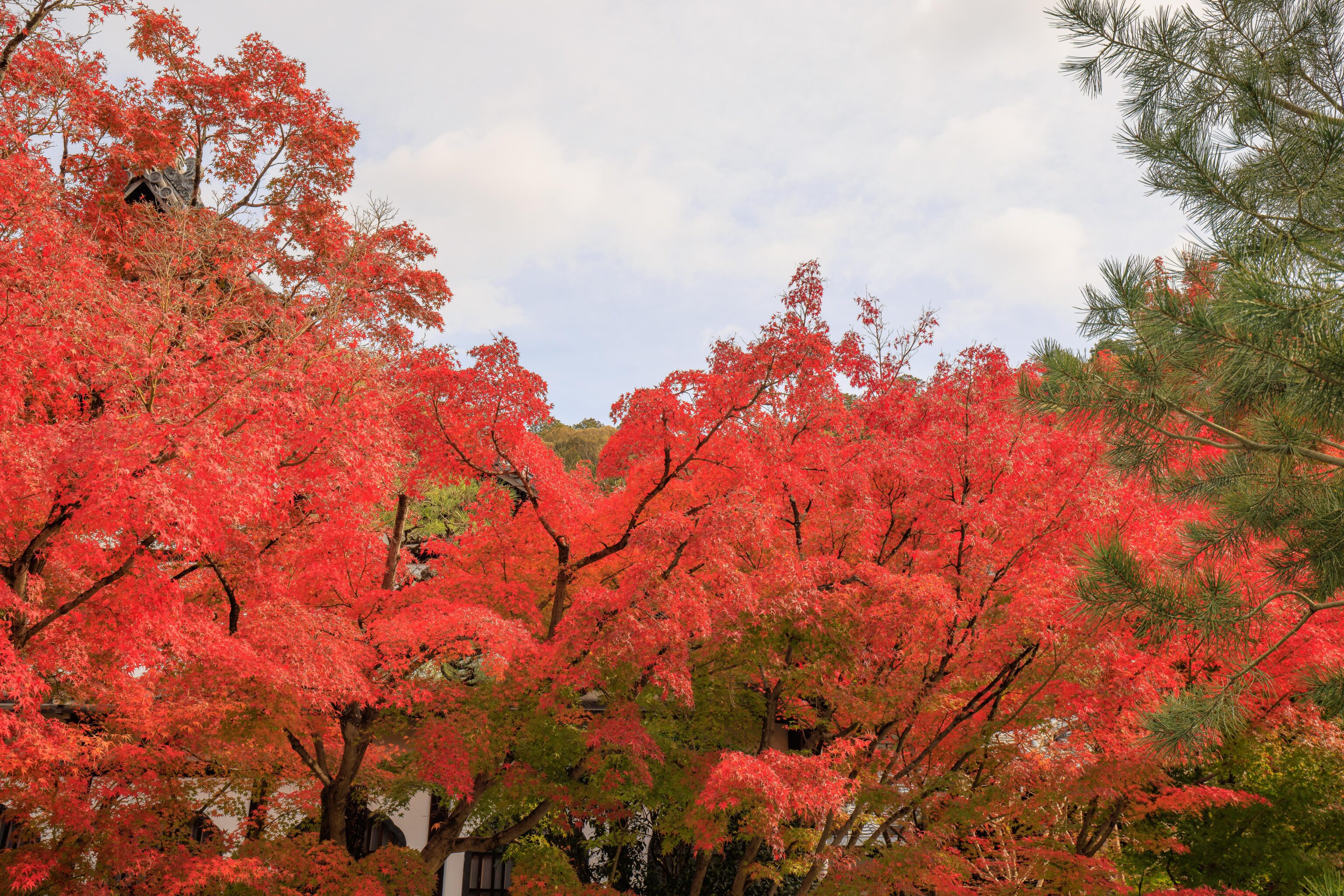
More beautiful maples!
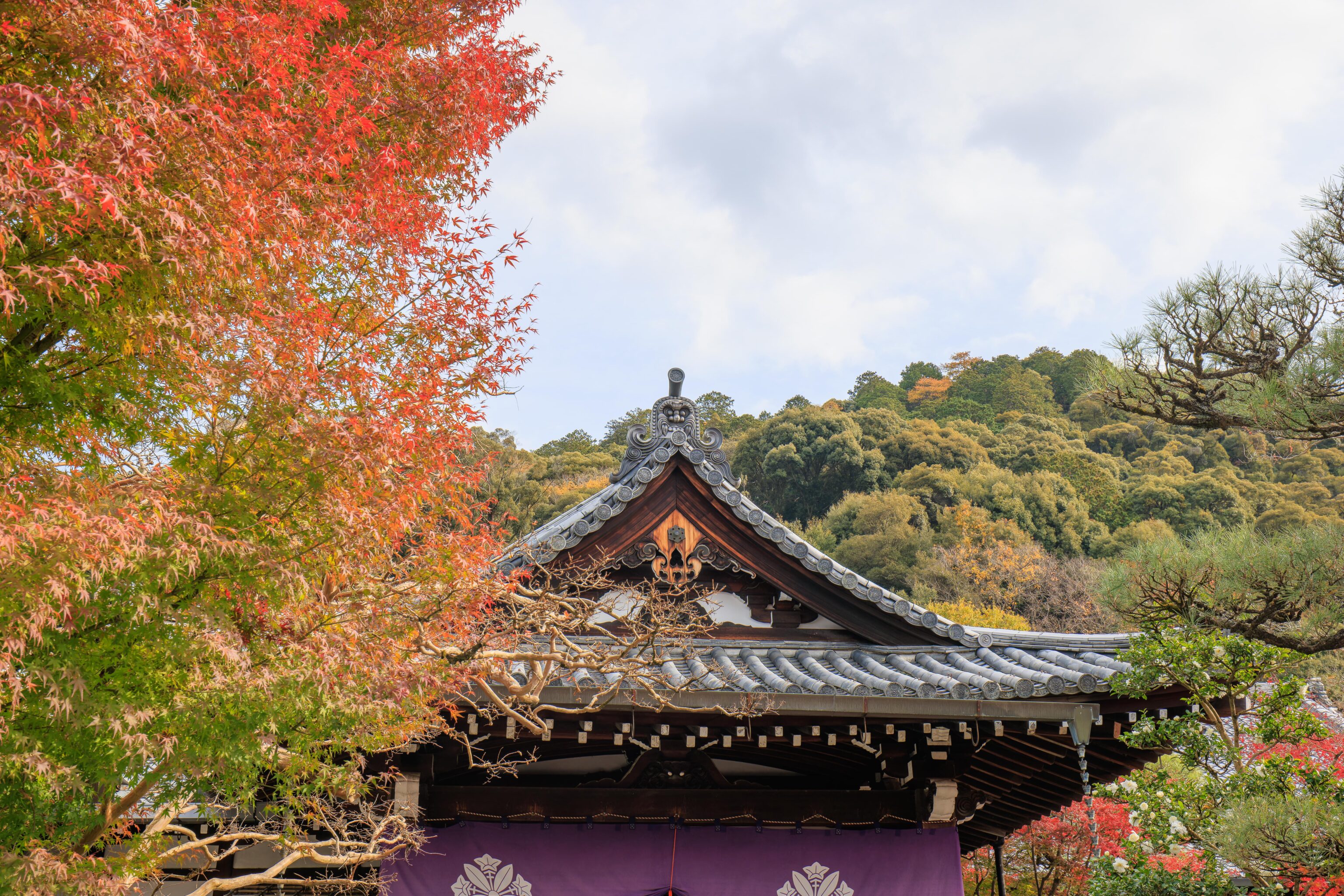
There were a few trees that had completely dropped their leaves as well as others that did not, particularly higher up on the mountainside where there didn’t seem to really be any maple trees.
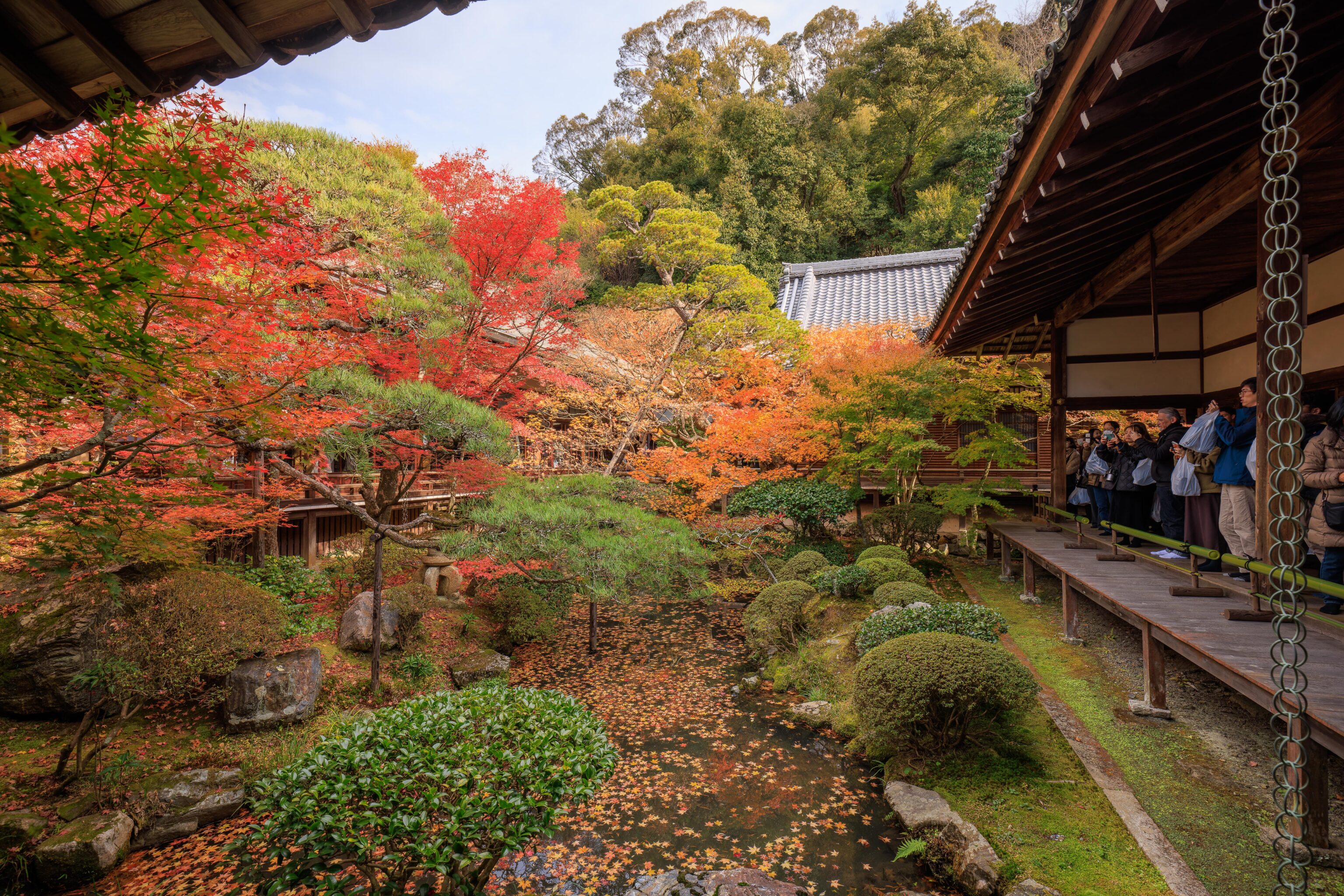
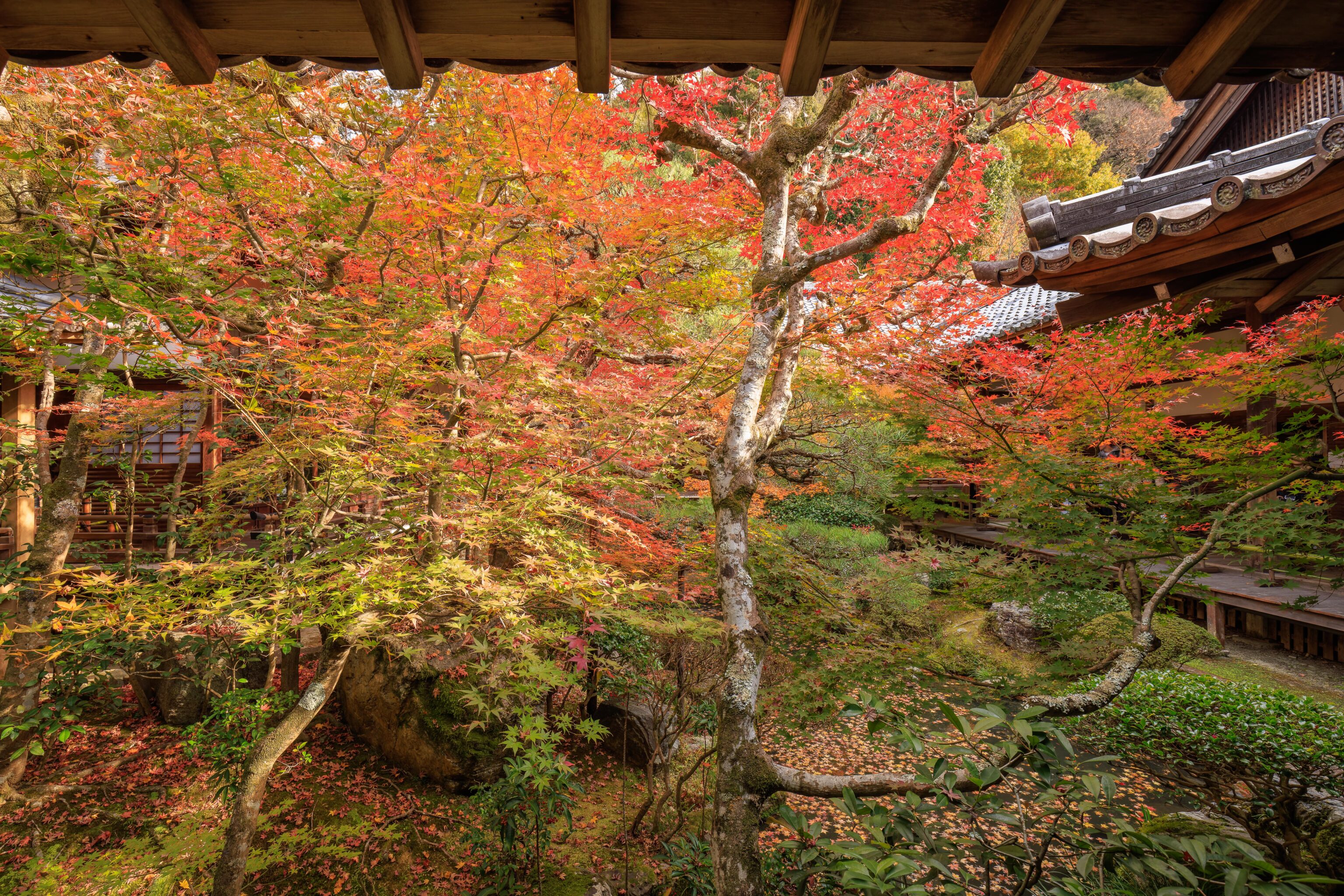
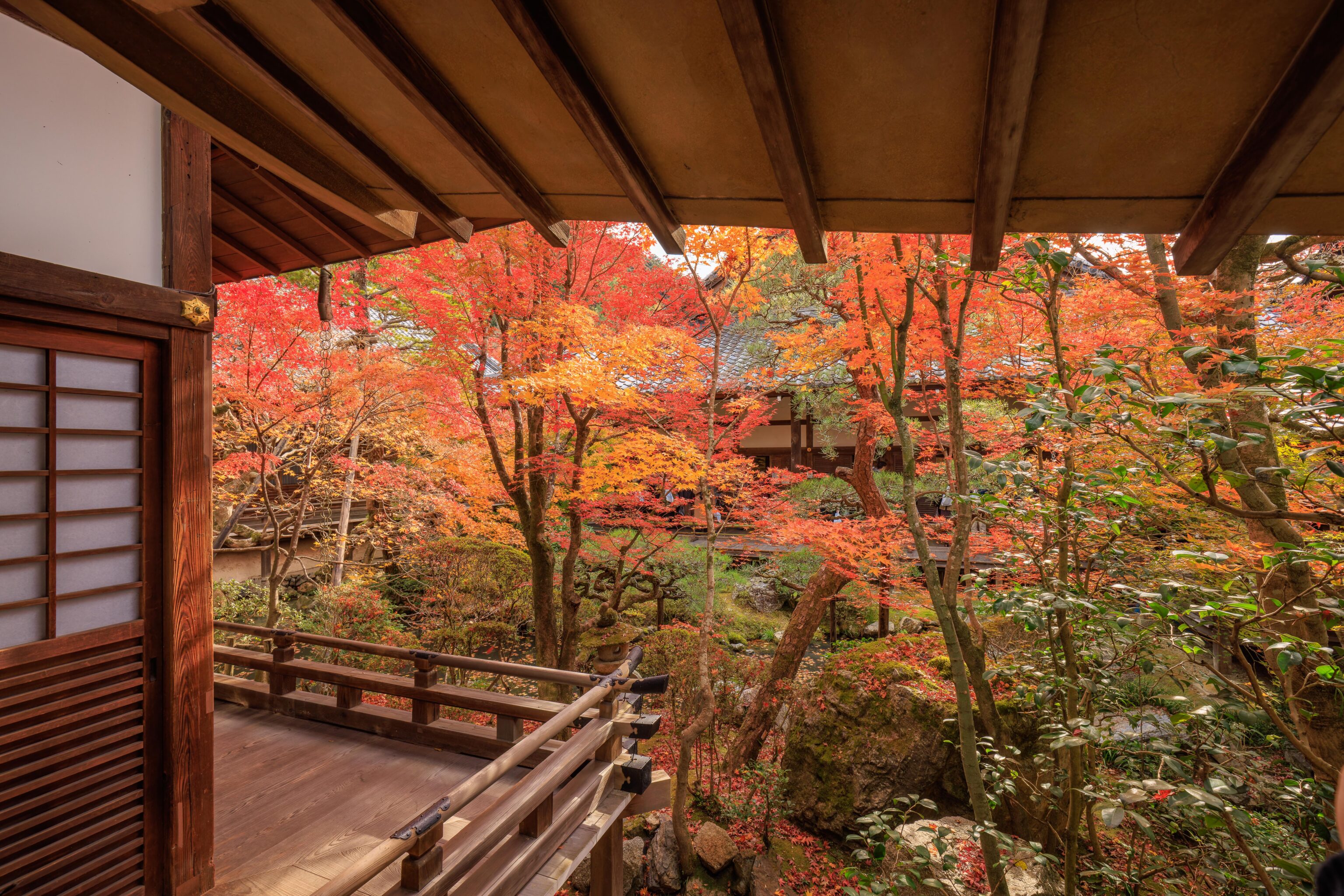
The tour route includes areas in and around some temple buildings. Generally, shoes are not permitted while walking on indoor wooden or tatami temple floors. In this temple, shoes are placed in a plastic bag and carried with you. Some temples have shoe racks or shelves while places that aren’t very busy may simply have a place on the ground to leave one’s shoes.
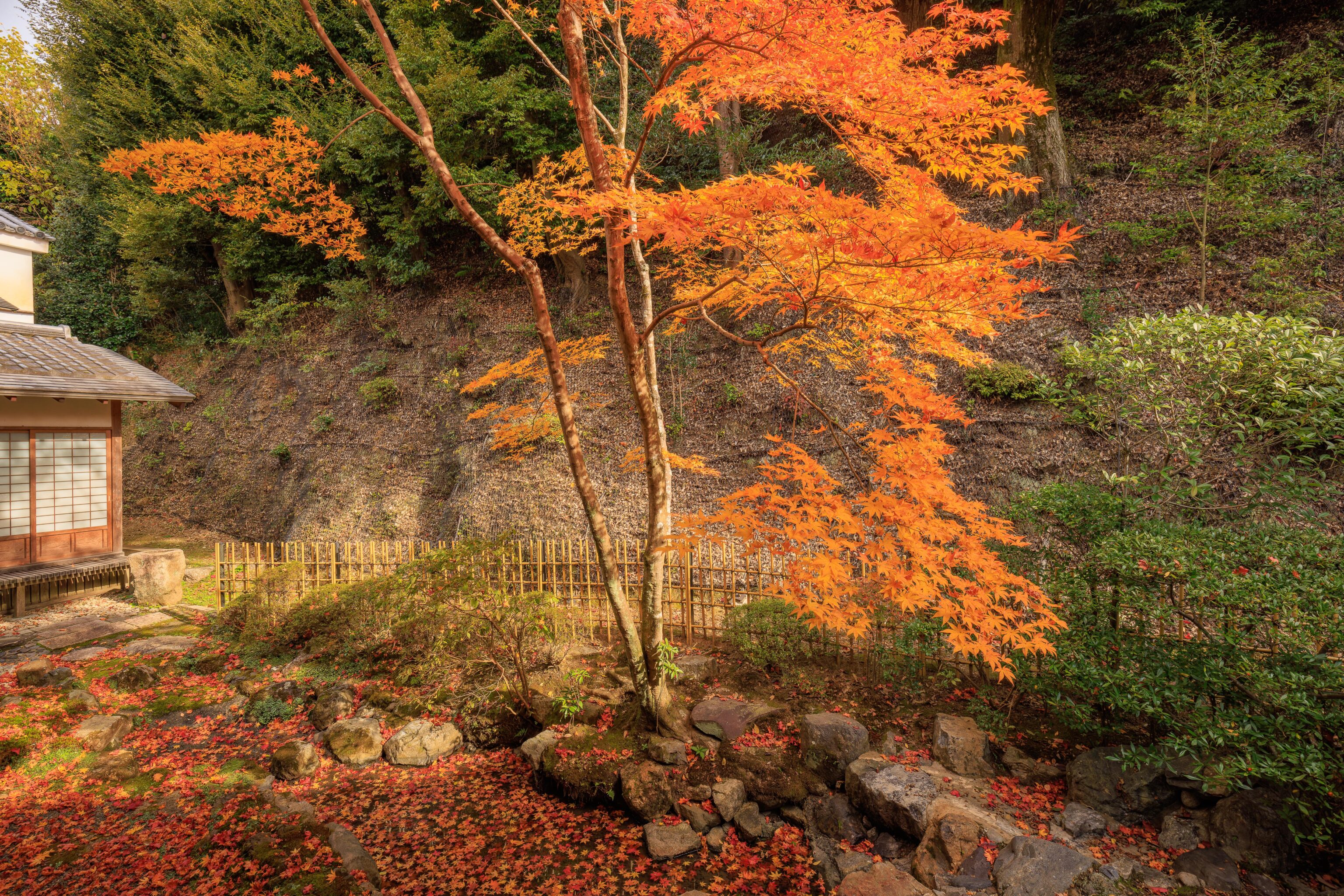
While most of the Japanese maples end up with red leaves, some seem to stay yellow or orange while others seem to fully transition from yellow to orange to red. This one seems to be partial orange and yellow based on the appearance of the tree and the fallen leaves.
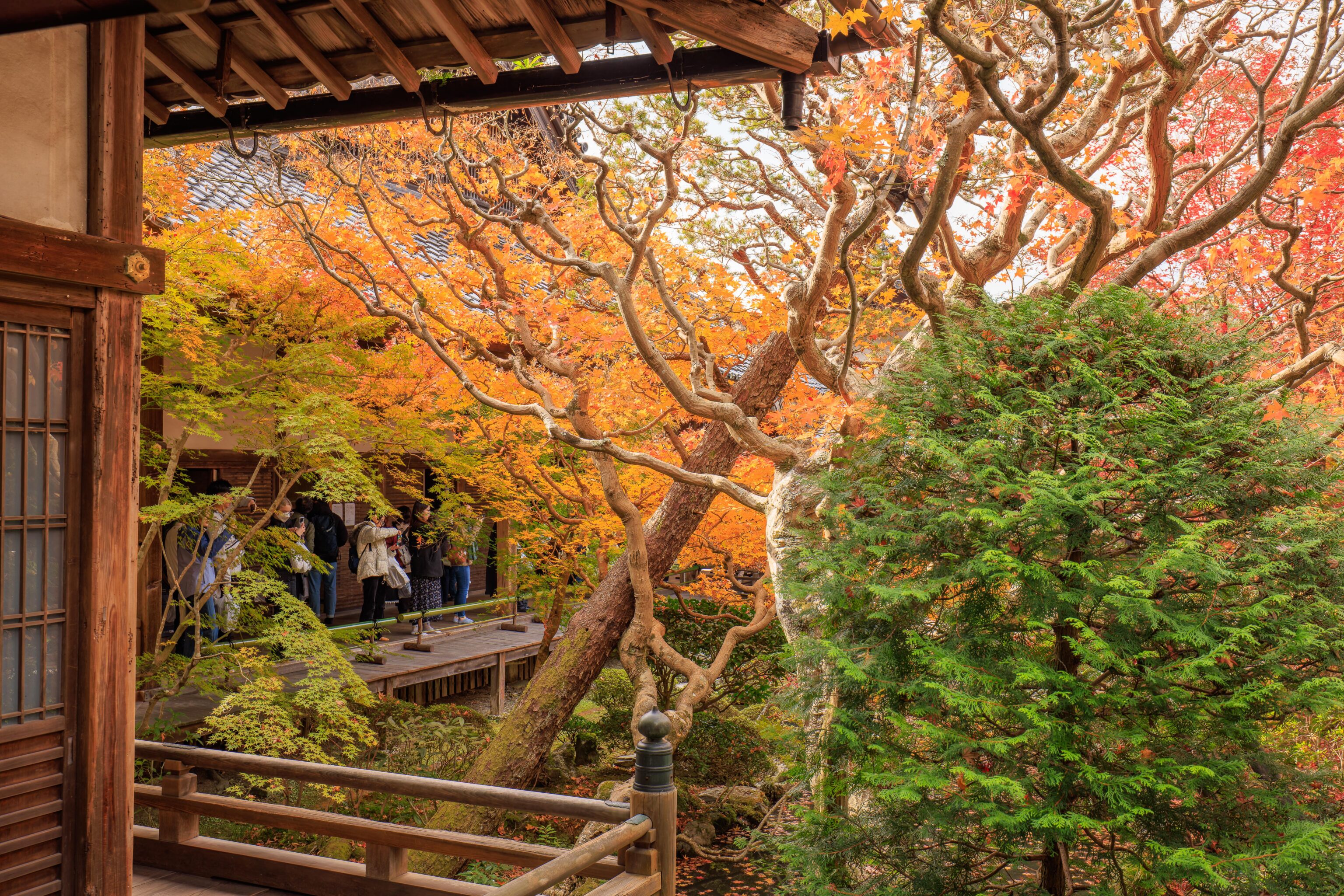
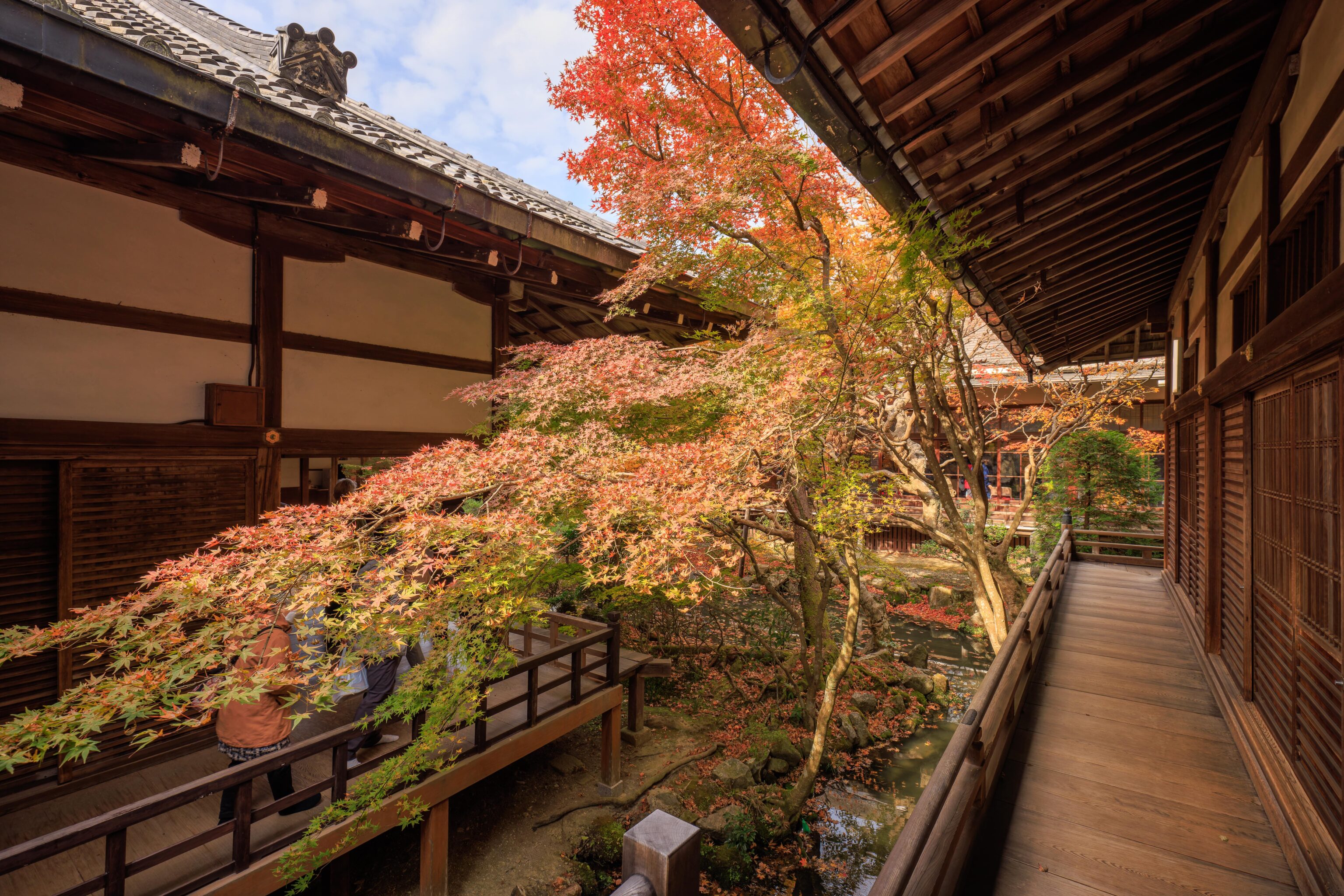
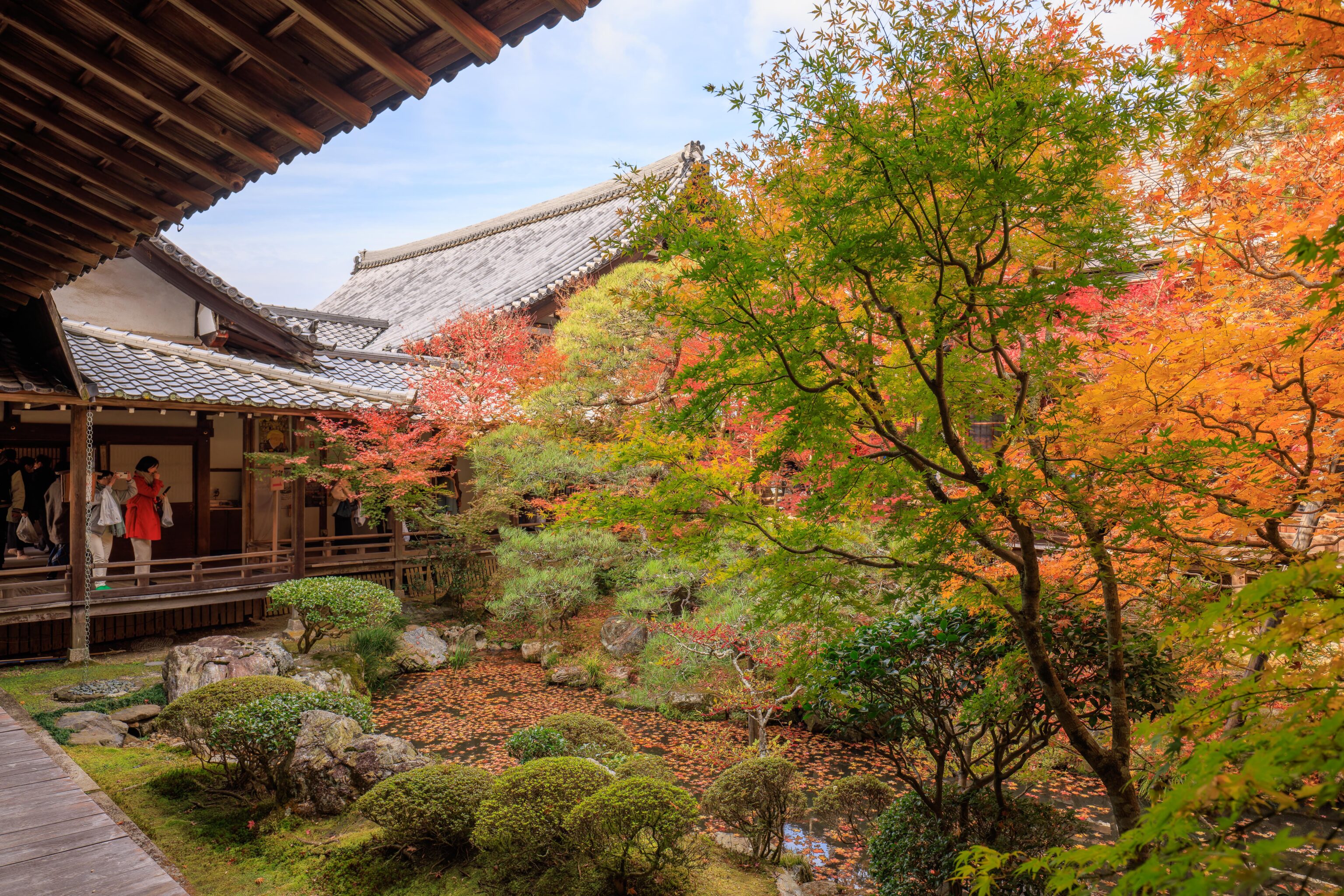
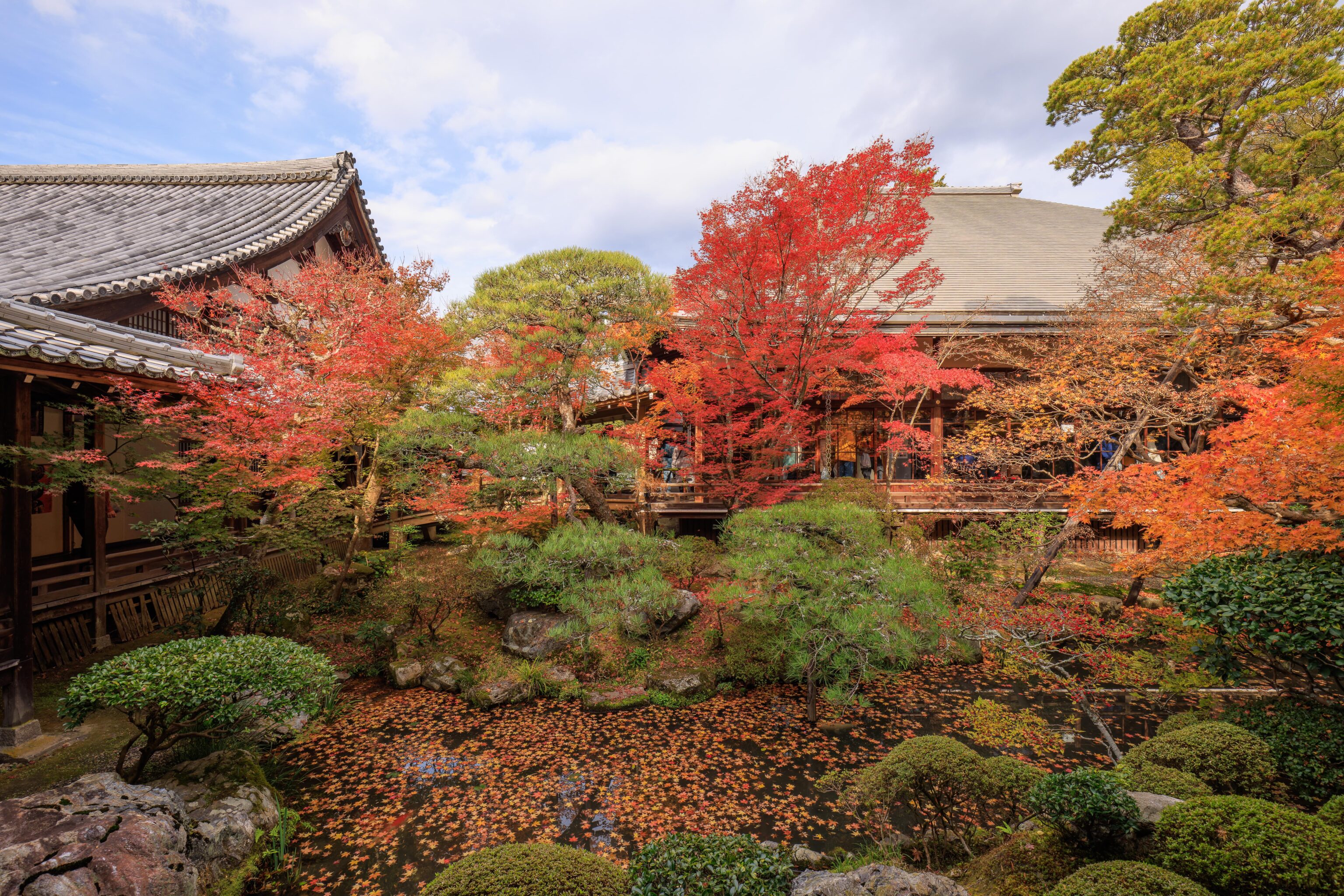
Eikando Zenrin-ji has a very large indoor area that can be toured. Photography is generally limited to outdoor spaces.
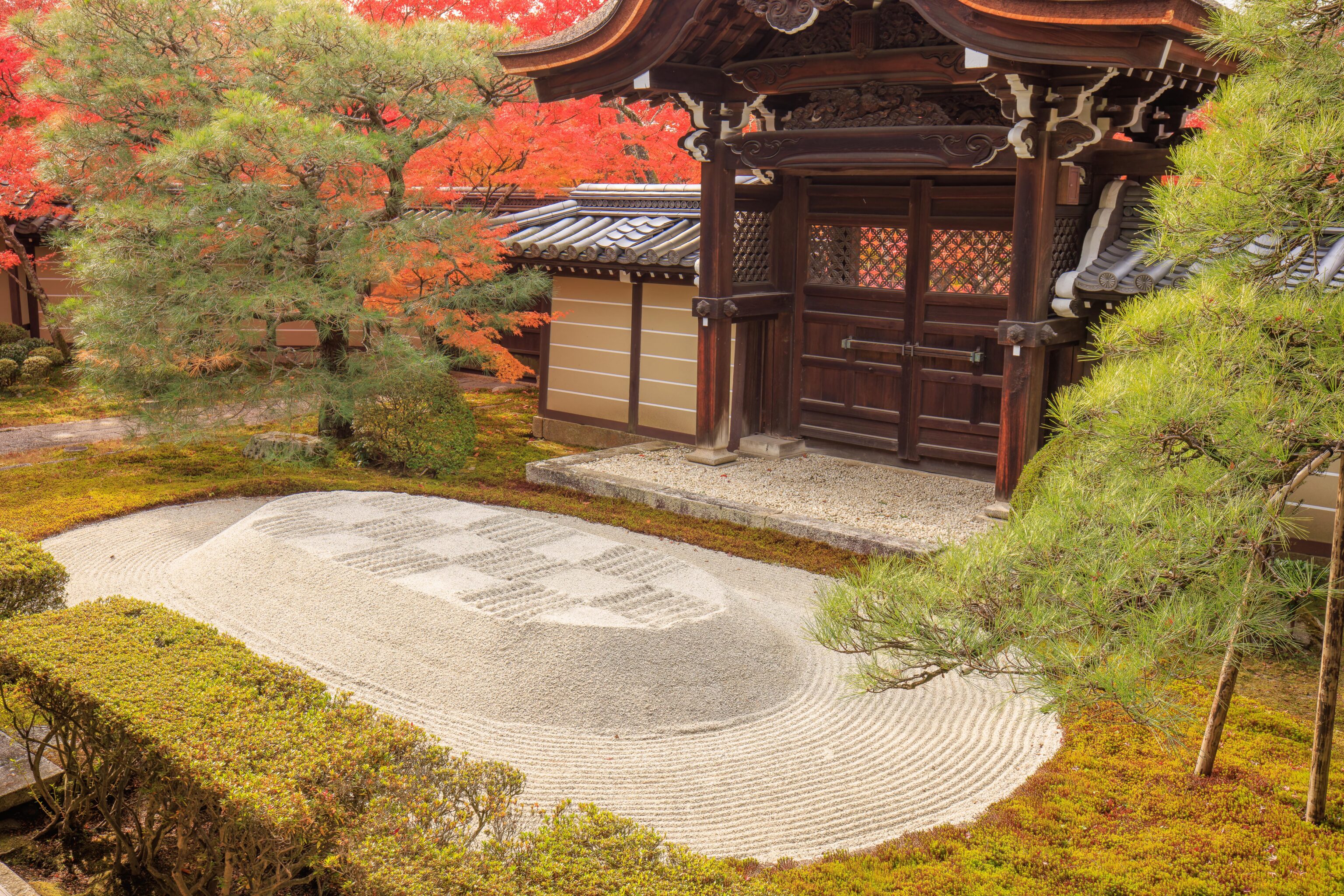
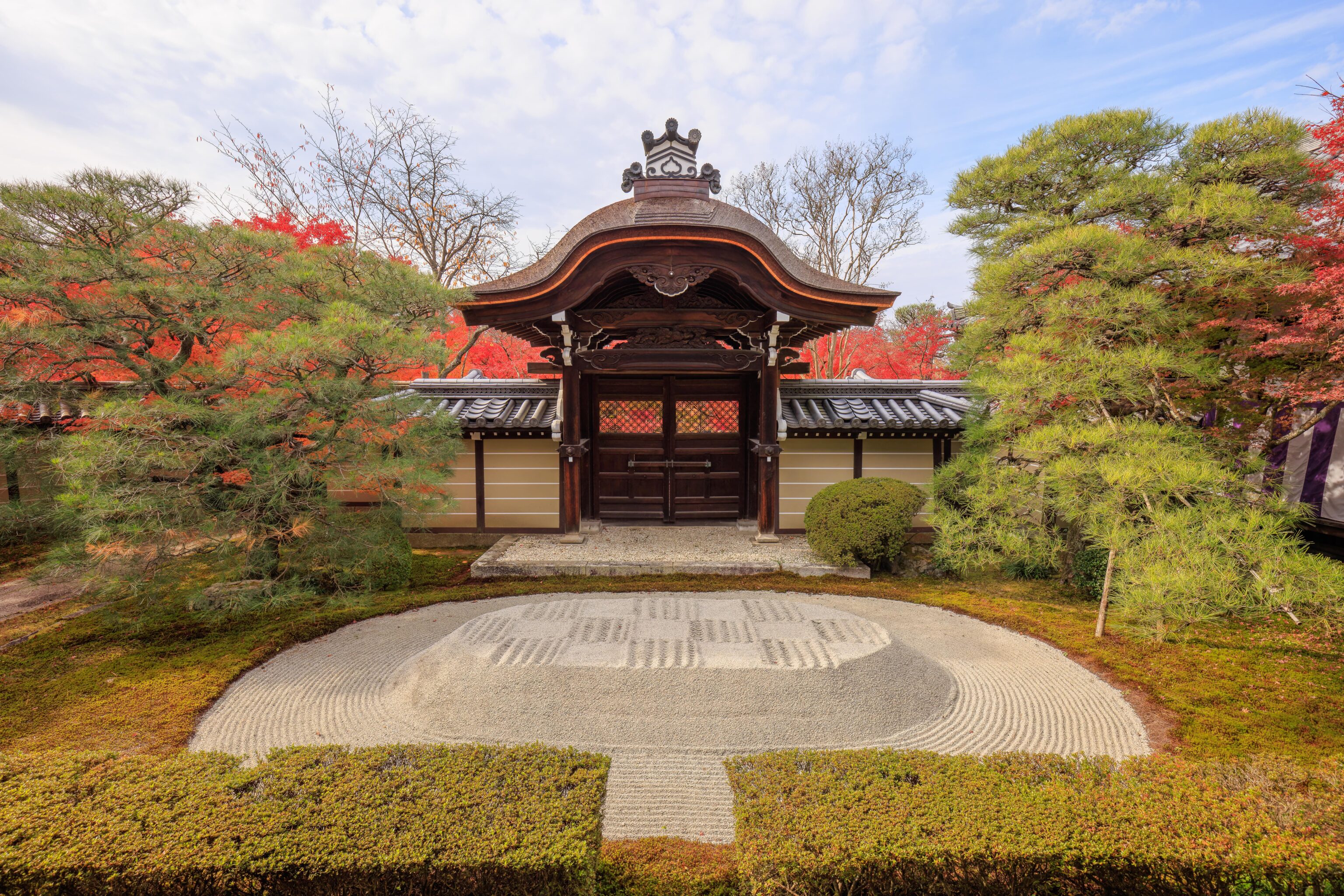
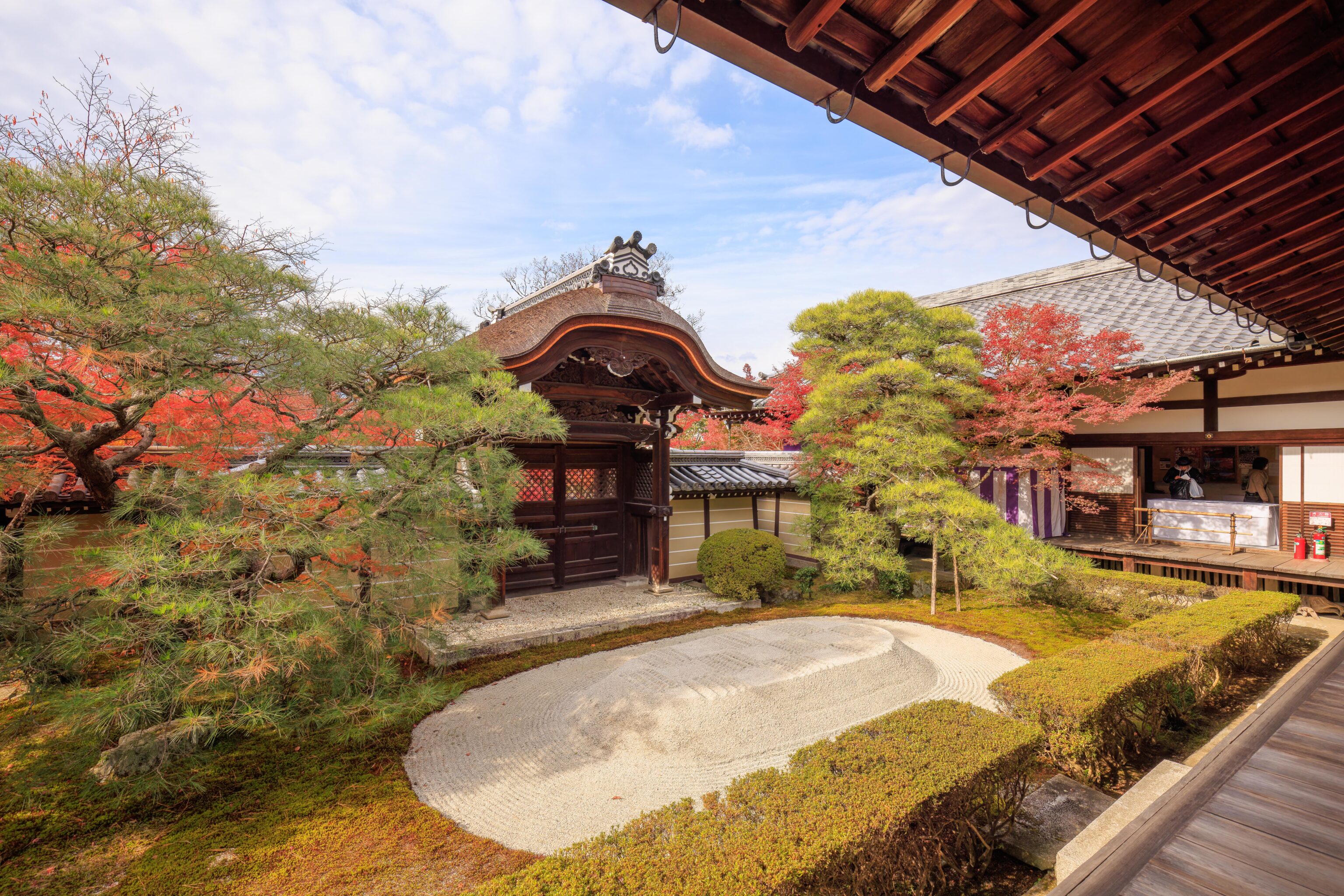
A common feature among some temples is some sort of formal gate area like this one. There was a simple elevated mound of sand with a checkerboard pattern atop, a bit reminiscent of what we just saw at Ginkaku-ji, though without the volcano that is not a volcano and the Silver Pavilion that is not a silver pavilion.
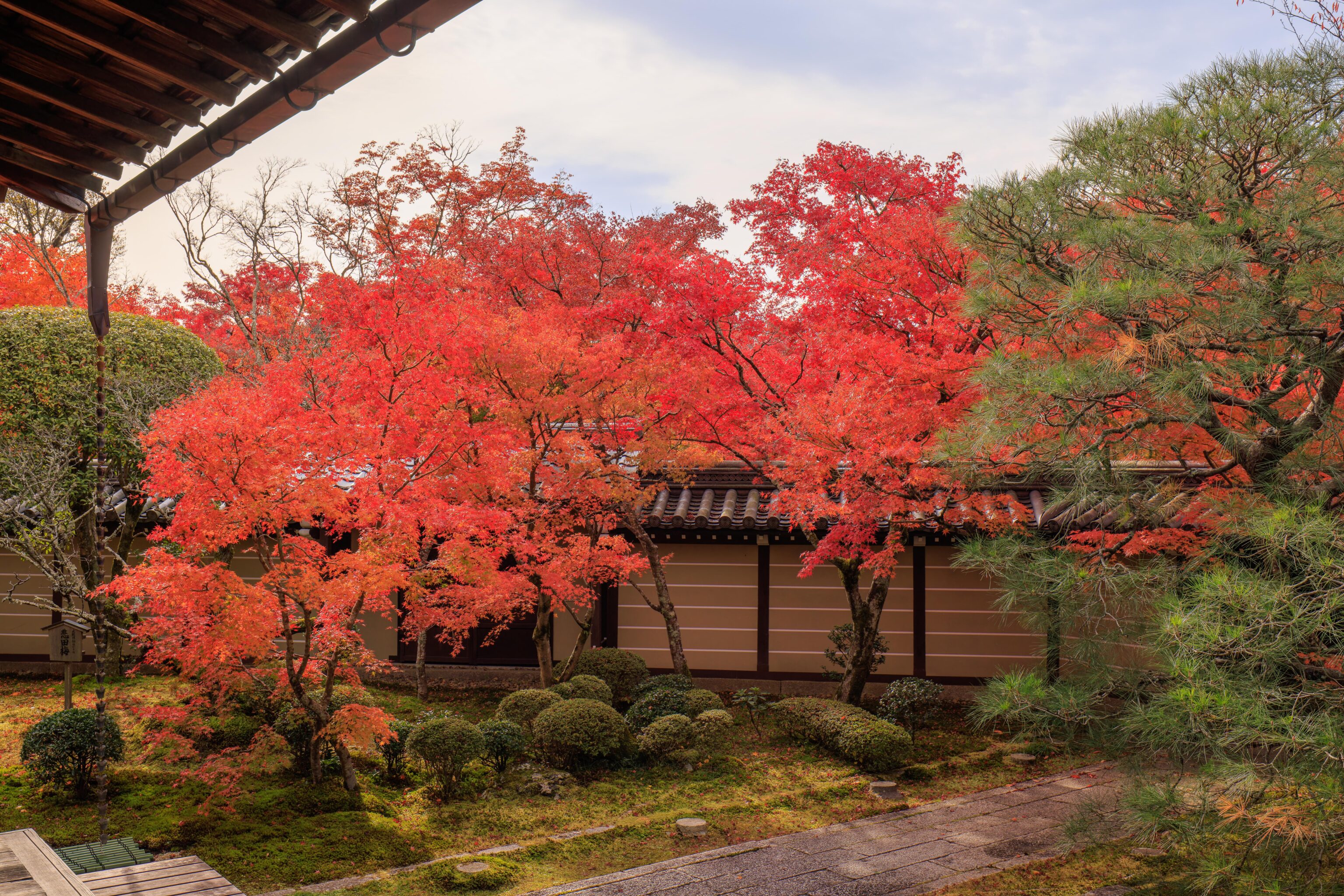
There are some nice maples near the gate as well.
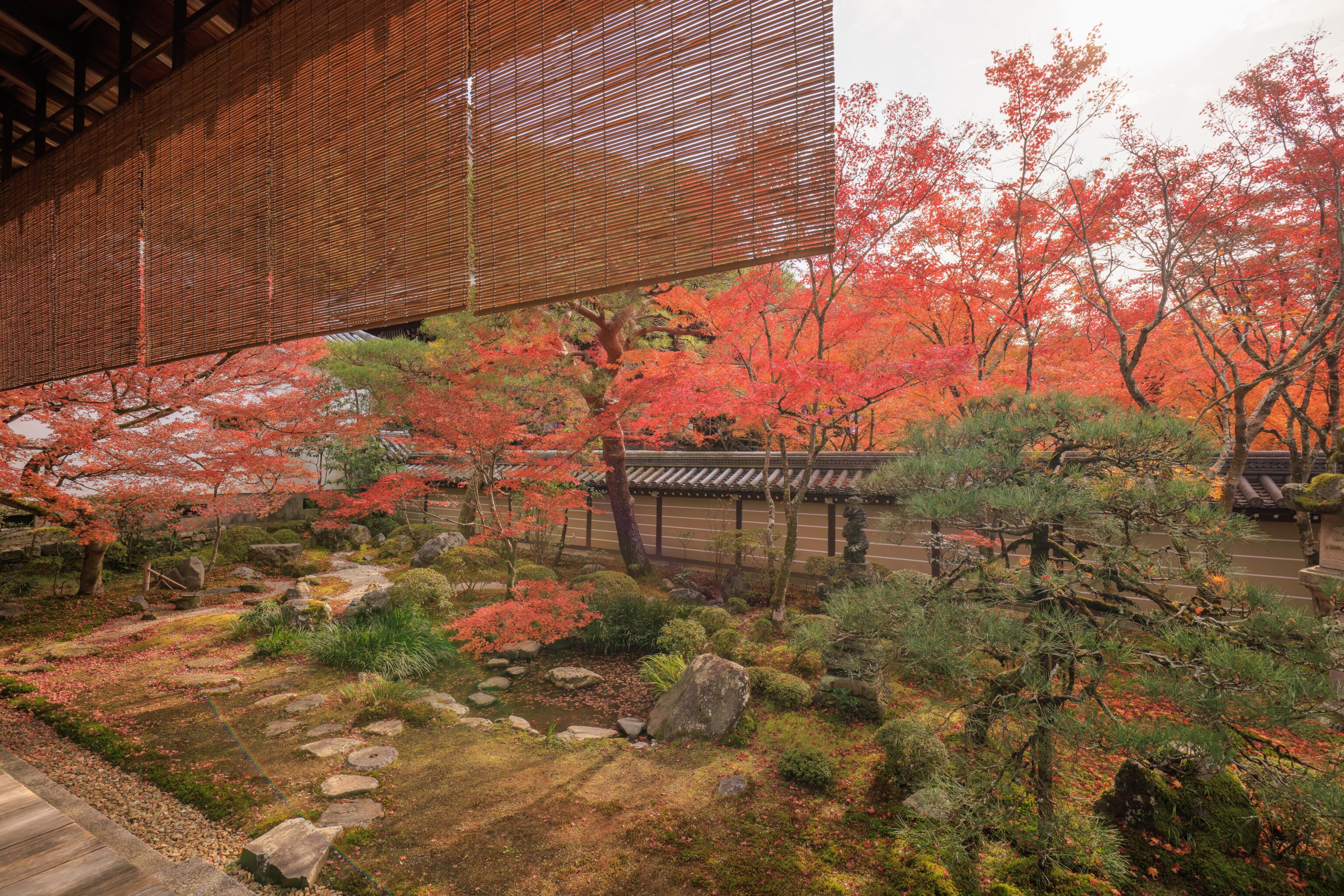
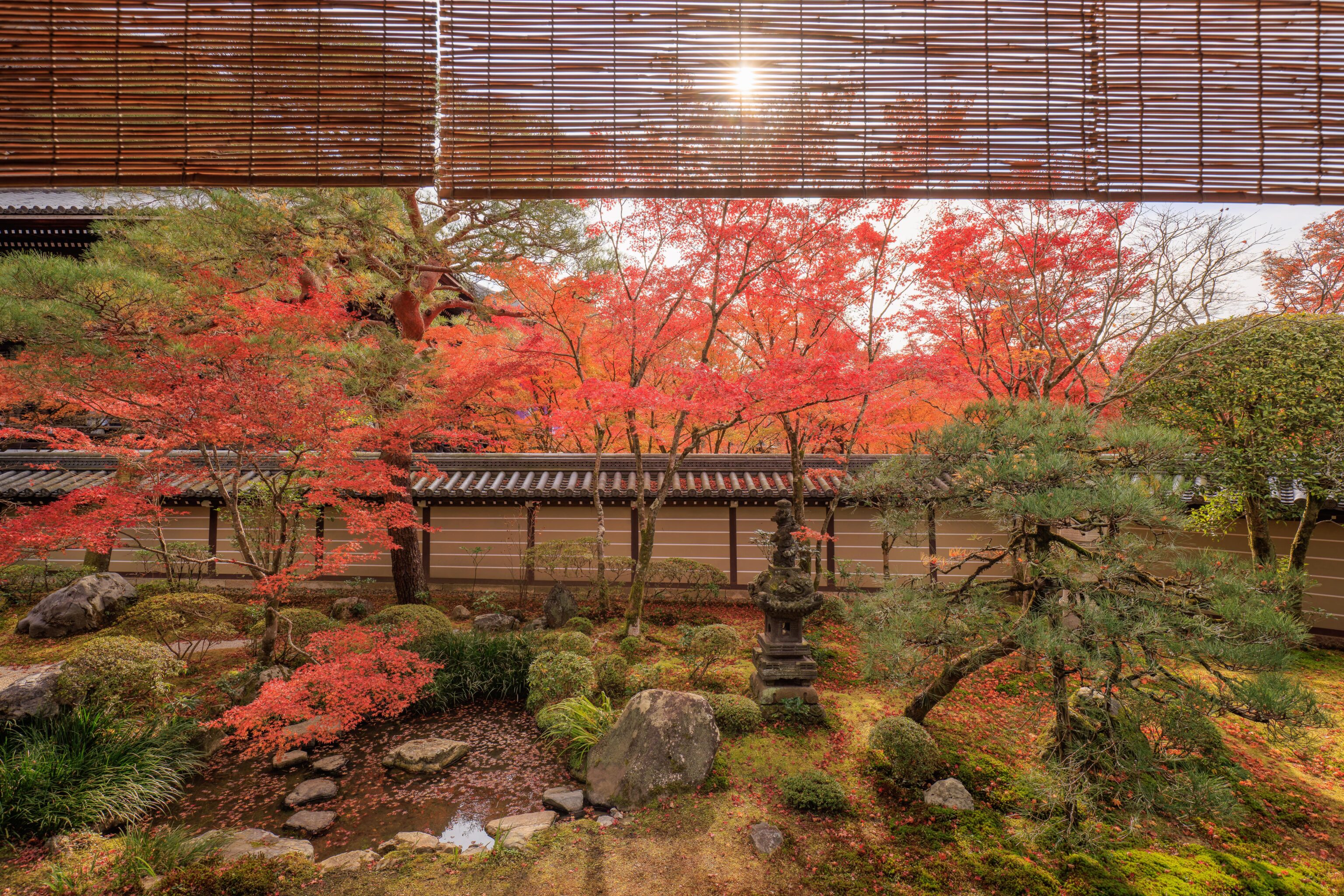
This little interior garden area continues around to the side of the building.
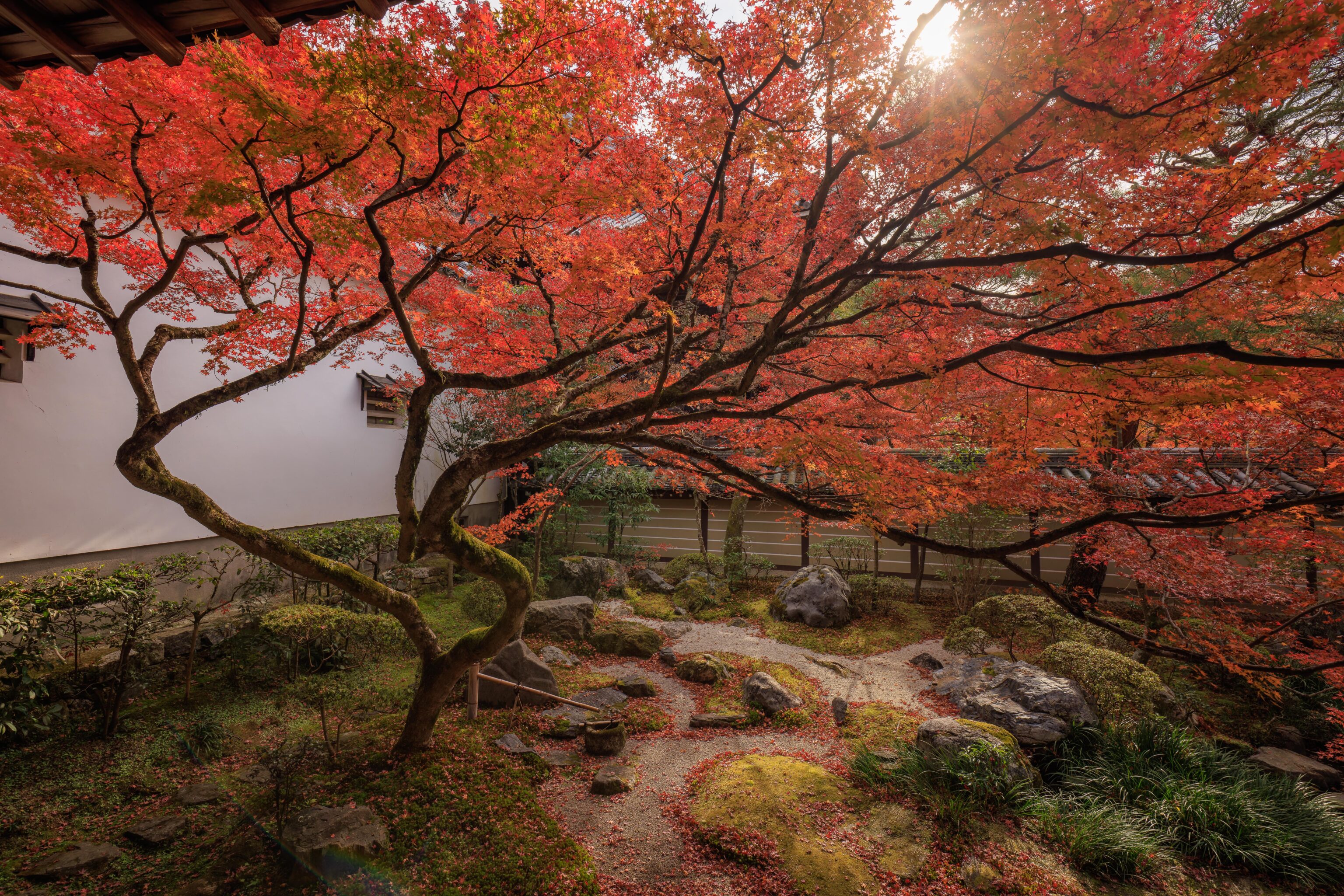
There are many temple buildings here that are very close together.
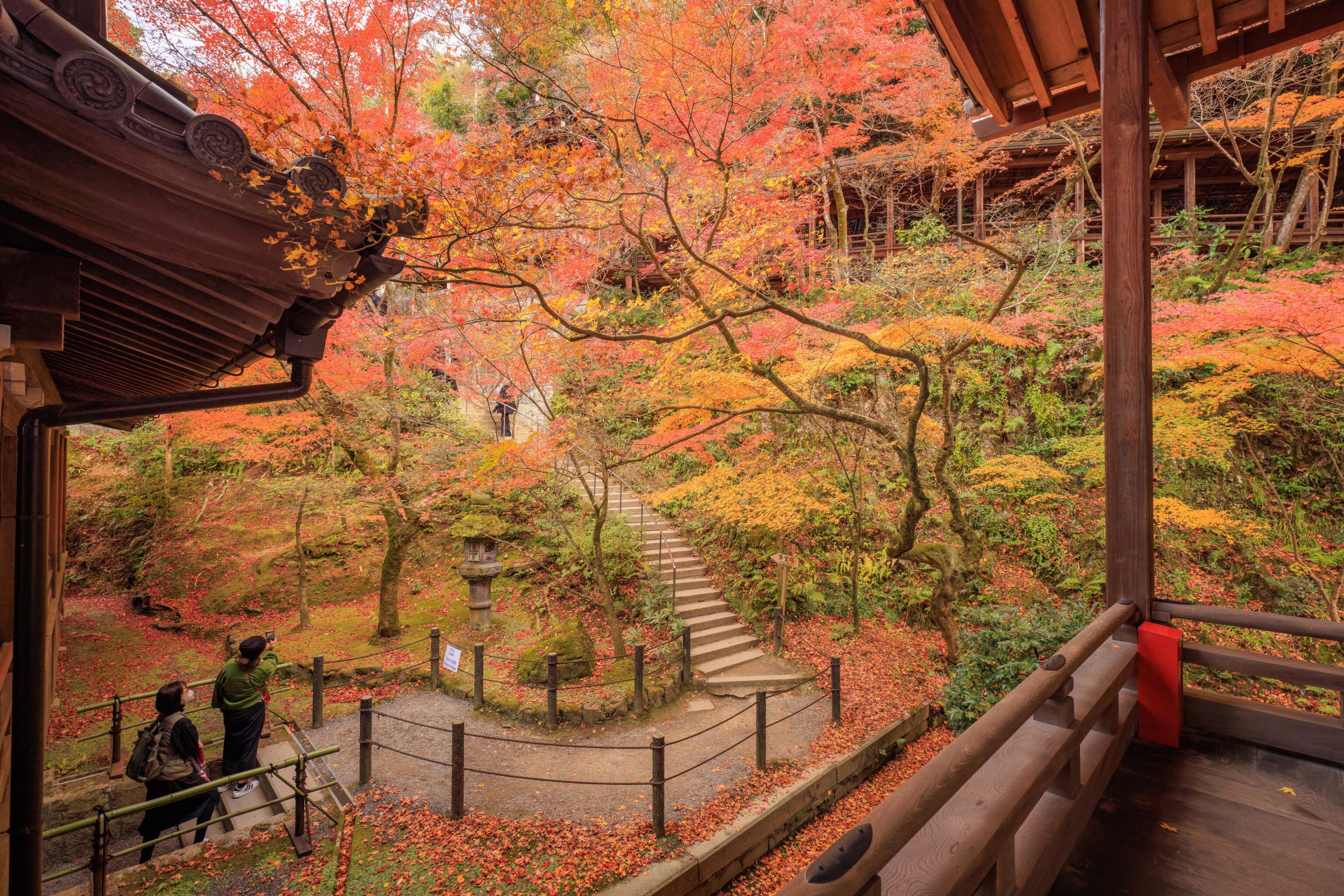
We continued along the interior route, passing over an outdoor path that leads up to a viewpoint with pagoda.
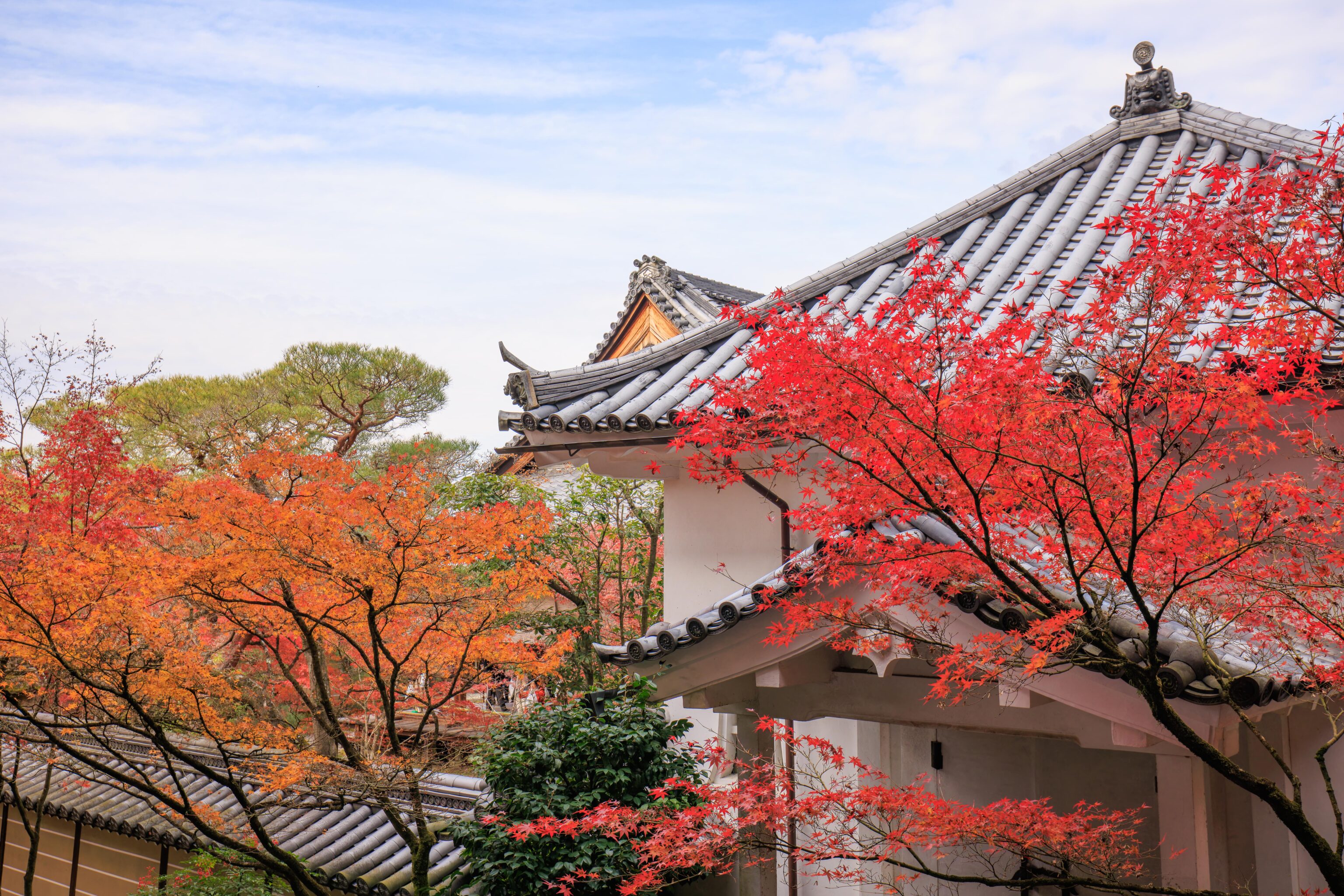
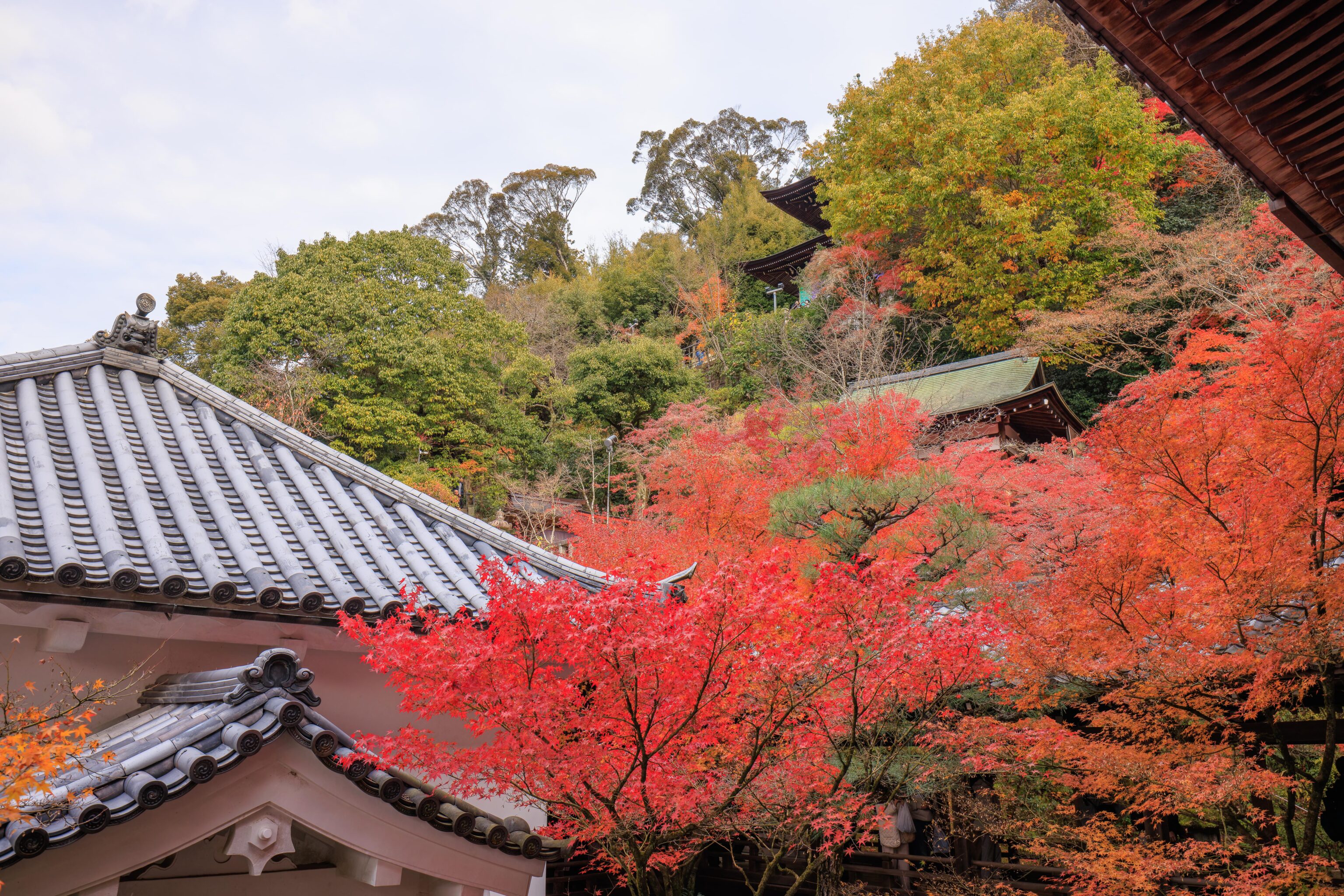
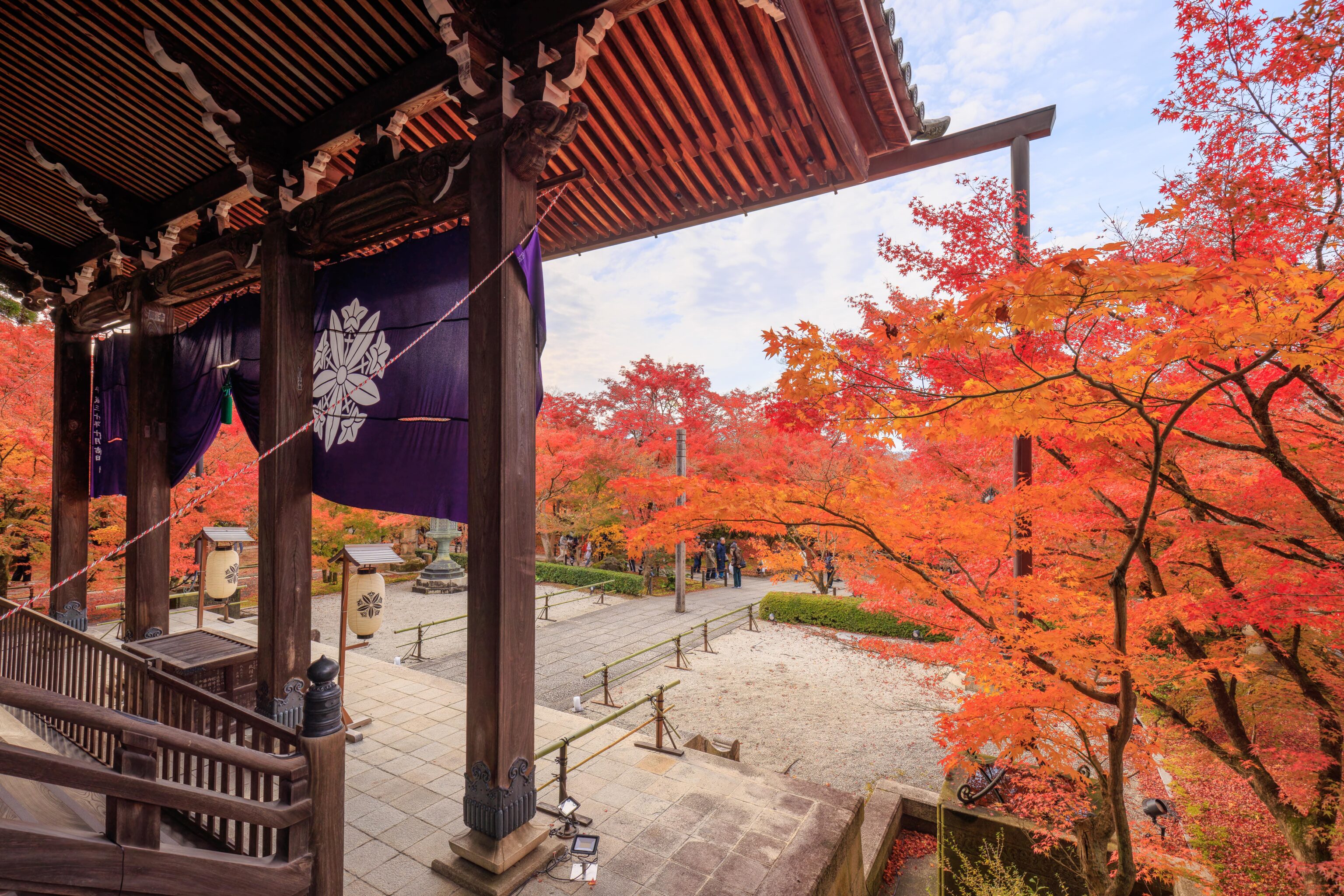
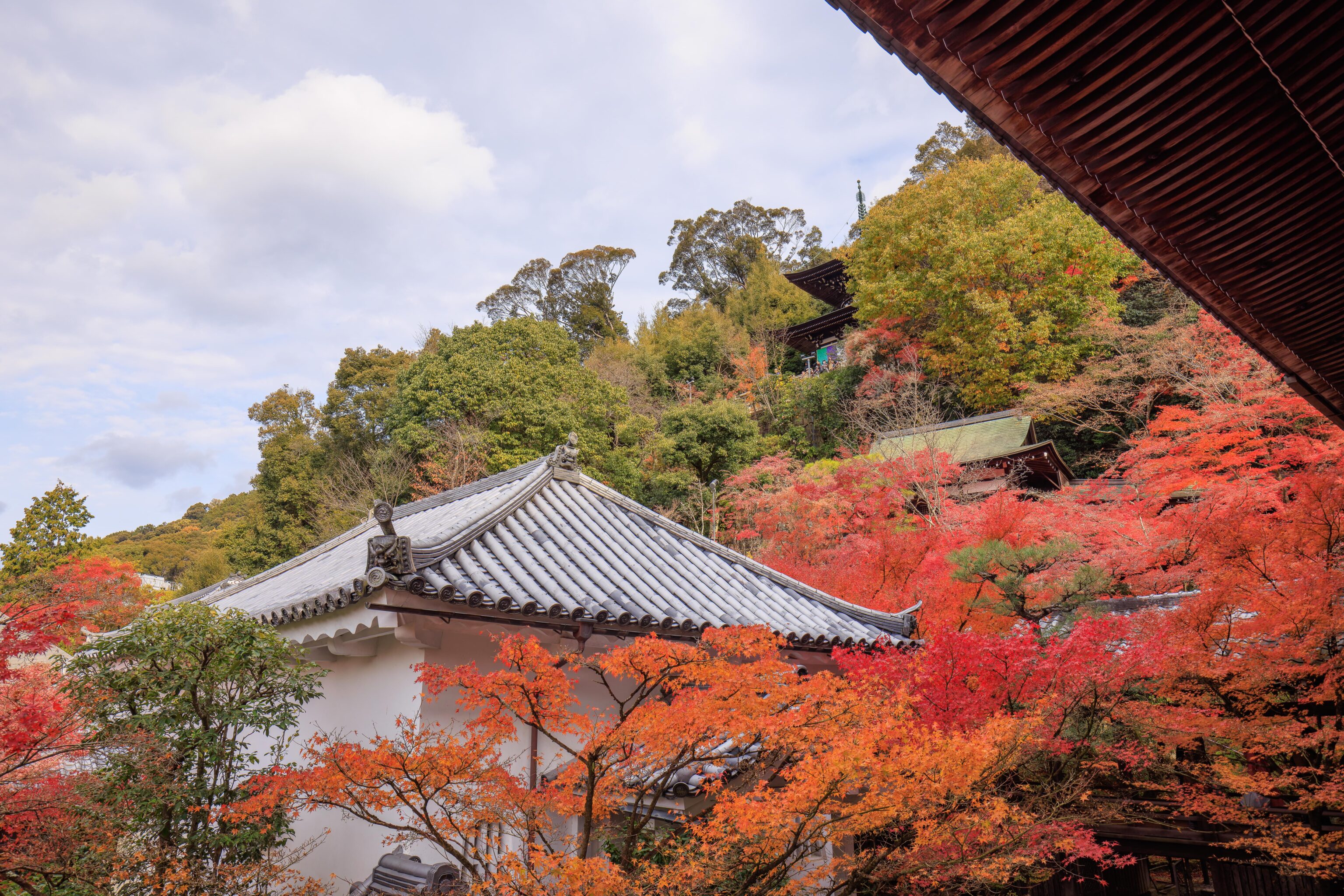
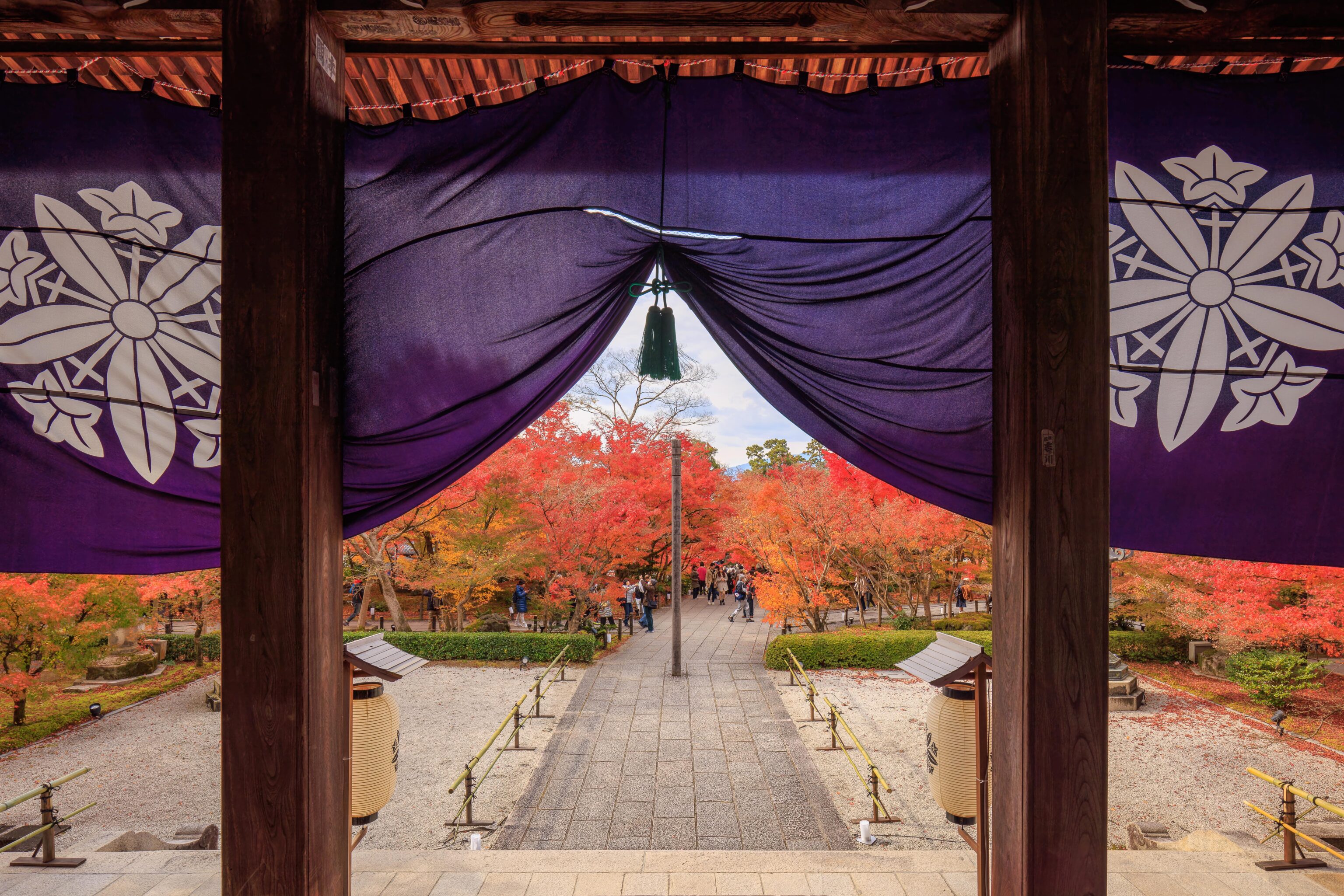
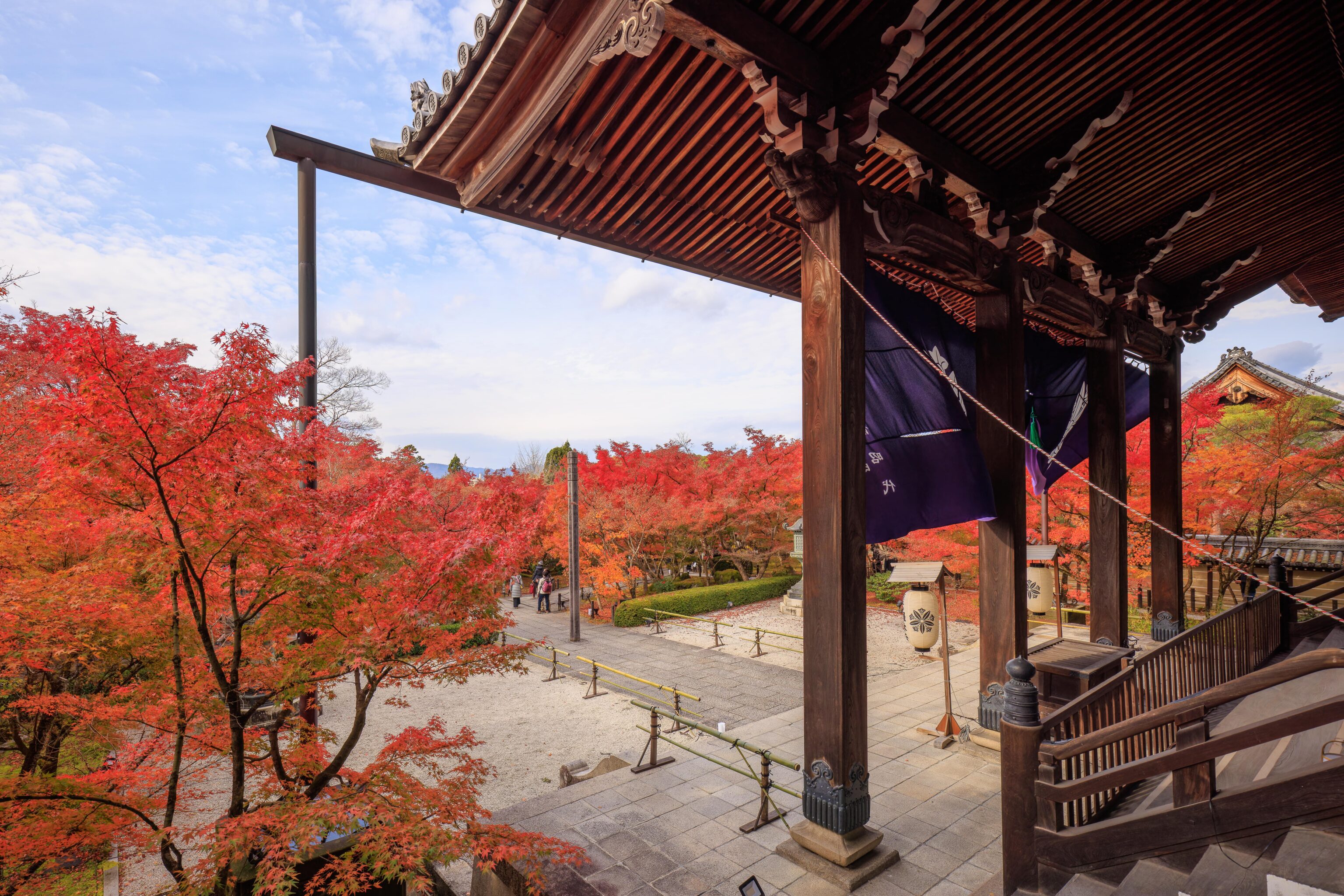
This is one of the larger, if not the largest, temple buildings at Eikando Zenrin-ji. It is possible to reach the building from the outside but the entrance is blocked off.
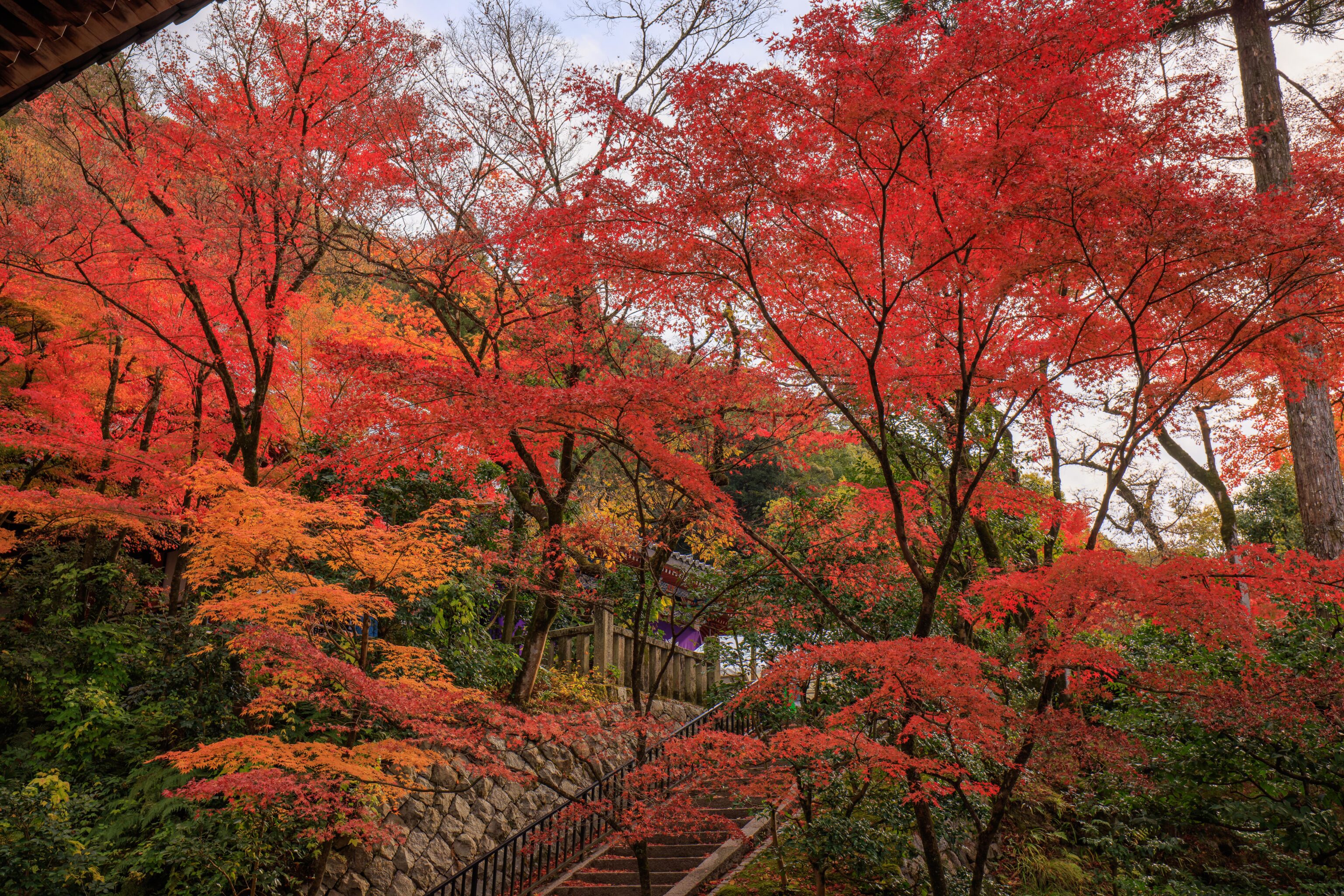
From here, we could see stairs leading up to a higher area within the temple grounds.
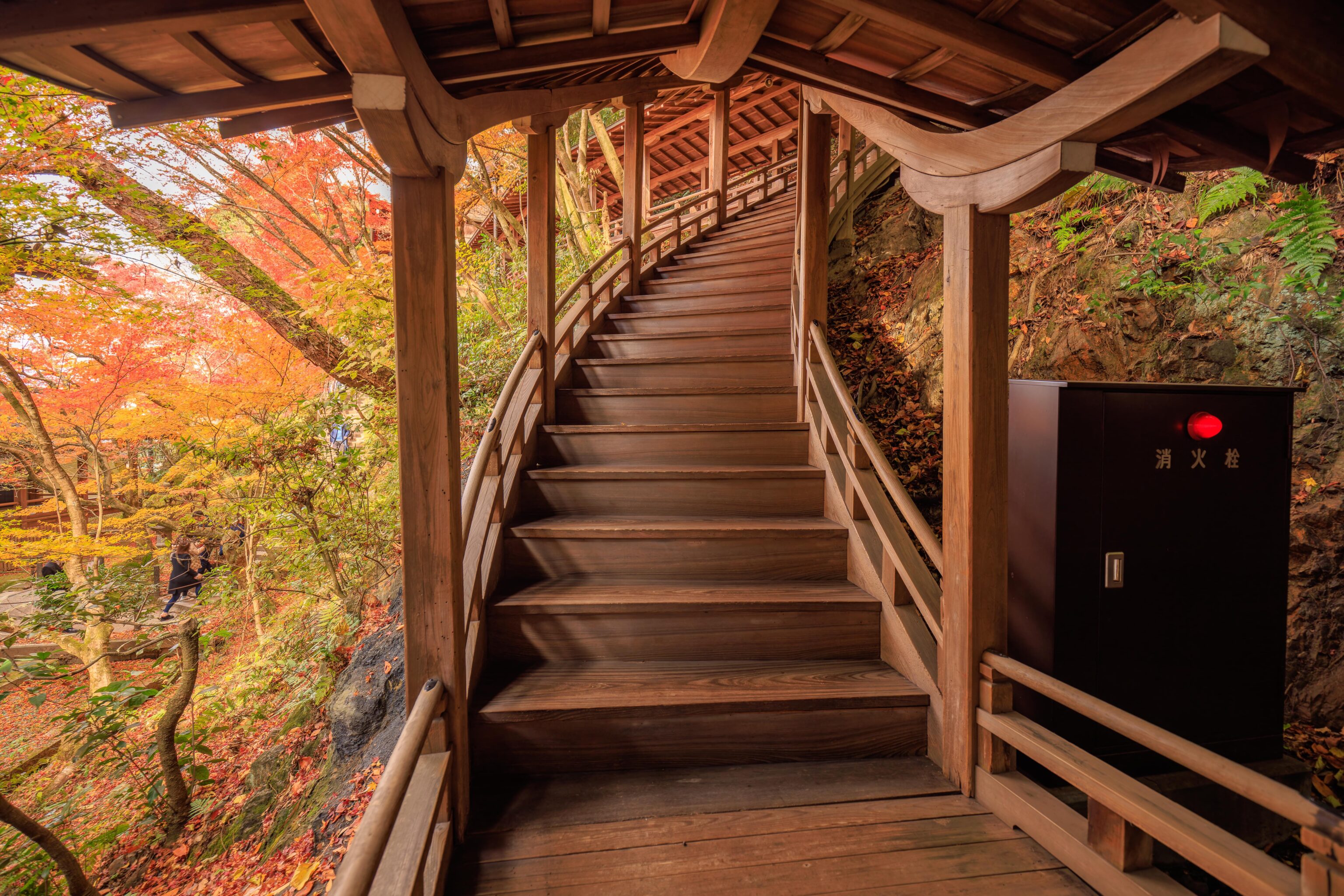
This curved covered stairway, the Garyuro, was closed. Its curved shape, created to follow the contour of the mountainside, is said to resemble a sleeping dragon. We think it may have been closed due to its narrowness and inability to accommodate the large crowds that are present during this time.
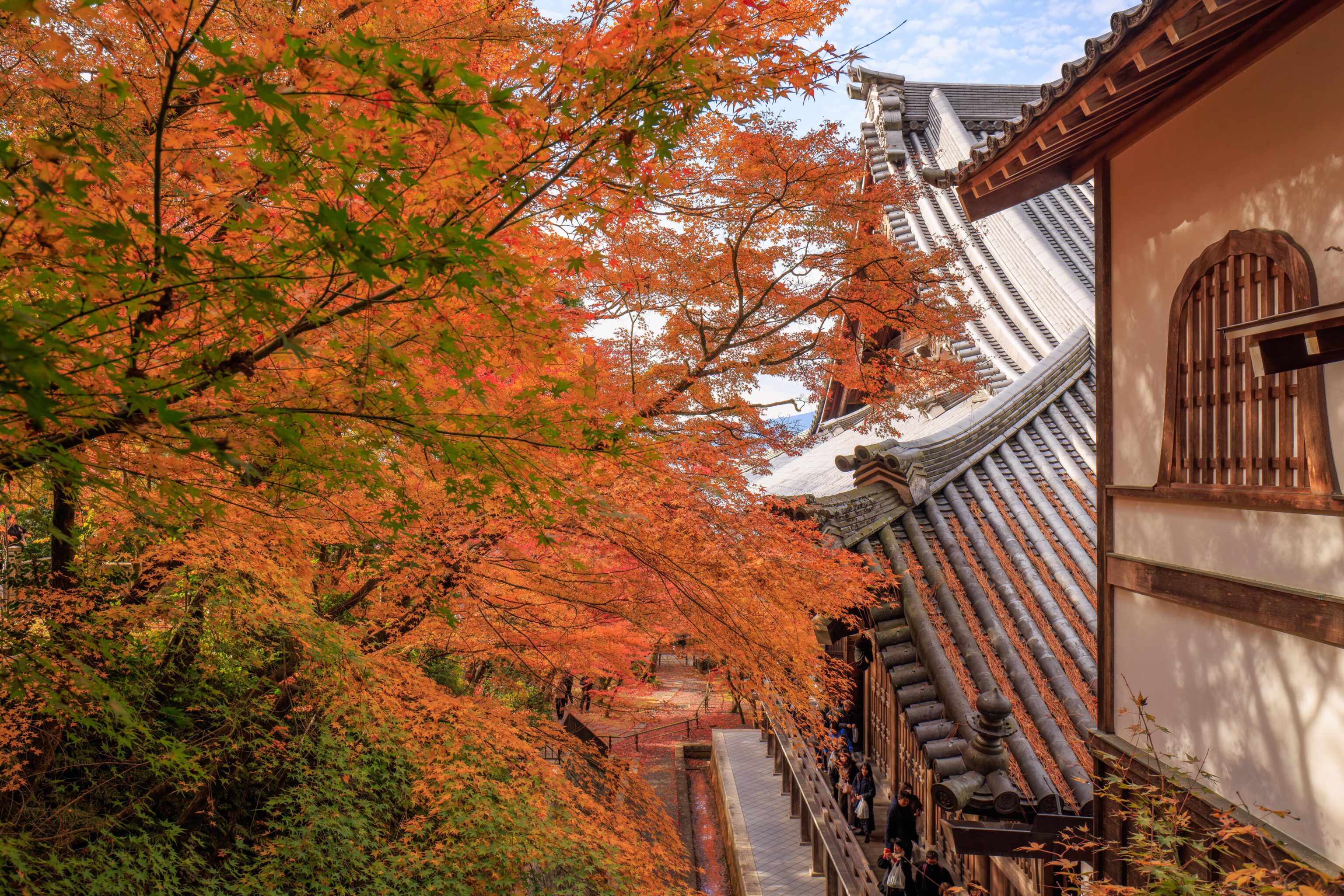
We continued on the route which goes in the opposite direction from the Garyuro. From here, we could see the building we were just at below.
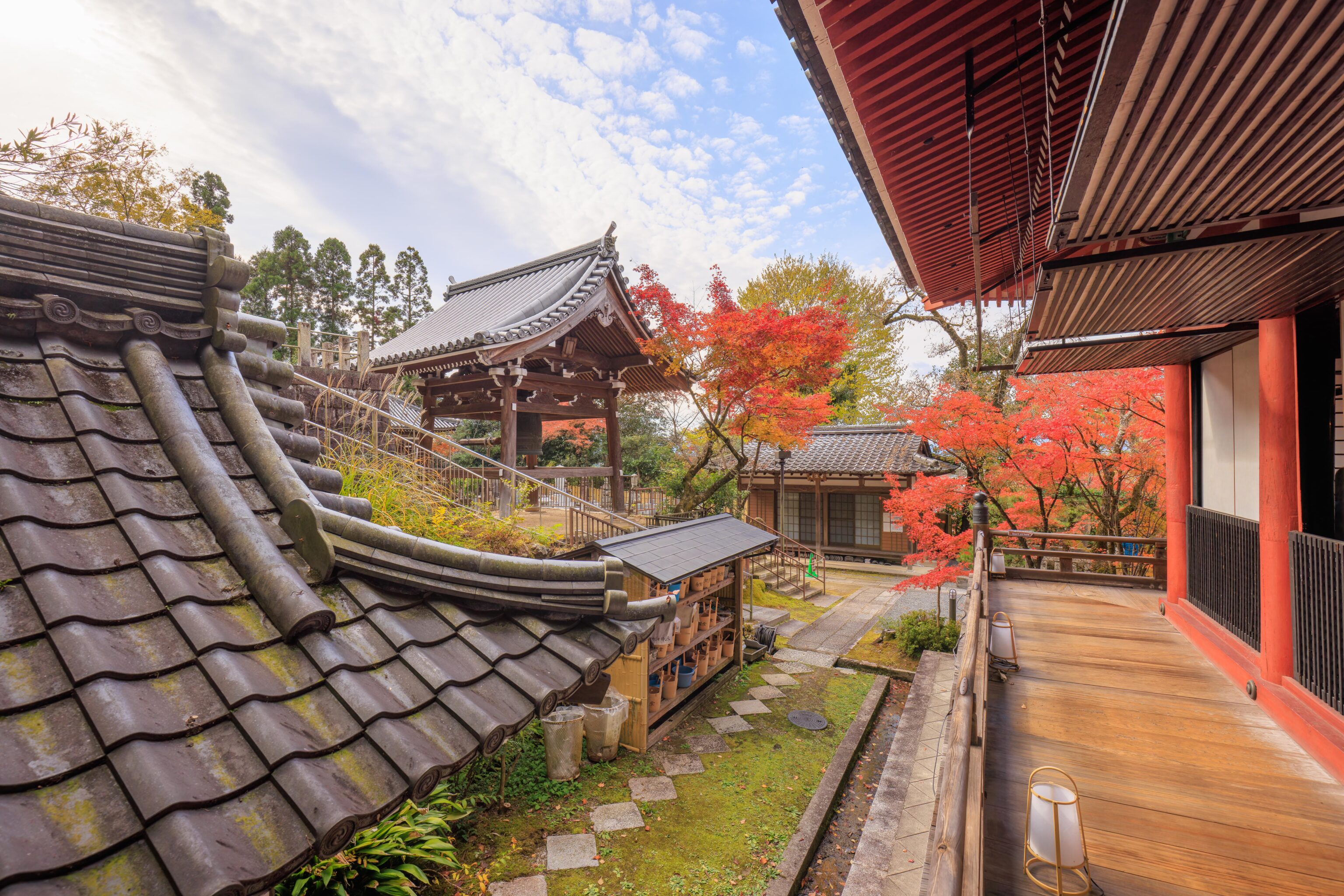
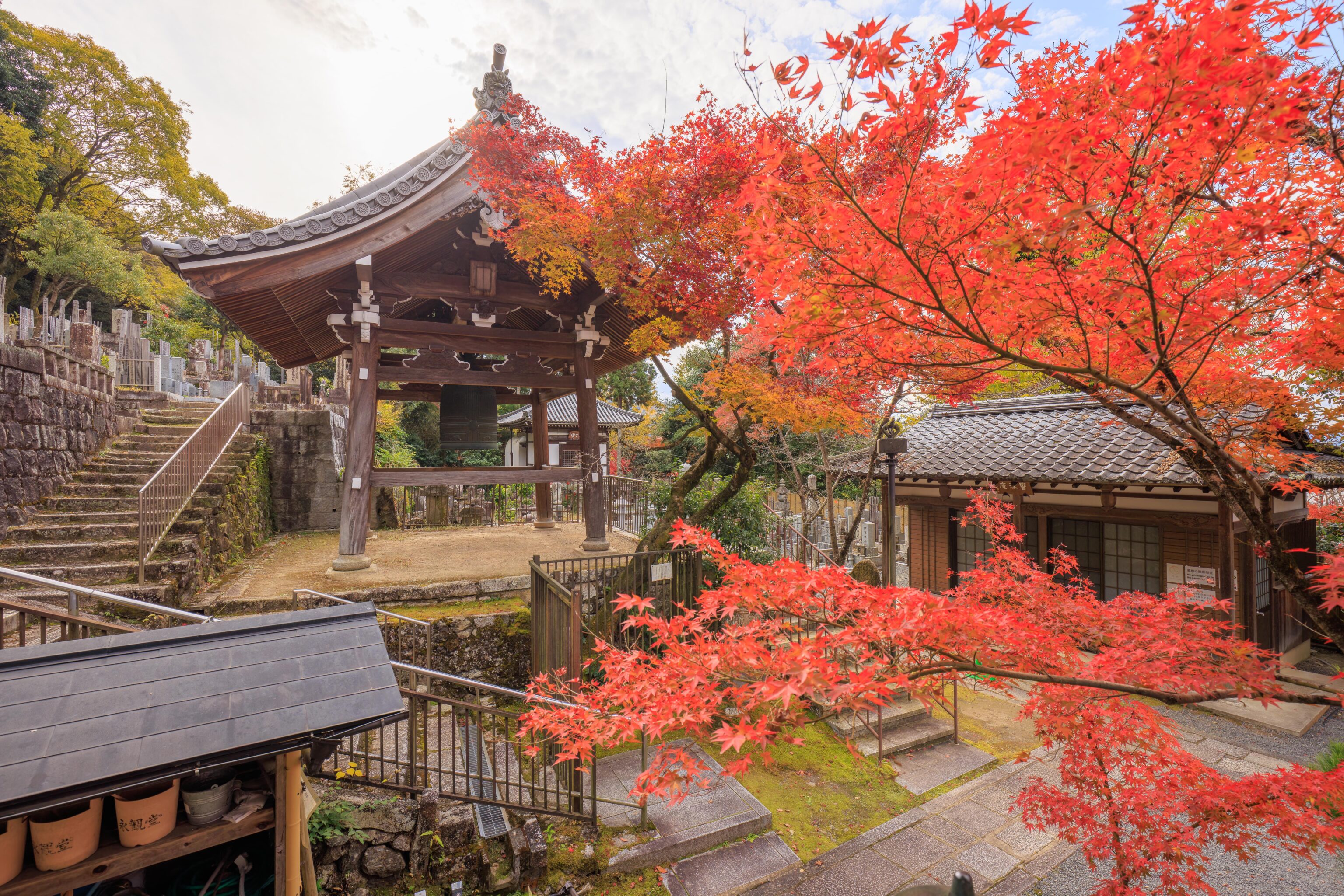
We reached the final building on the route, the Amida-do.
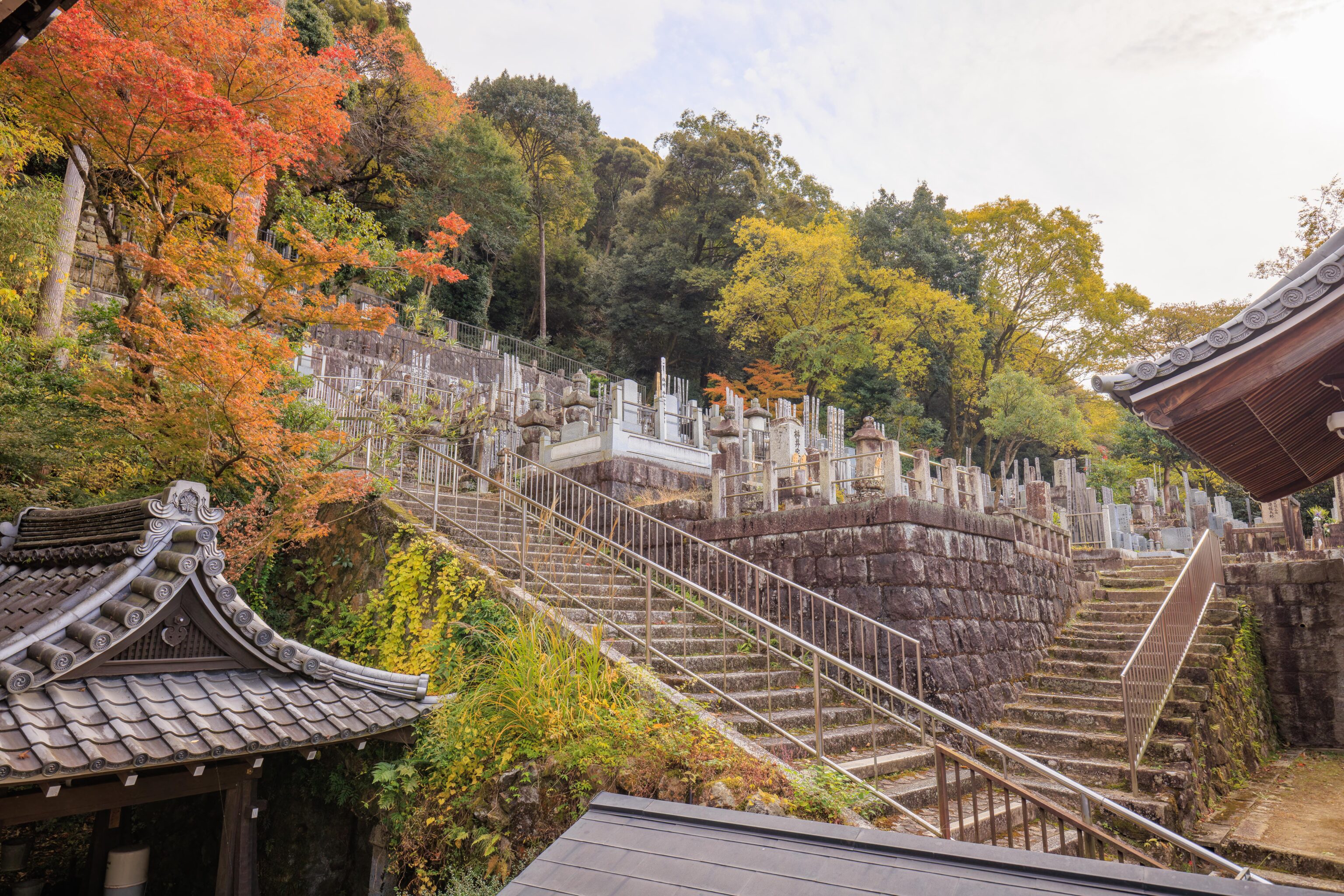
It is possible to continue outside into a graveyard, but this is basically the southern edge of the temple property and about as far as it is possible to go from the entrance.
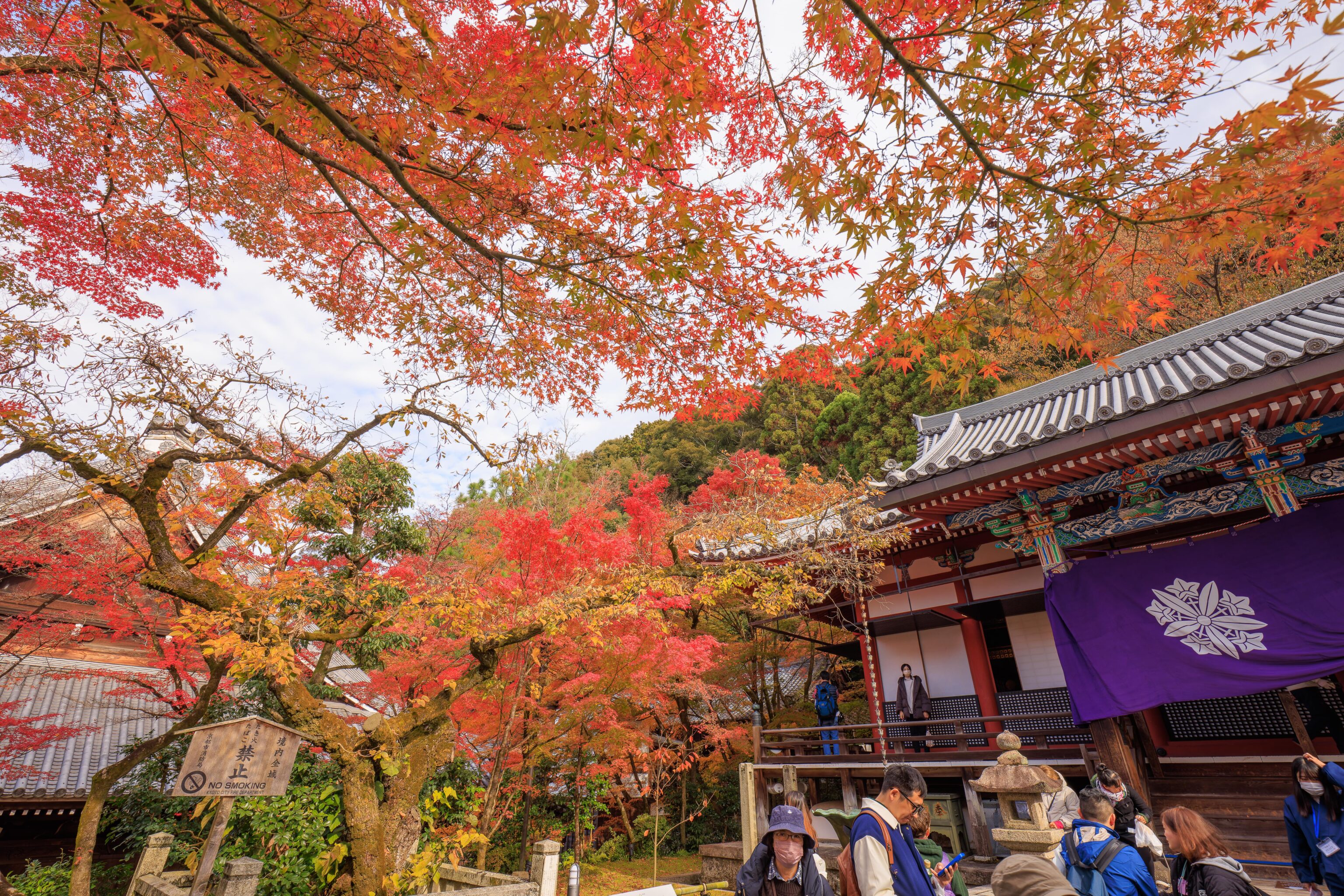
As the route ends here, we stepped outside and put our shoes back on to continue walking through the outdoor portions of the temple.
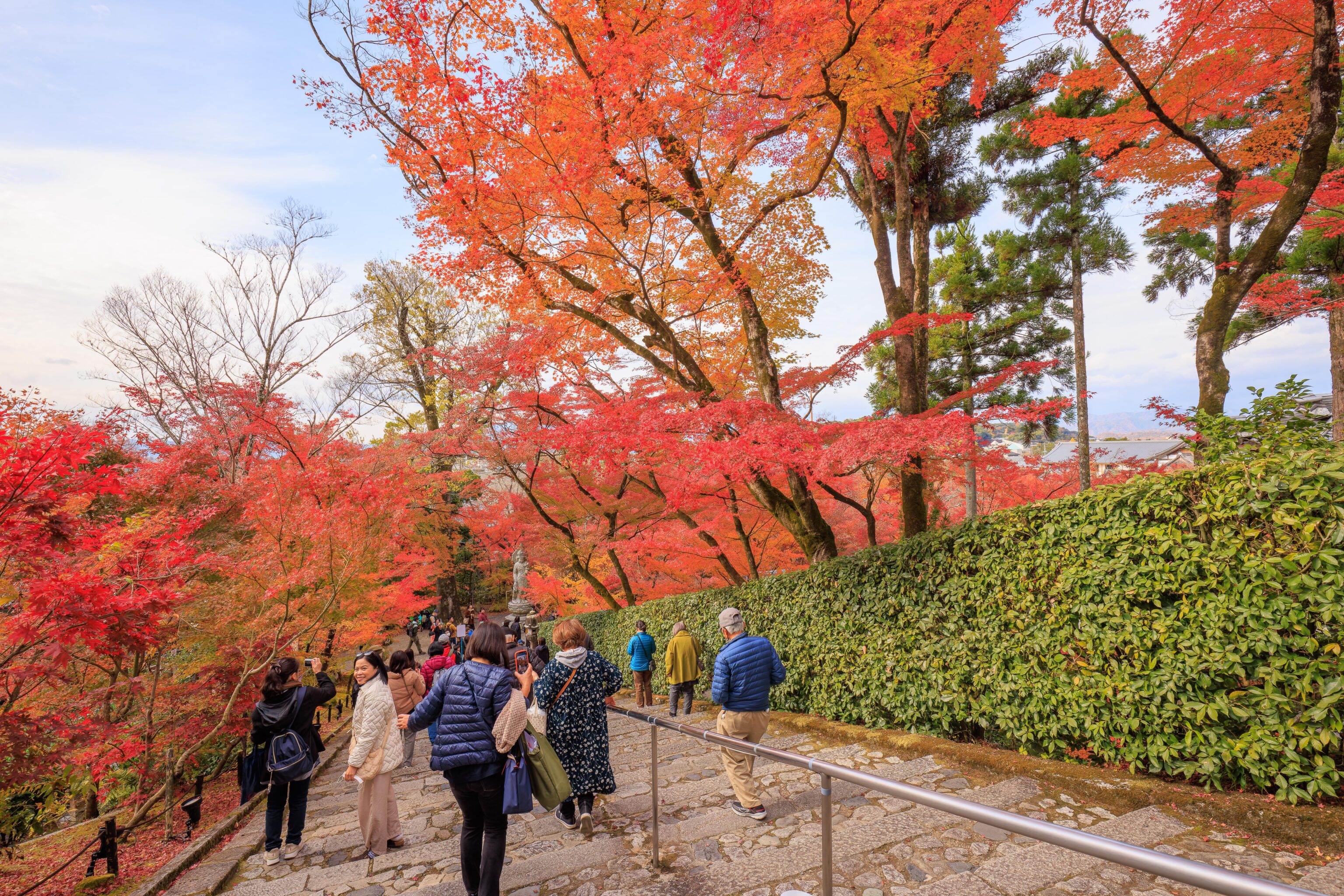
We headed down some stairs that are in front of the Amida-do.
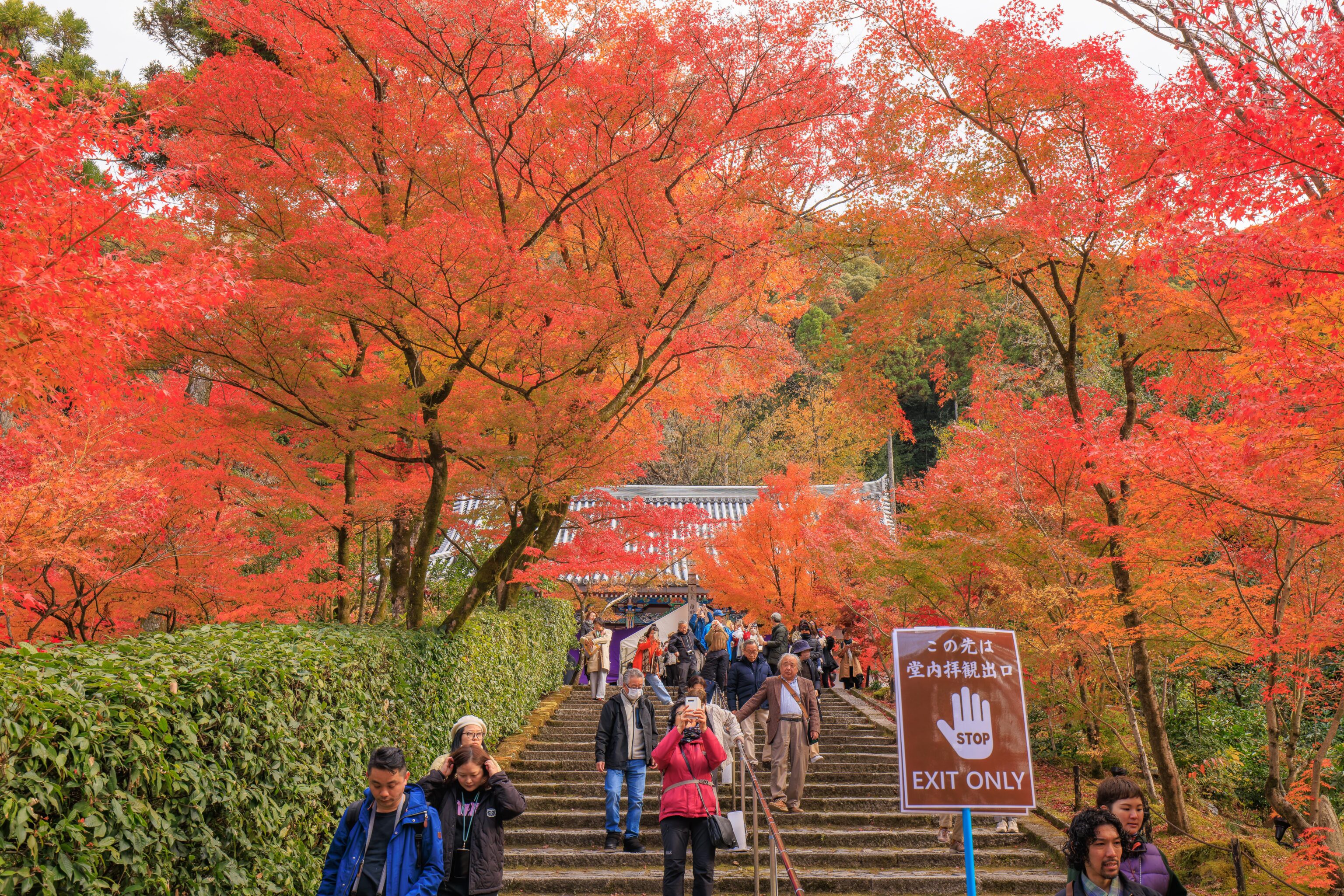
One way traffic was enforced in this area, or at least, signed.
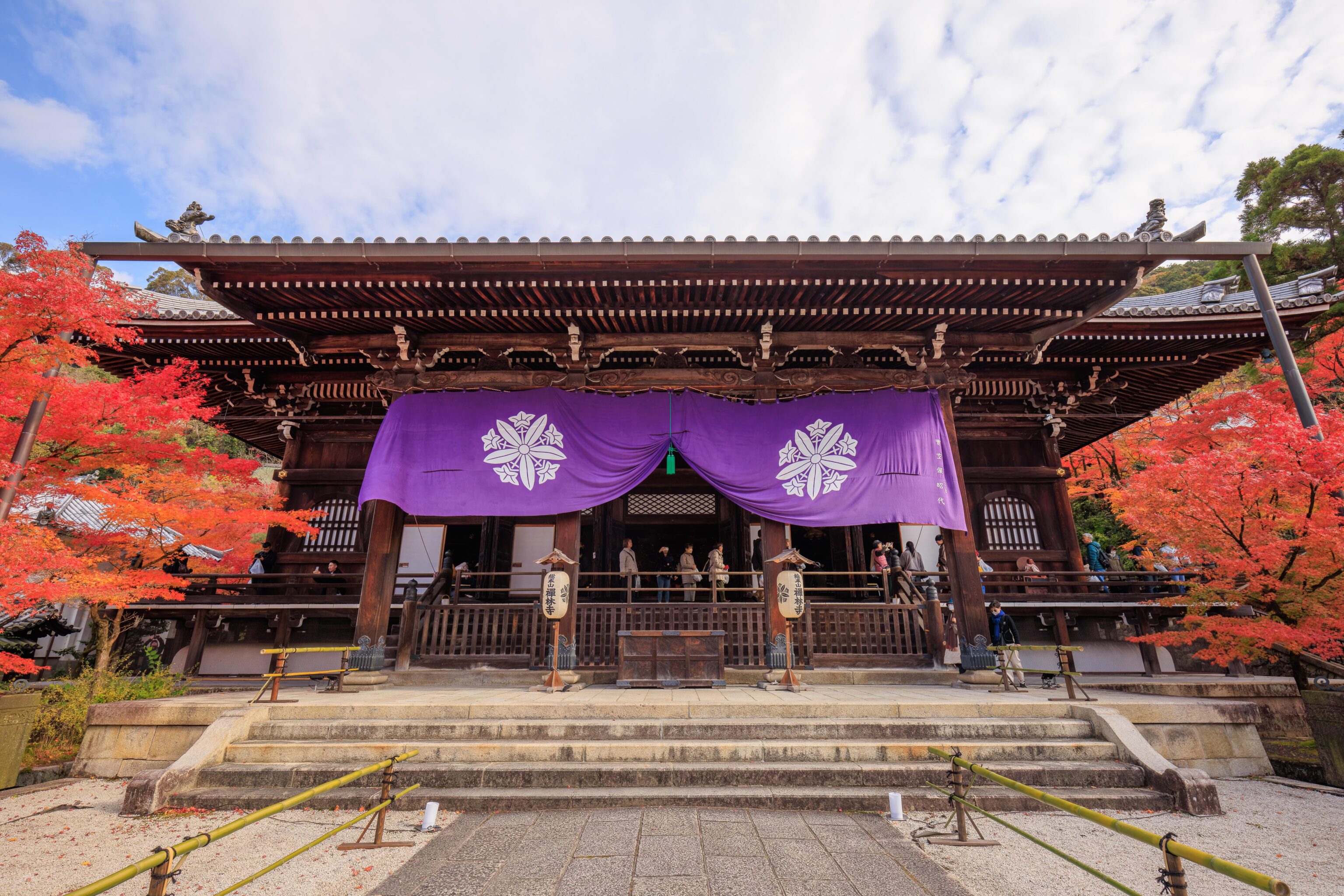
This is the front of the large temple building we passed through earlier, right before the Garyuro and Amida-do.
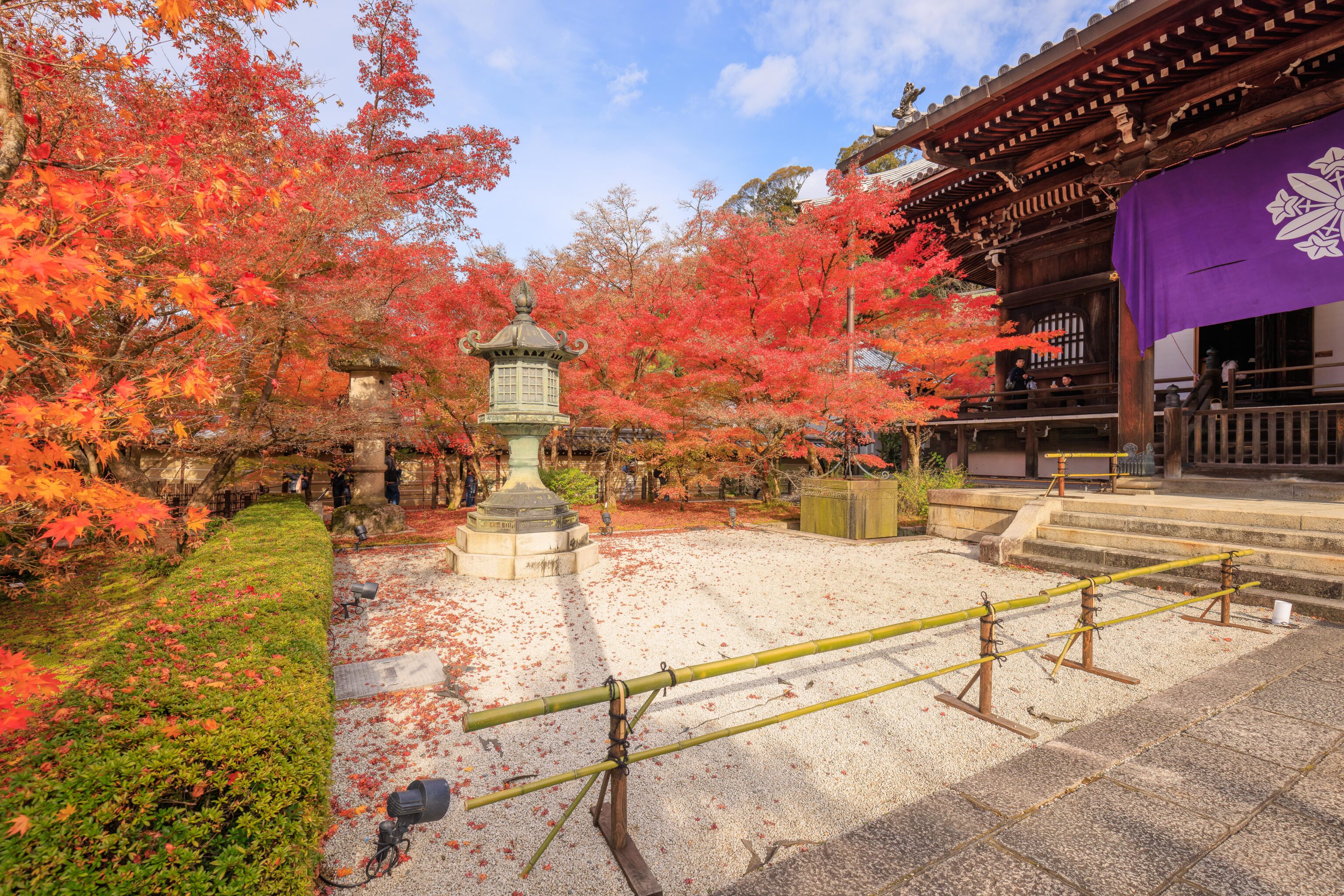
Both sides on the passageway to the building’s front were blocked as well.
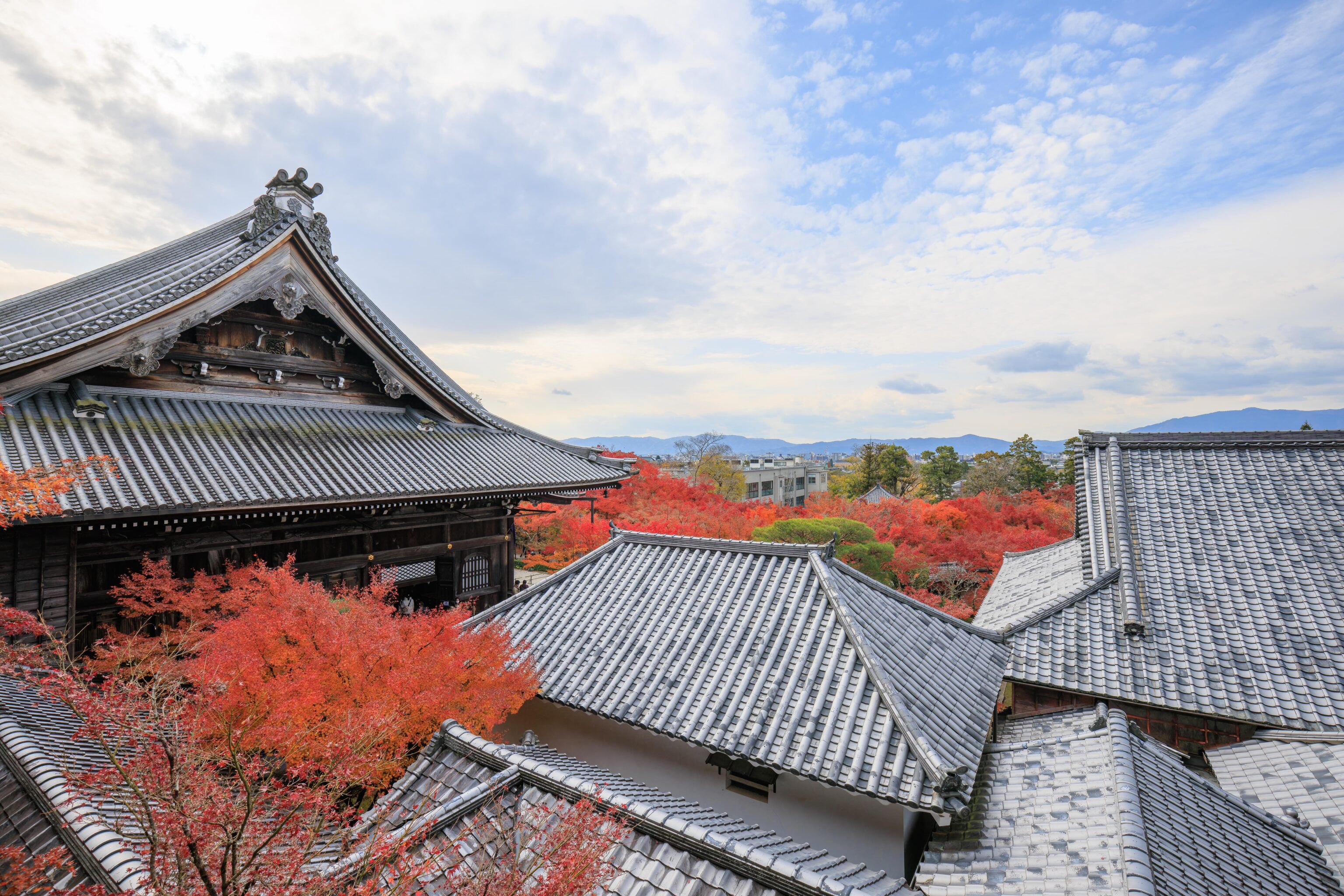
We backtracked a bit to head to the small path that leads up the mountainside to the Taho-to, a two story pagoda. Soon, we could see above some of the temple buildings.
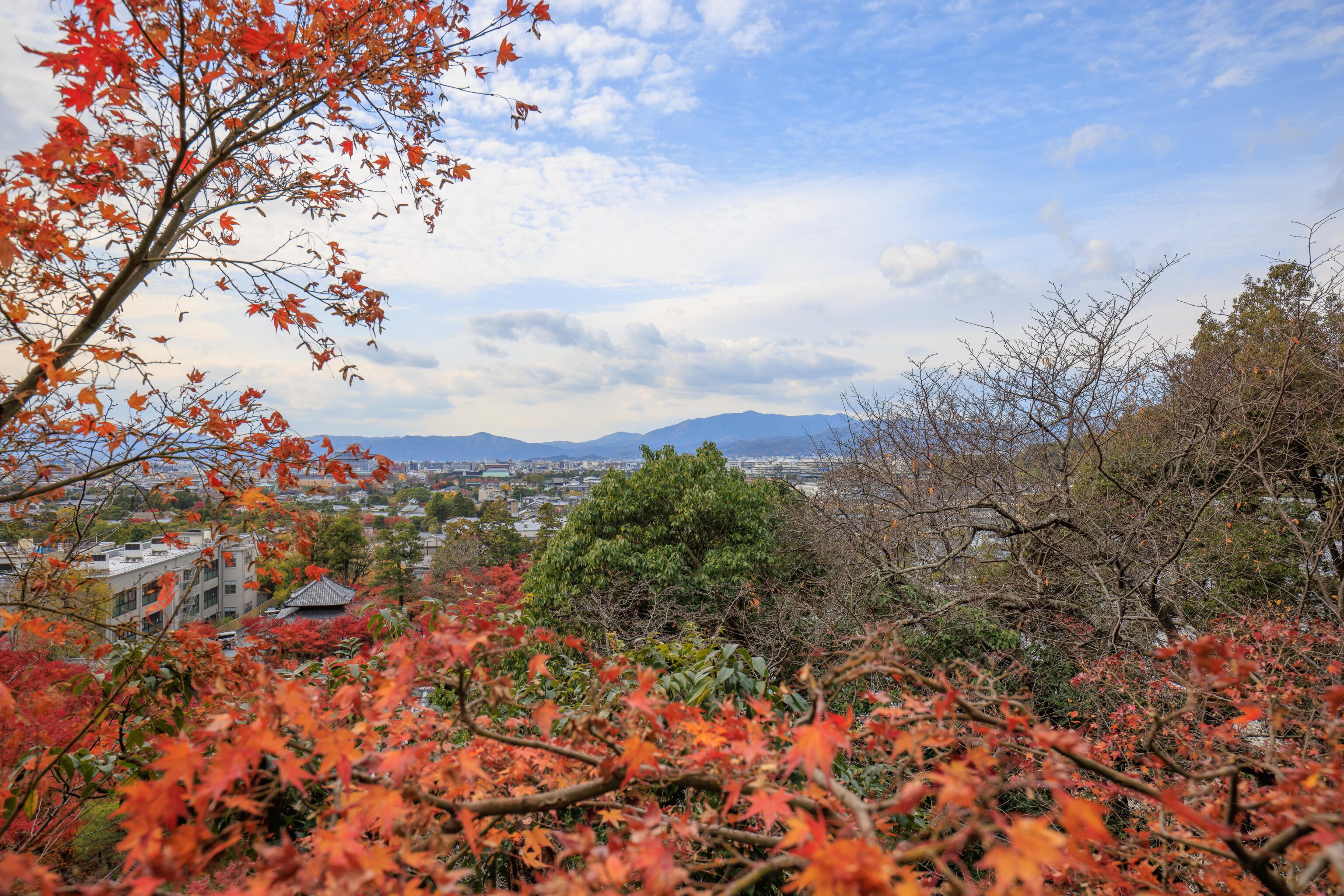
We continued walking up via many stairs.
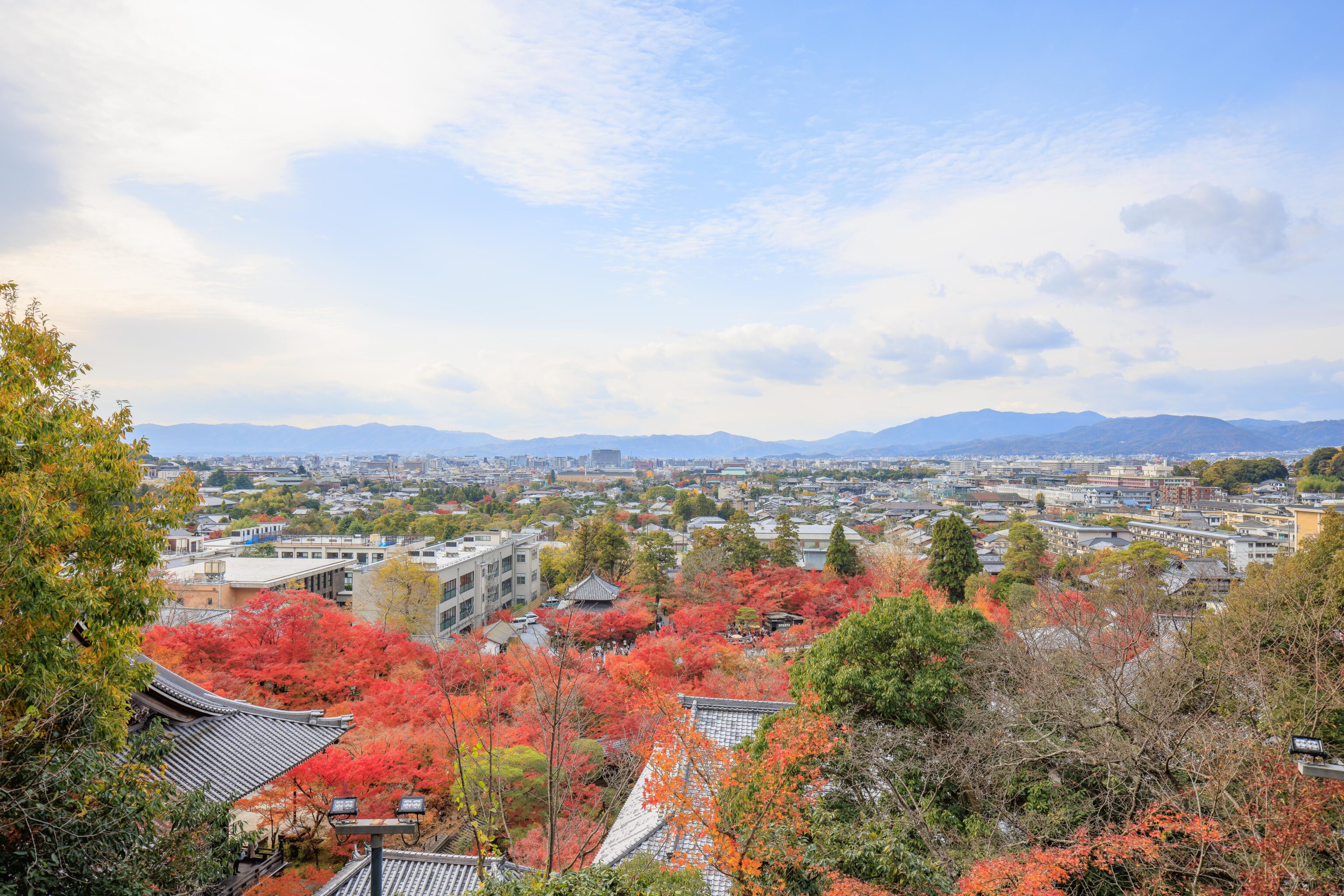
We quickly reached the Taho-to. There is a nice view of Kyoto from here!
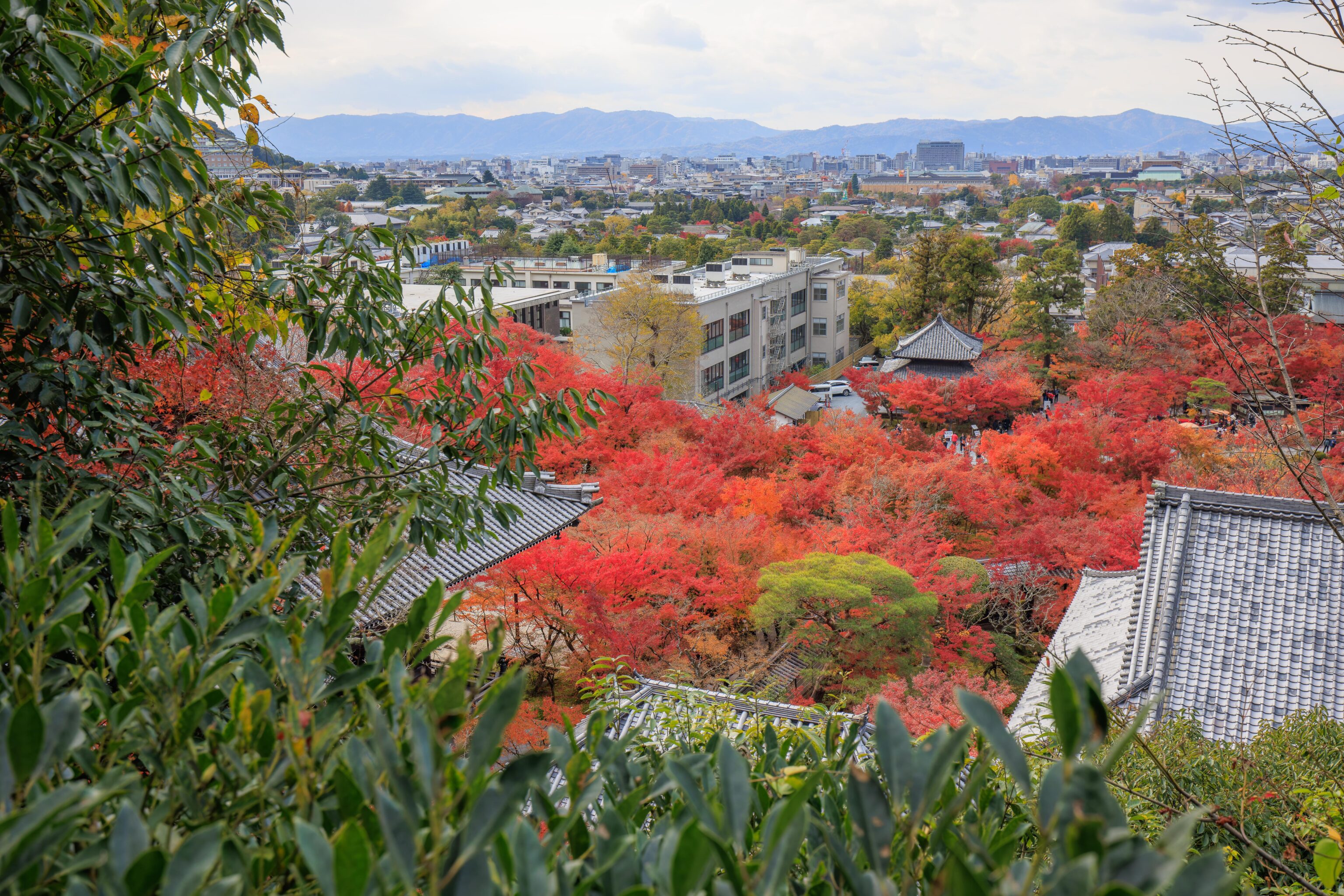
Looking down, we could see the red leaves of the Japanese maples in the temple. They definitely add a splash of color to an otherwise very gray looking city!
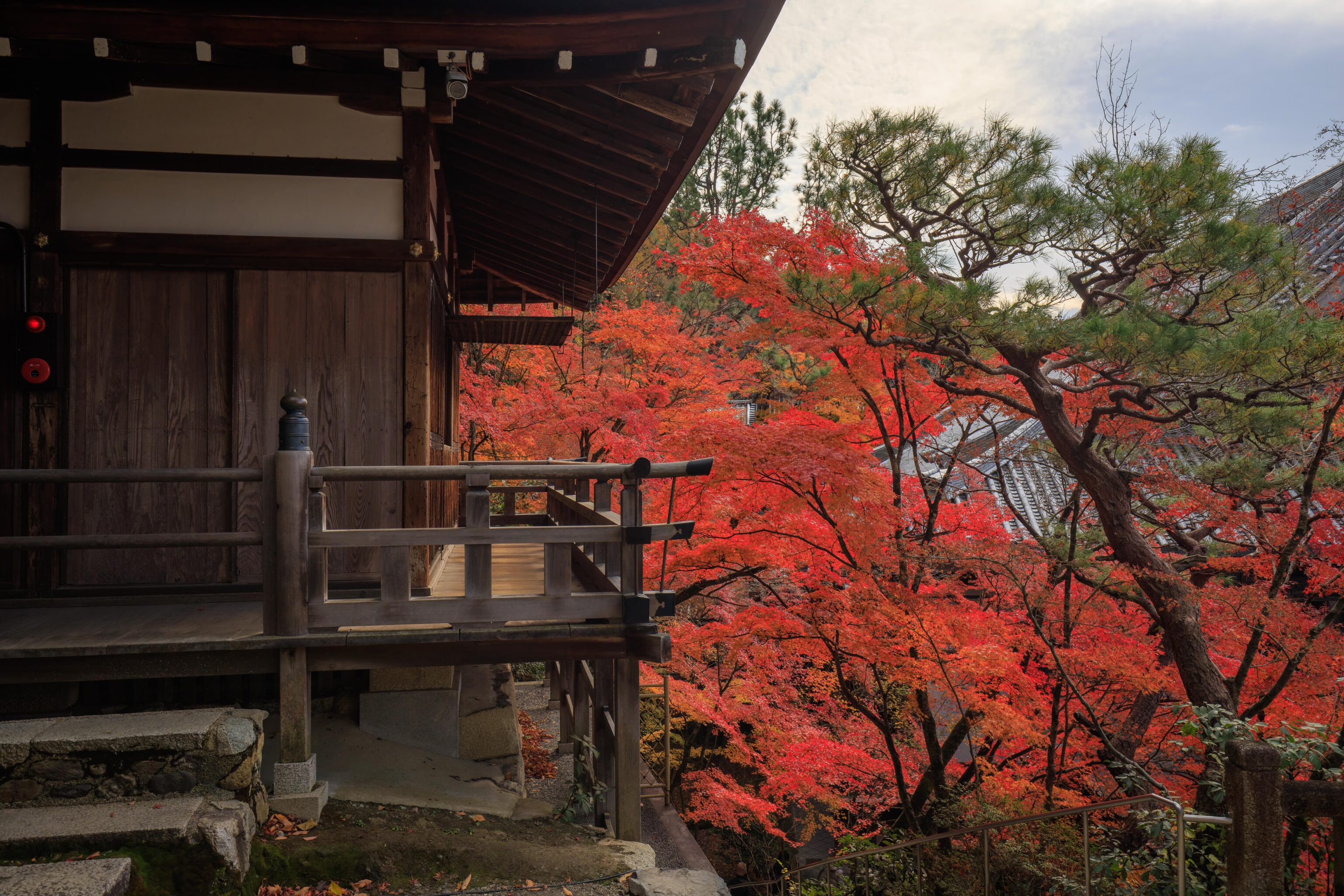
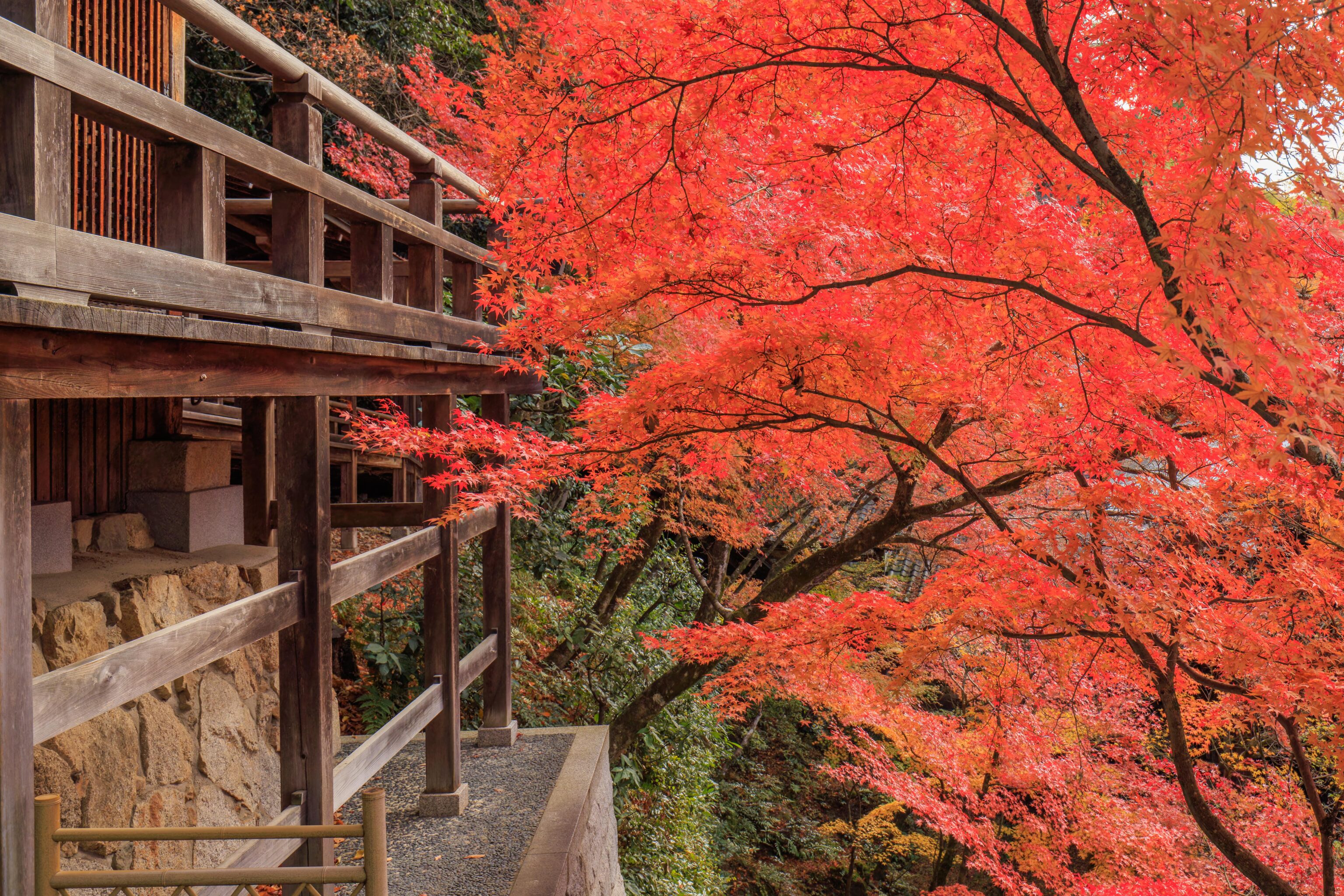
After spending a little bit of time by the pagoda enjoying the view, we started to head back down.
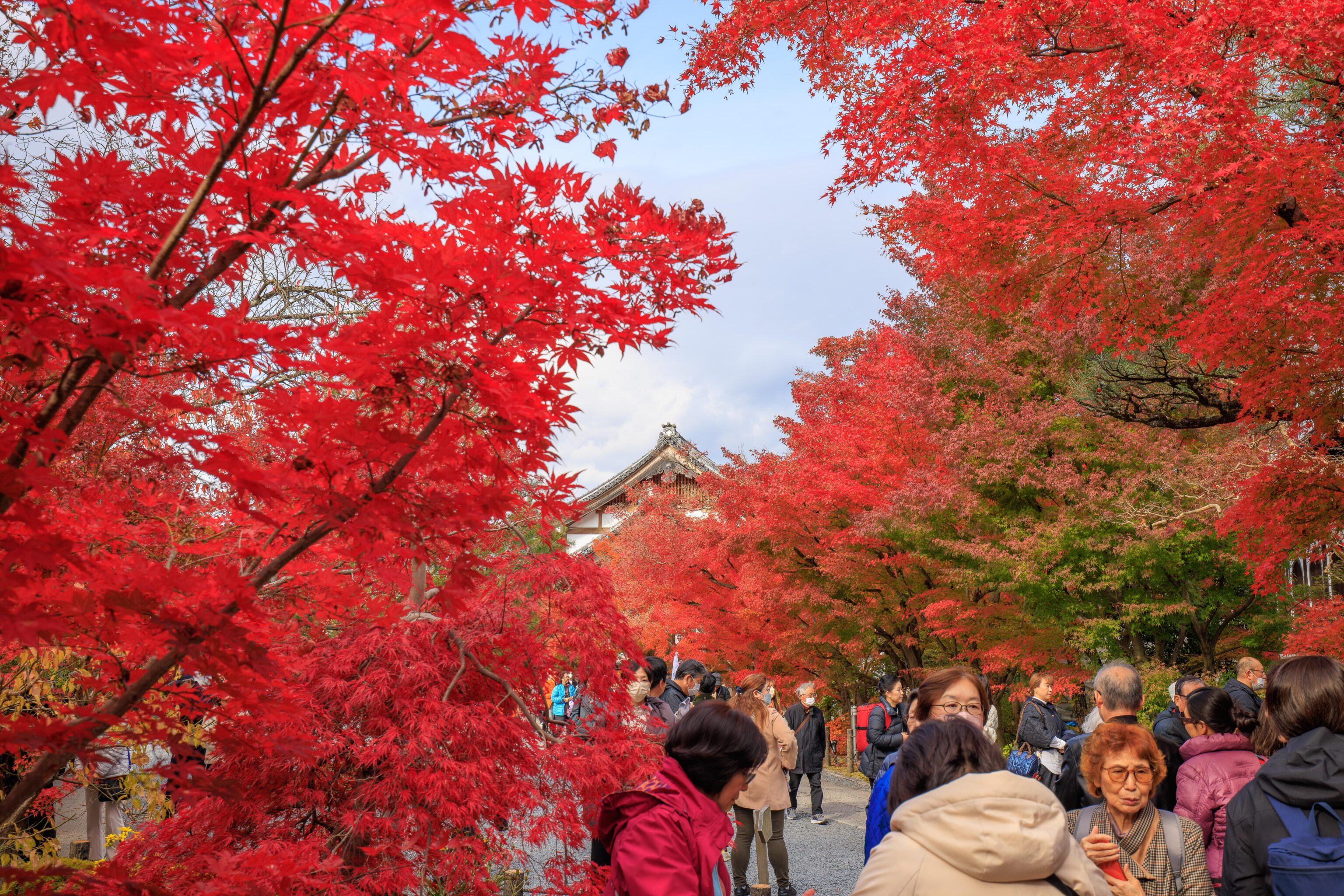
There weren’t too many people up at the Taho-to. Particularly compared to rest of the temple grounds!
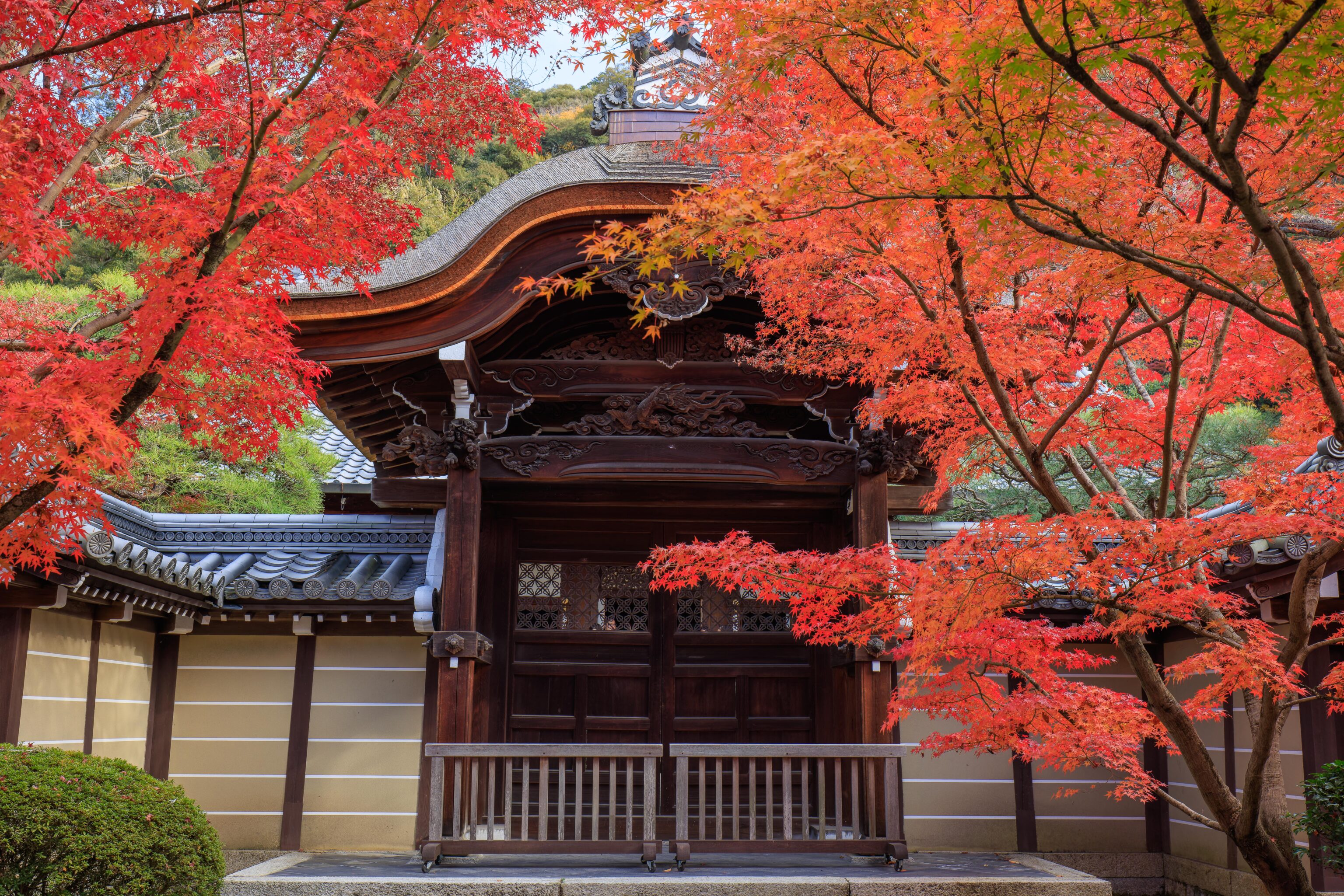
We saw this gate, the Karamon, from the inside earlier.
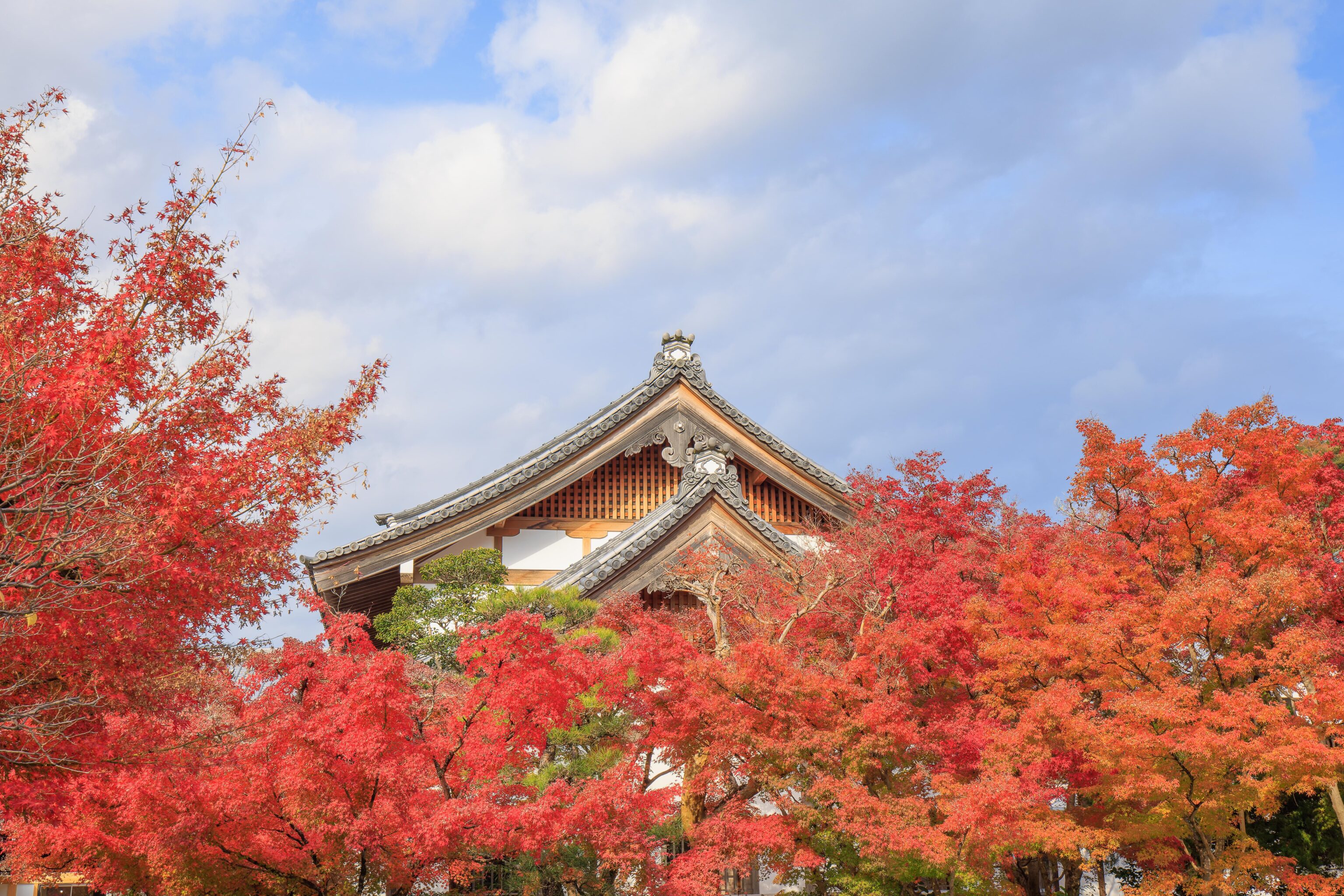
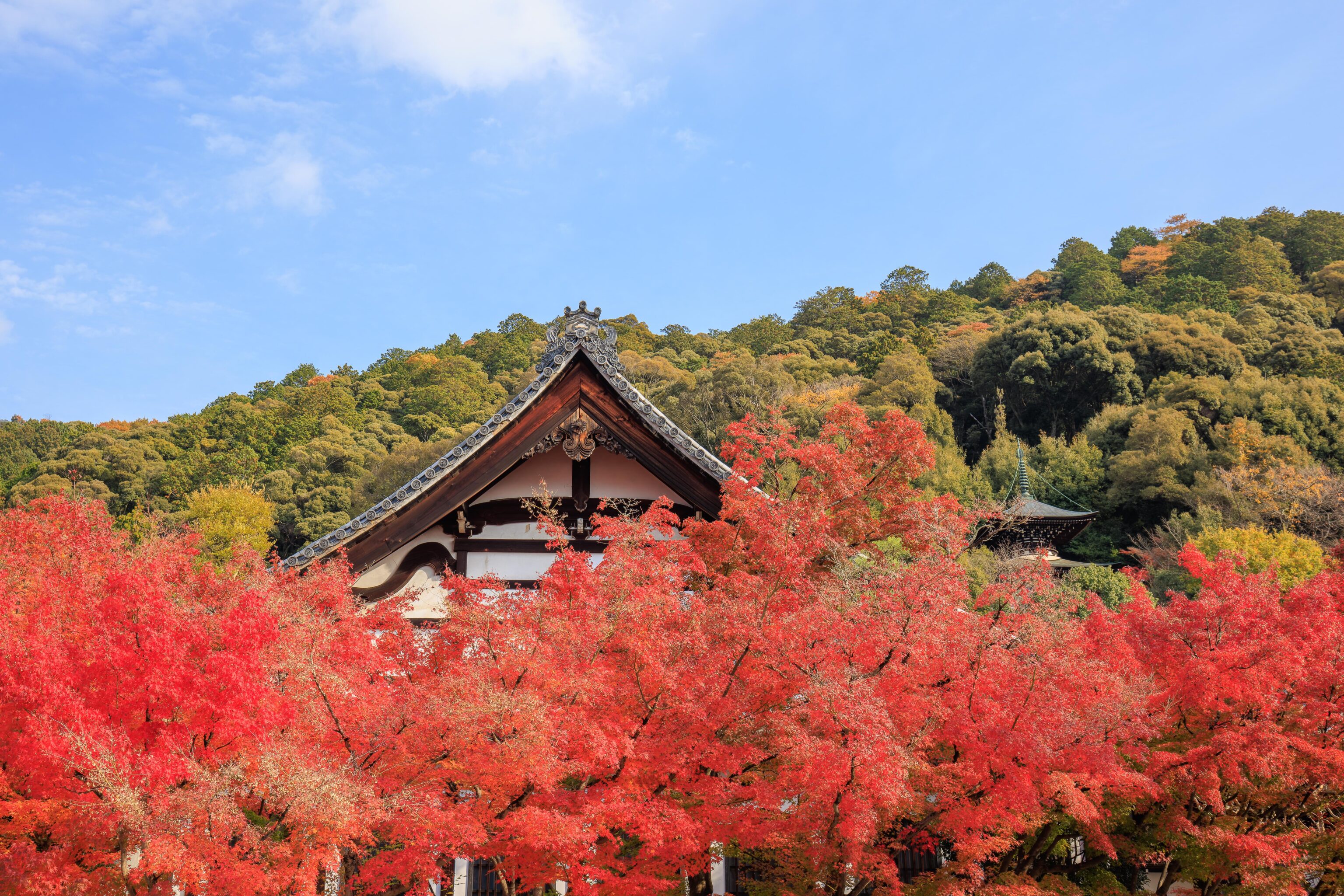
We ended up back by the entrance! There is more to visit though as there are stairs going down to a lower level of the temple grounds. The stairs are to the south a bit, by the largest temple building that we passed through earlier.
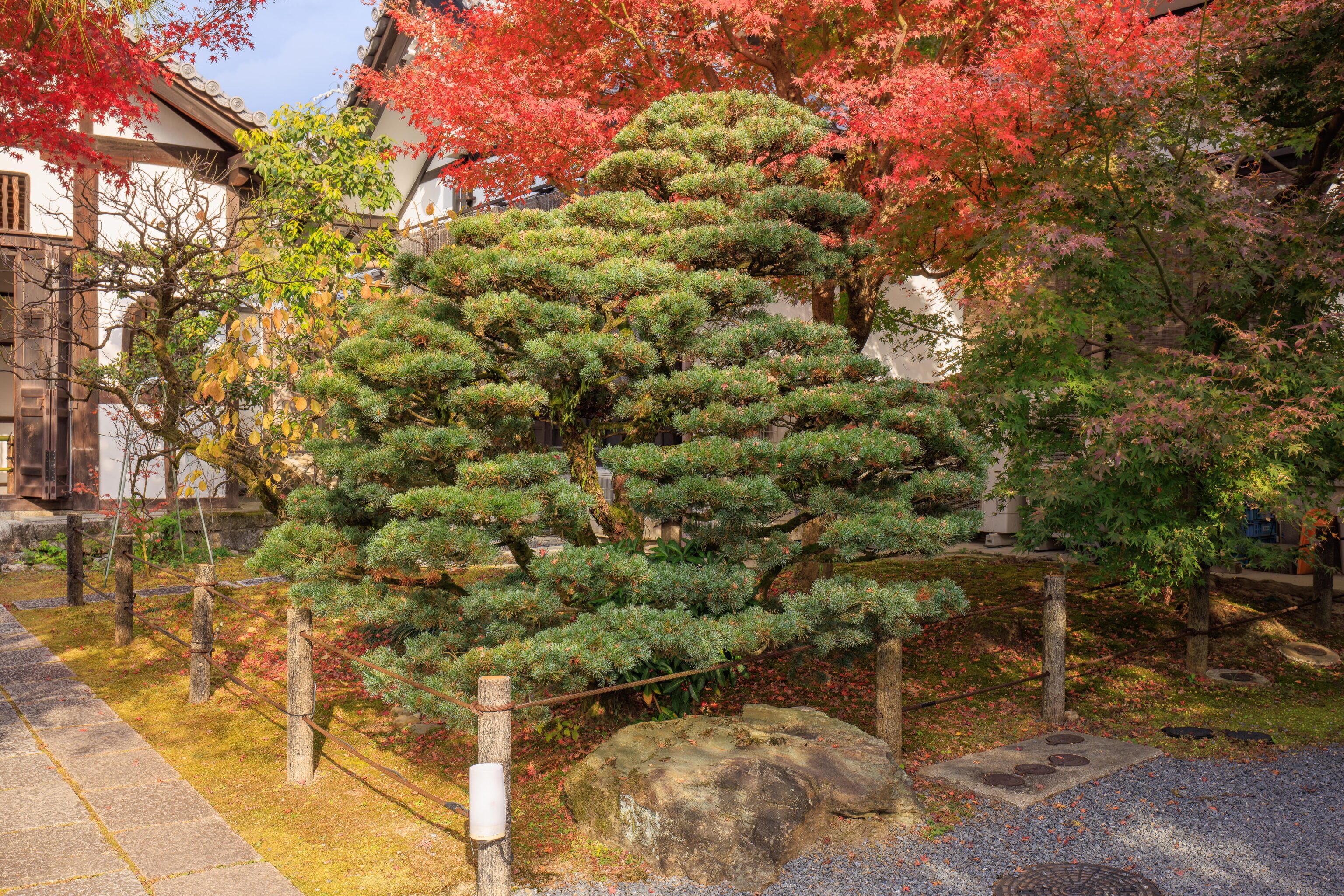
This evergreen tree was by the entrance. It was nicely trimmed and deserving of a photograph!
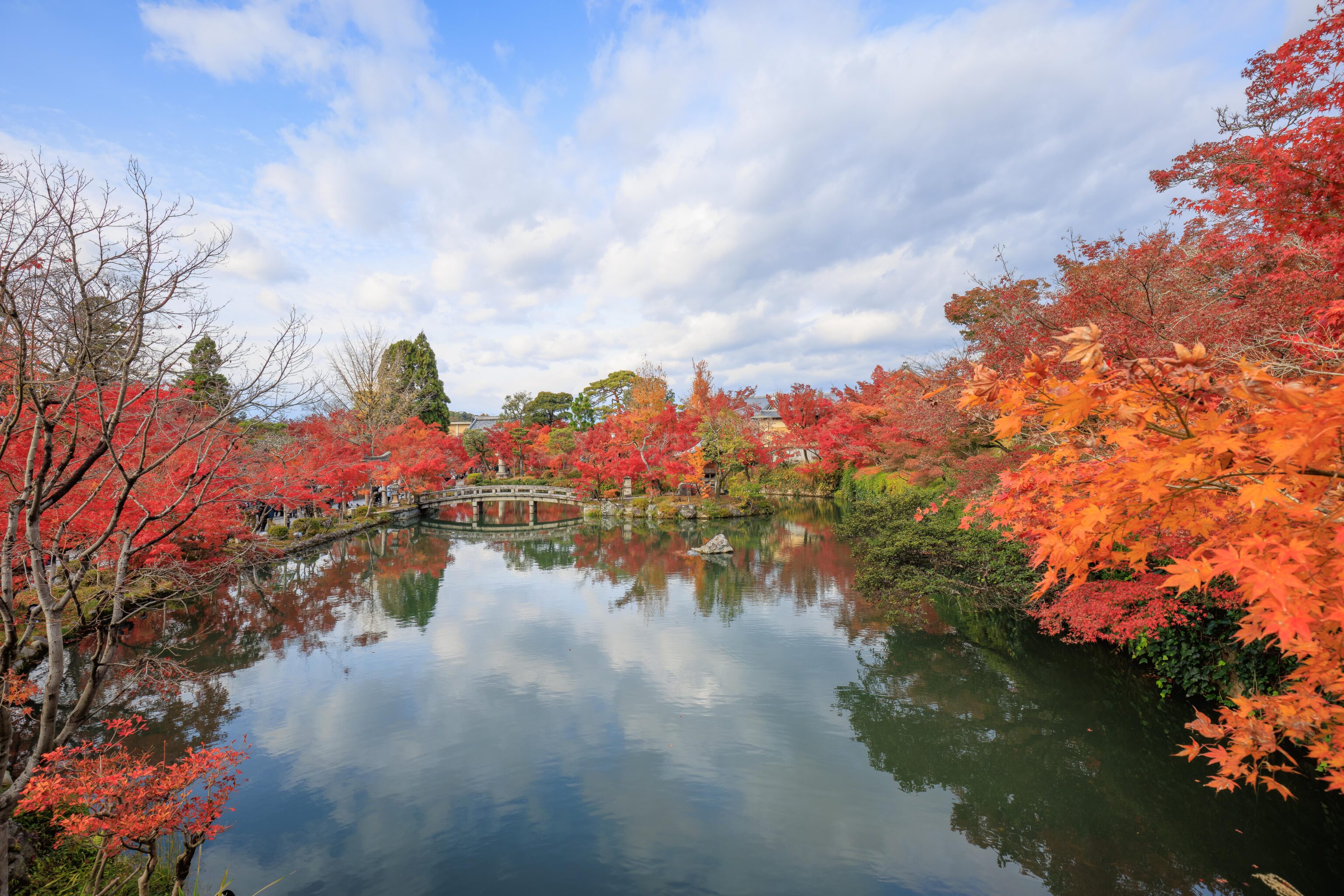
After backtracking, we took the stairs down to end up next to a large pond! The surface was very still which allowed for excellent reflections. The area at the bottom of the stairs was very crowded as it was right in front of a narrow bridge that goes over a small portion of the pond. It also had a fantastic first glimpse of the pond, similar to the view here just a few steps away.
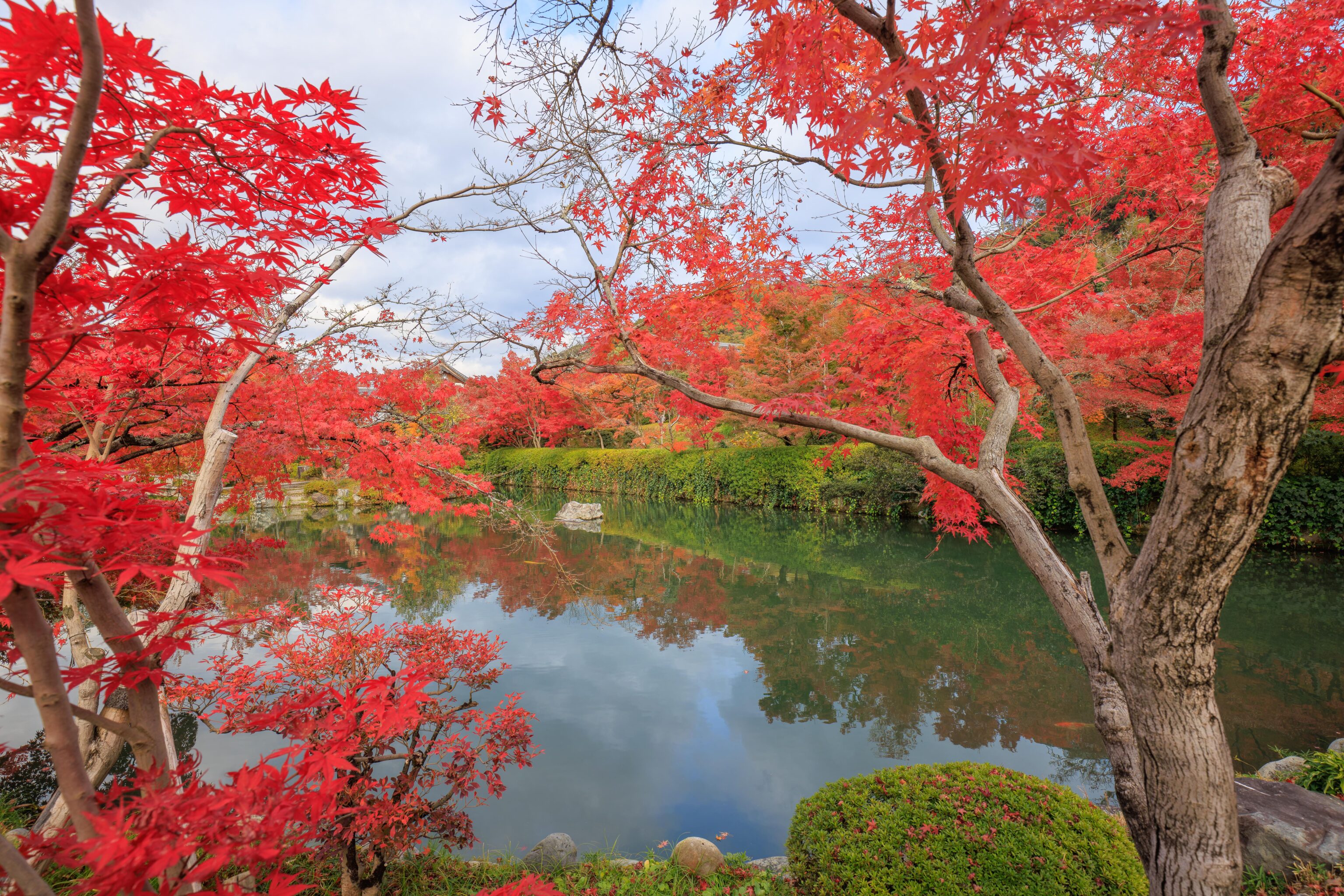
We walked around the pond, enjoying the view.
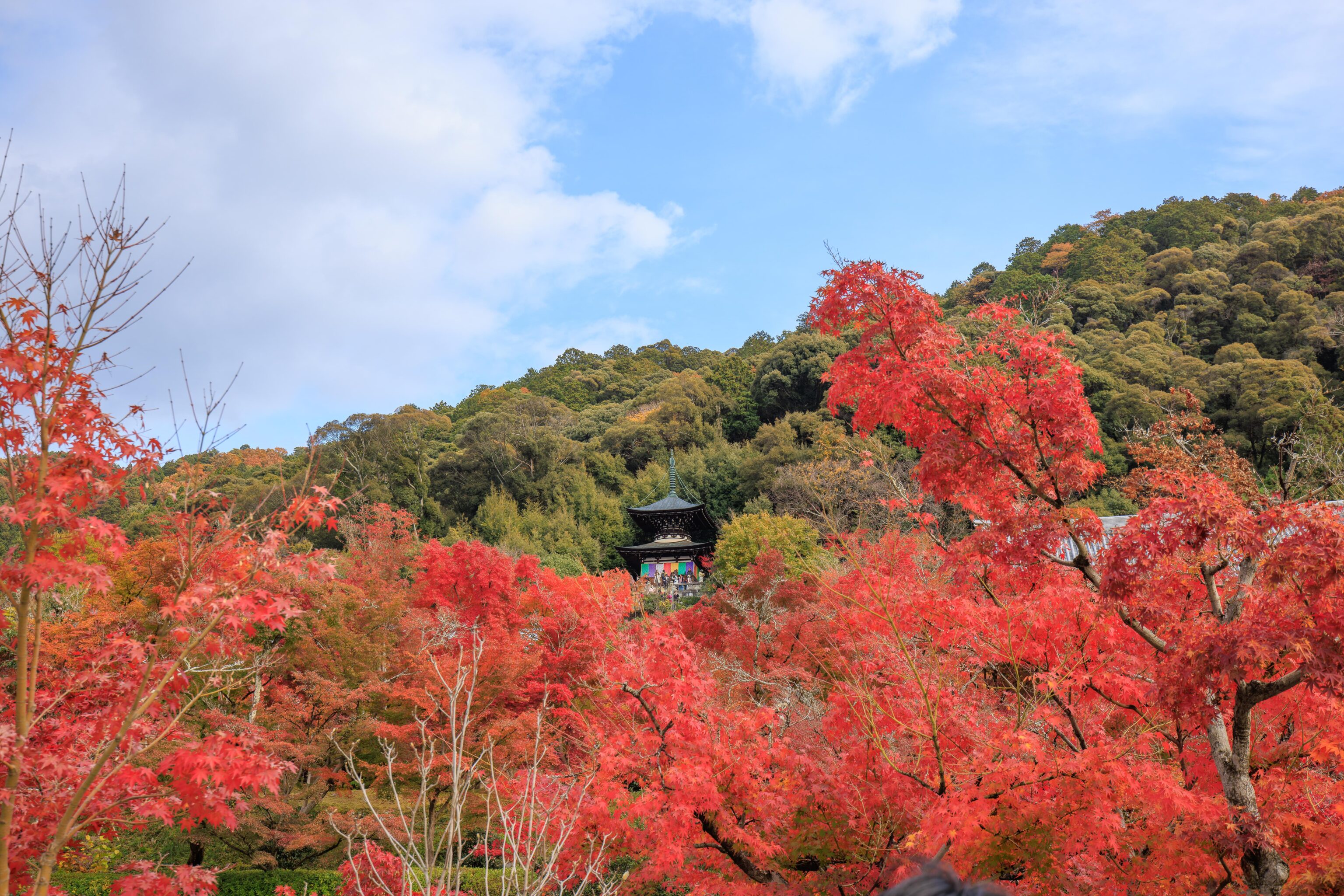
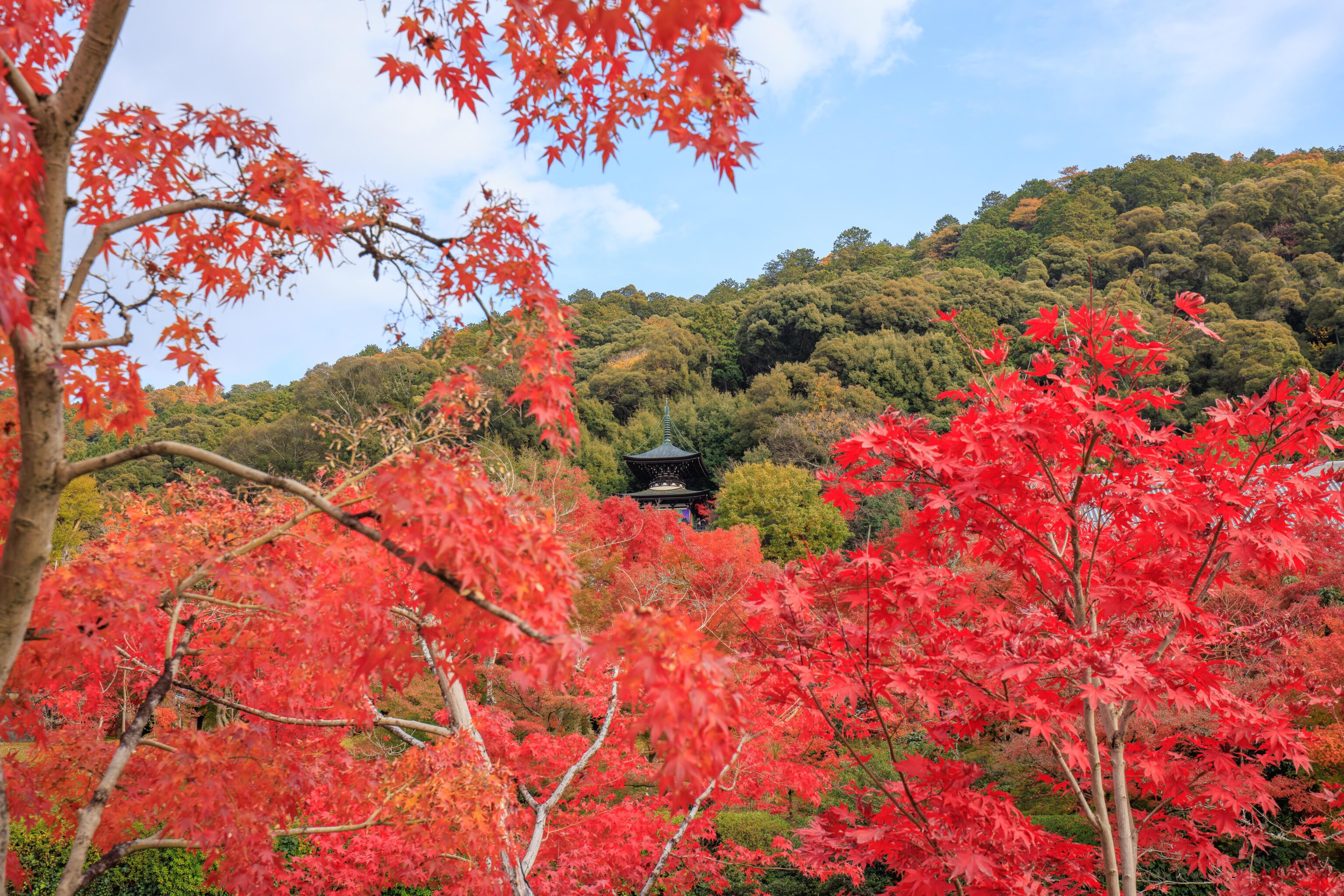
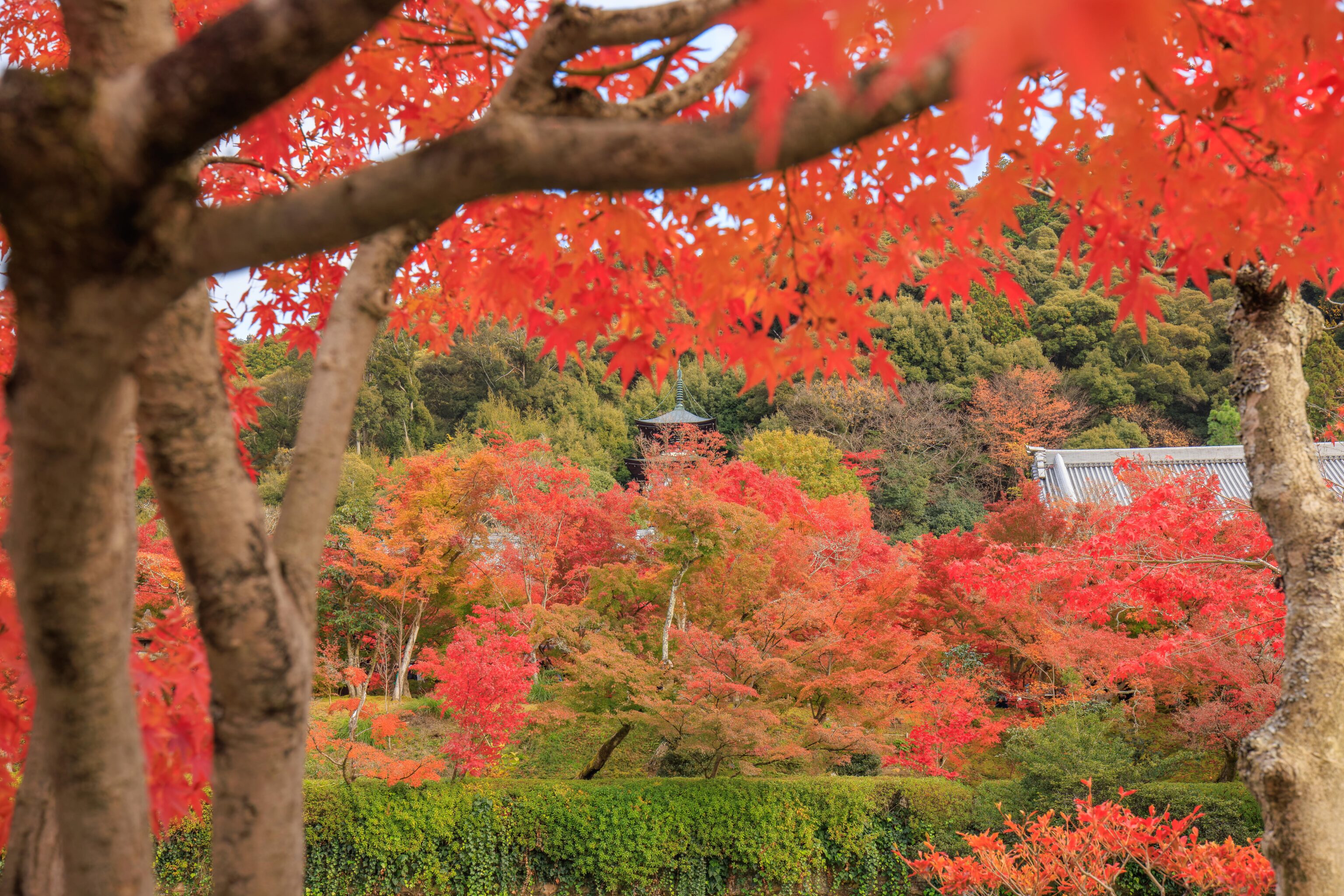
We could see the Taho-to from here. It looks pretty tiny up on the mountainside!
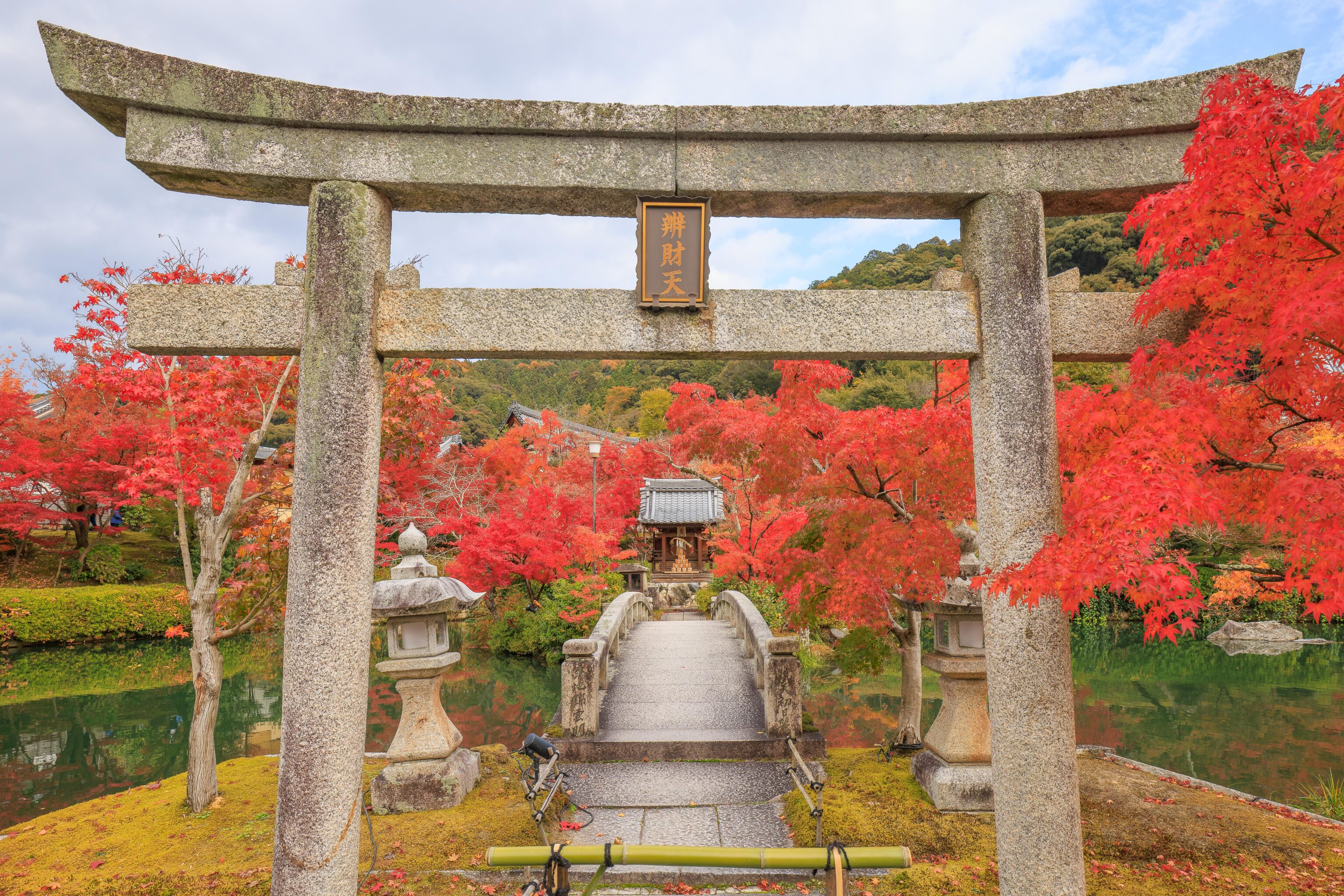
This was a very beautiful view with a bridge leading to a small island on the far side of a stone torii. And with Japanese maples surrounding it all. There were many people photographing here so it was quite a challenge trying to capture the scene!
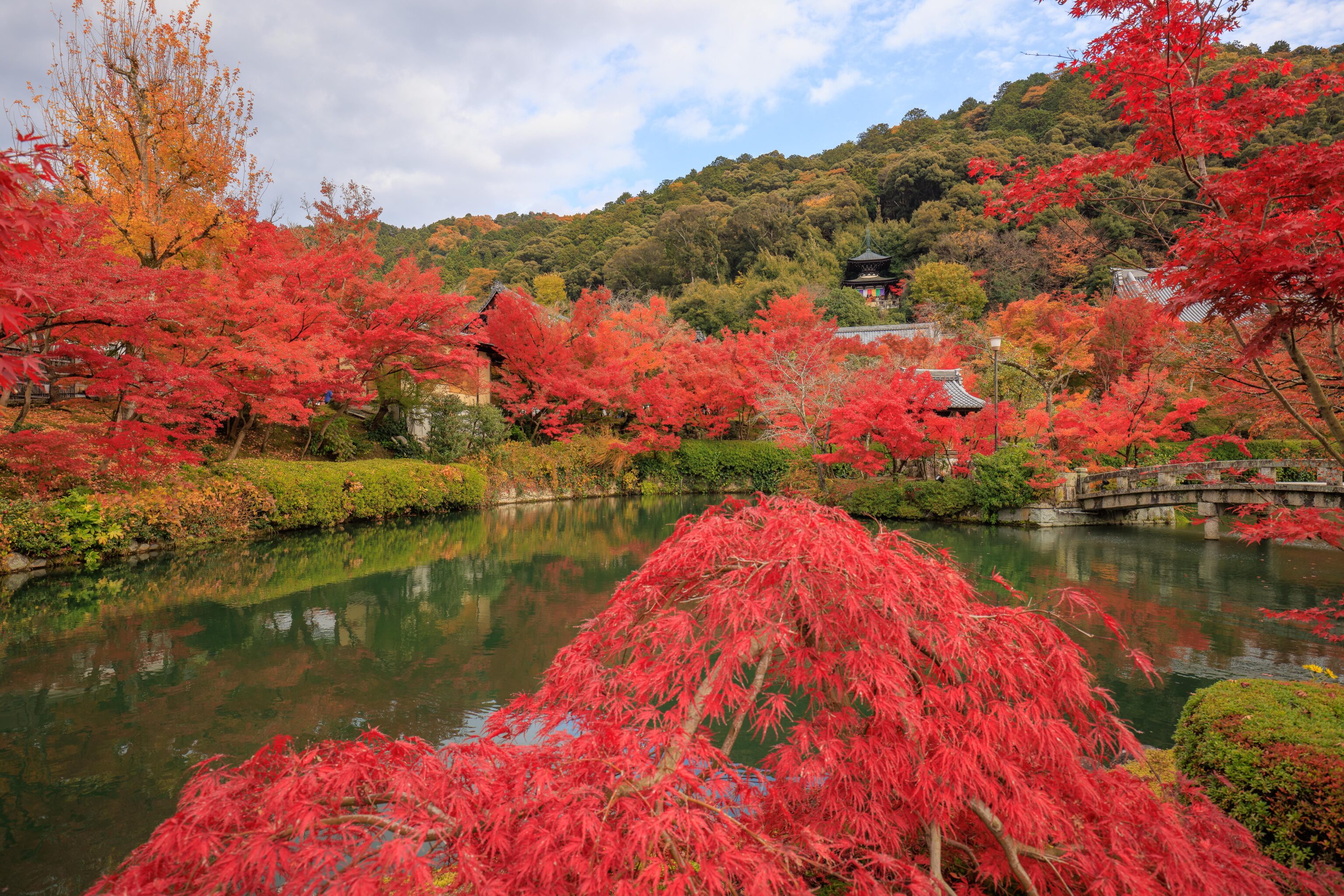
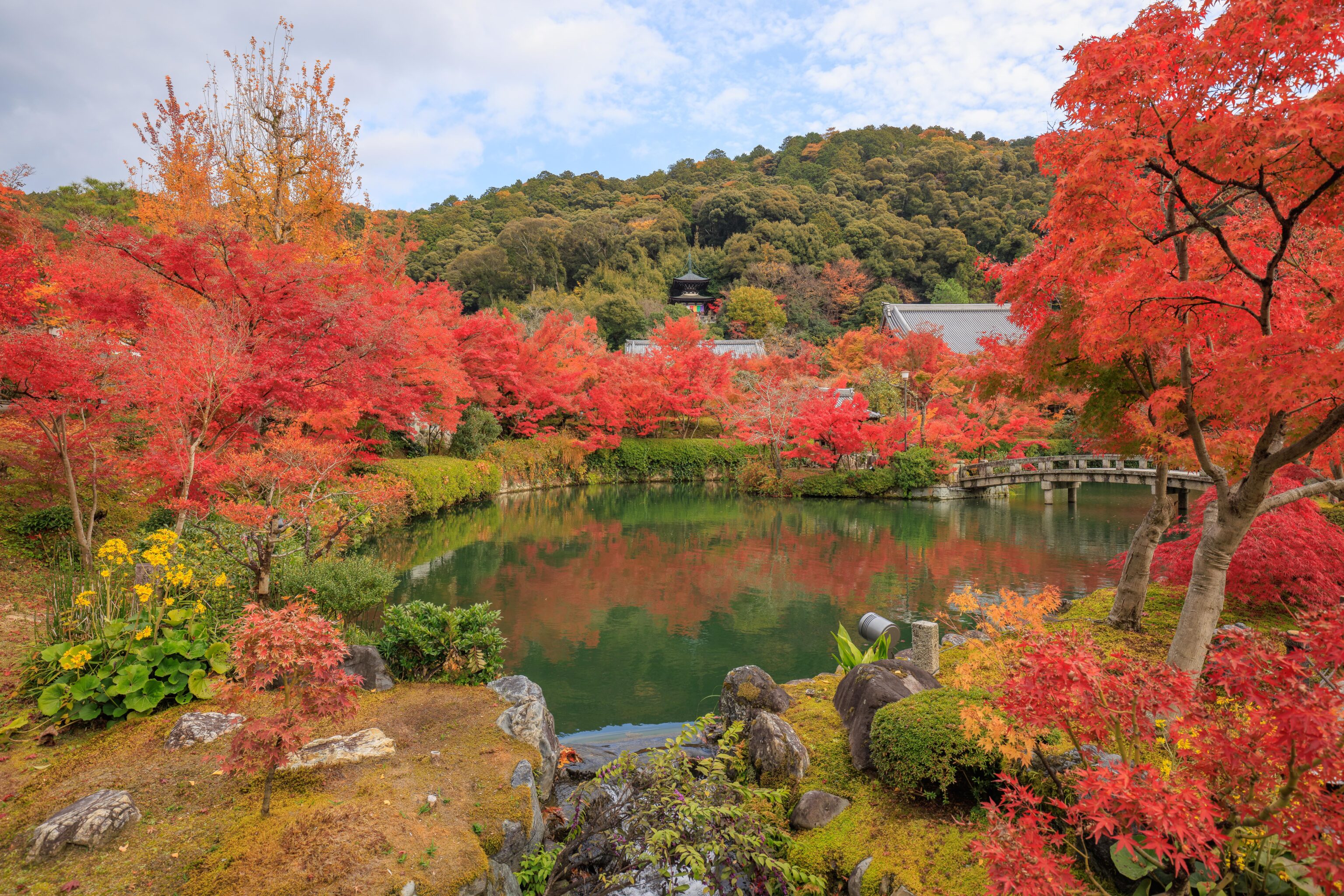
We continued on past the torii until we reached the northwestern corner of the pond.
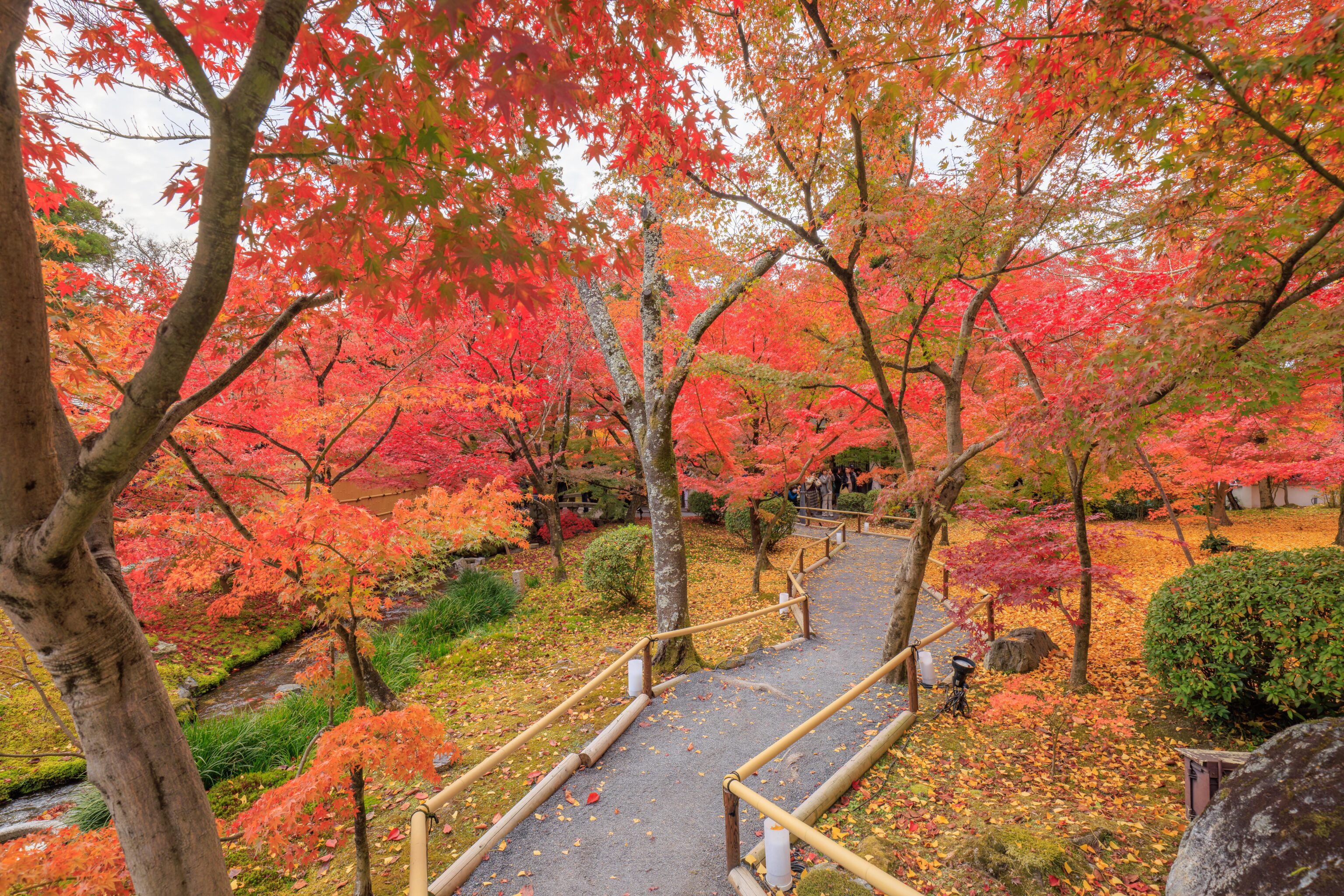
This path, leading to the west away from the pond, was closed off.
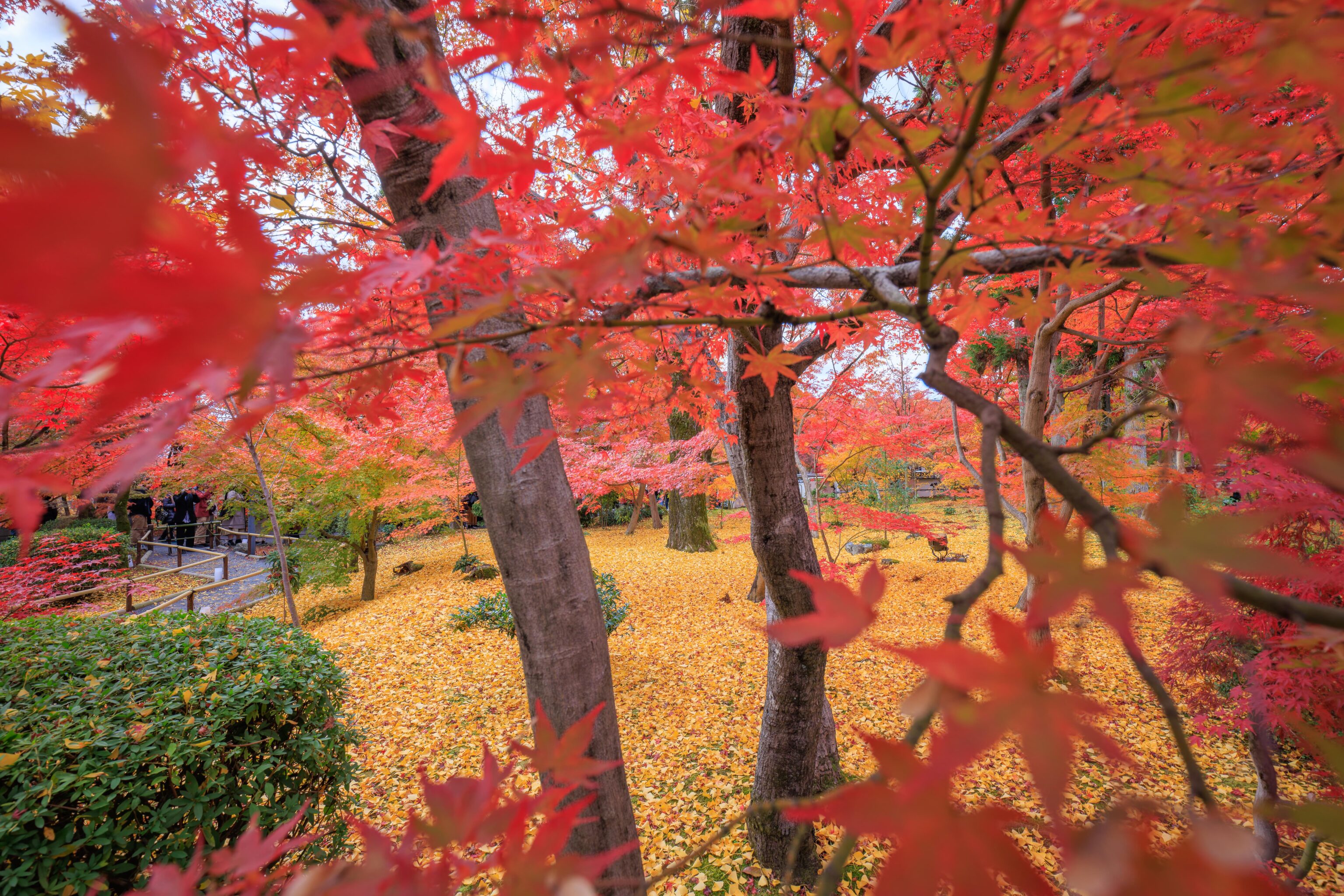
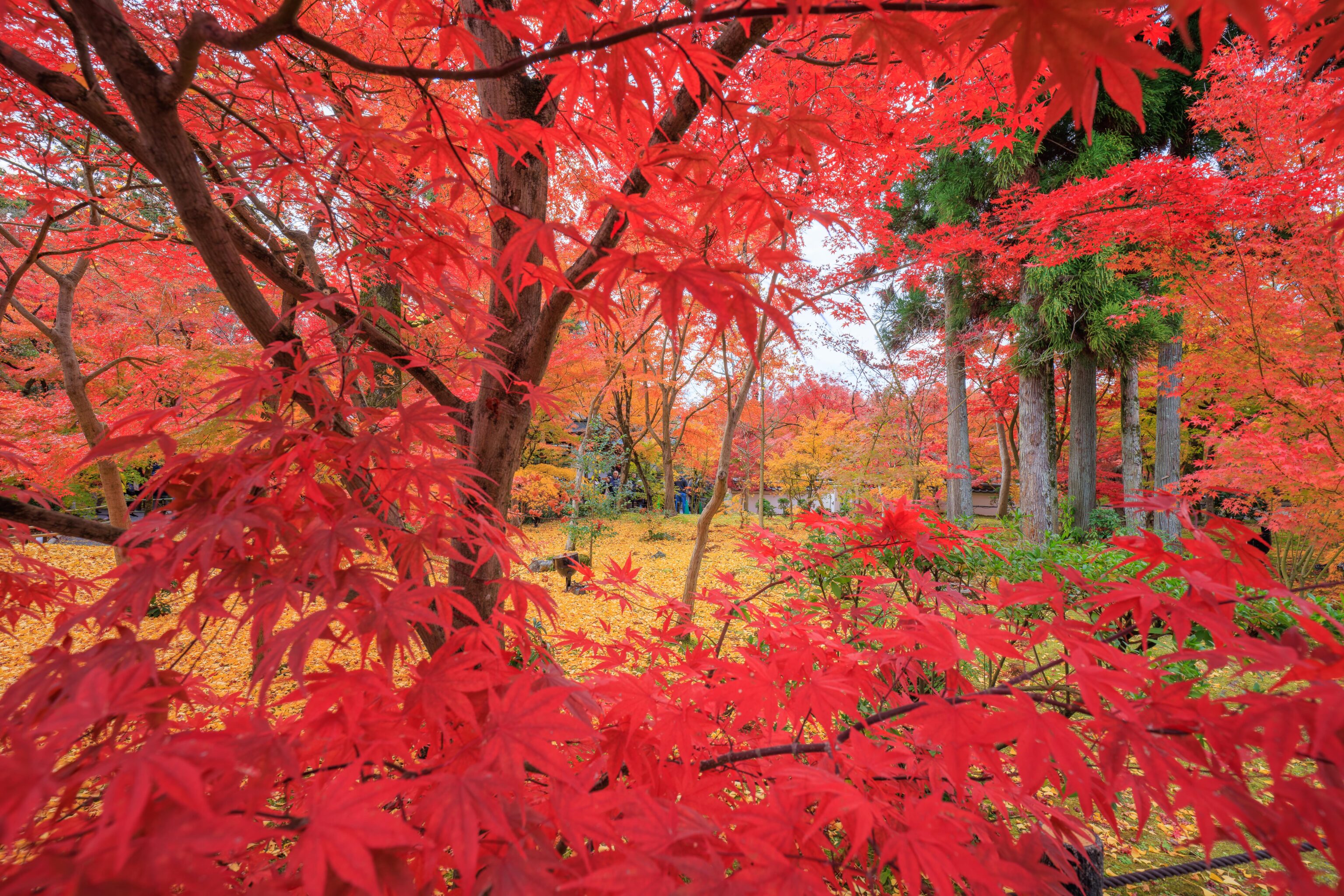
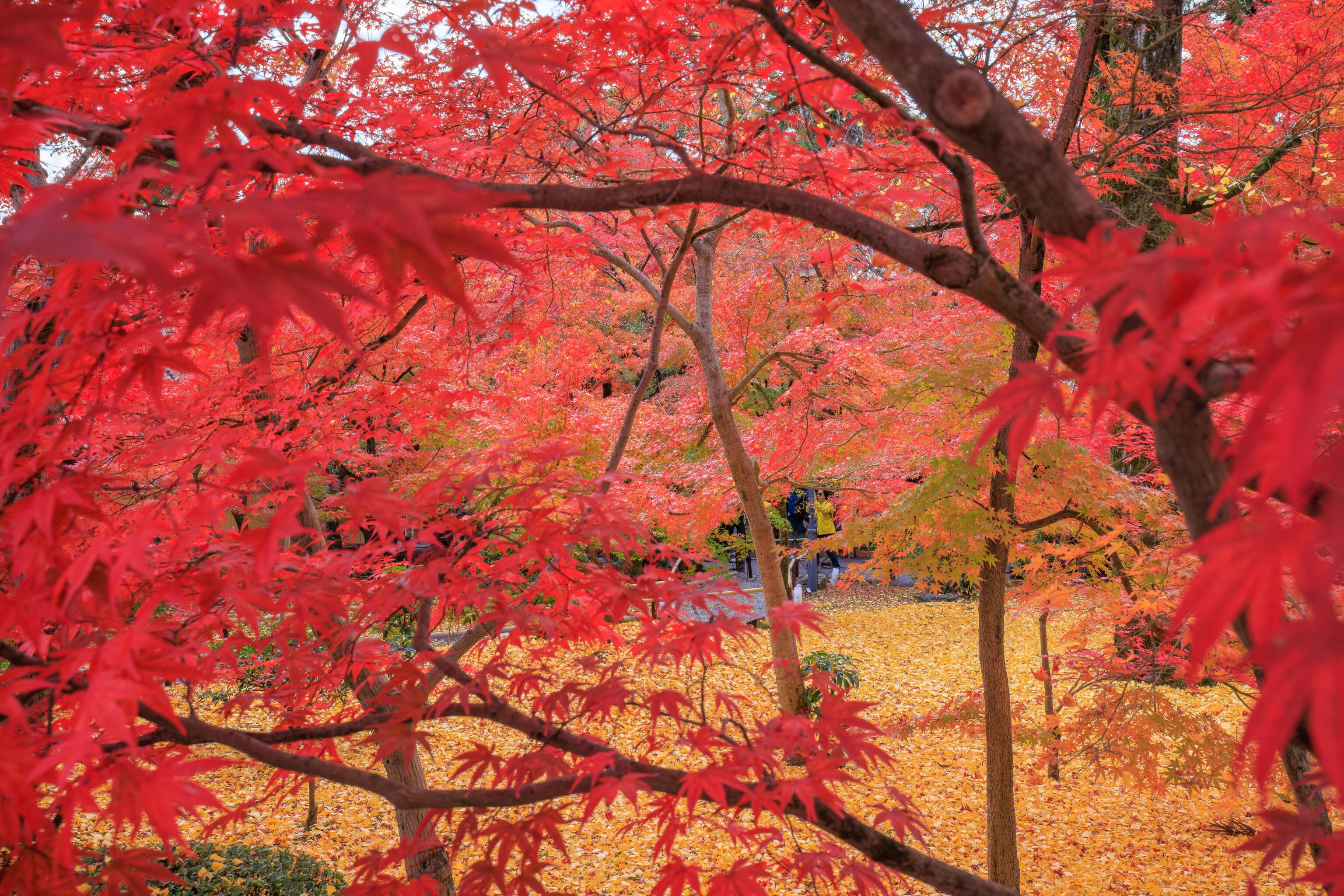
The path around the pond was lined with maples on the west side. Just beyond the maples and to the north of the closed off path, there were many ginko trees which had already dropped their leaves. The ground was a beautiful yellow!
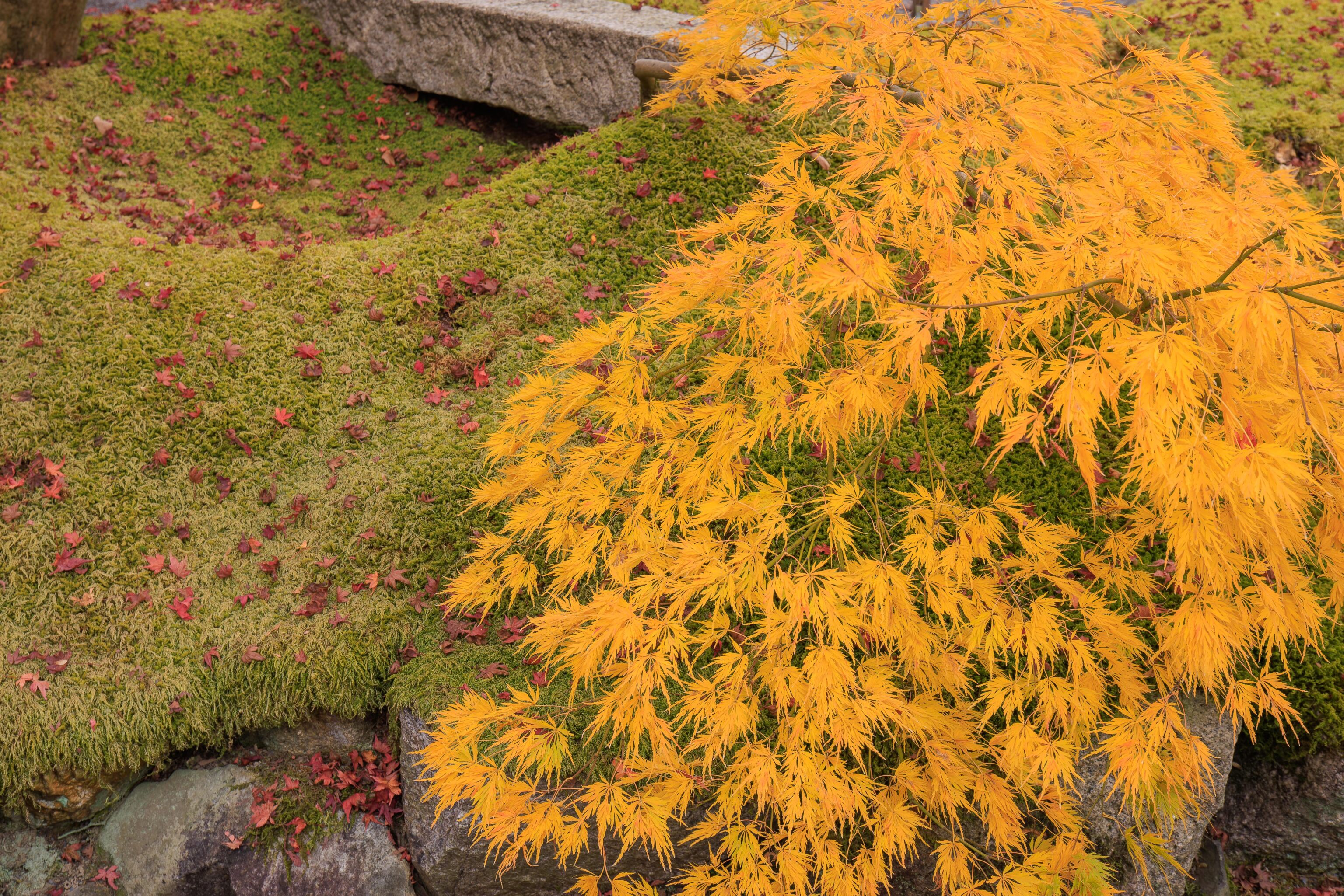
We passed by some beautiful yellow leaves and some very mossy ground!
Nanzen-ji
After exiting Eikando Zenrin-ji, we headed over to Nanzen-ji. Nanzen-ji is just to the south and seems to be separated from Eikando Zenrin-ji by a small canal.
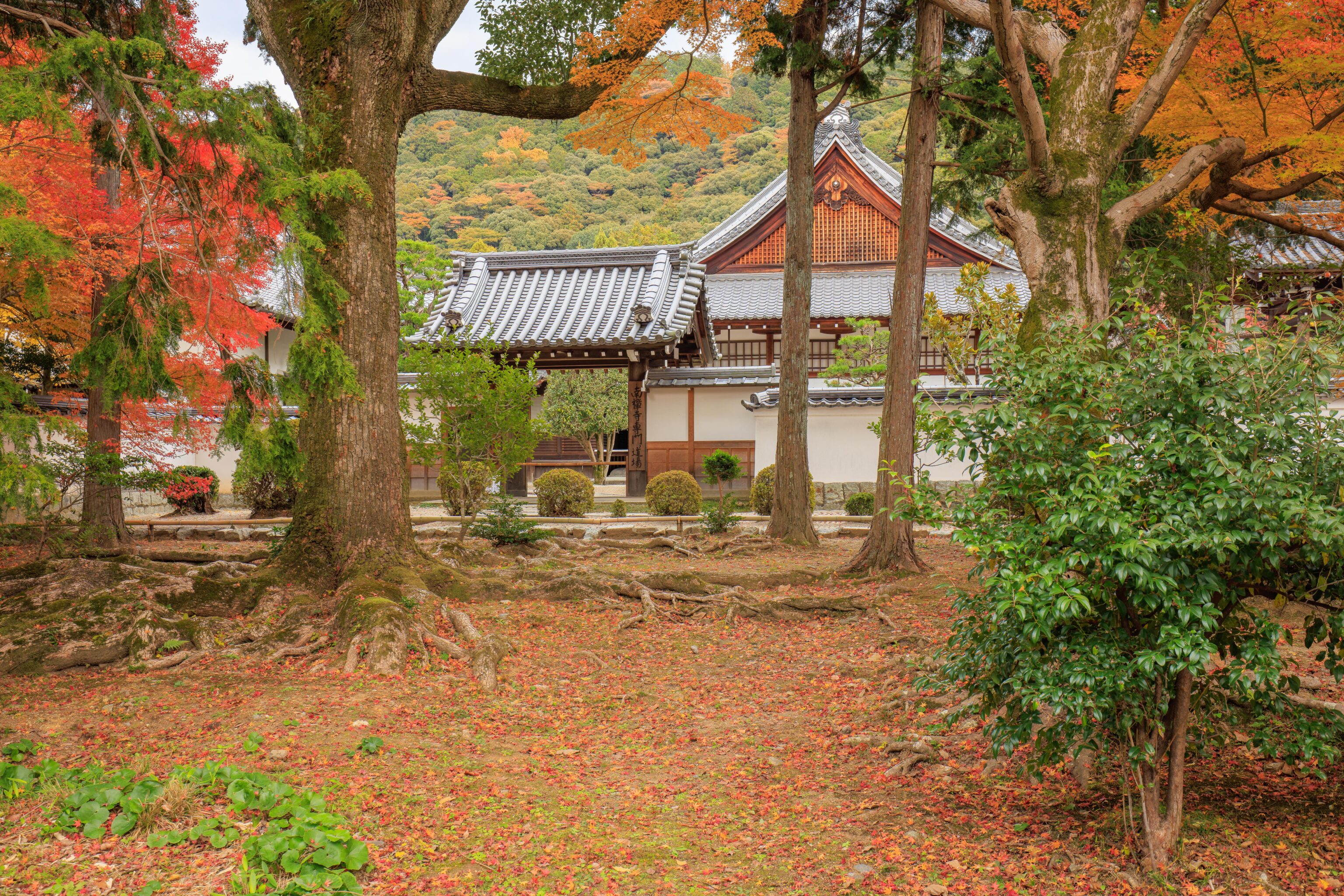
The view as we approached Nanzen-ji from the north.
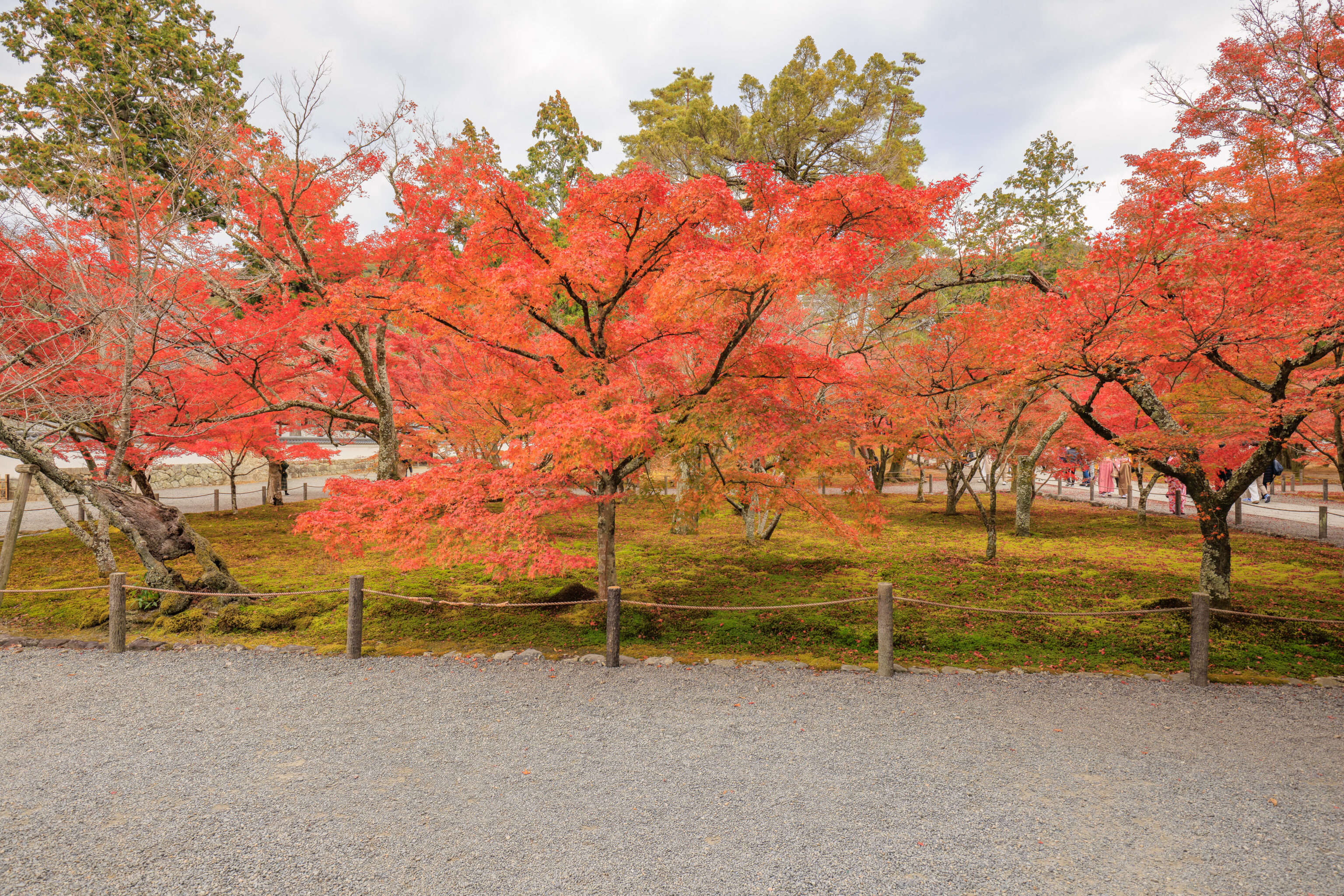
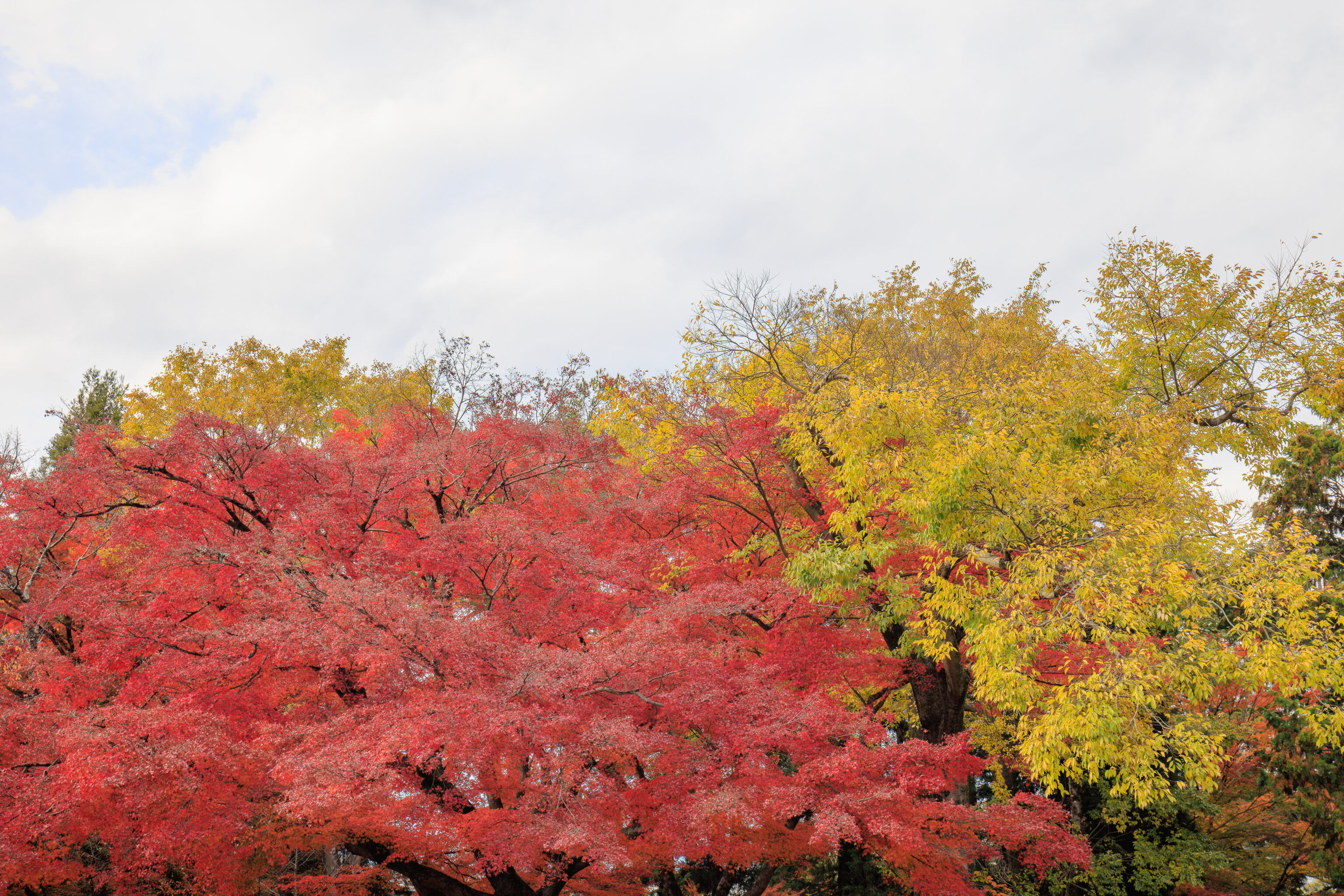
We passed by a few examples of nice fall foliage.
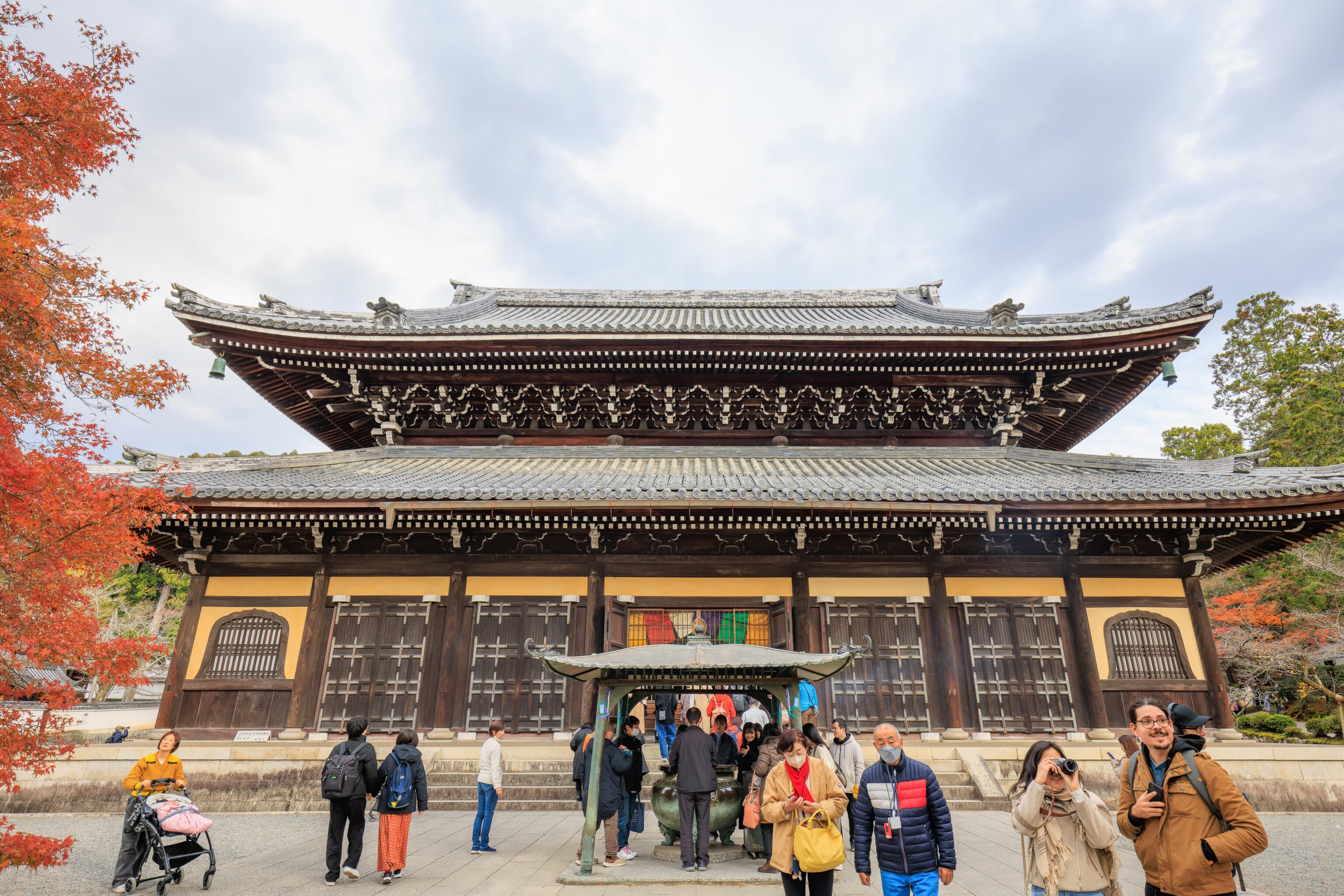
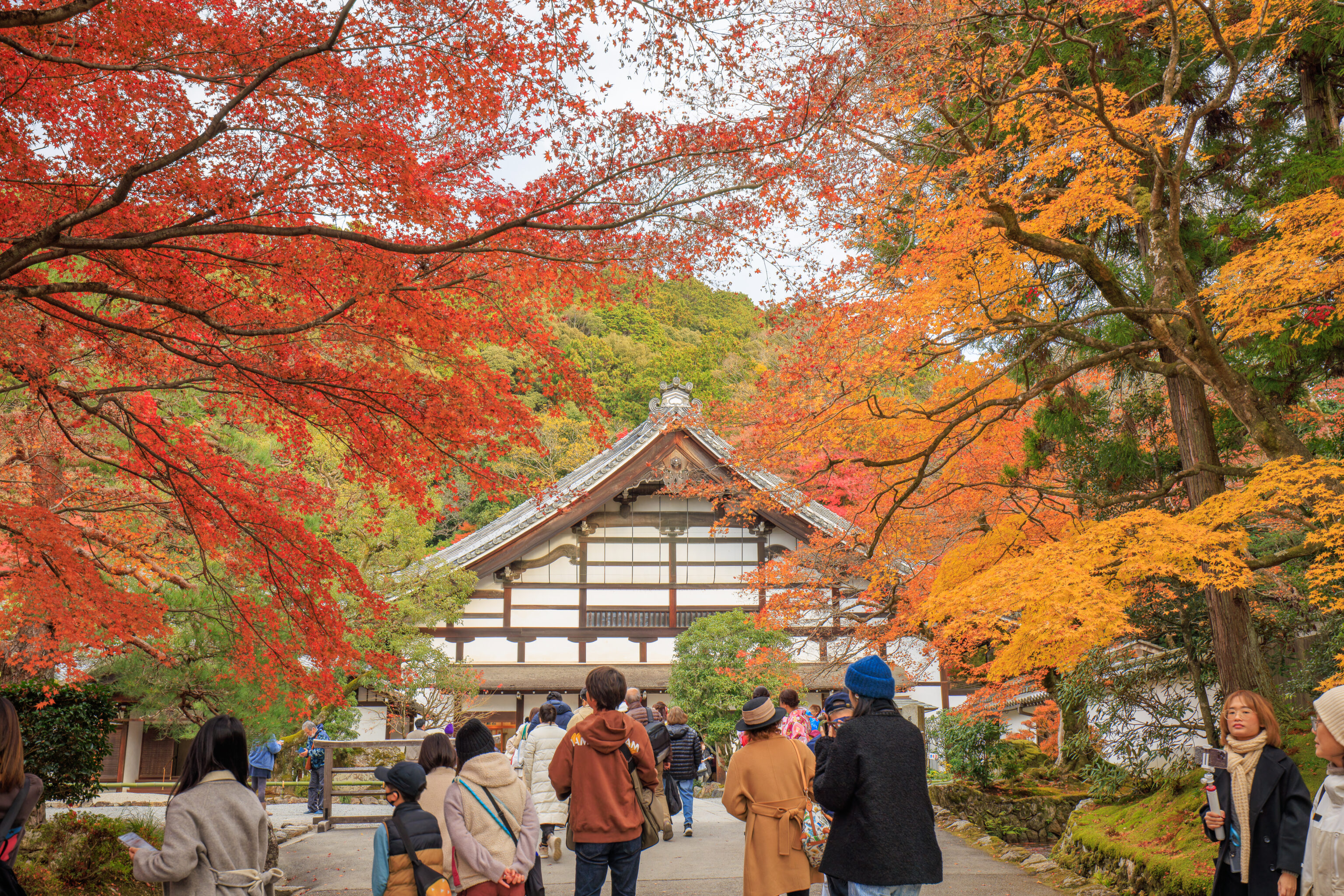
It was fairly busy here.
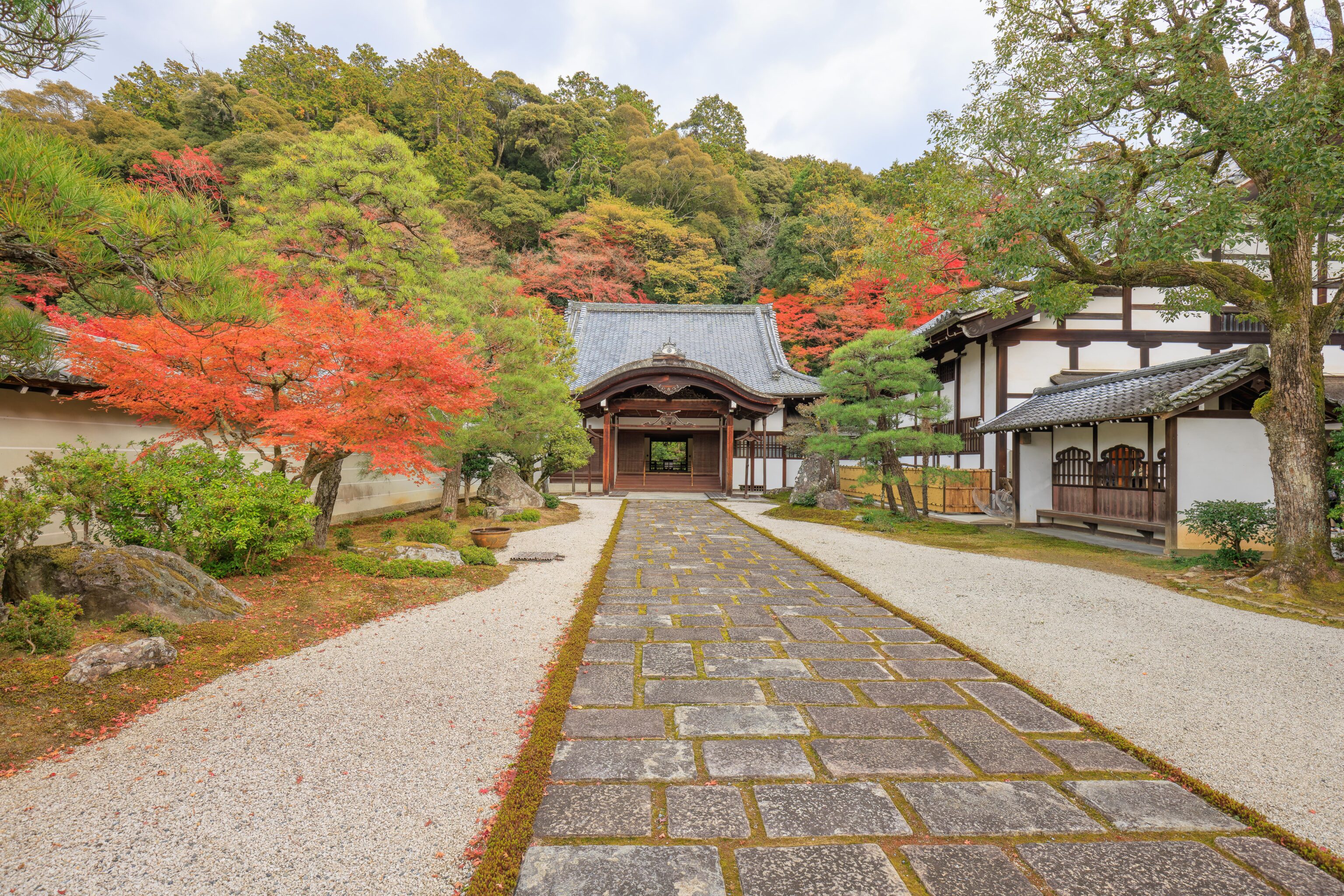
This long inaccessible path led to a temple entrance. The path is not aligned with the temple building though!
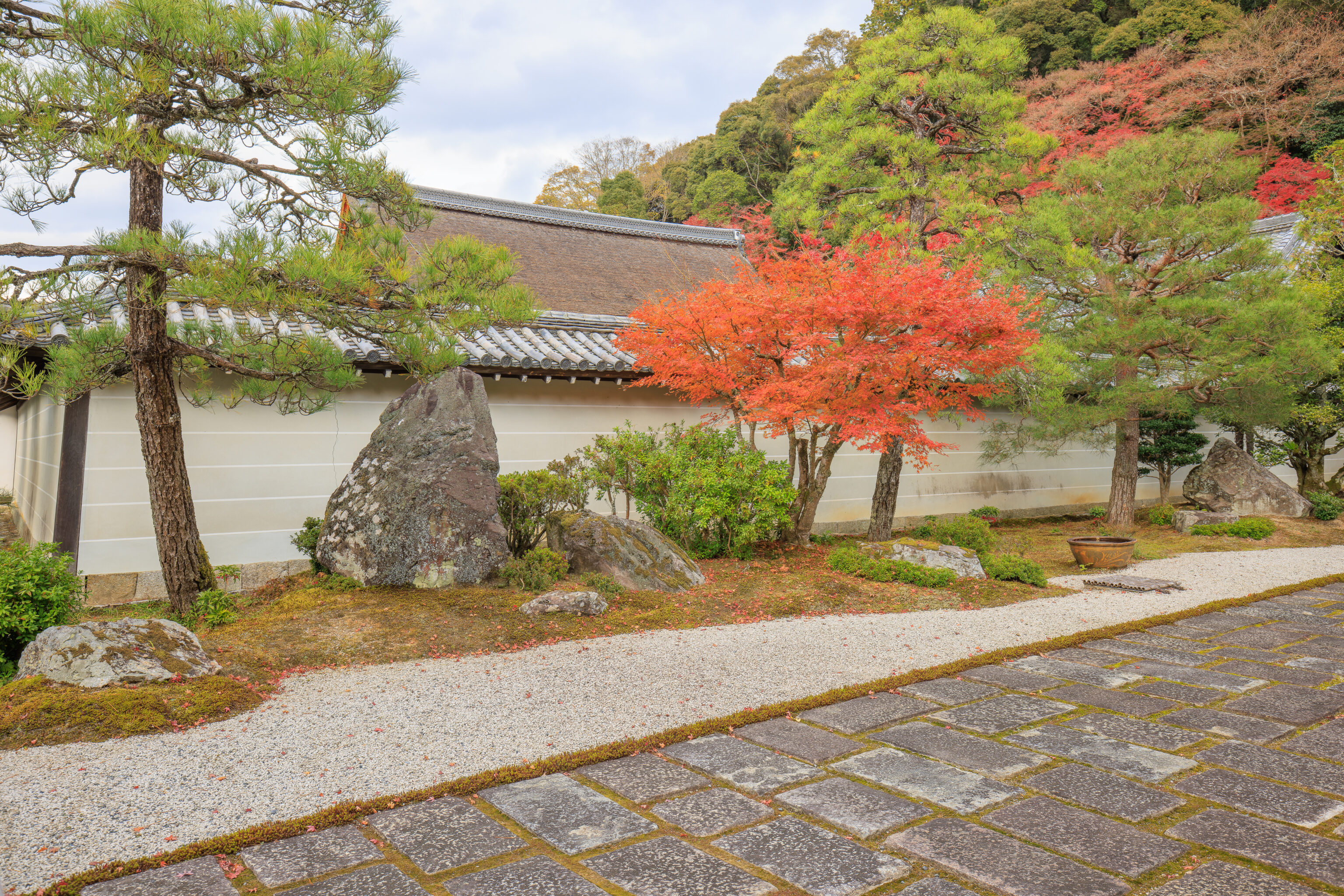
There was just a little bit of colorful leaves here.
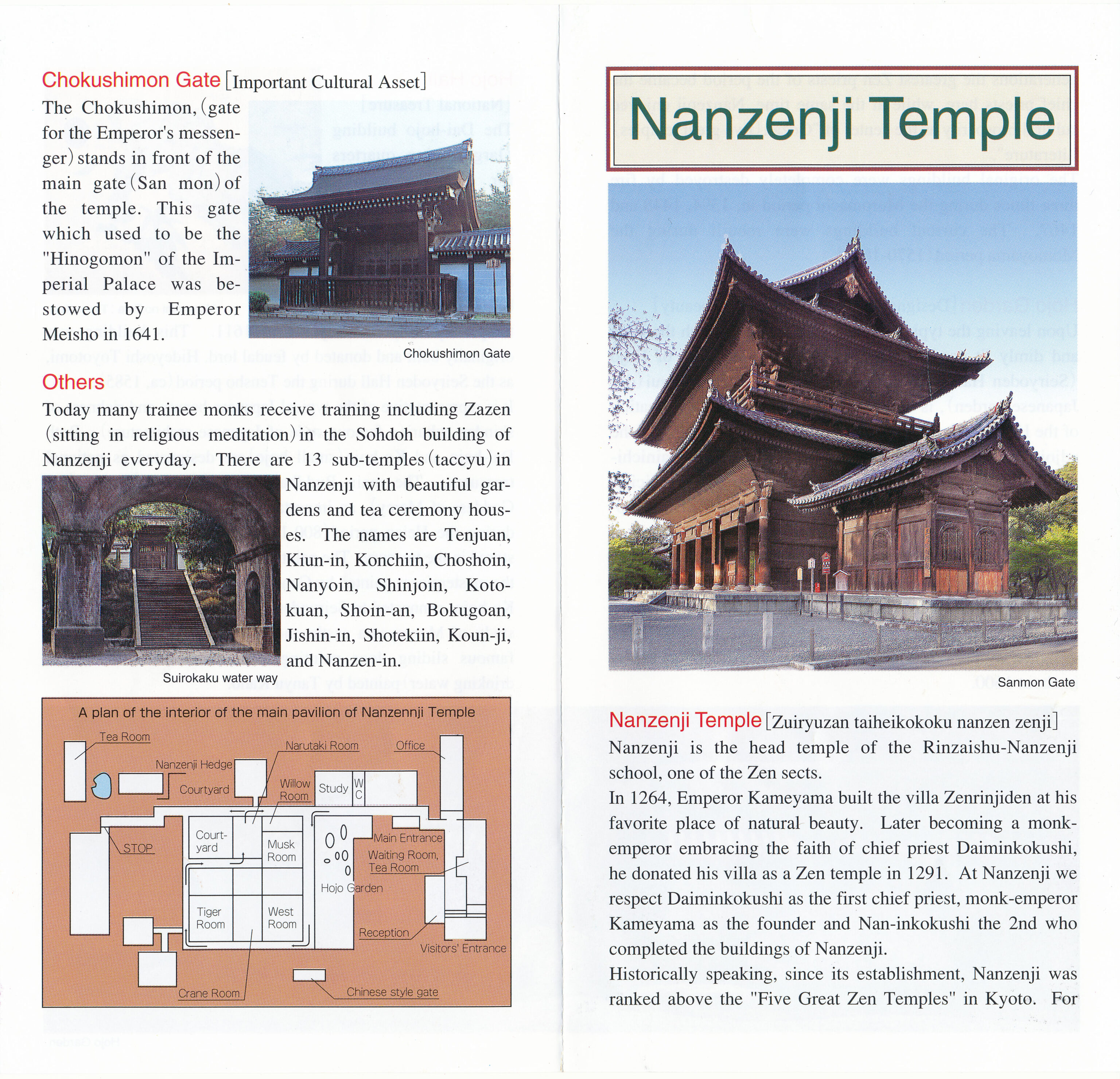
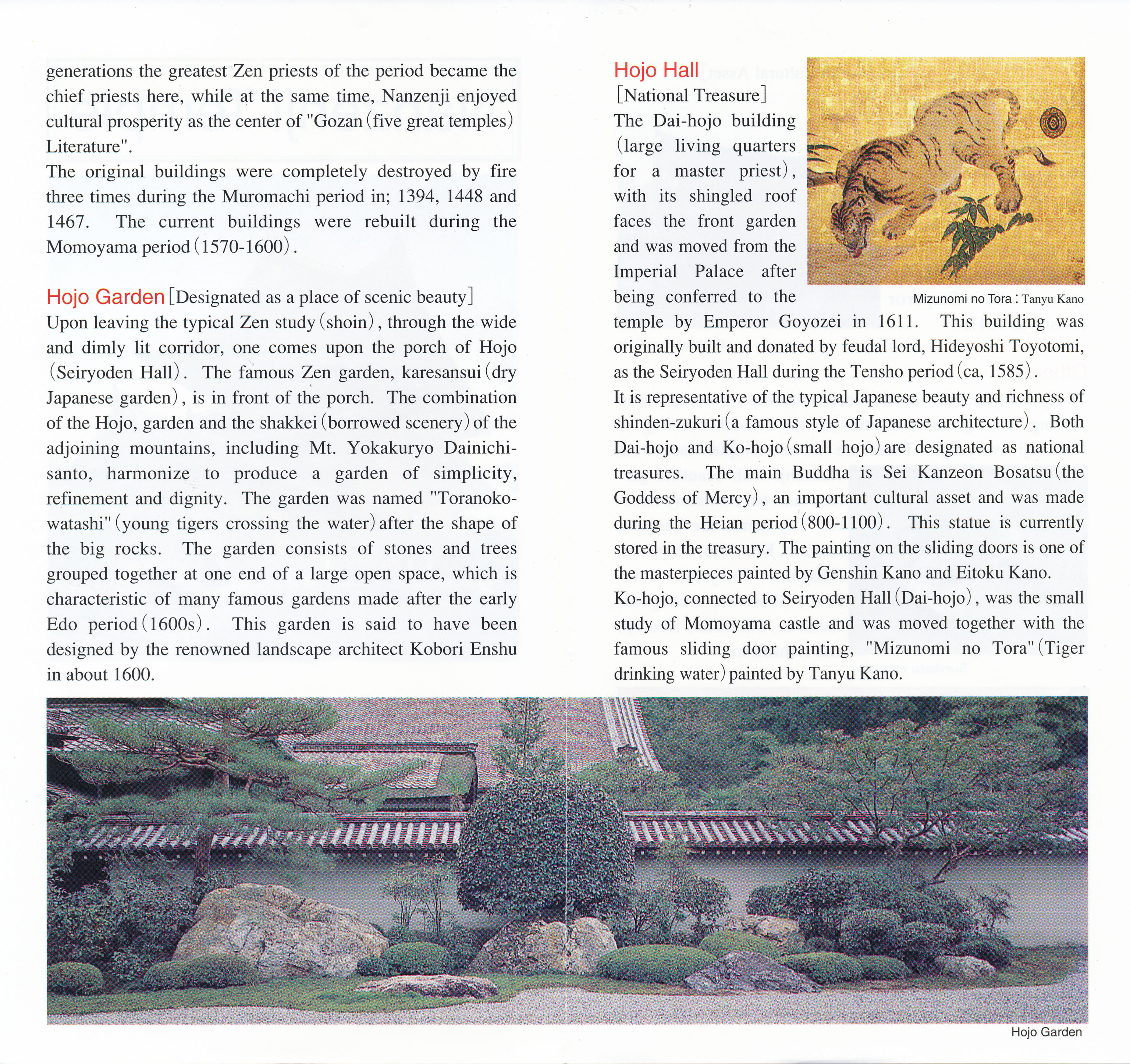
We visited the ticketed area and were provided with an English language pamphlet.
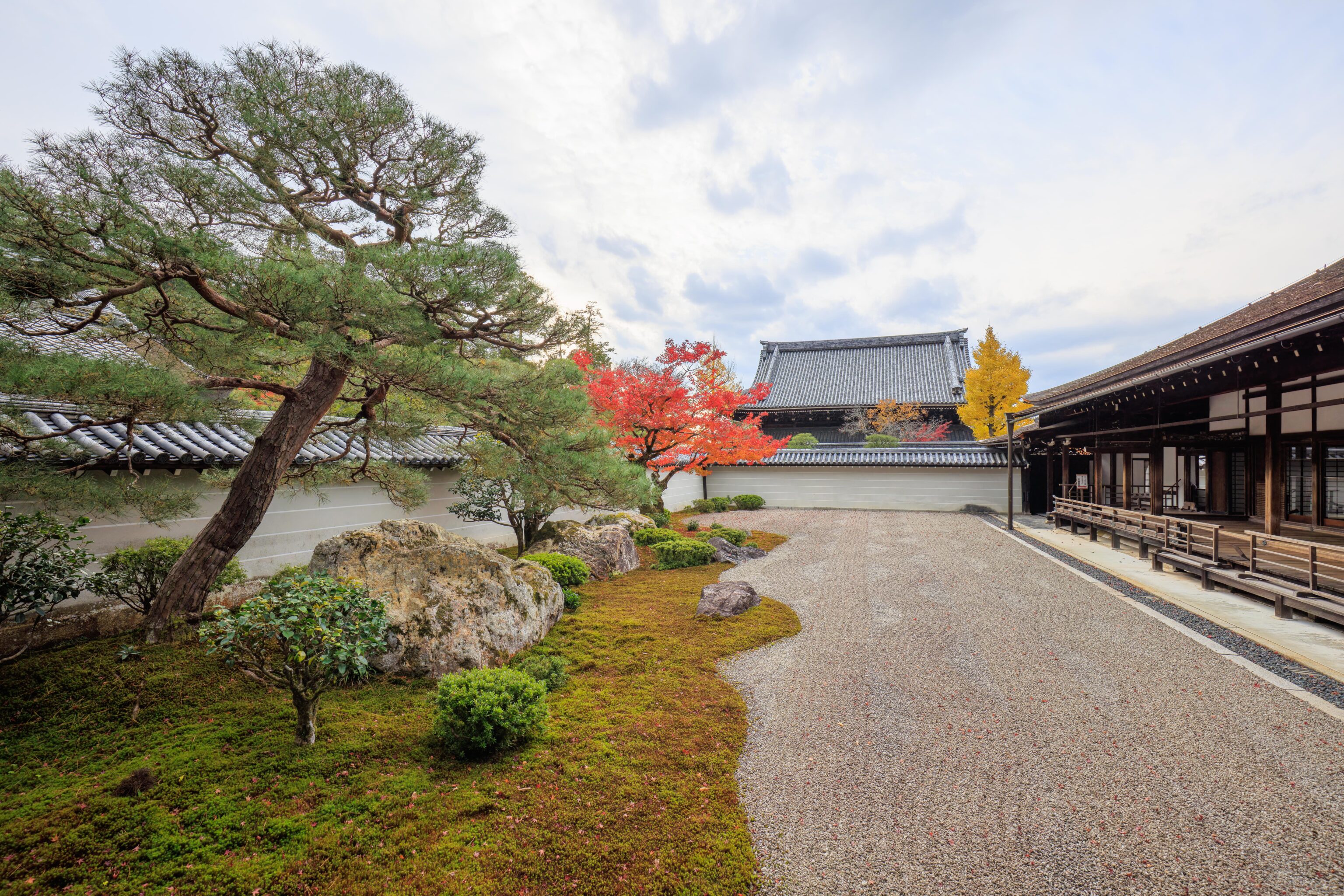
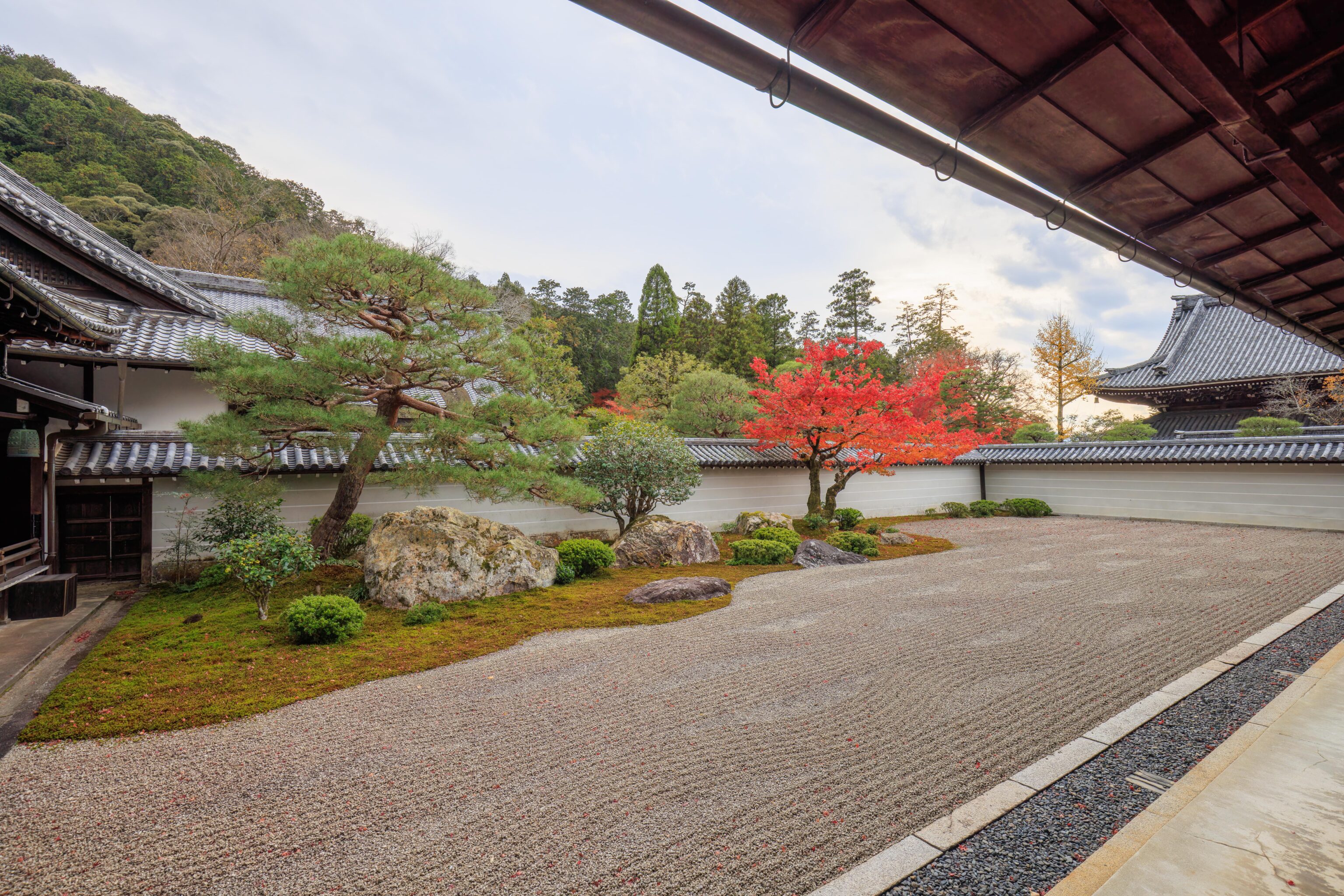
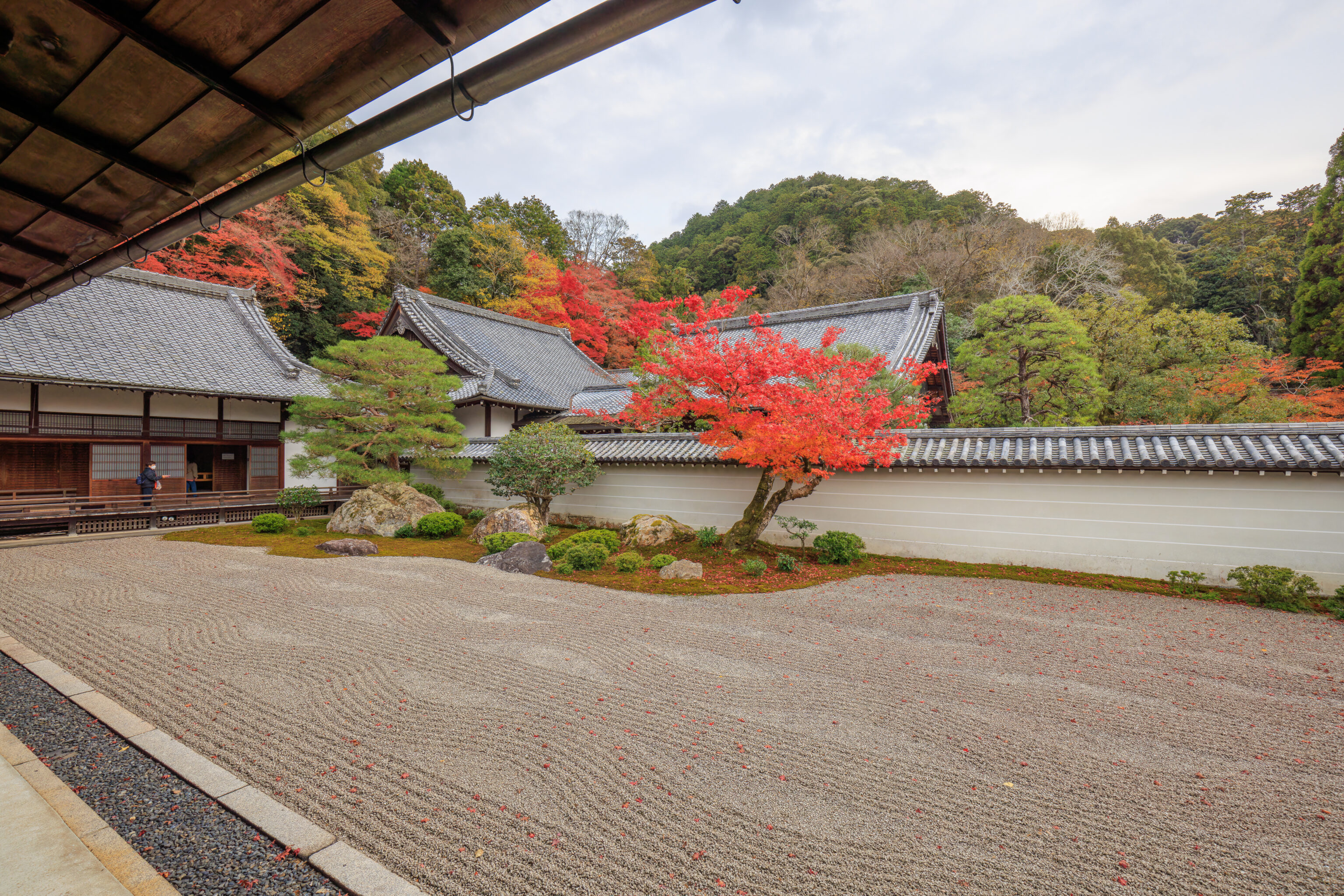
We walked by a nice dry garden with wavy raked patterns.
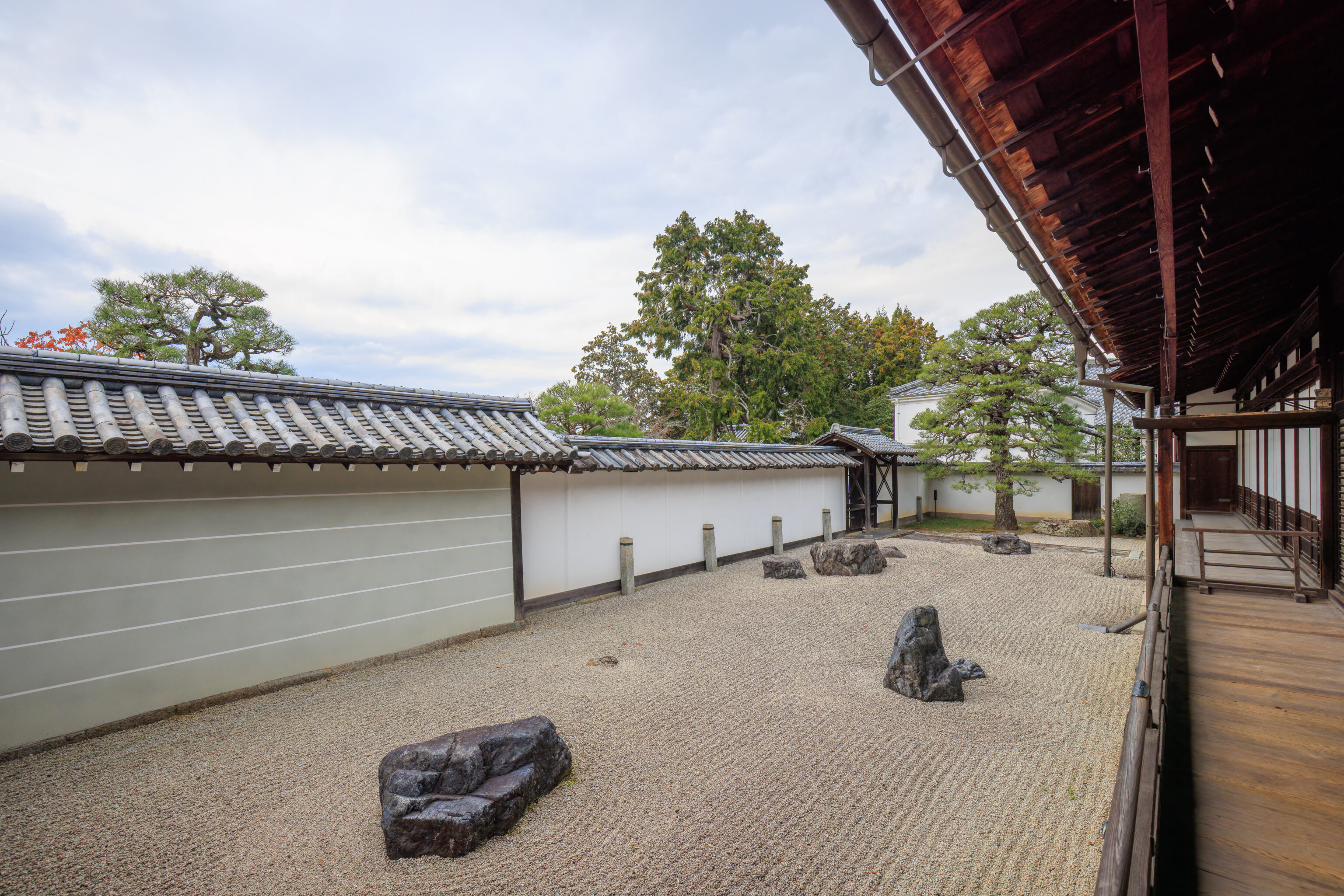
A different dry garden with raking that circles a few rocks of various shapes and sizes.
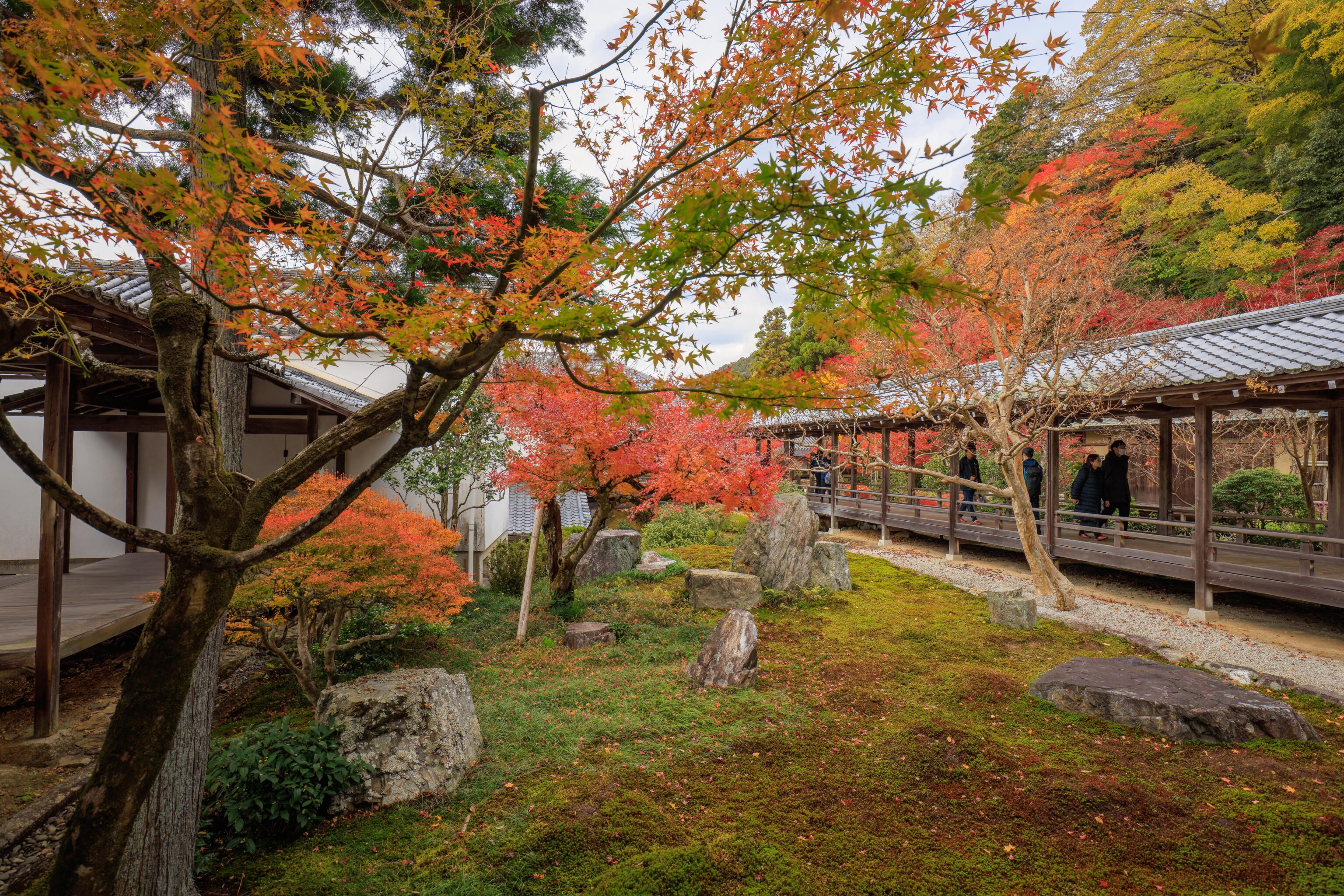
Not very busy compared to Eikando Zenrin-ji!
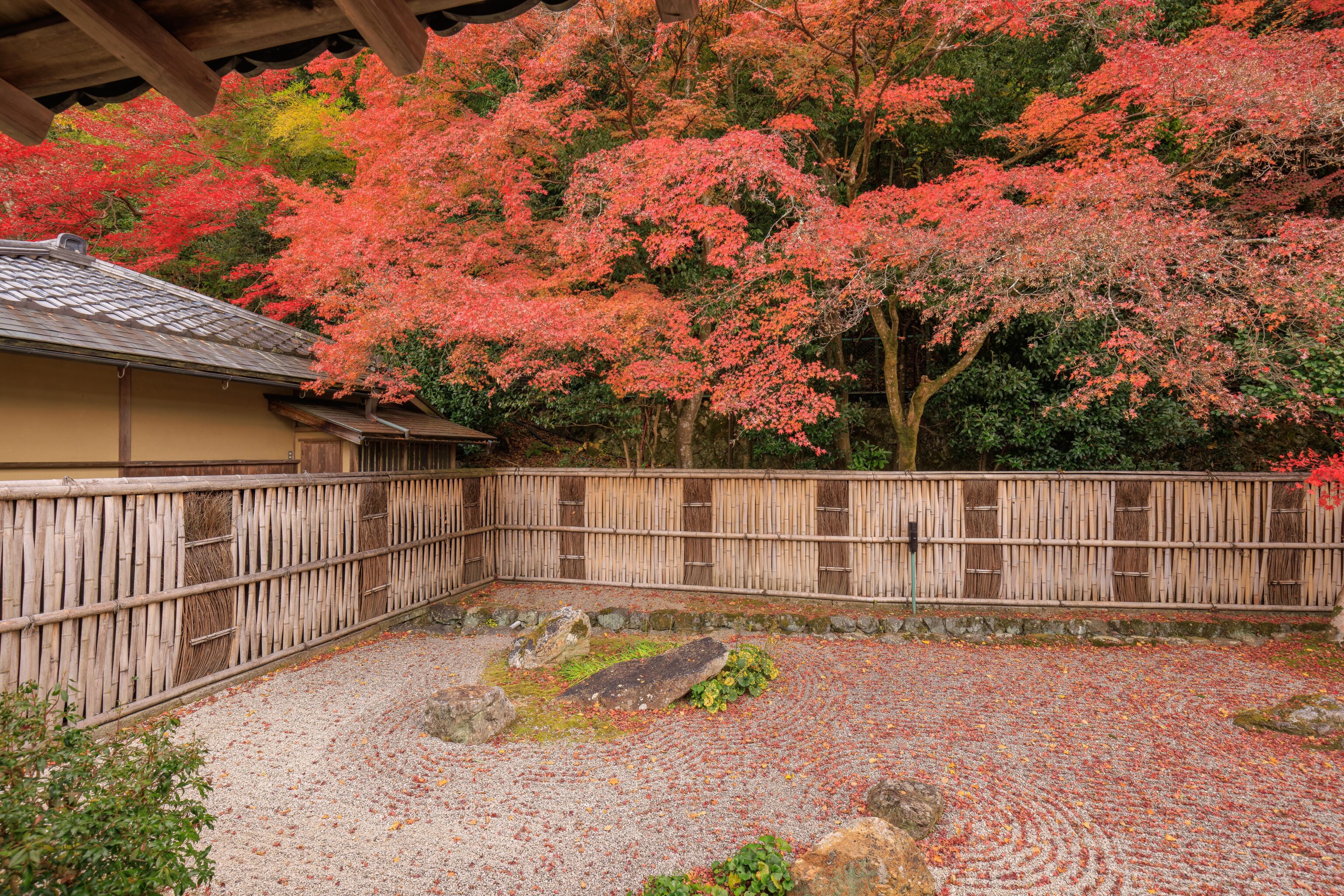
This section of dry garden had a unique appearance due to the maple leaves that had fallen on the raked sand.
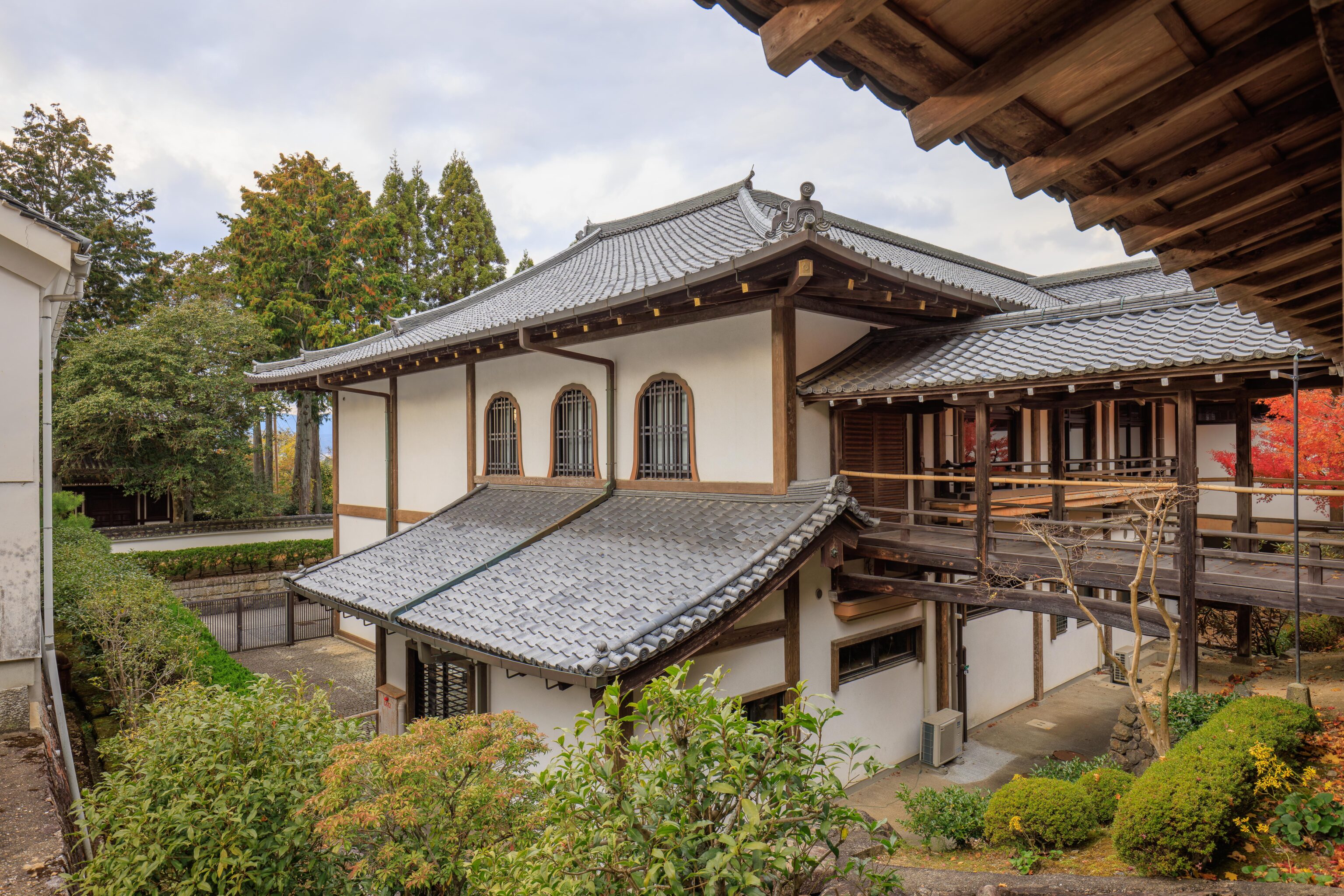
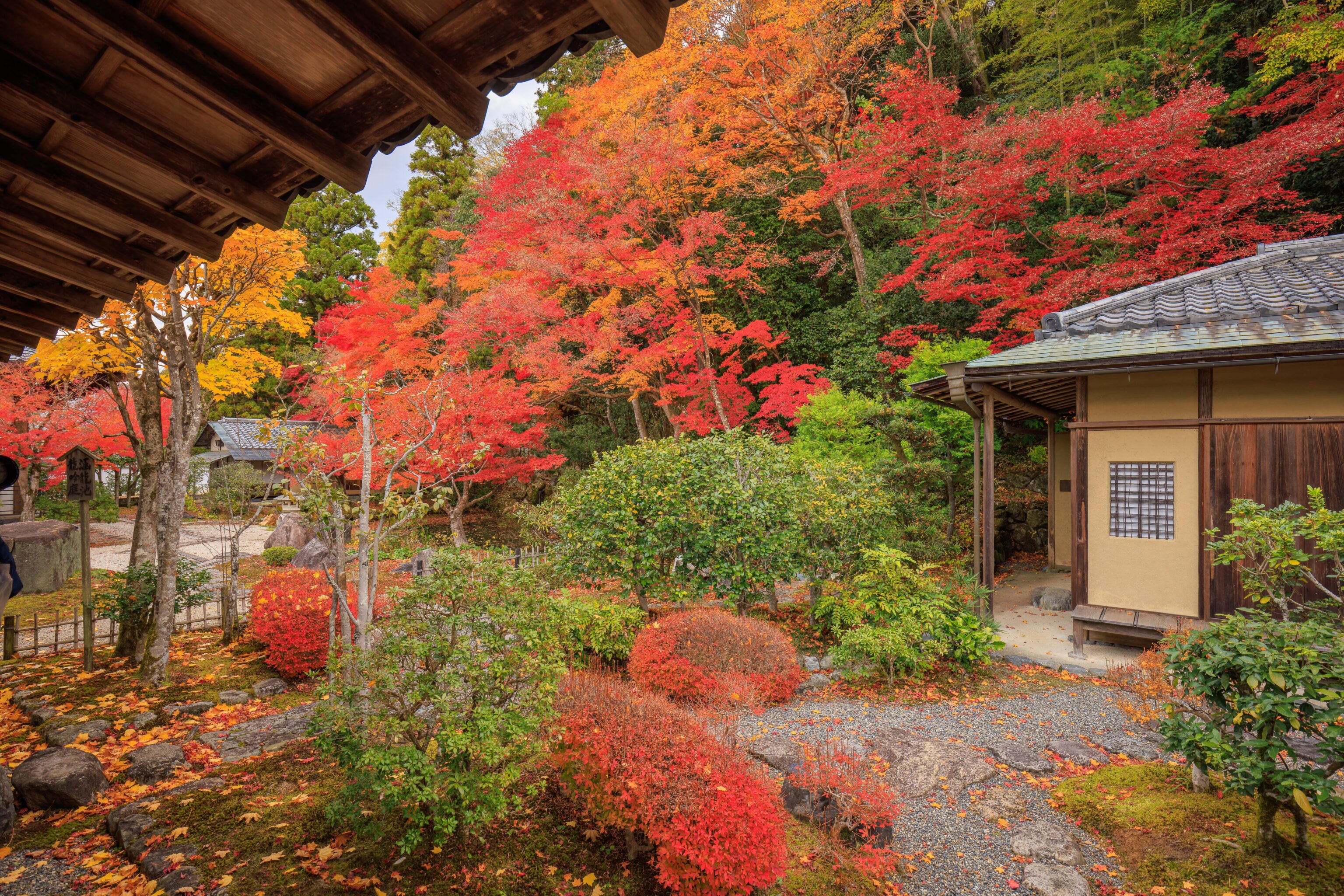
We continued to walk through the temple buildings.
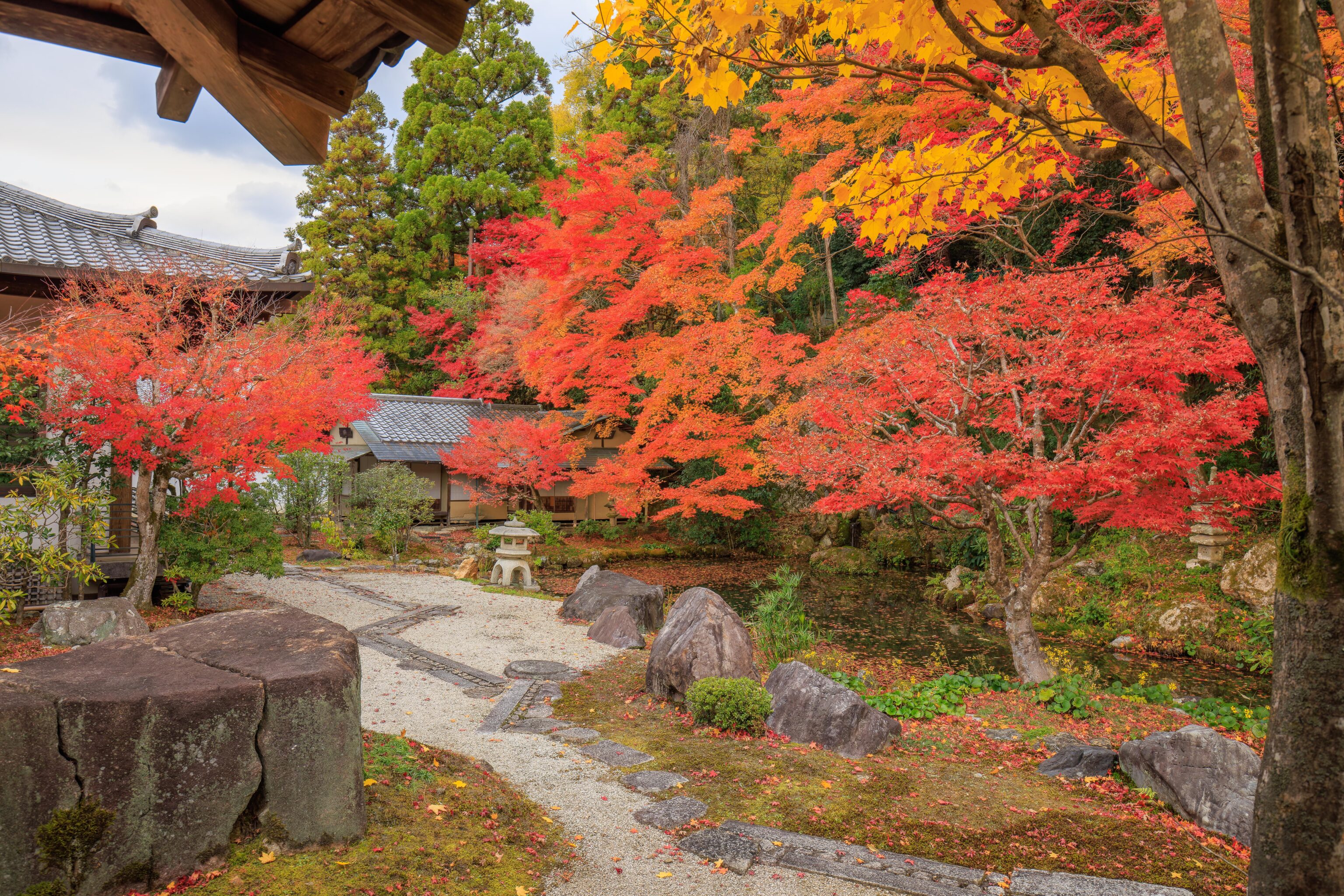
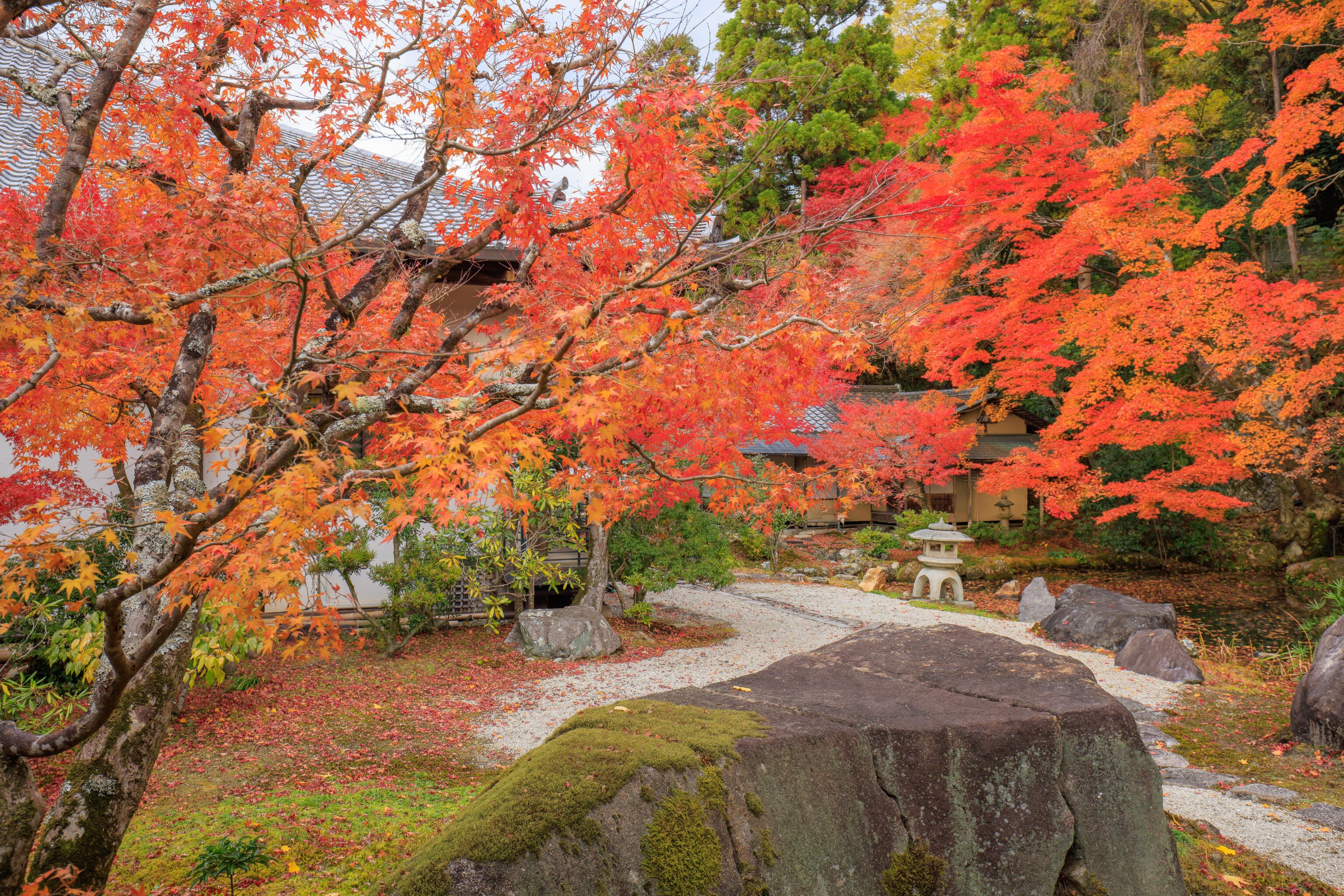
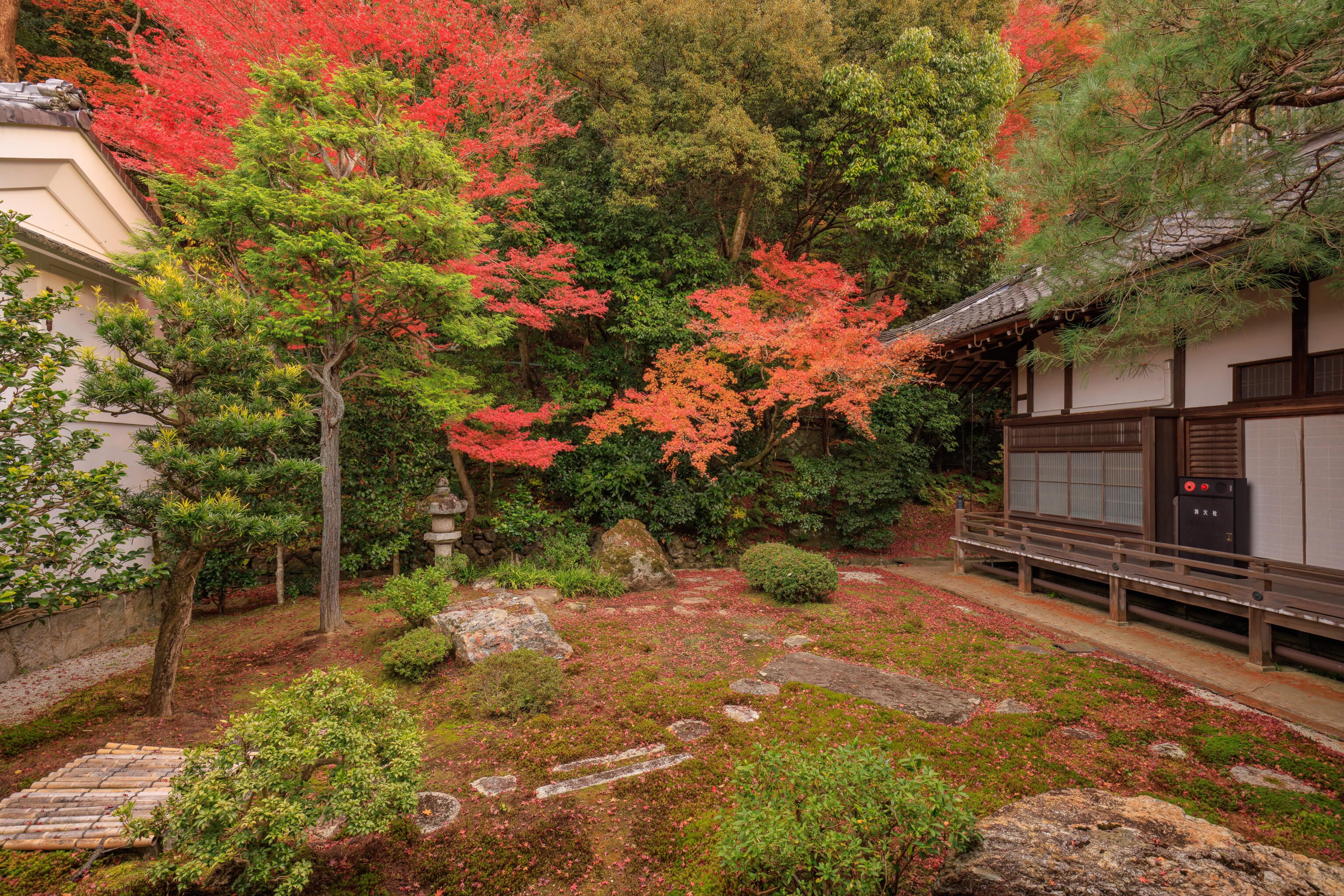
The path stones on the ground here almost seem to indicate an eight plank bridge!
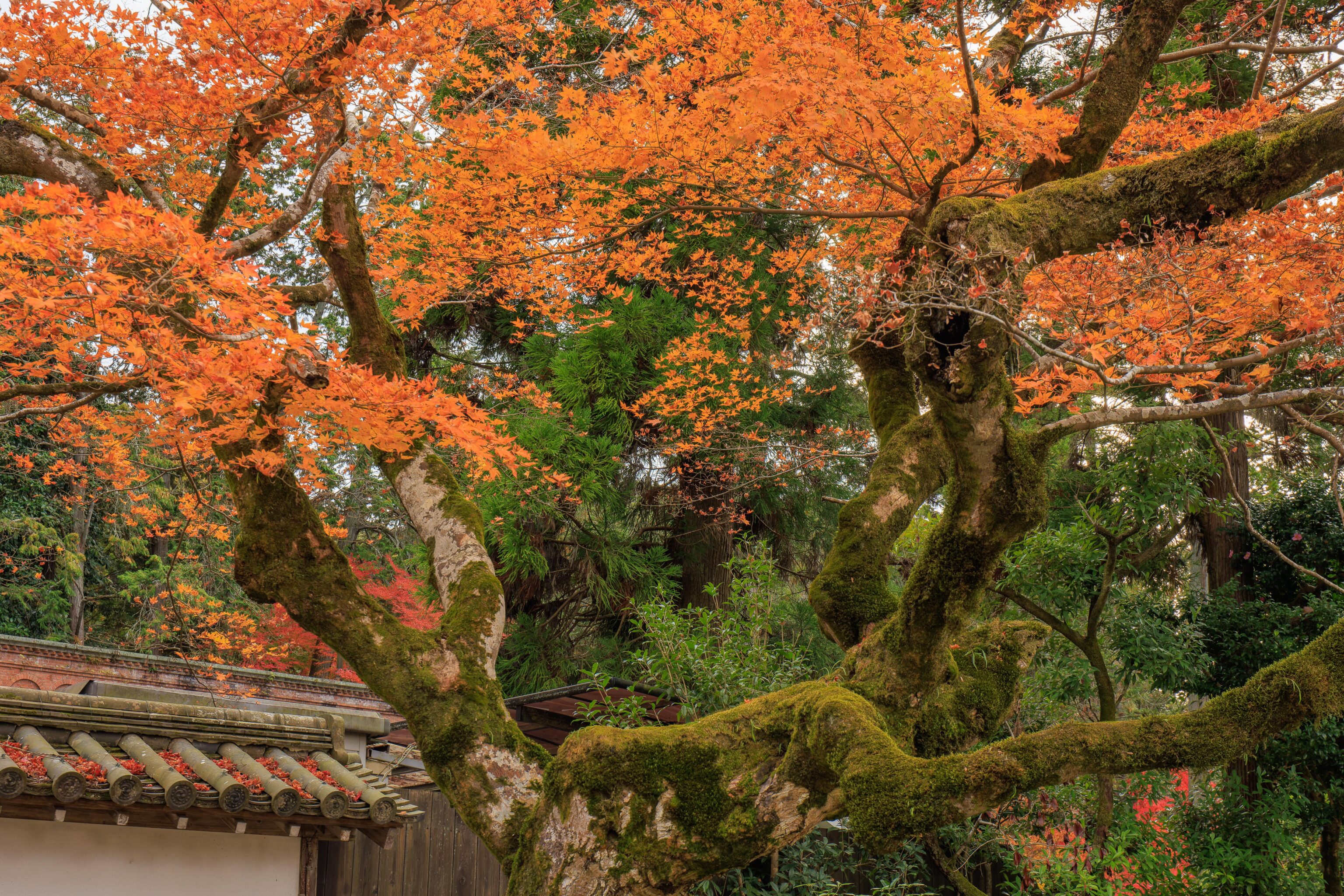
After exiting the ticketed area, we walked to the south to head towards the Suirokaku, an aqueduct bridge at the southern side of Nanzen-ji. We have been here before so didn’t spend much time here. We passed by this pretty mossy Japanese maple on the way.
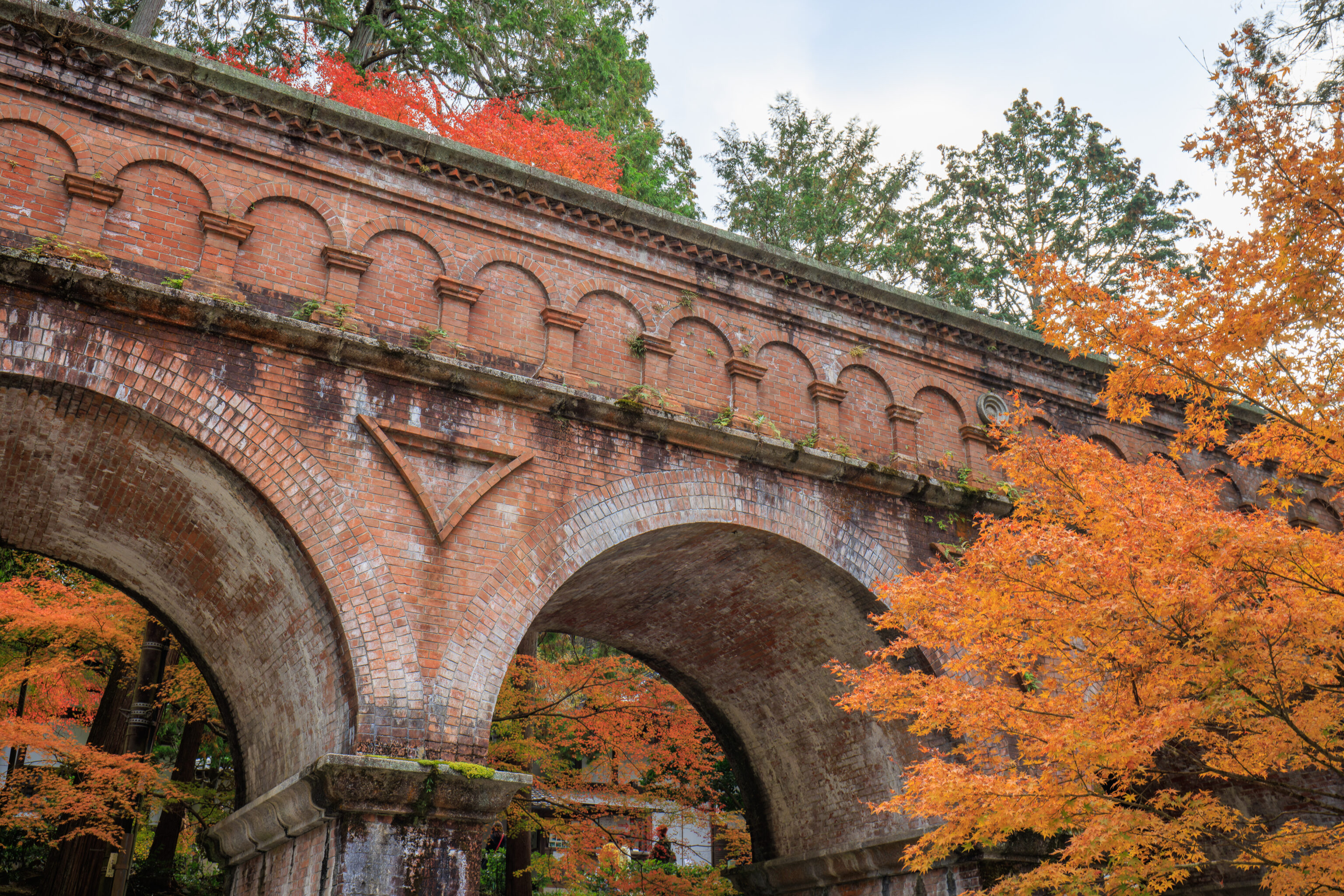
We’ve never really explored the area around the aqueduct so decided to take a closer look.
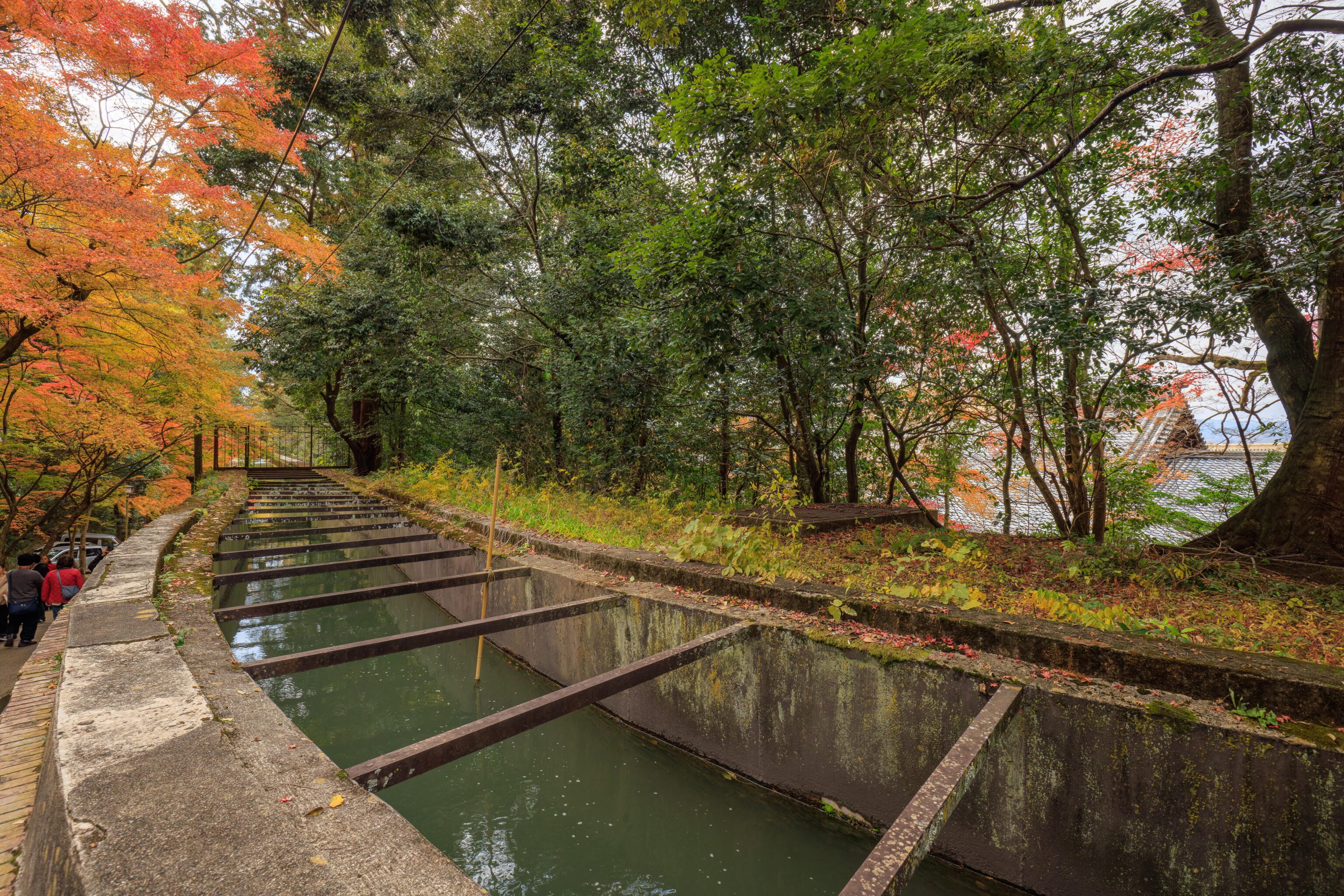
It is possible to walk up and see the water flowing through the aqueduct! It is part of the Lake Biwa Canal and brings water from the lake through the mountains into Kyoto.
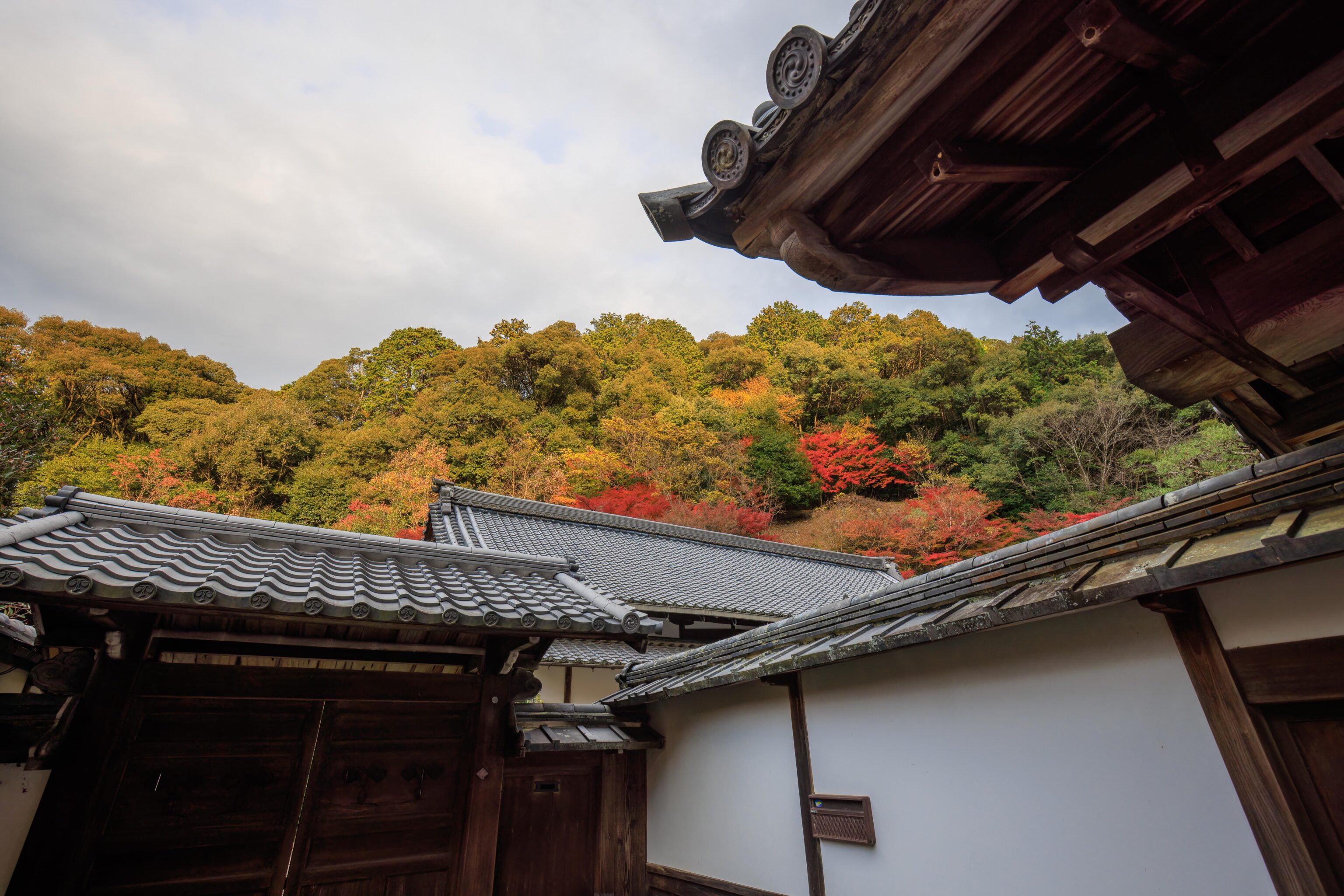
There is another small temple to the east and above the aqueduct. Saisho-in is a subtemple of Nanzen-ji.
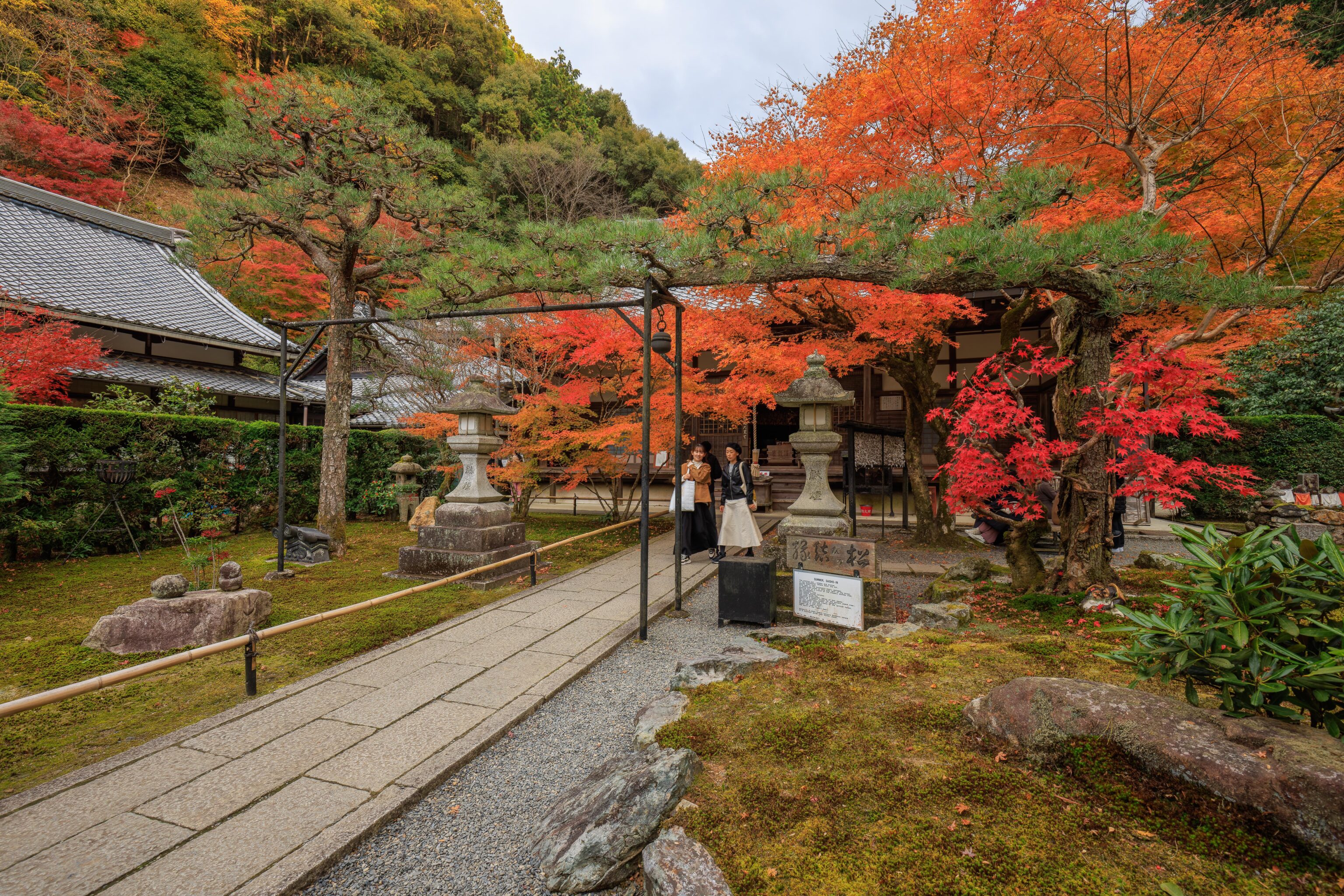
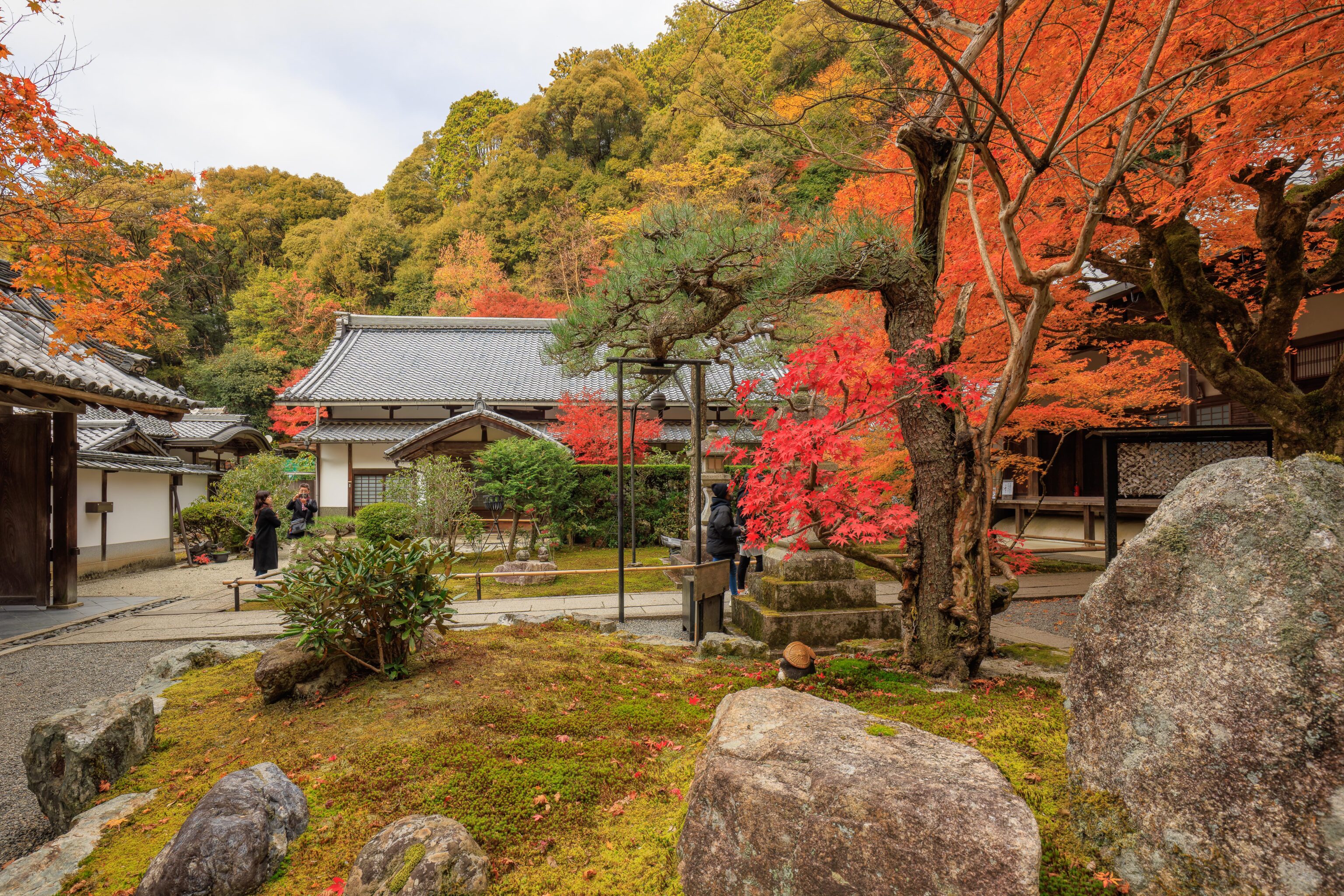
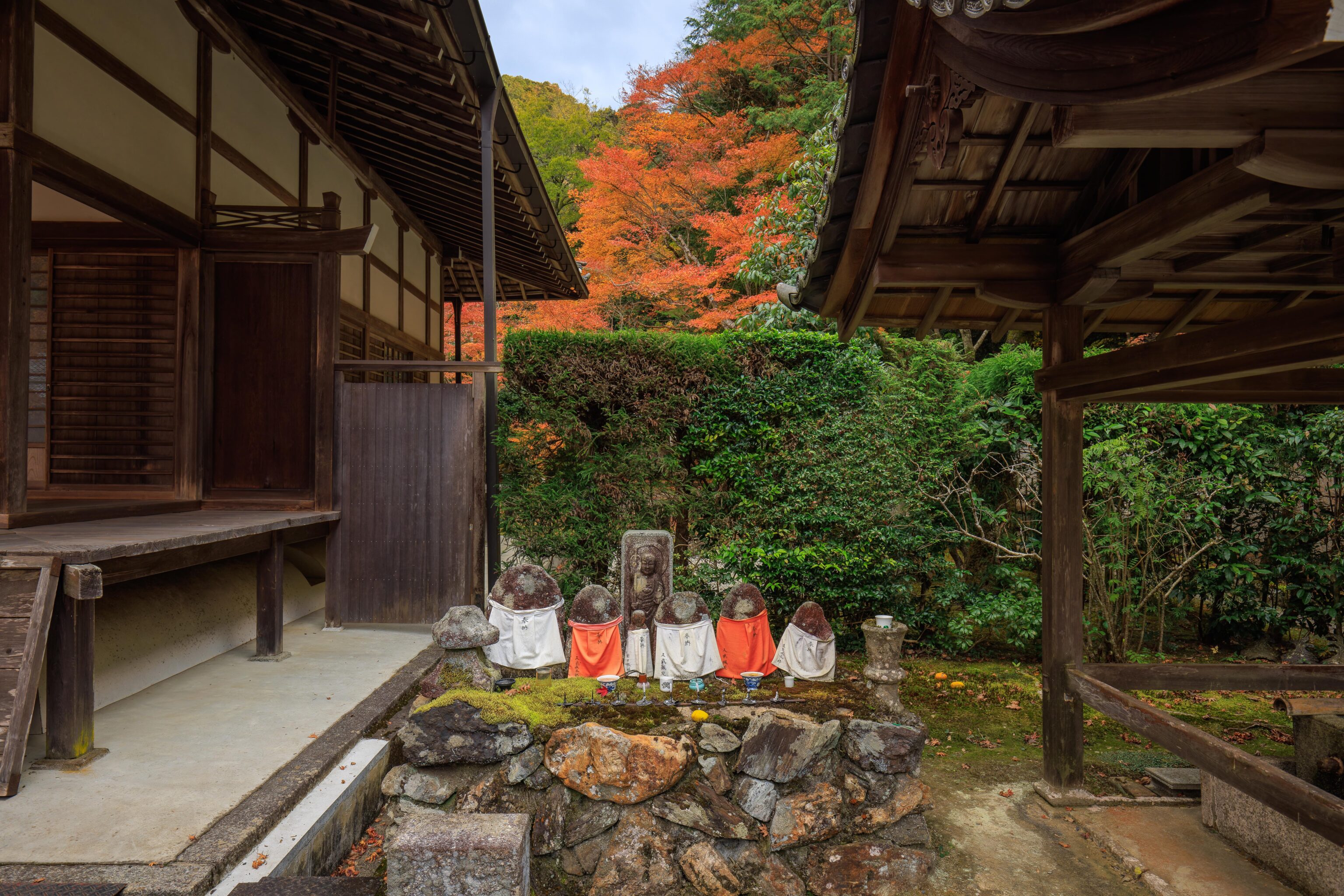
The temple is pretty small and mostly seems to consist of a few buildings and wall around courtyard.
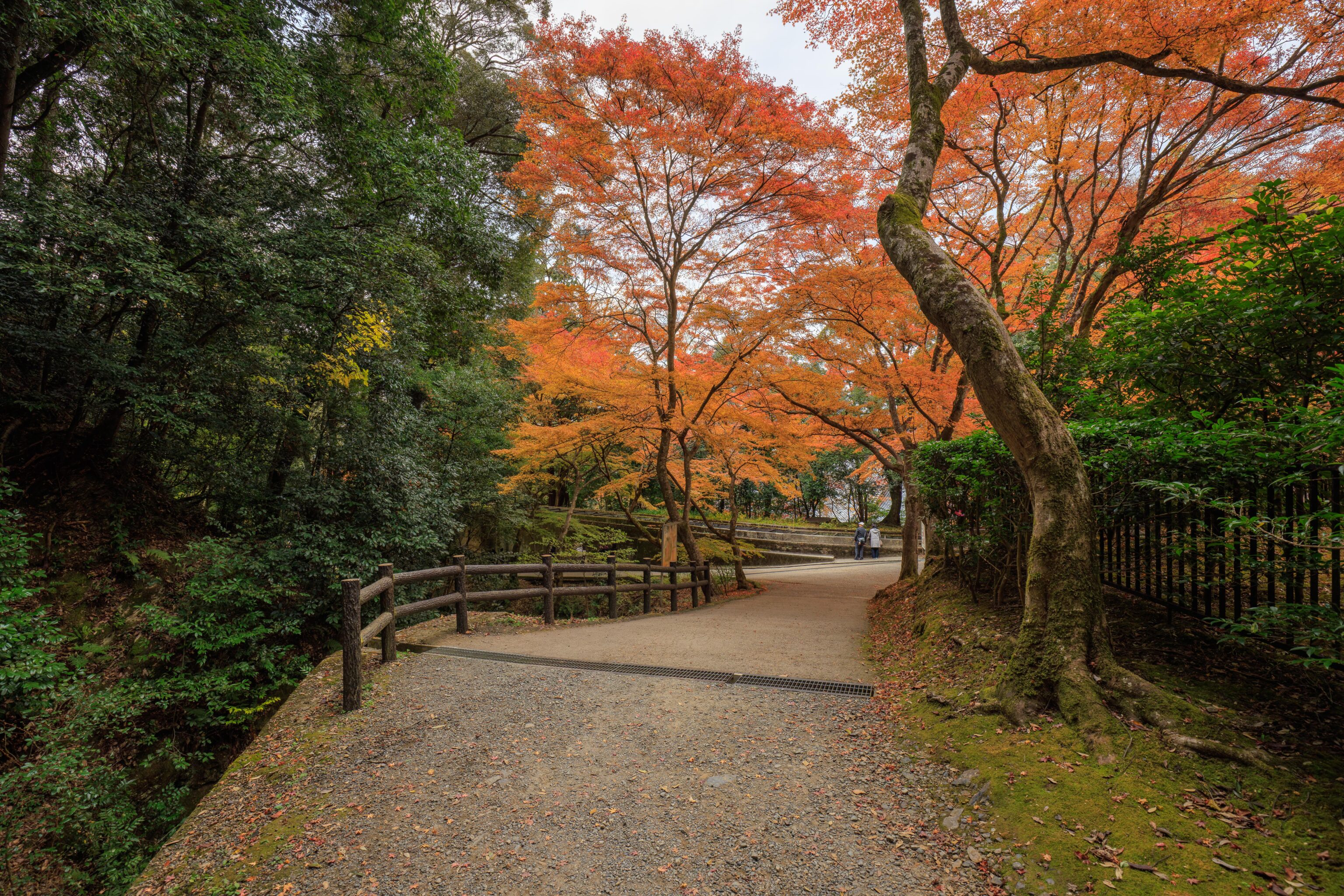
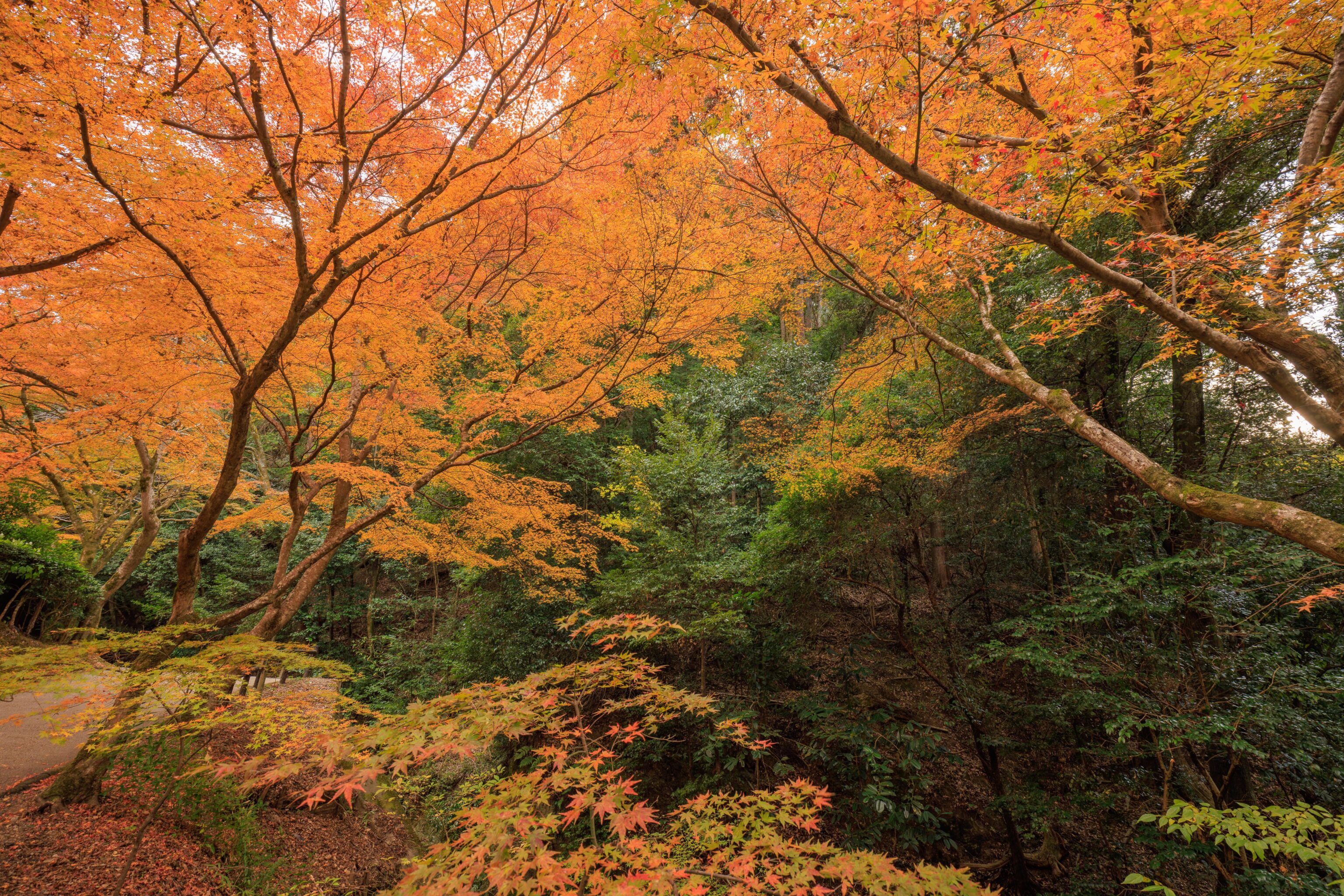
After our quick look at the temple, we turned around to return to the aqueduct. It is possible to go in the other direction and hike into the mountains.
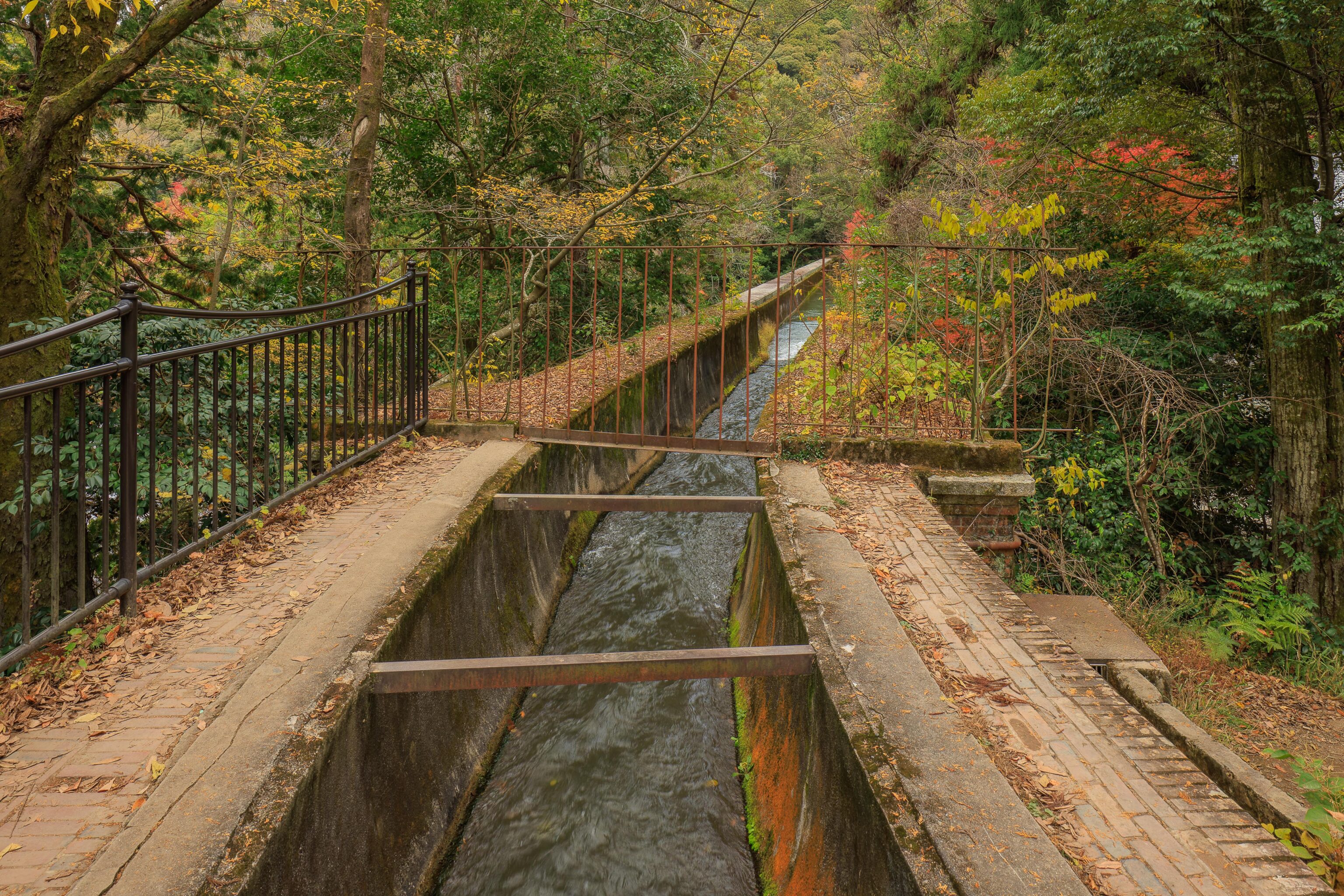
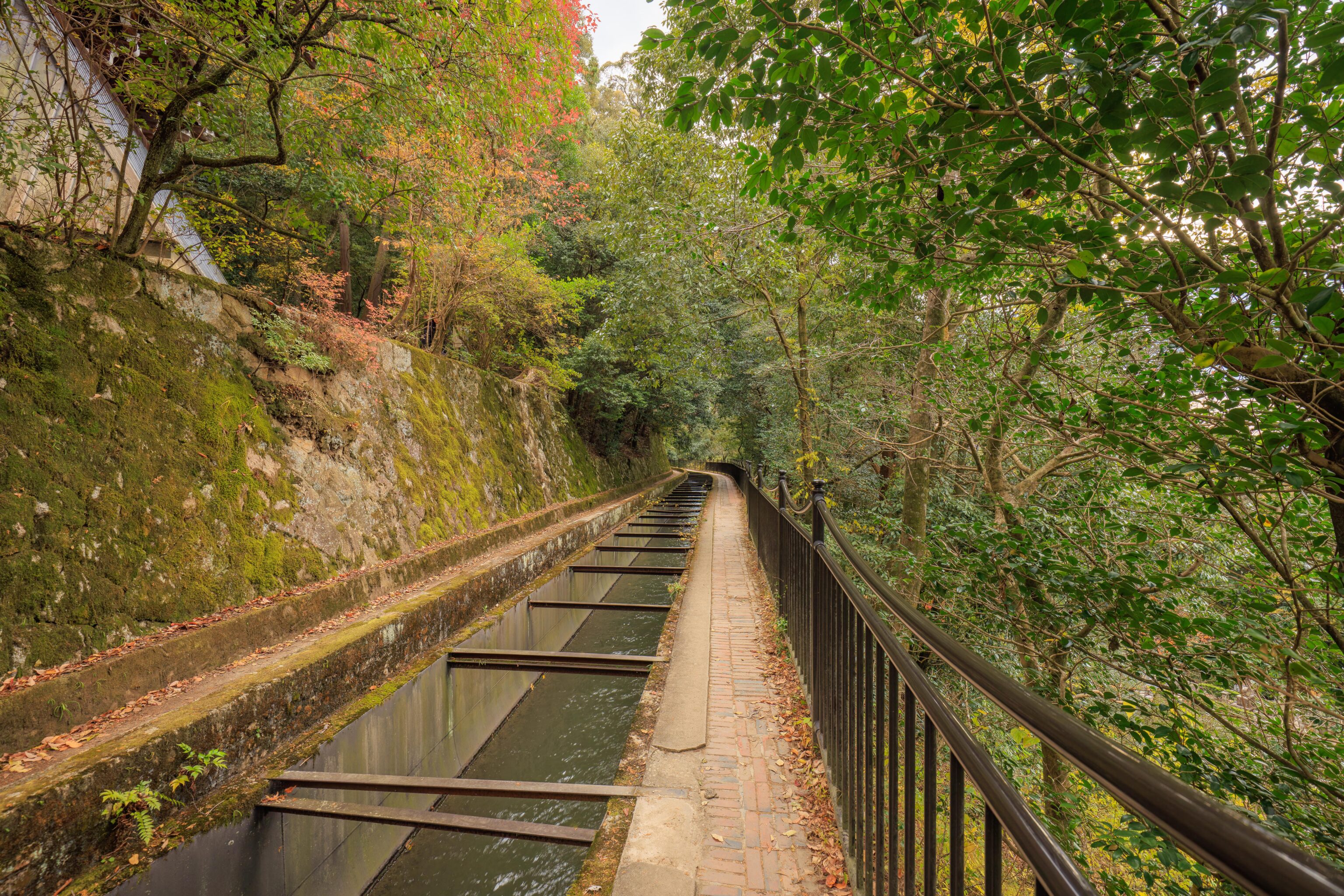
We decided to walk along the aqueduct as it headed to the west.
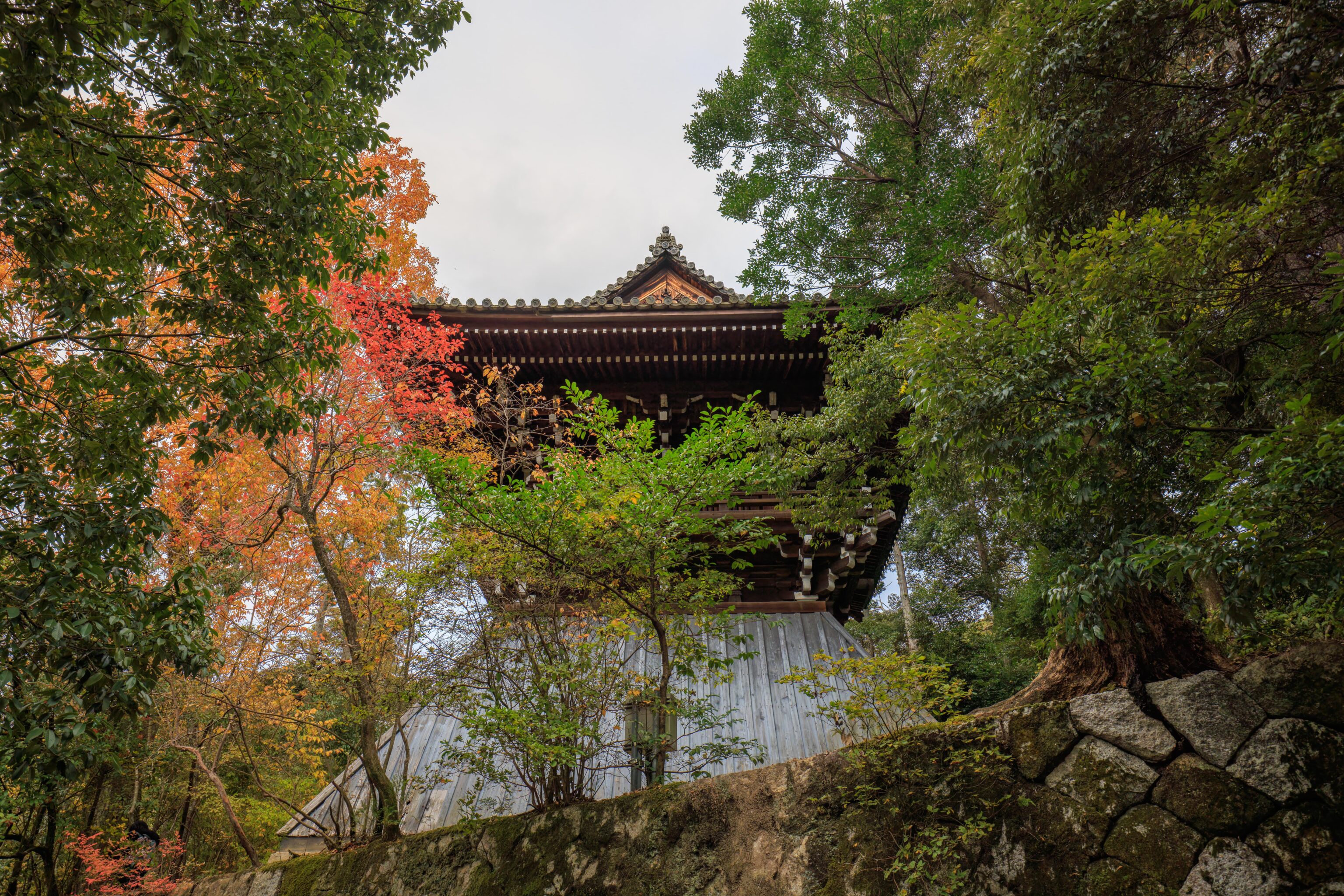
We passed below a bell tower, still part of Nanzen-ji.
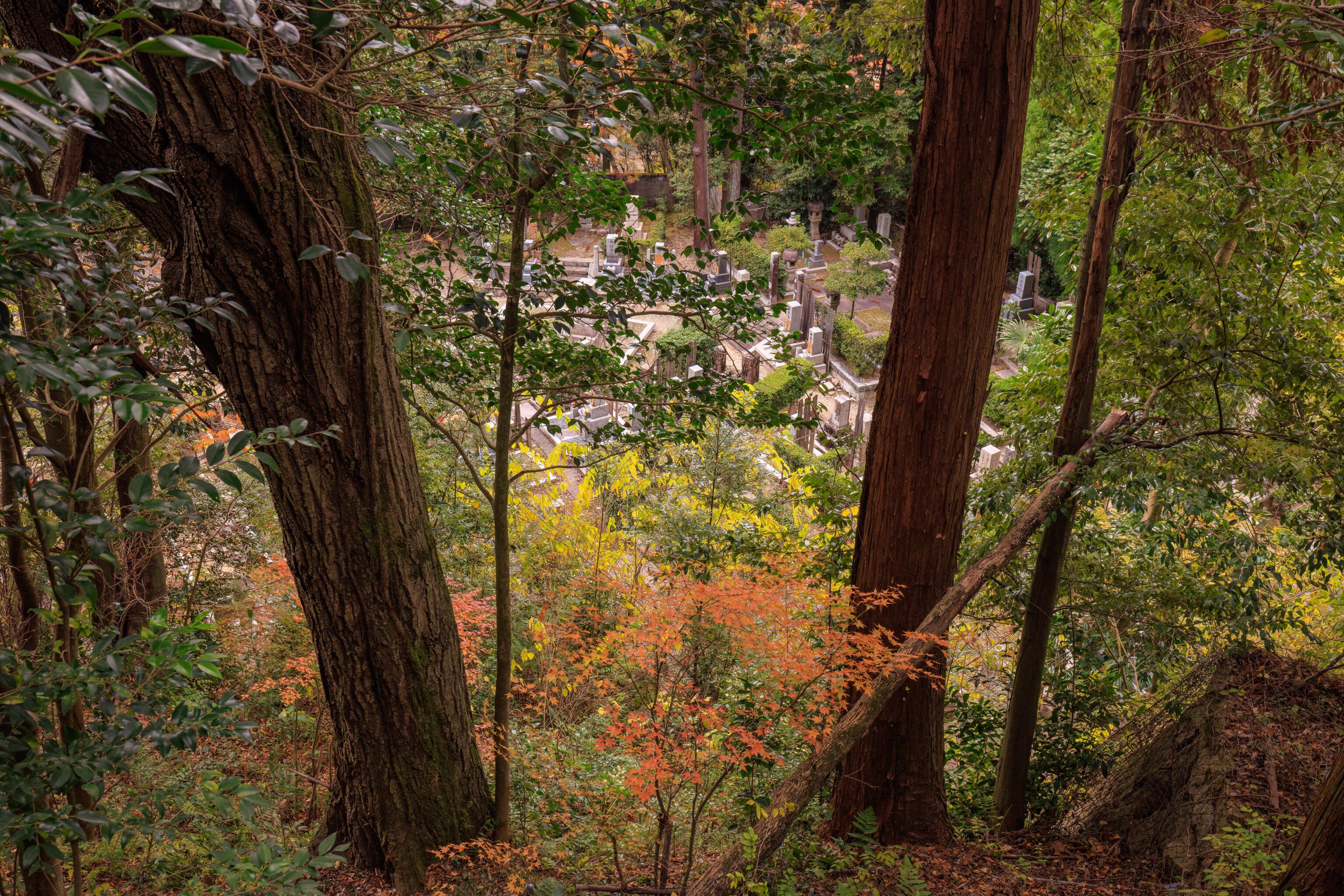
Through the trees, we could see a cemetery below. It is also part of Nanzen-ji.
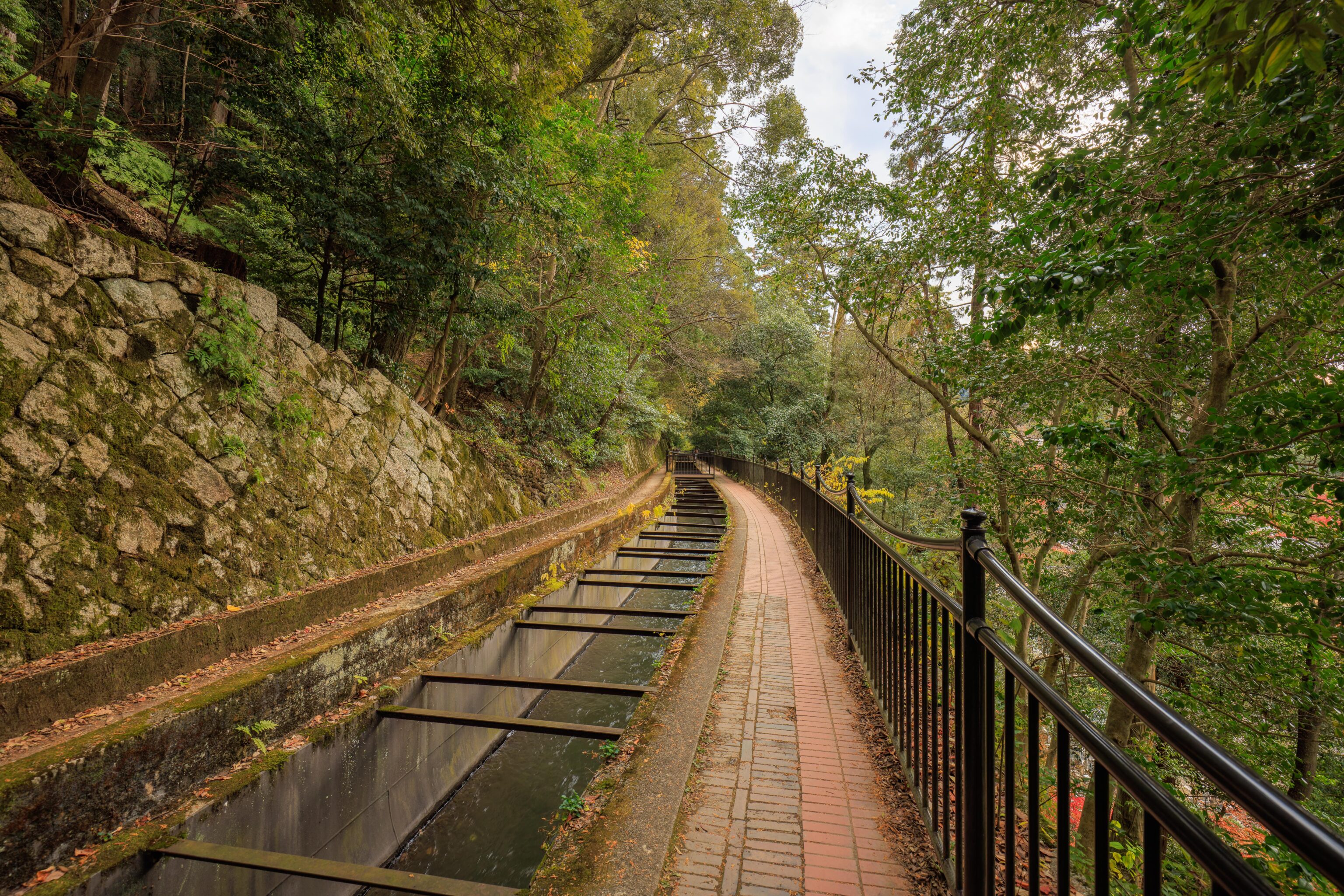
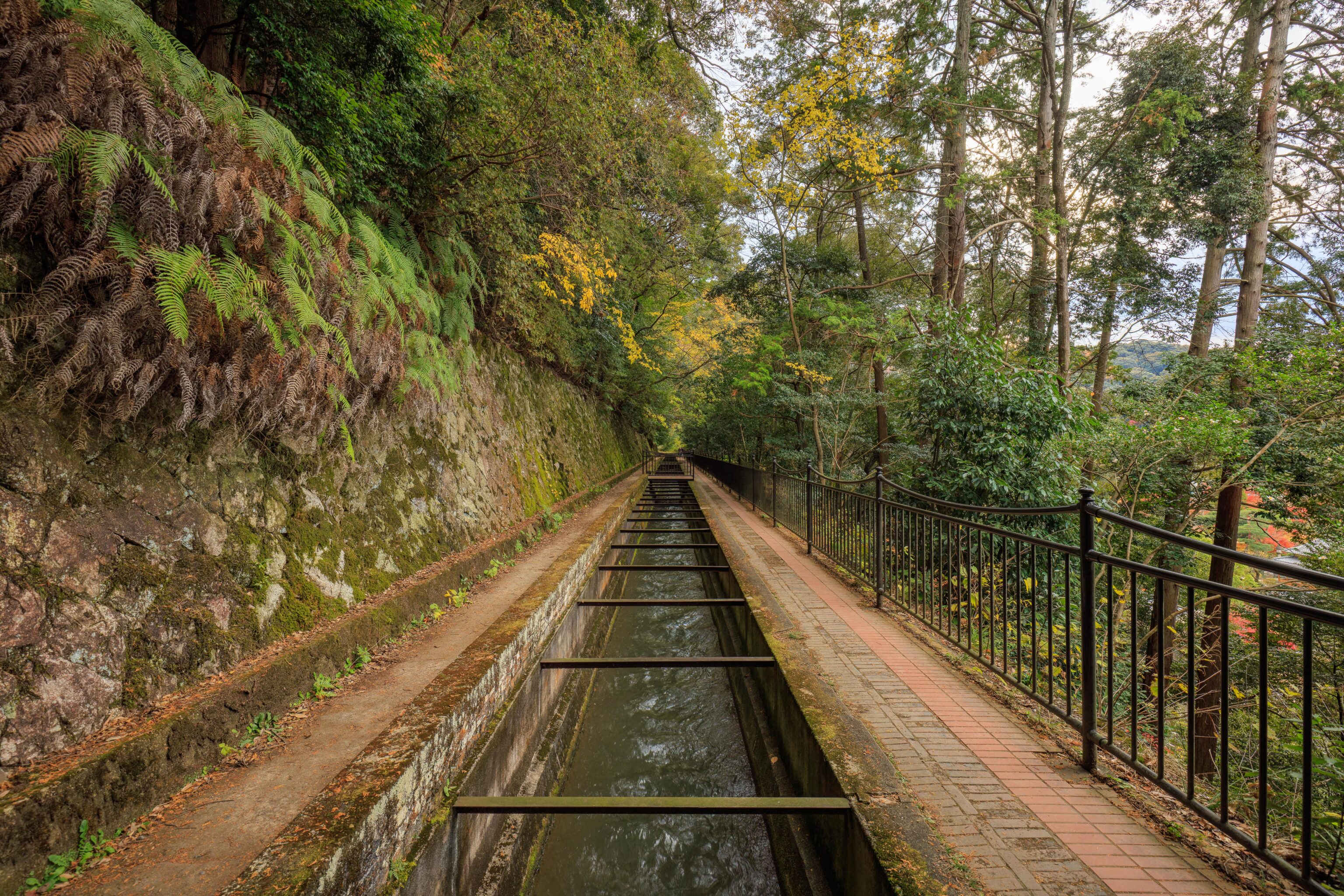
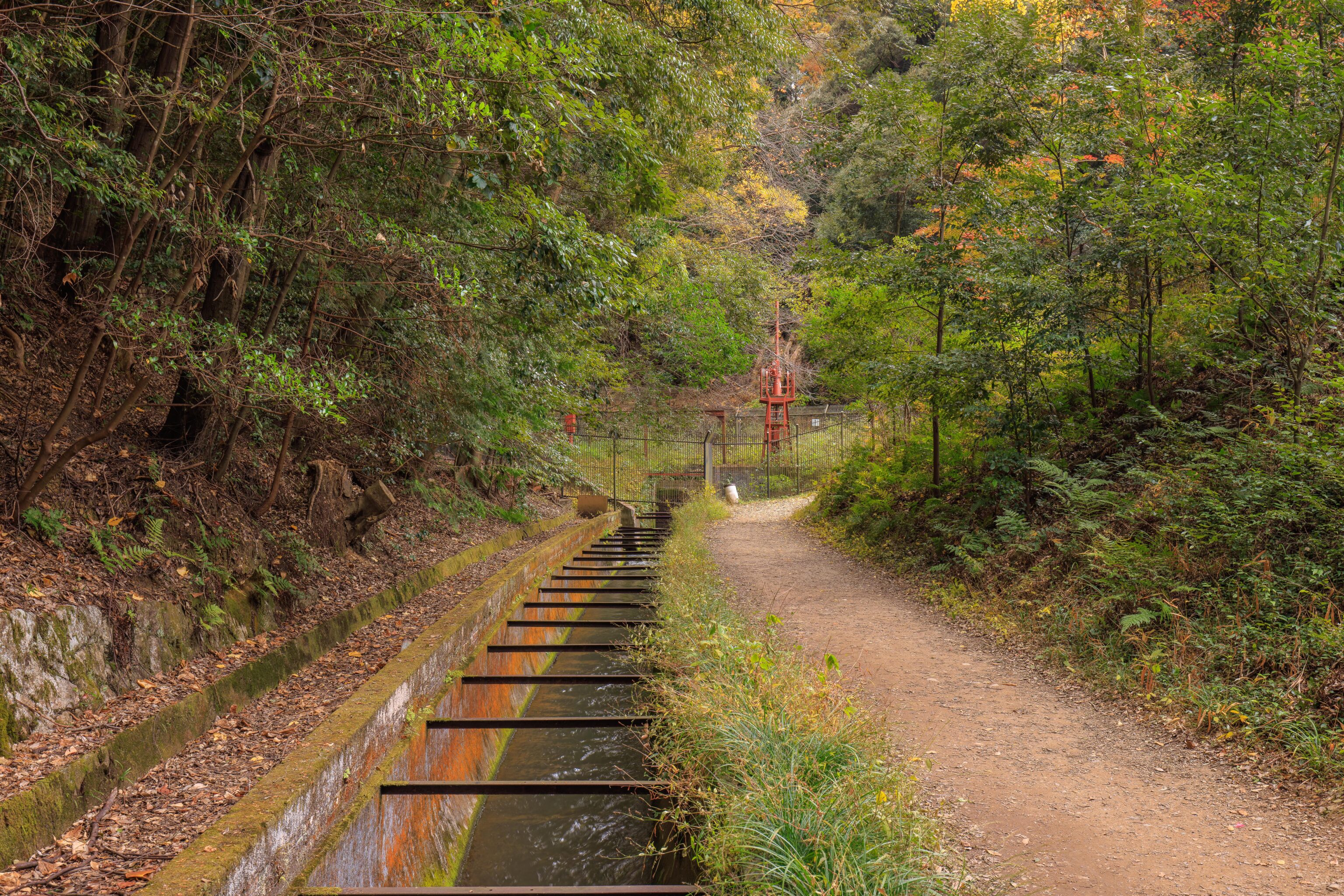
This area wasn’t very busy at all. We barely saw any people as the aqueduct curved to the south. This area had a kind of clean but minimally maintained appearance.
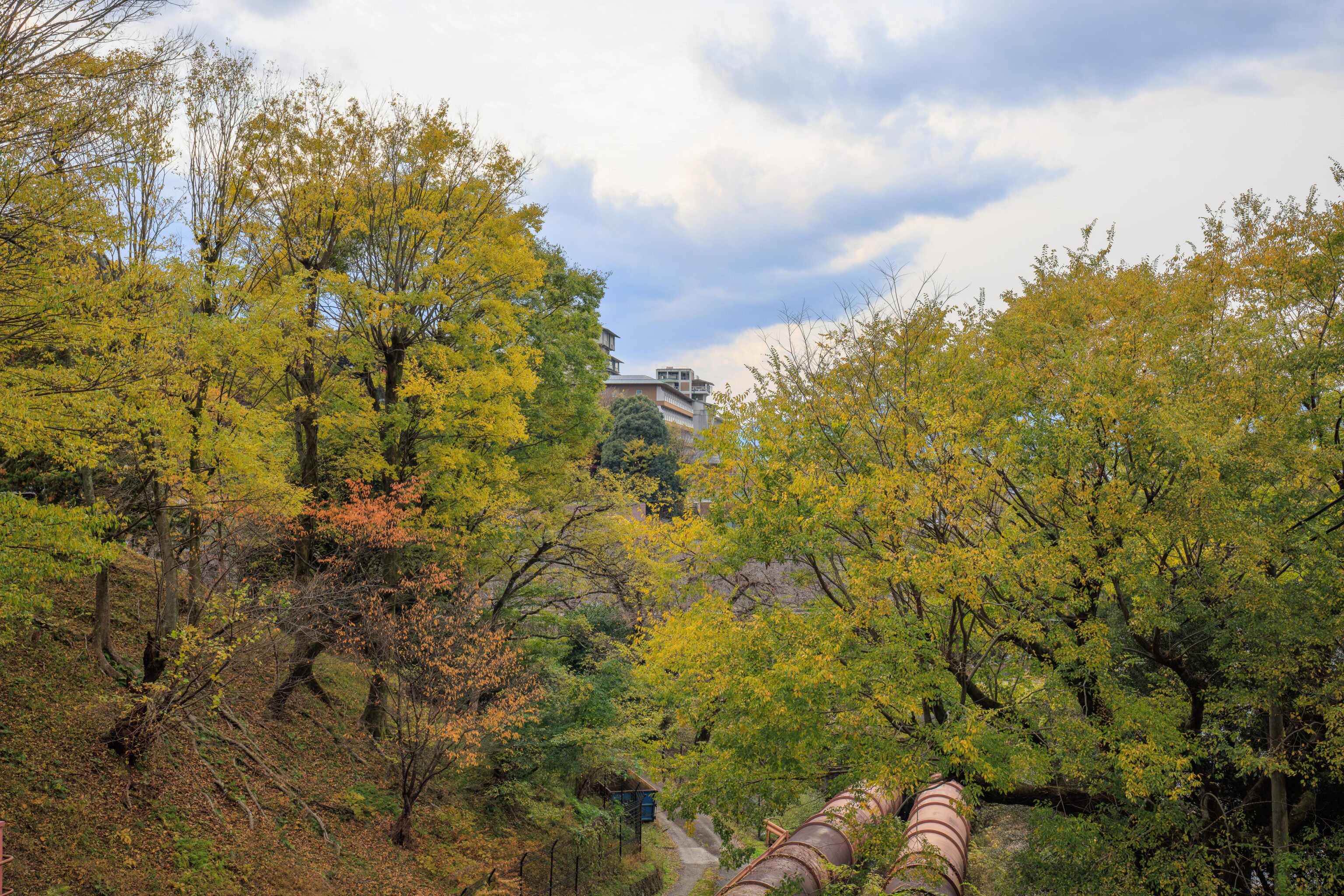
The aqueduct ends at a small hydroelectric power station. It was the first commercial hydroelectric plant in Japan, completed in 1891, and is still operational.
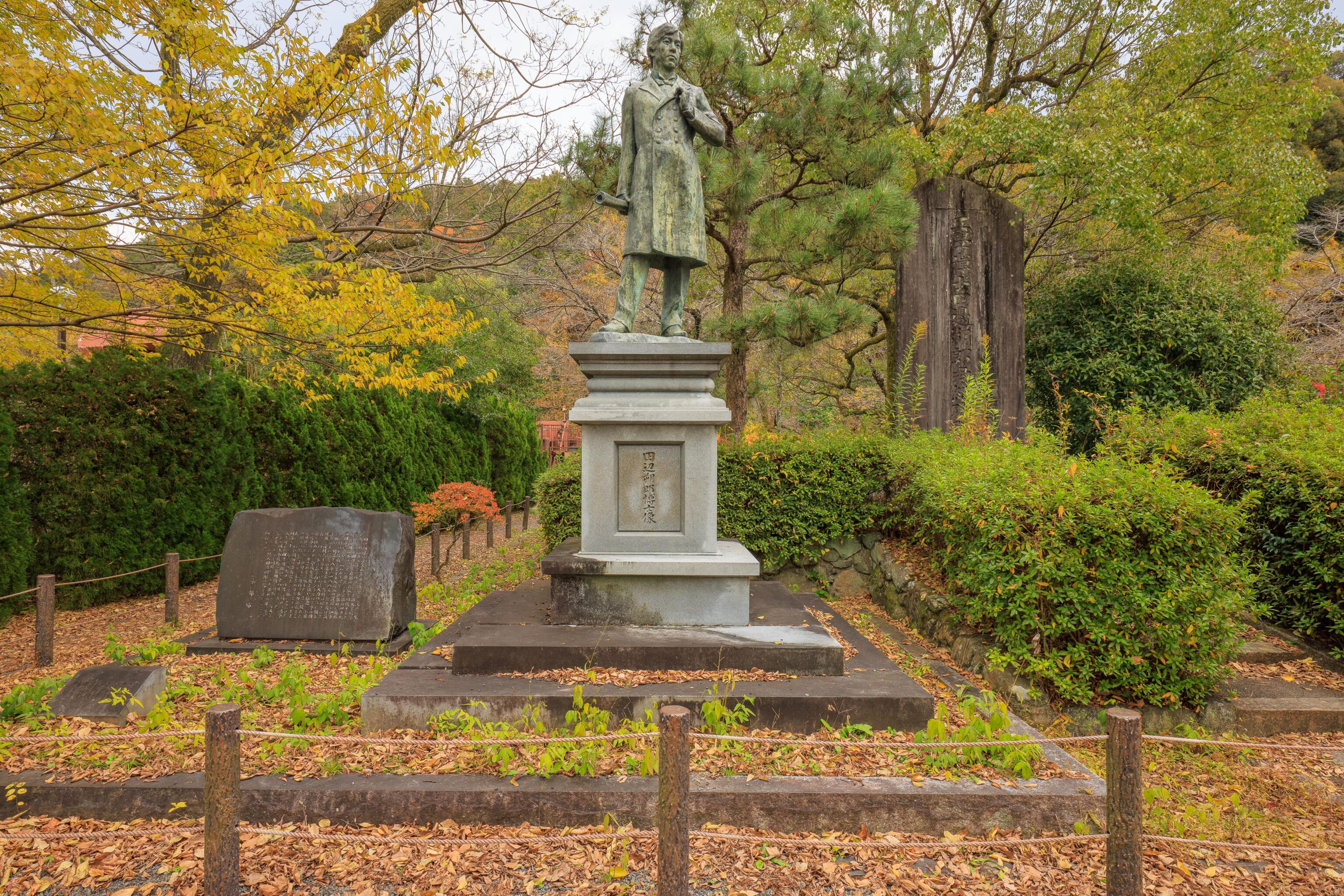
There is a small park here by the power plant. This statue is of Sakuro Tanabe, the civil engineer who was responsible for building the Lake Biwa Canal and the hydroelectric plant. He was inspired after visiting a hydroelectric plant in Aspen, Colorado10!
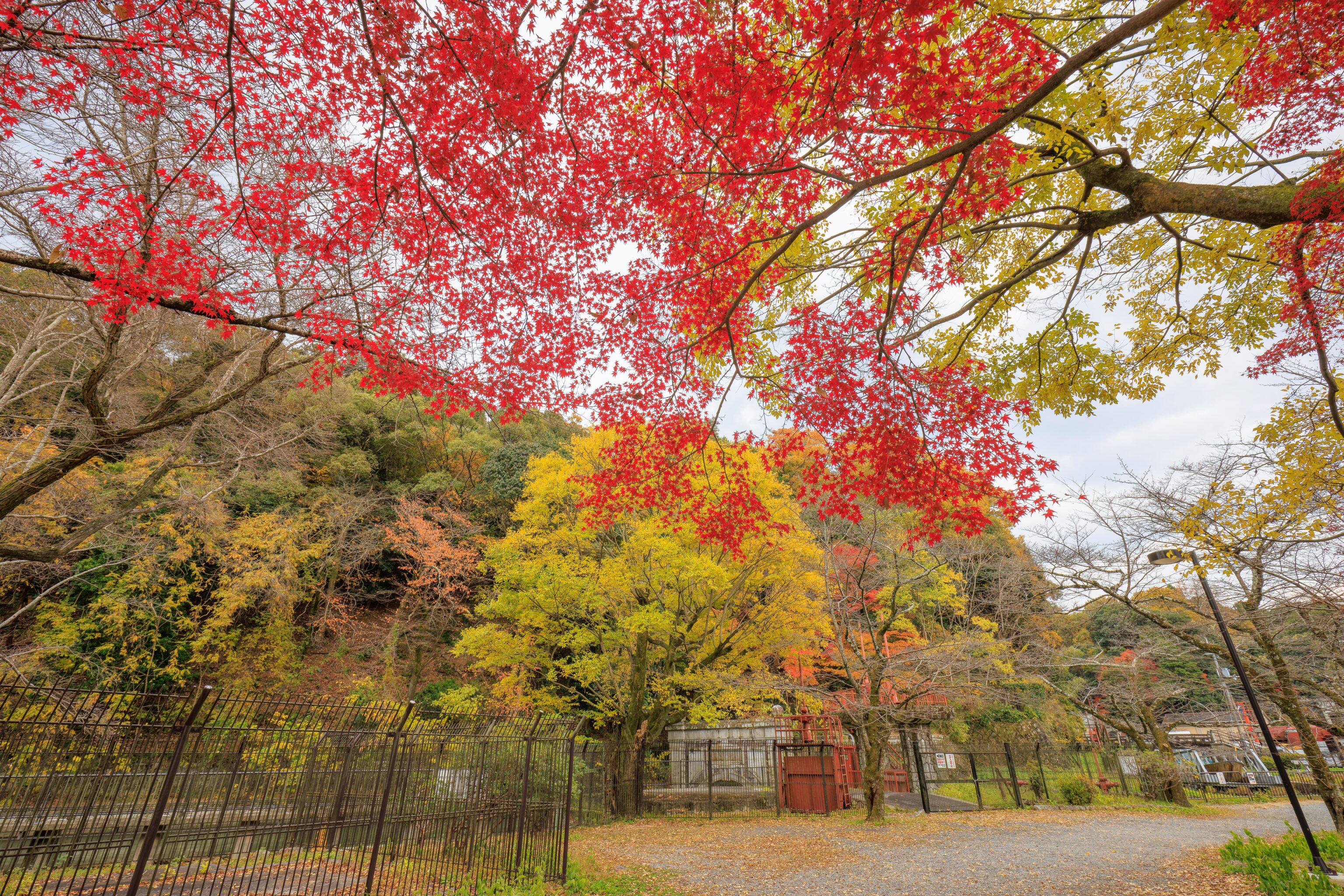
Some of the power plant structures are visible here at the end of the aqueduct. Presumably, the rest of the buildings are down below where the power generation equipment must be.
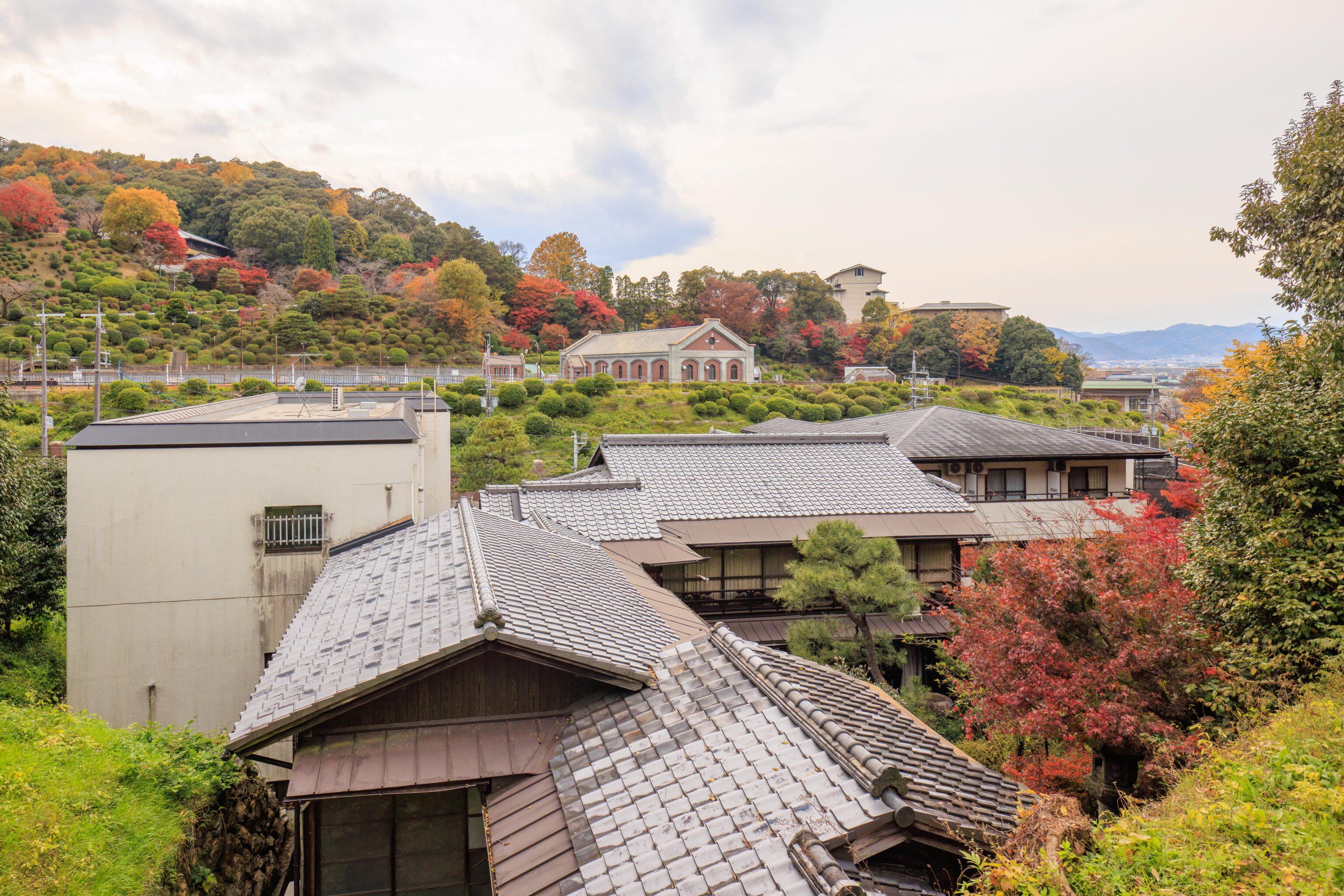
The view to the west. A water treatment plant is on the opposite side of a road below. There is a building to the right that is mostly covered by trees. That is the Westin Miyako Kyoto where we stayed in December, 2019, right before the pandemic. They were just about to finish a very extensive renovation during that time! Our stay was fantastic, particularly our renovated suite!
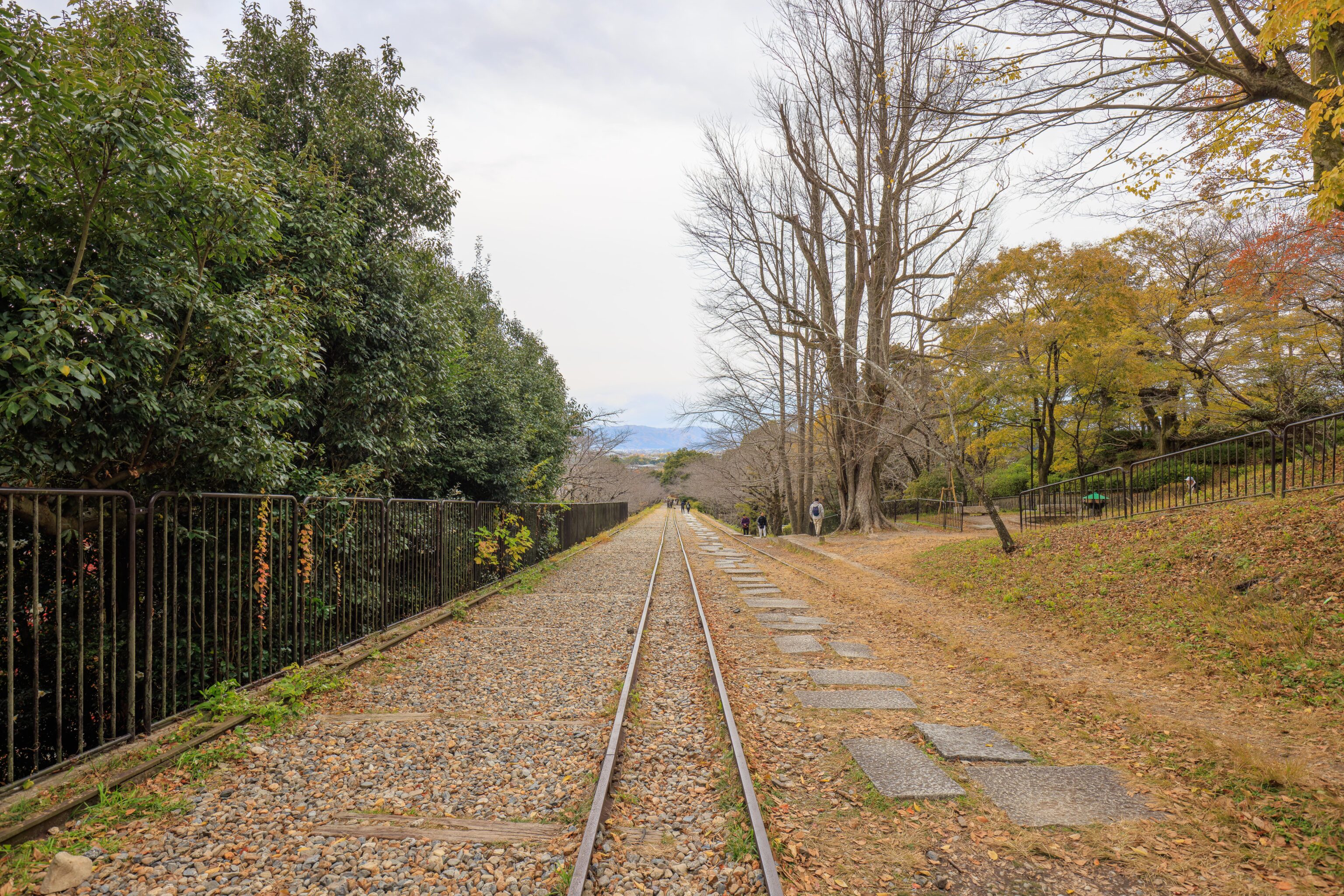
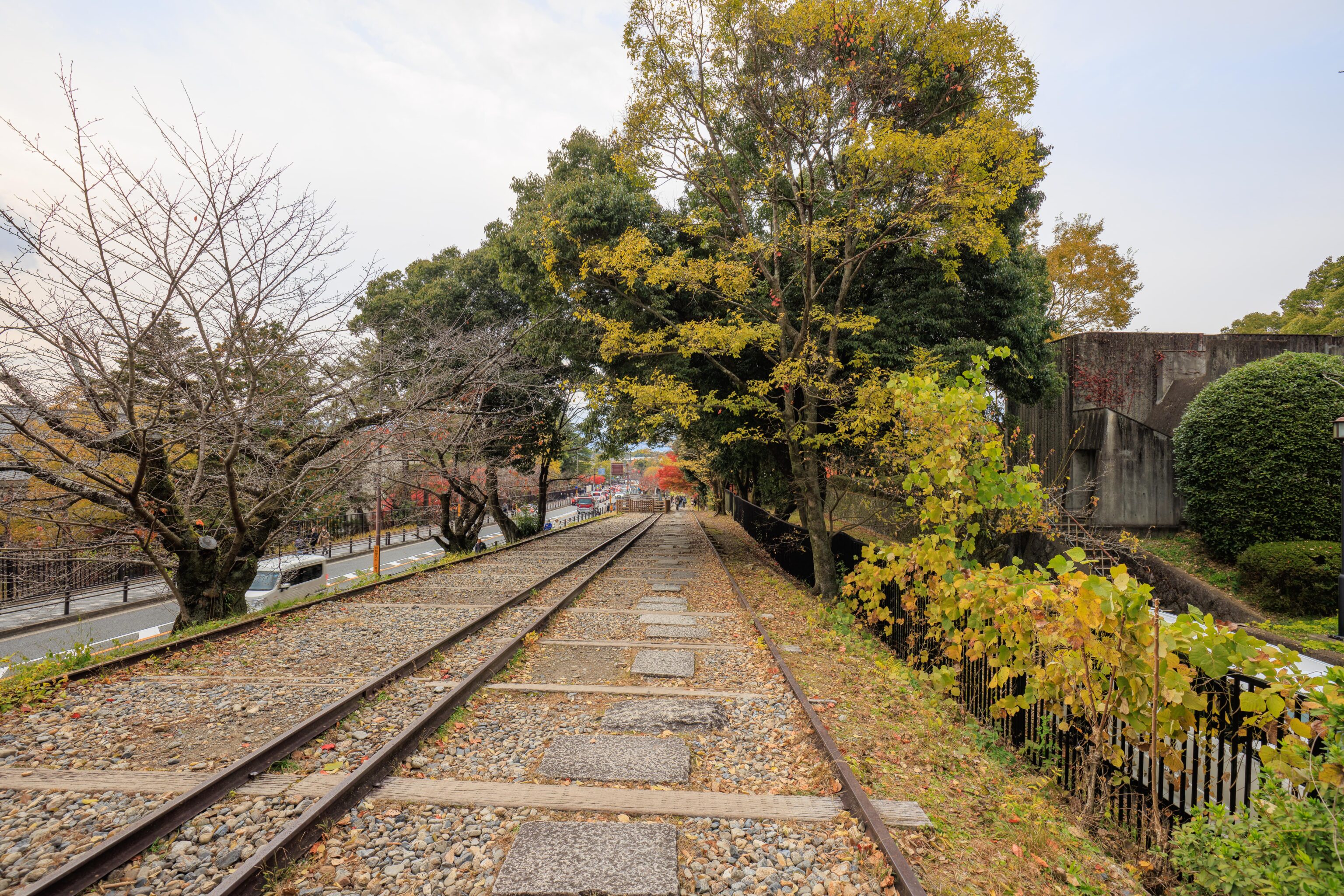
We walked down some steps to end up at the Keage Incline. This was a former railway which was used to move boats between upper and lower portions of the canal. Presumably, this was a rack railway to be able to make it up this somewhat steep slope.
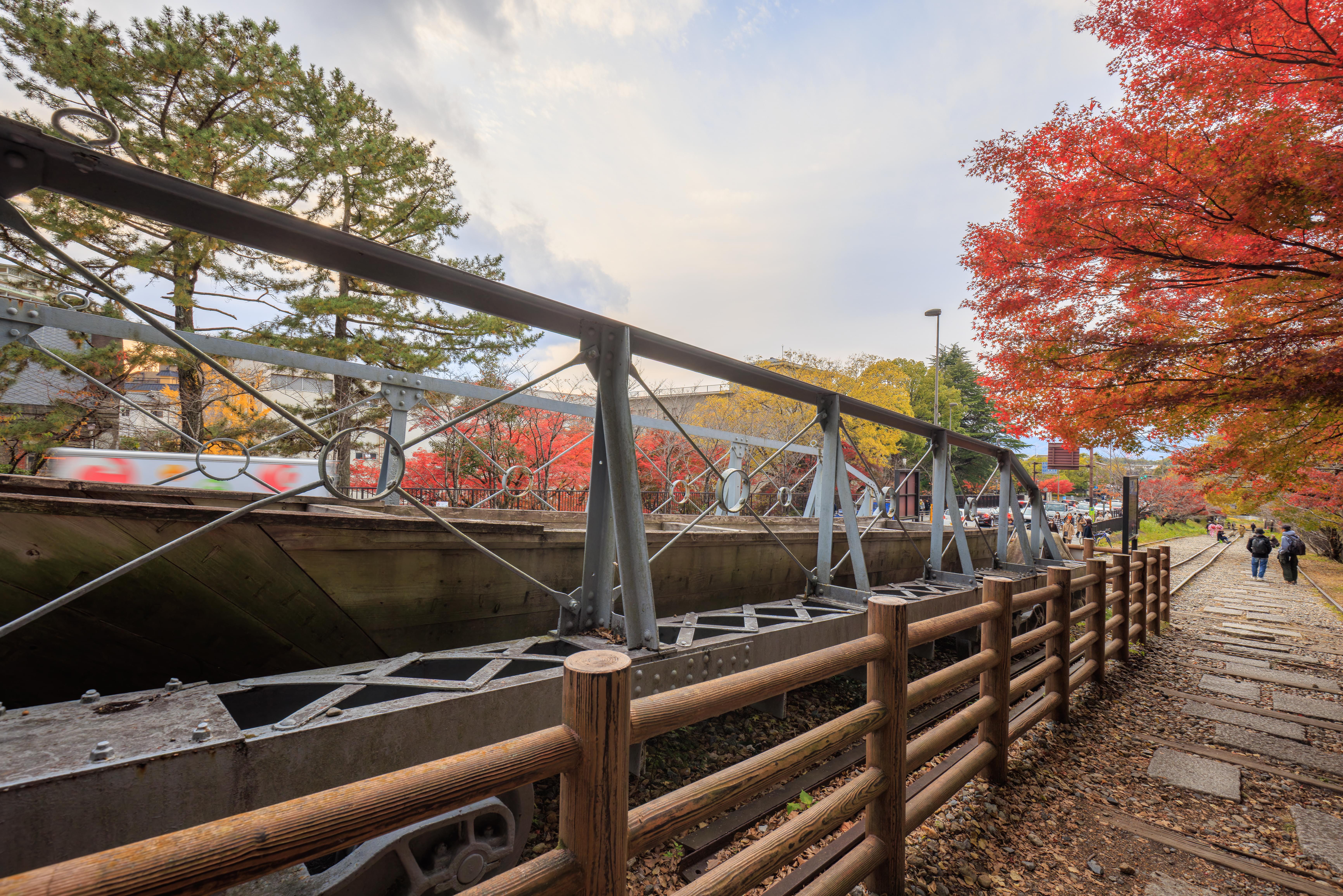
An example of a boat which would have been pulled up the incline by a locomotive.
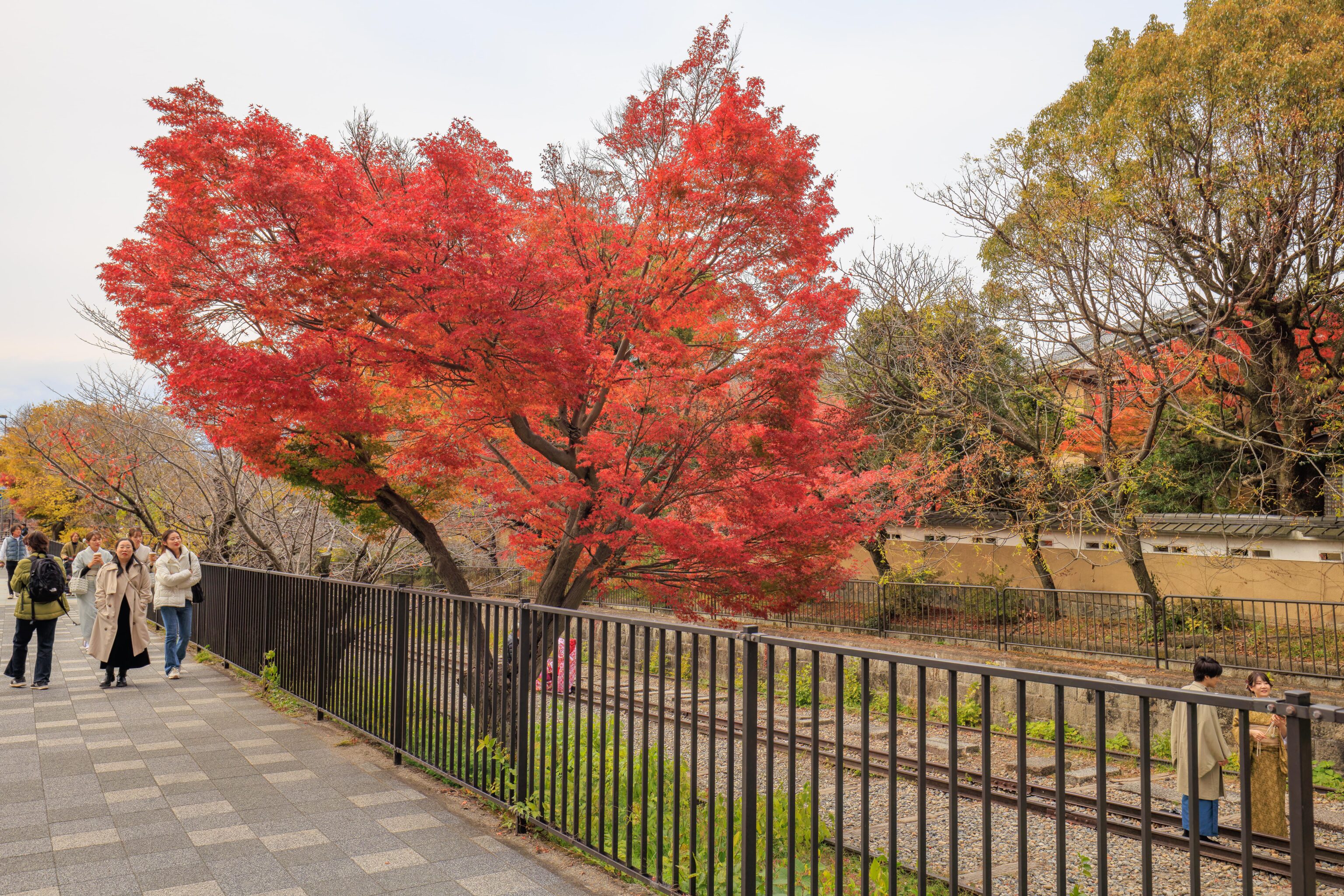
The bottom portion of the incline seemed to be a pretty popular photo spot, particularly for people dressed in kimonos. It looks like it is beautiful here during sakura season but it didn’t seem particularly photogenic right now.
Dinner
The Keage Incline descends a bit more to end up in the Nanzenji Boat Reservoir. We didn’t go all the way there though. Instead, we headed off to get dinner. We decided to go to Tairikitei which was somewhat close nearby.
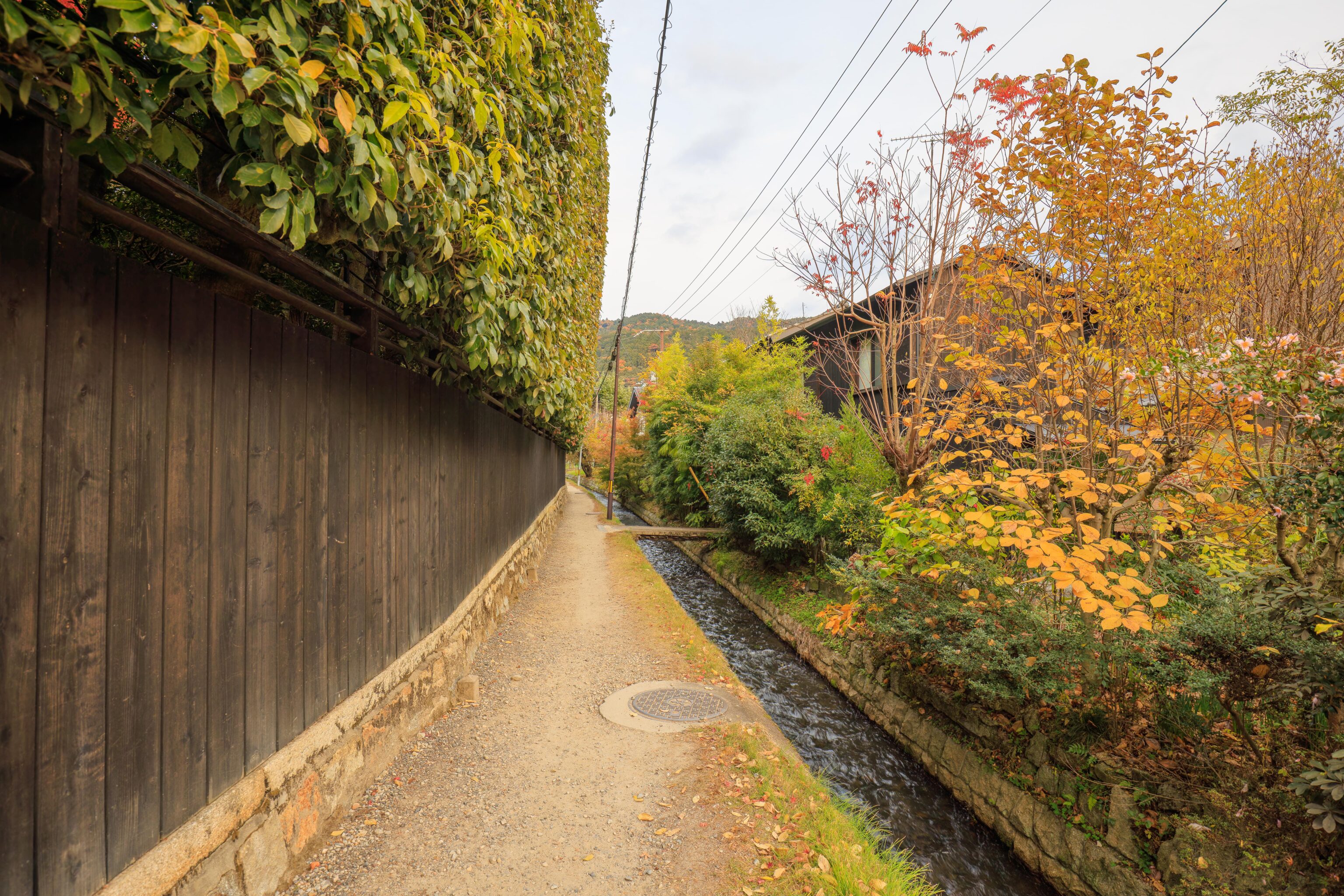
The route we took was mostly through residential areas. Much of it was along pedestrian streets like this, adjacent to a small canal. This is the same canal that separates Eikando Zenrin-ji and Nanzen-ji.
Upon arriving at the restaurant, we saw a sign indicating that they were out of udon. We were hoping to try their udon as it seemed like it was very good. The rest of their menu was mainly rather expensive beef dishes. This area seems pretty dead in the evening so it appears that the food establishments mainly cater to tourists at lunch time. We decided to try some of their other dishes as we were hungry and there weren’t many options here.
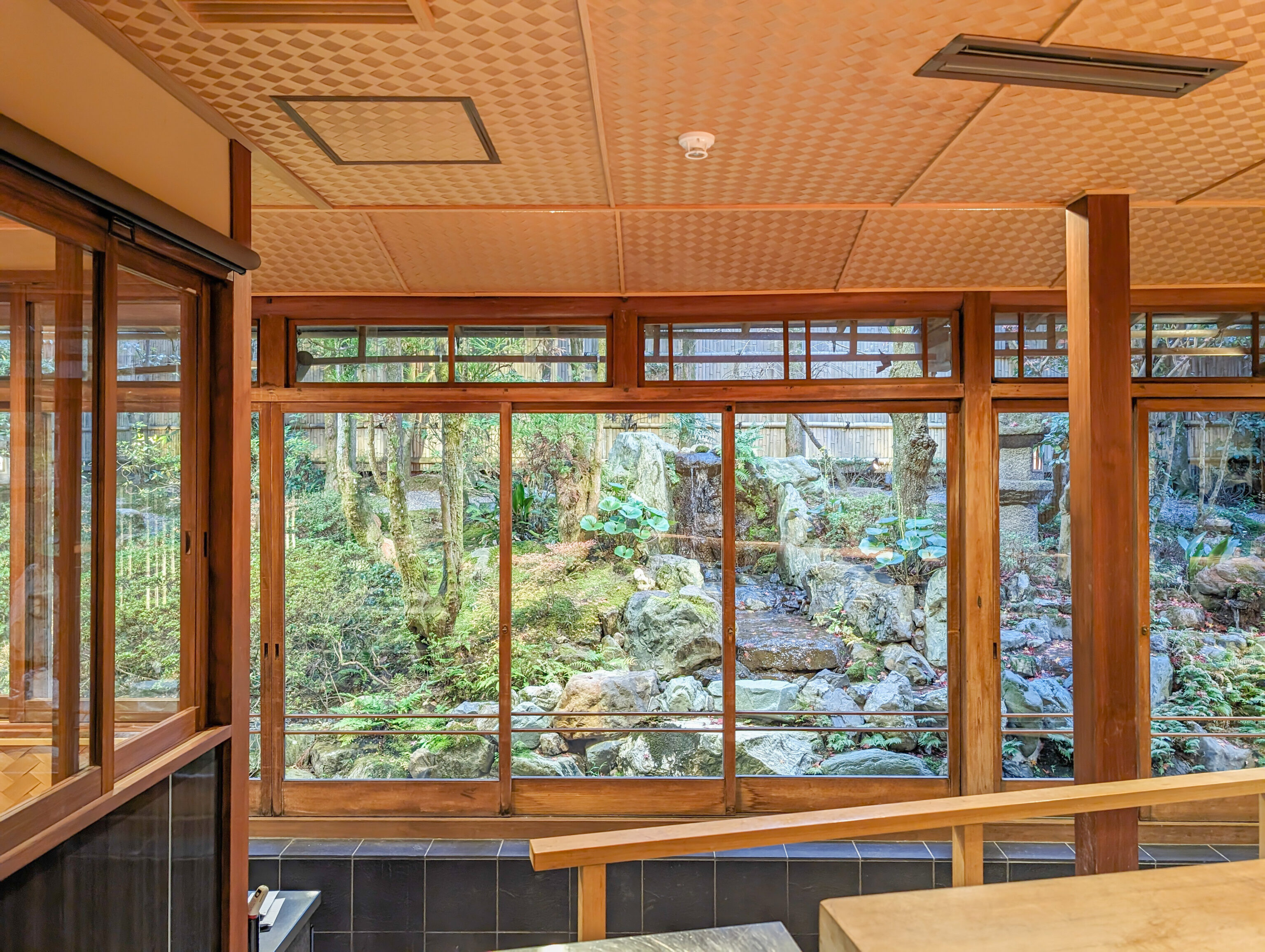
The restaurant is in a large house, probably what we would call a mansion and surrounded by gardens. Given the lack of udon, we decided to order their sukiyaki and beef tongue.
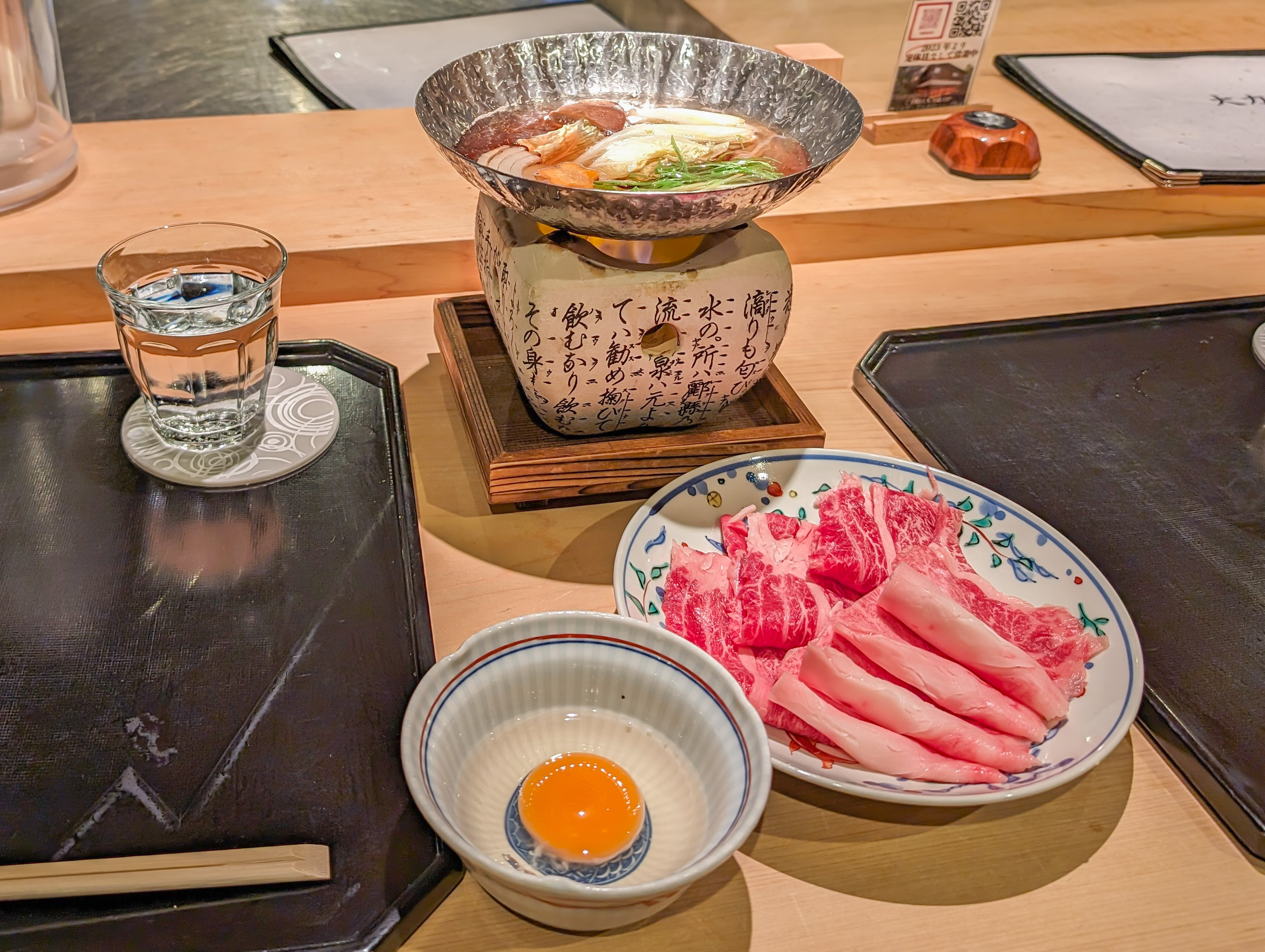
The sukiyaki was exceptionally tiny! It also was extremely bland which we found odd. It did seem to have some color but we think maybe they forgot some of the soy based sauce? It also had very little vegetables. While the beef was good, we felt the whole dish was rather odd.
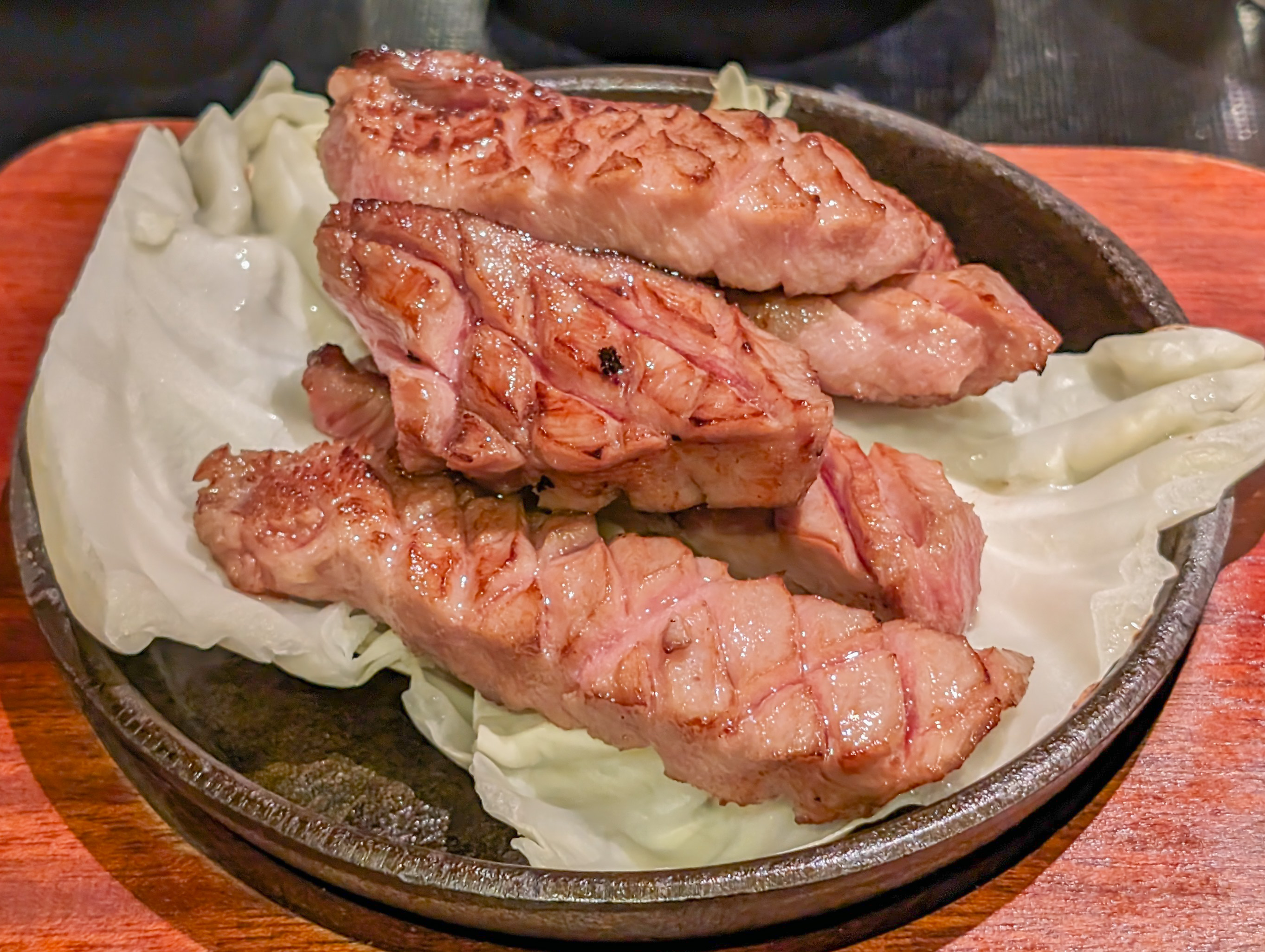
The beef tongue was excellently prepared though. Overall, it was a rather expensive meal and quite disappointing.
Afterwards, we decided to eat again! The evening meal was still salvageable! We headed to Gonta which was about a 10 minute walk away, again through some deserted residential areas. The actual restaurant is what can be best described as a cluster of light industrial buildings.
Gonta can be best described as a small family run restaurant. It closes at 7pm, fairly early in the evening. It was full when we arrived but there was no one else waiting for a table at least.
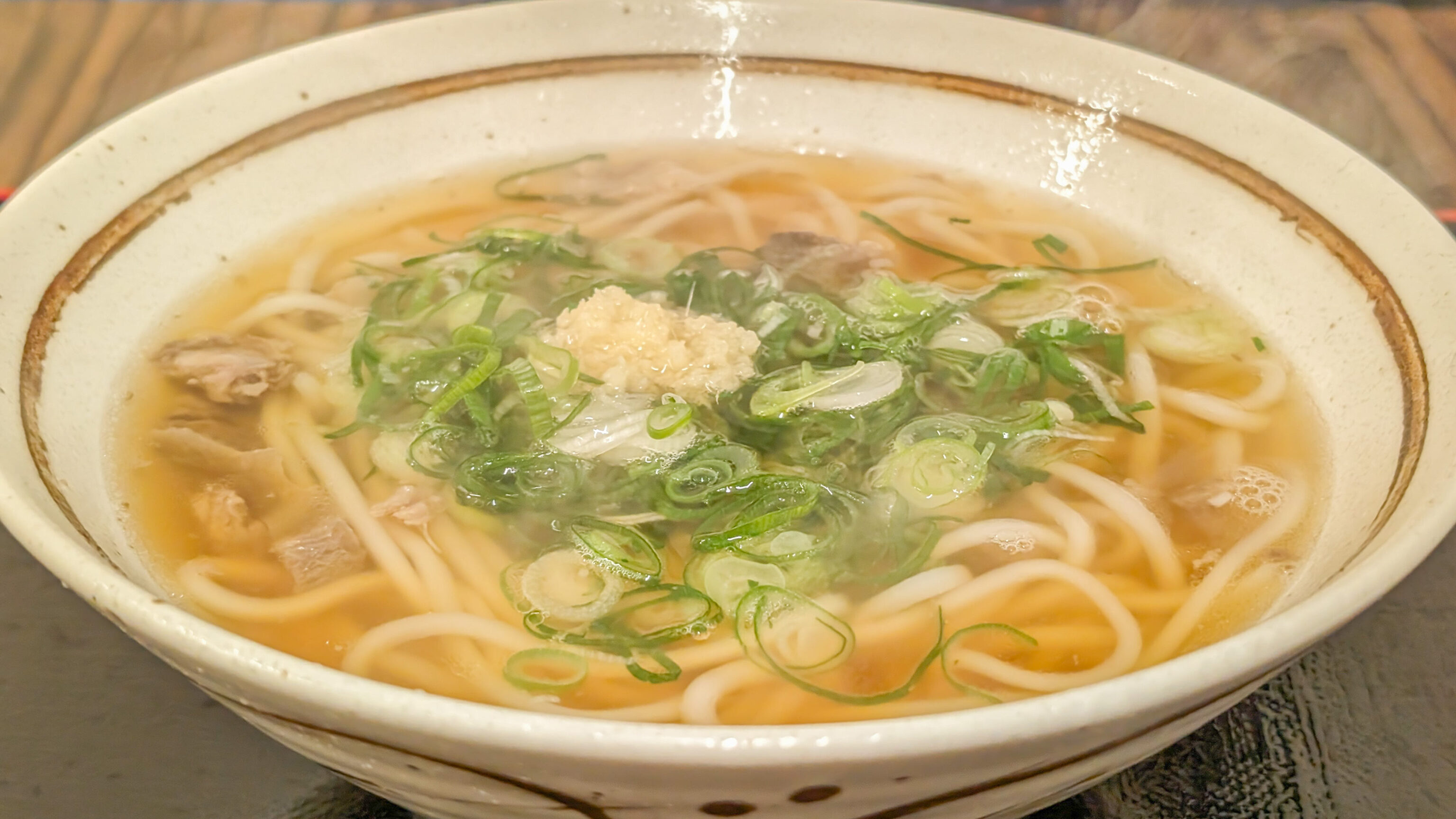
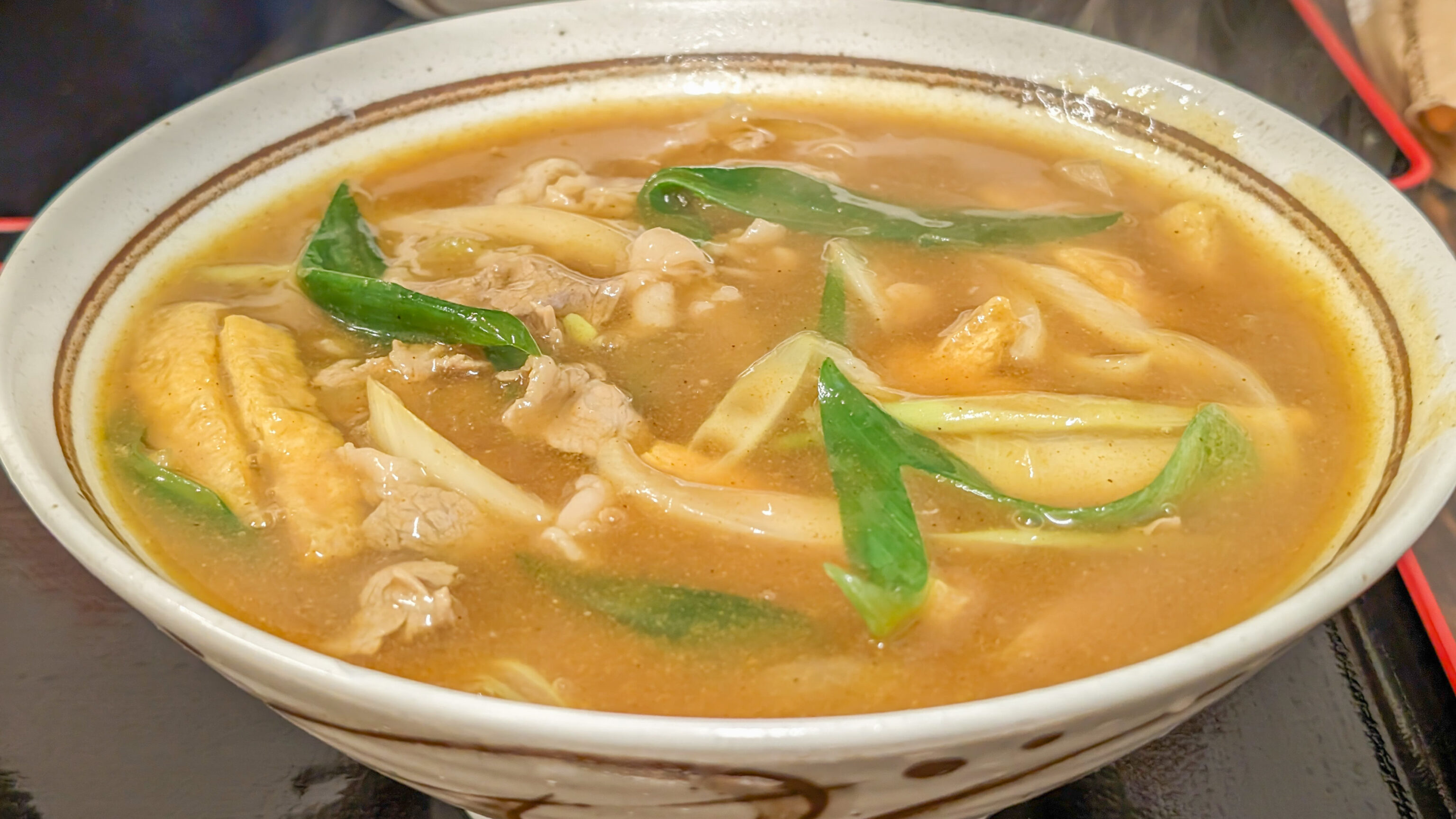
We got two udon, curry and beef. Both were good! It wasn’t anything particularly special but much more satisfying than our more expensive prior meal!
Eikando Evening Illumination
After second dinner, we headed back to Eikando Zenrin-ji to check out the evening special illumination event. It was just a few minute walk away!
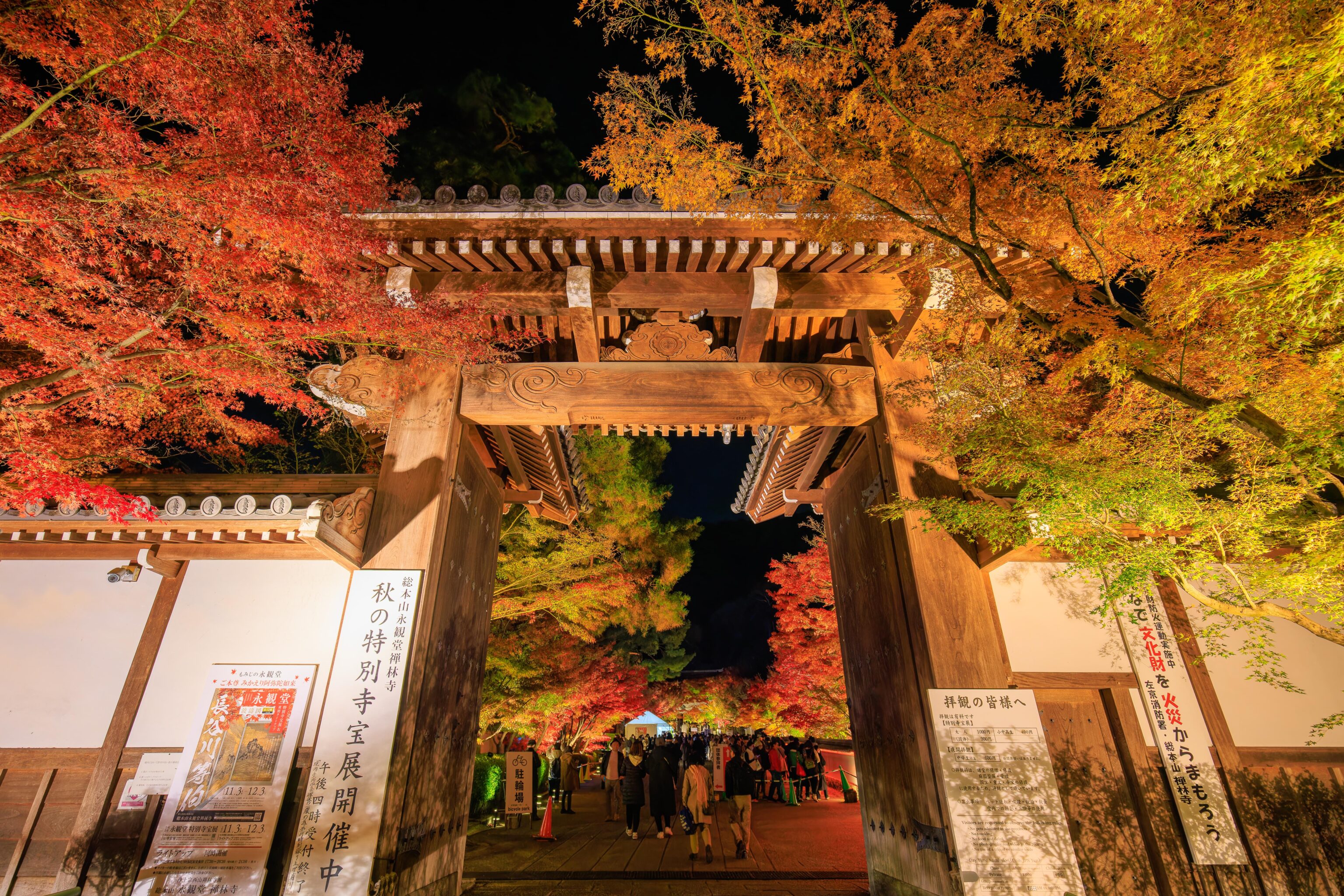
While it was fairly busy during the day, it was much more busy at night! We could see many people queued up as we entered the temple grounds.
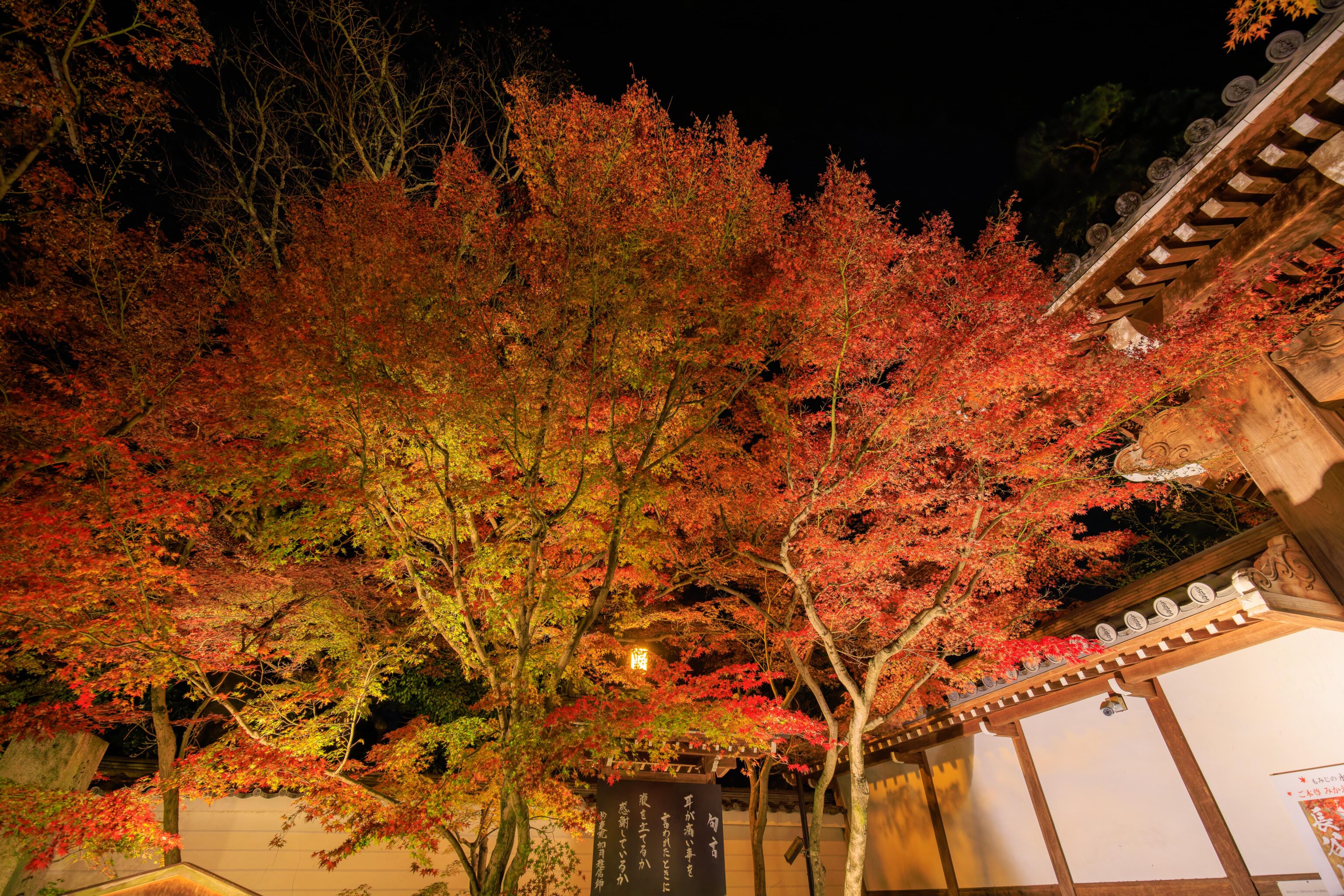
It looked like the illumination would be quite good though!
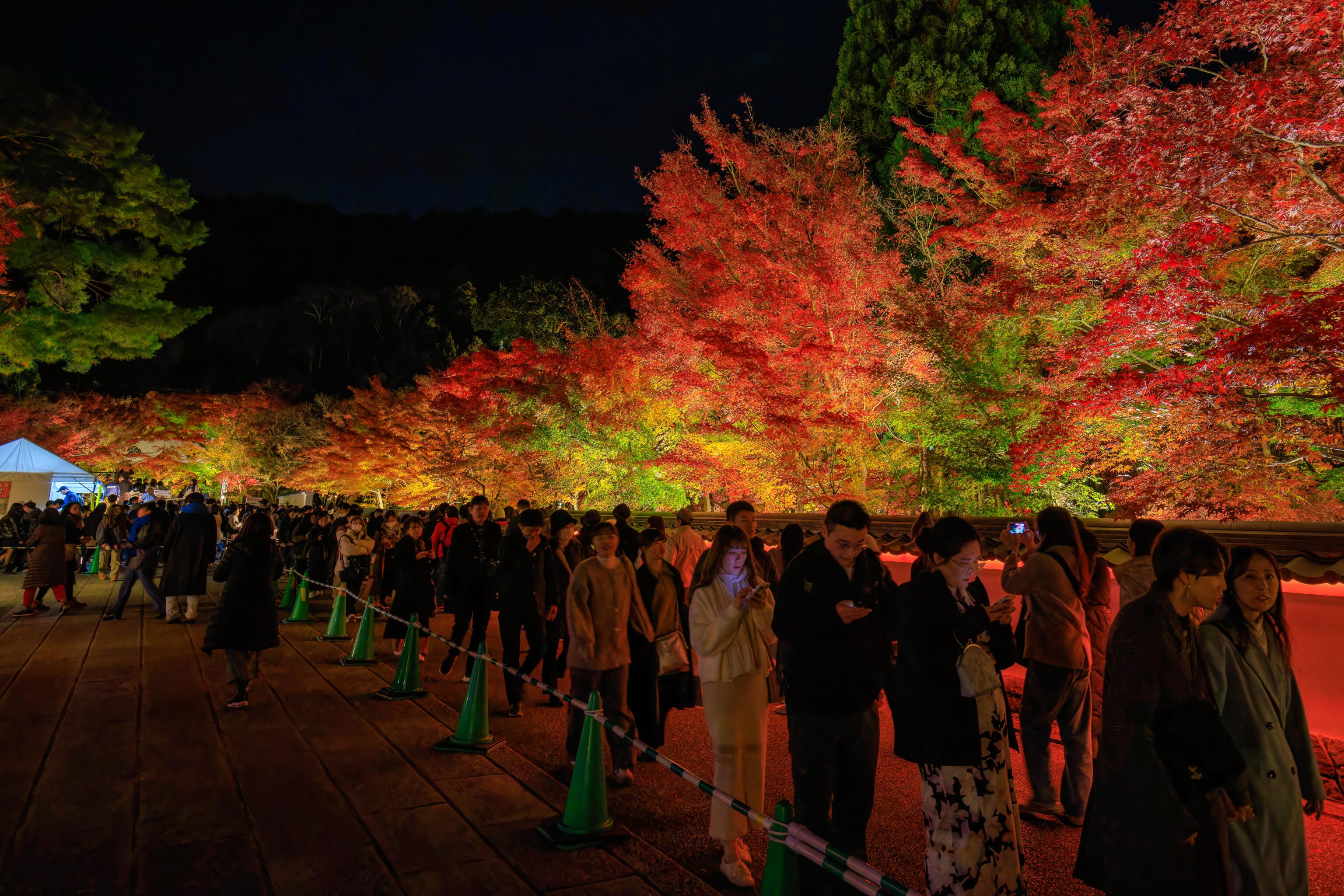
We went in and headed to the end of the queue. It snaked around a bit though seemed to be moving.
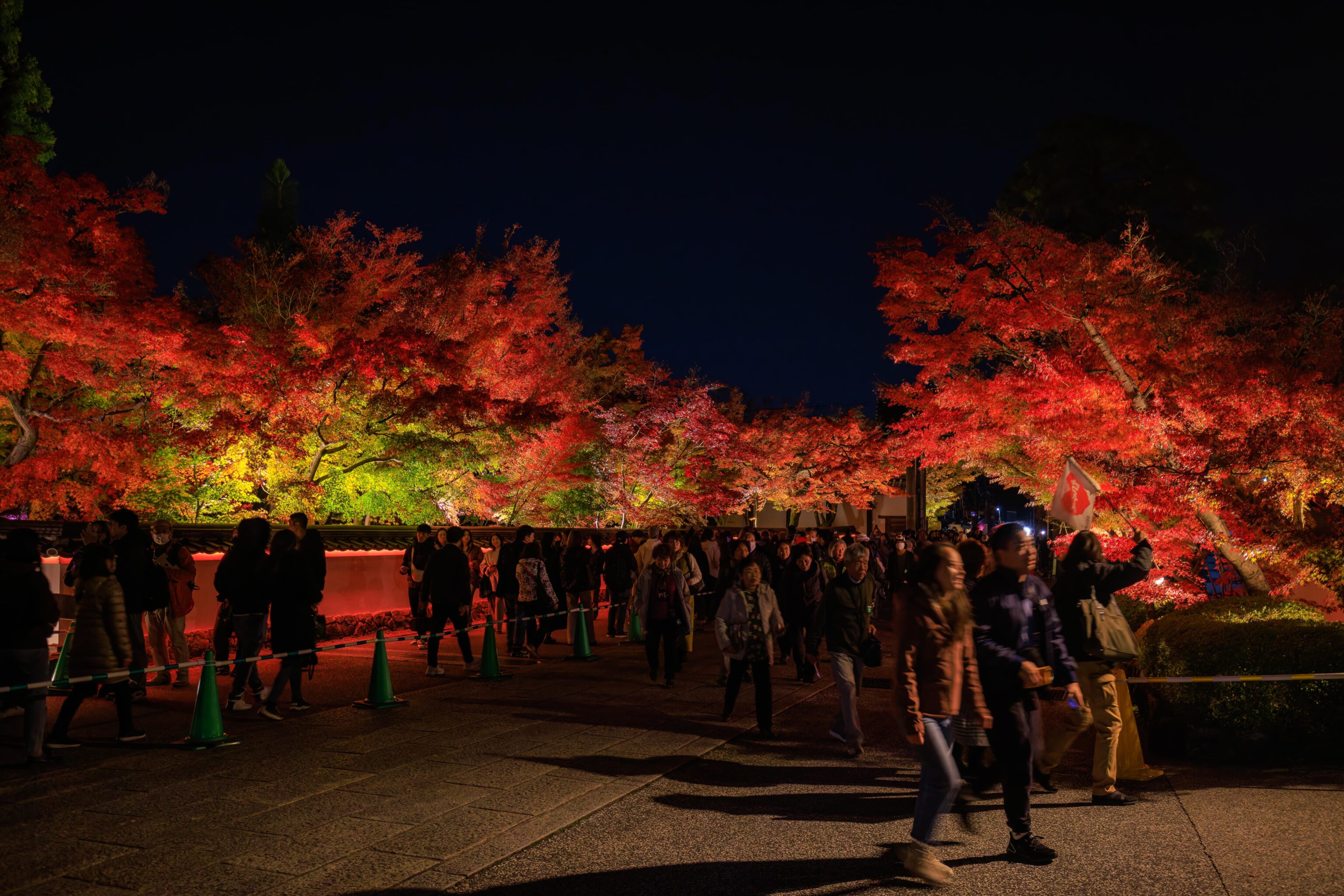
The queue slowly advanced. We even saw tour groups enter the queue. It seems there is no bypass for them.
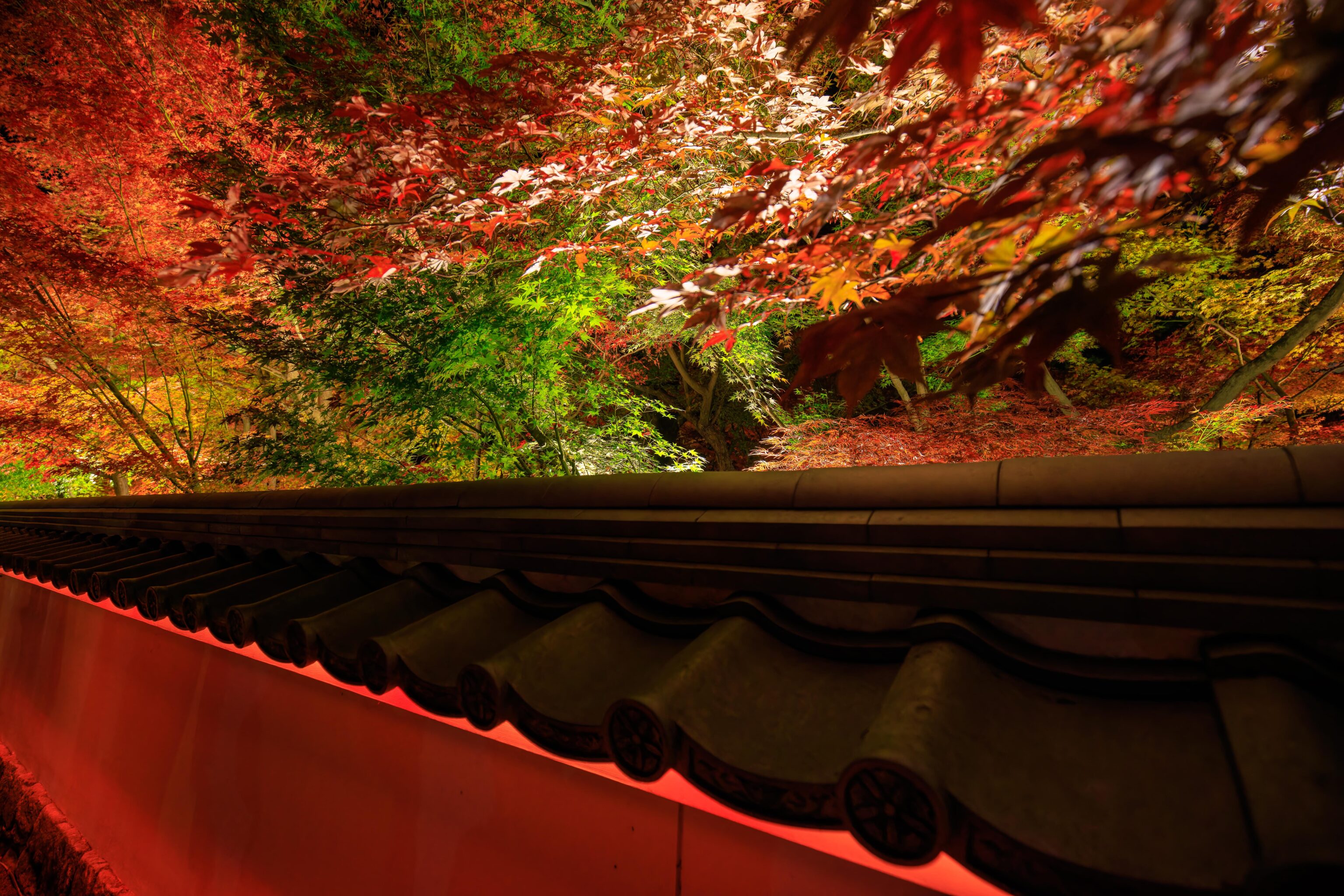
Some of the walls were illuminated as well!
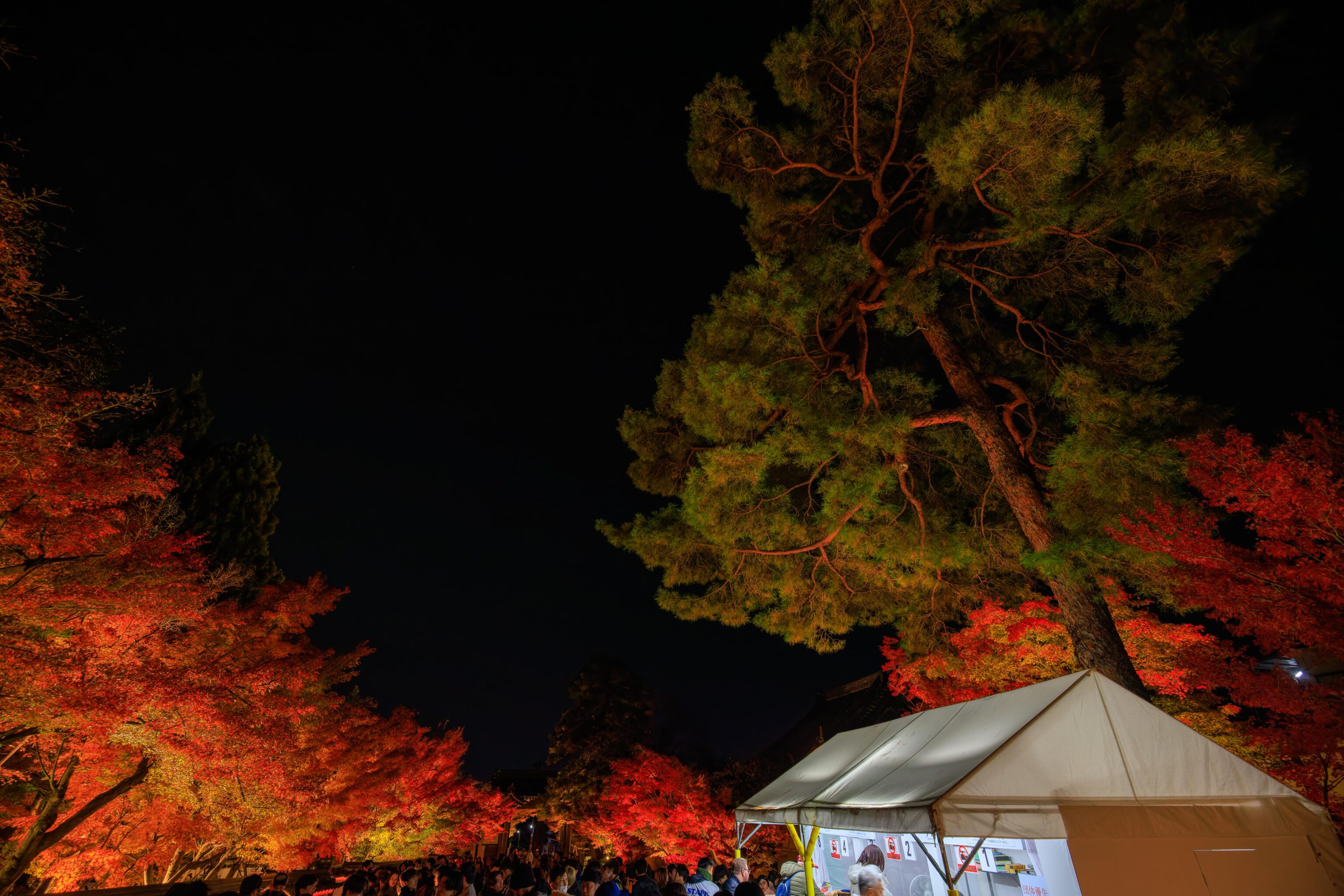
The ticket office worked the same way it did earlier in the day – one person per group buys the tickets while the others go past and wait.
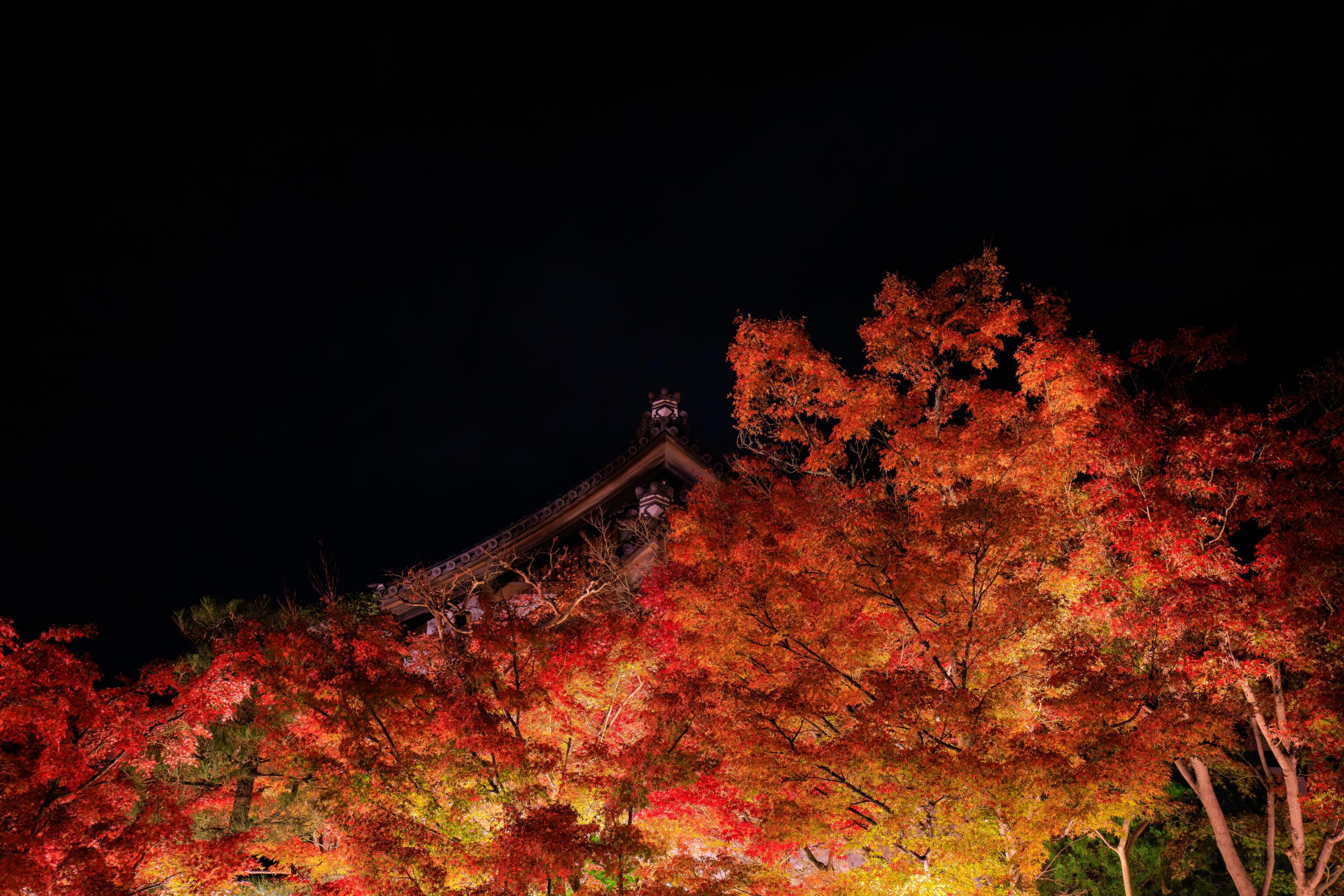
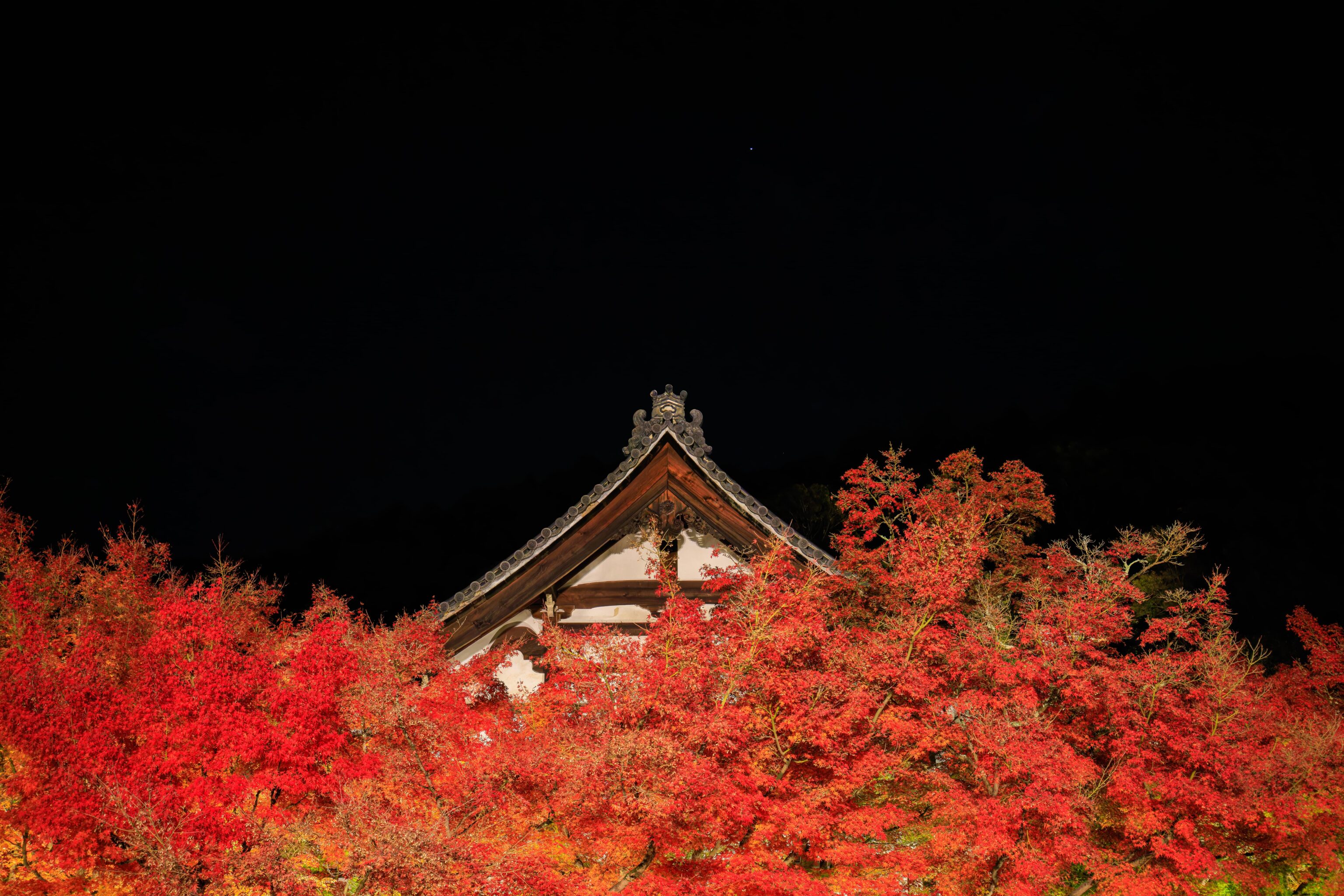
It only took about 15 minutes to get in. Inside, everything was quite familiar yet different!
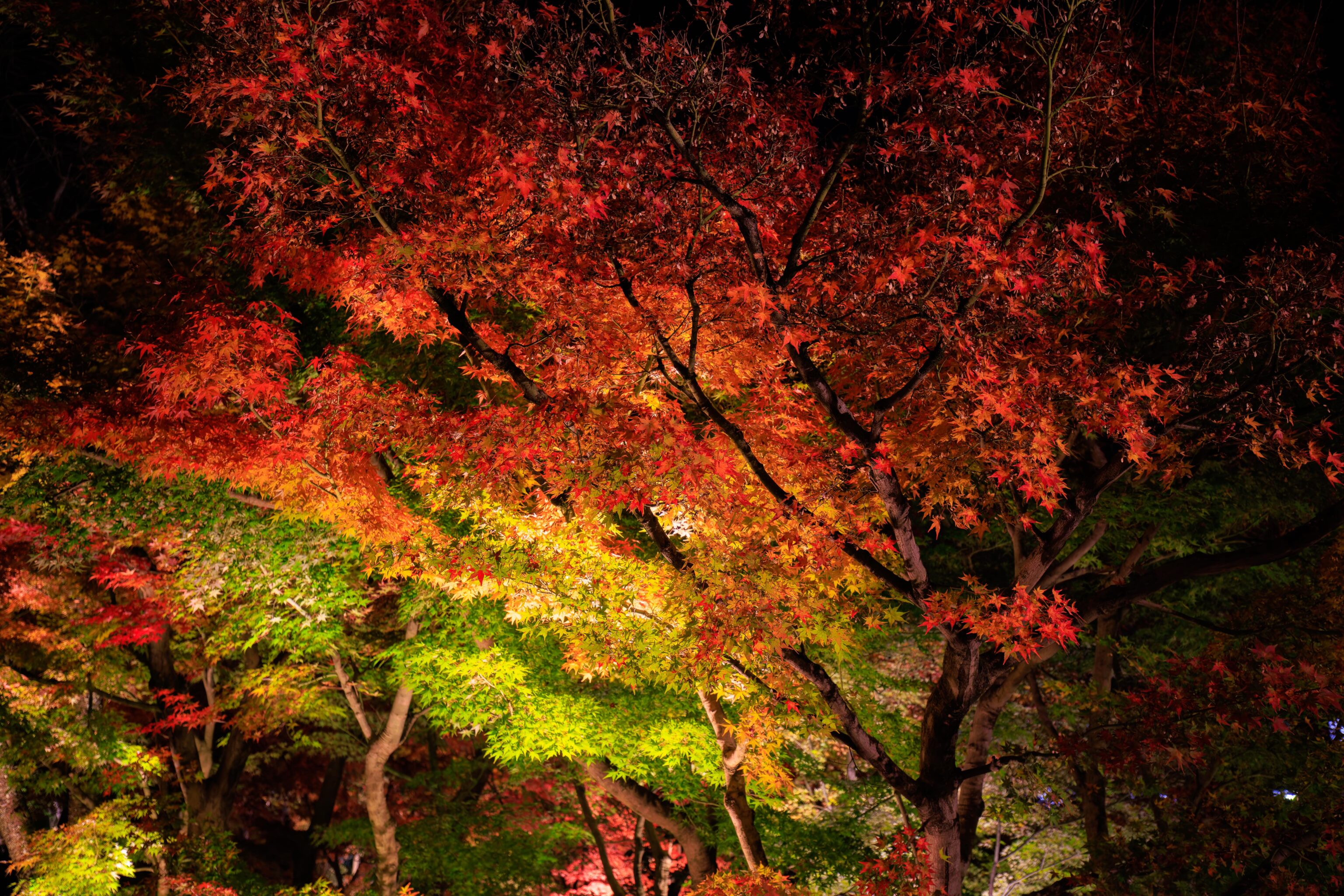
All the colors here in one spot! From green, yellow, orange, and red!
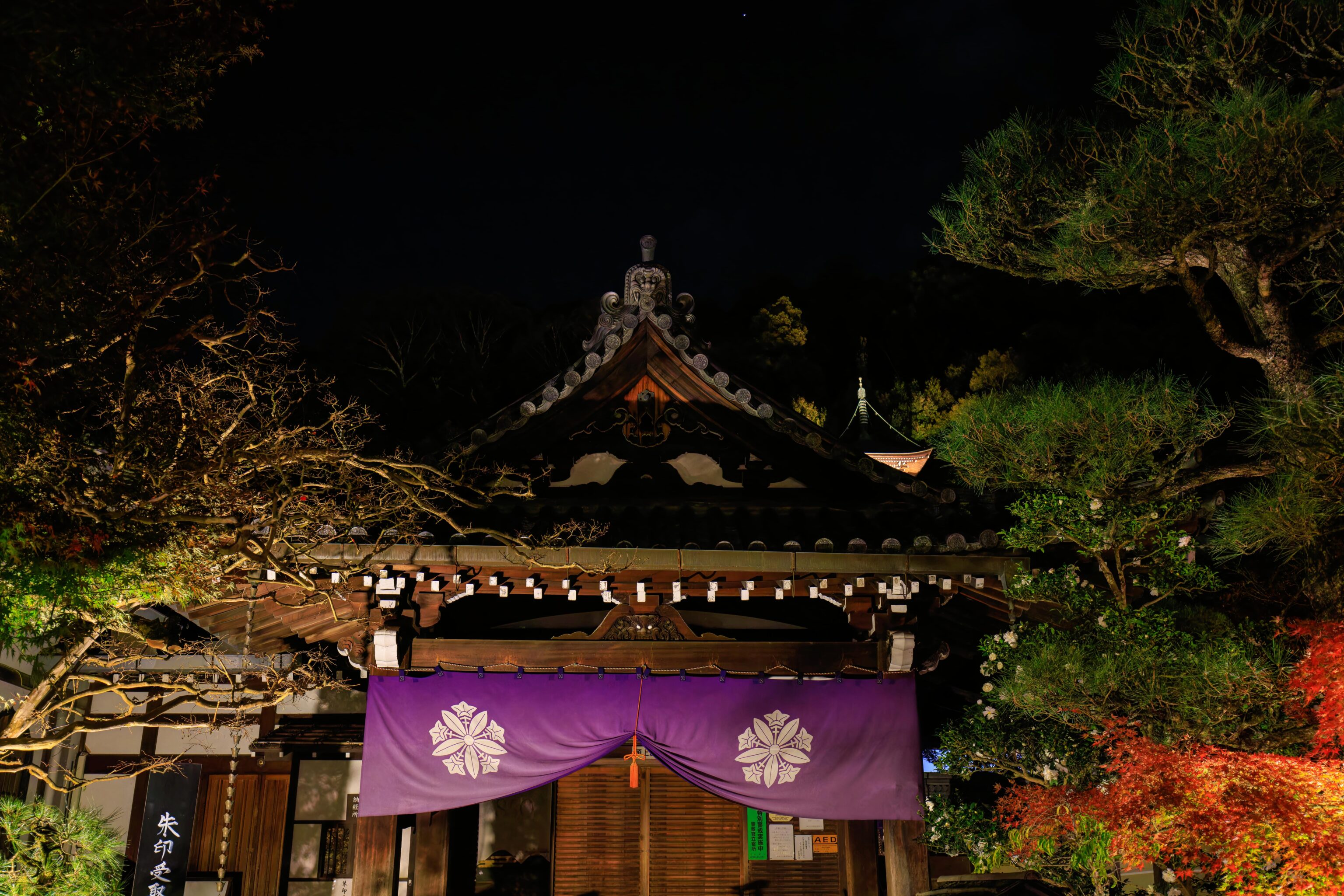
Earlier in the day, this was the entrance to the interior route. It was closed for the evening. The crowds would definitely be a bit much!
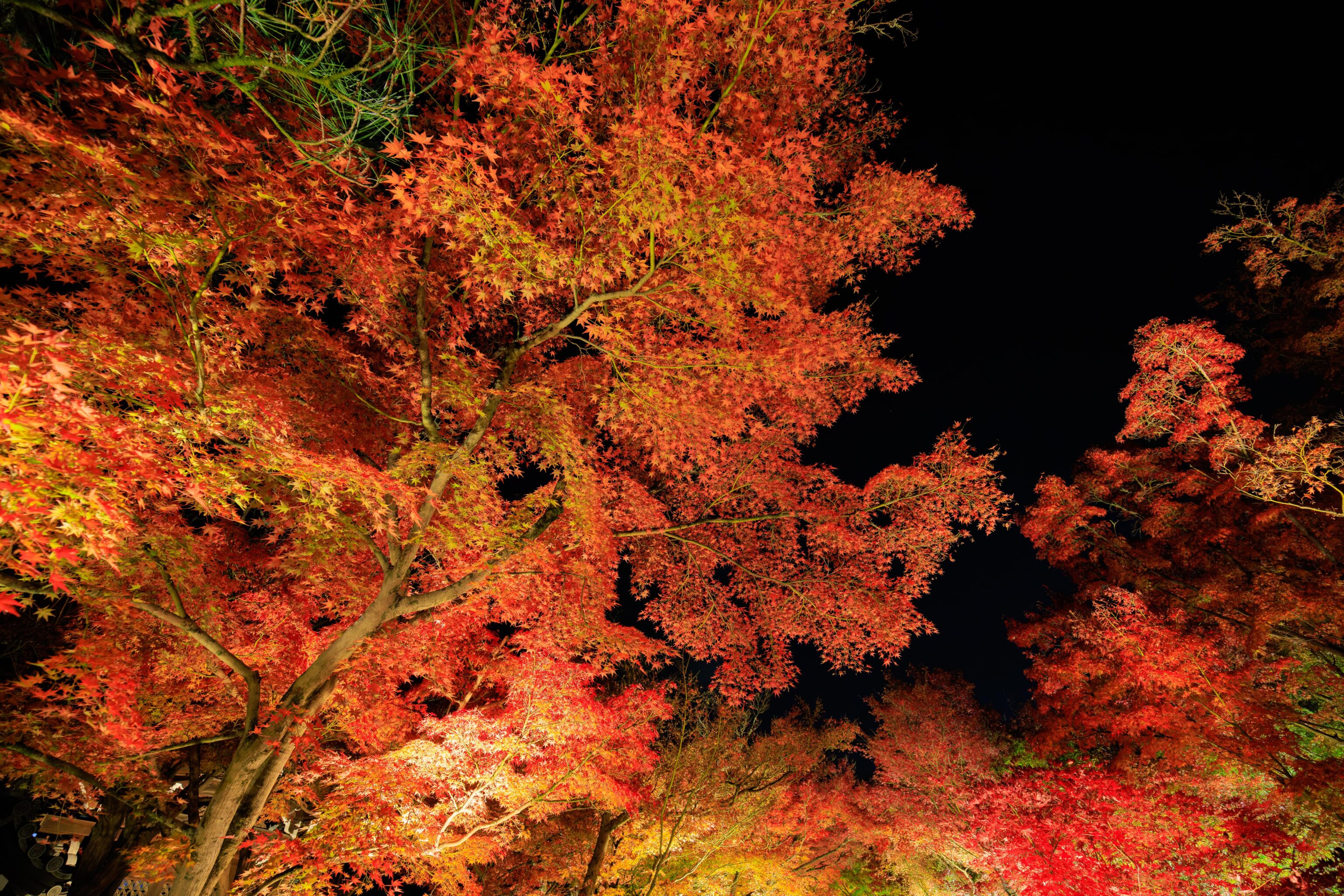
Quite a beautiful canopy!
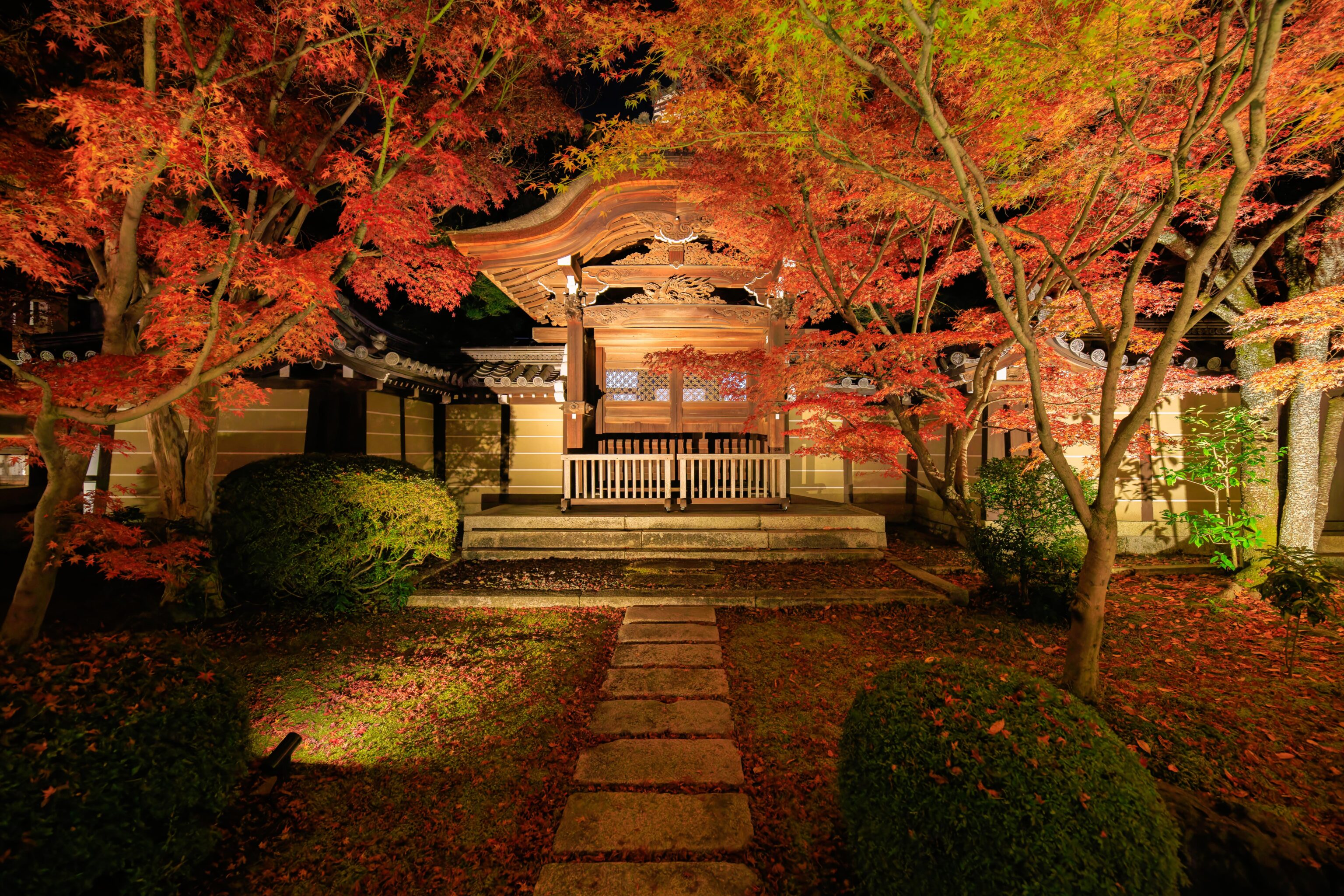
The Karamon, which we photographed on both sides earlier today.
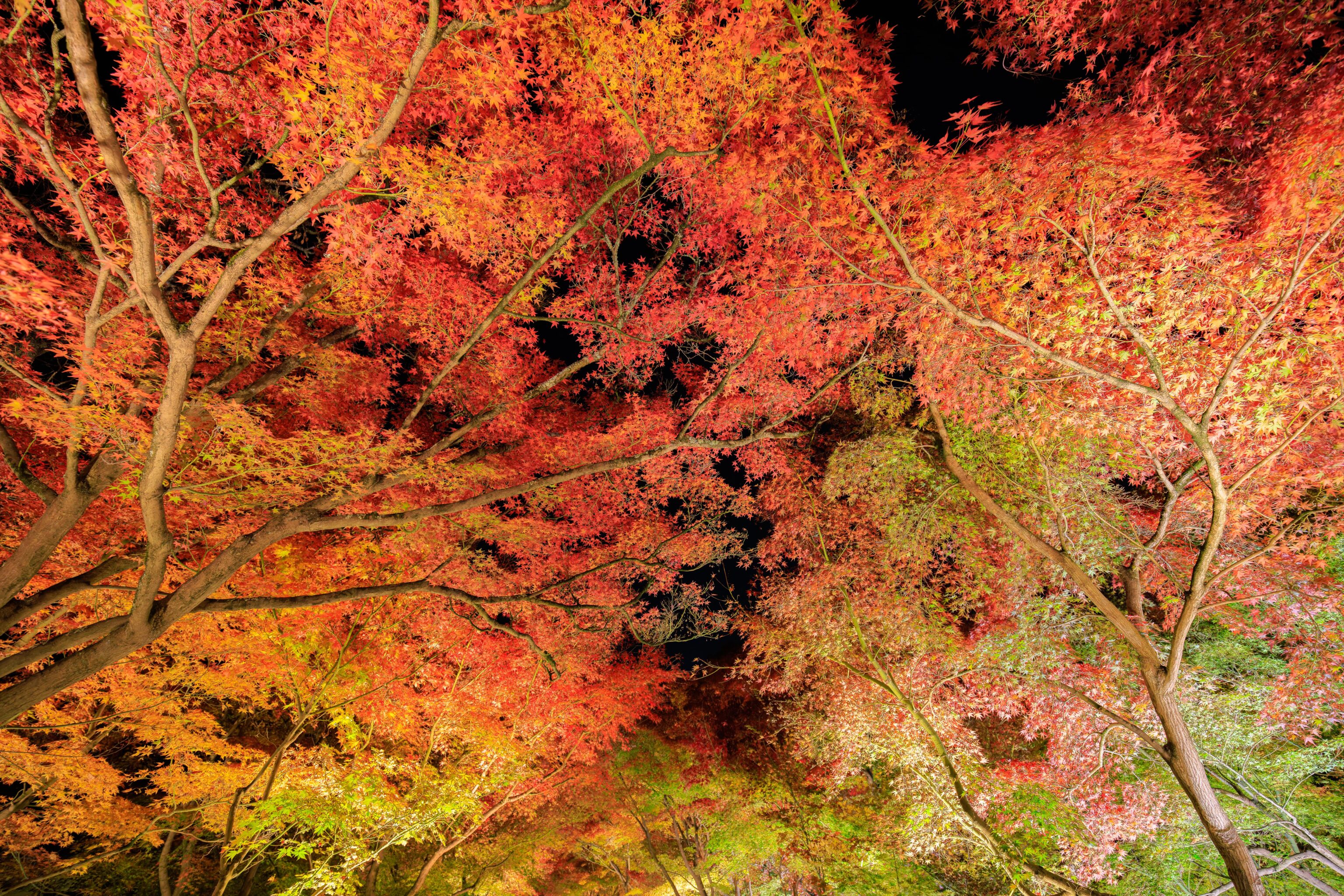
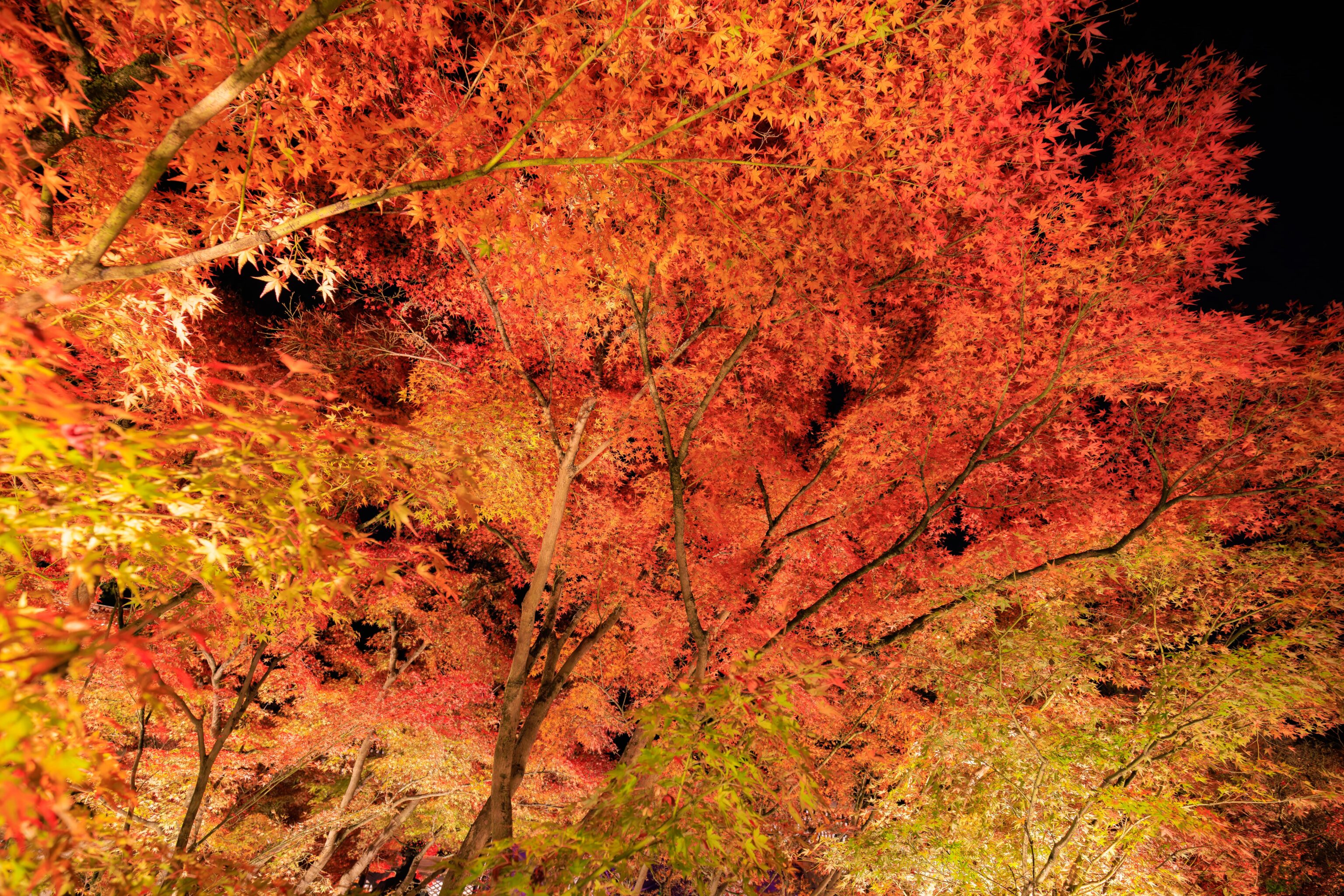
While Kiyomizu-dera had fantastic views of their Japanese maples from above, particularly from the Okuno-in, Eikando Zenrin-ji definitely had a better view from below the trees!
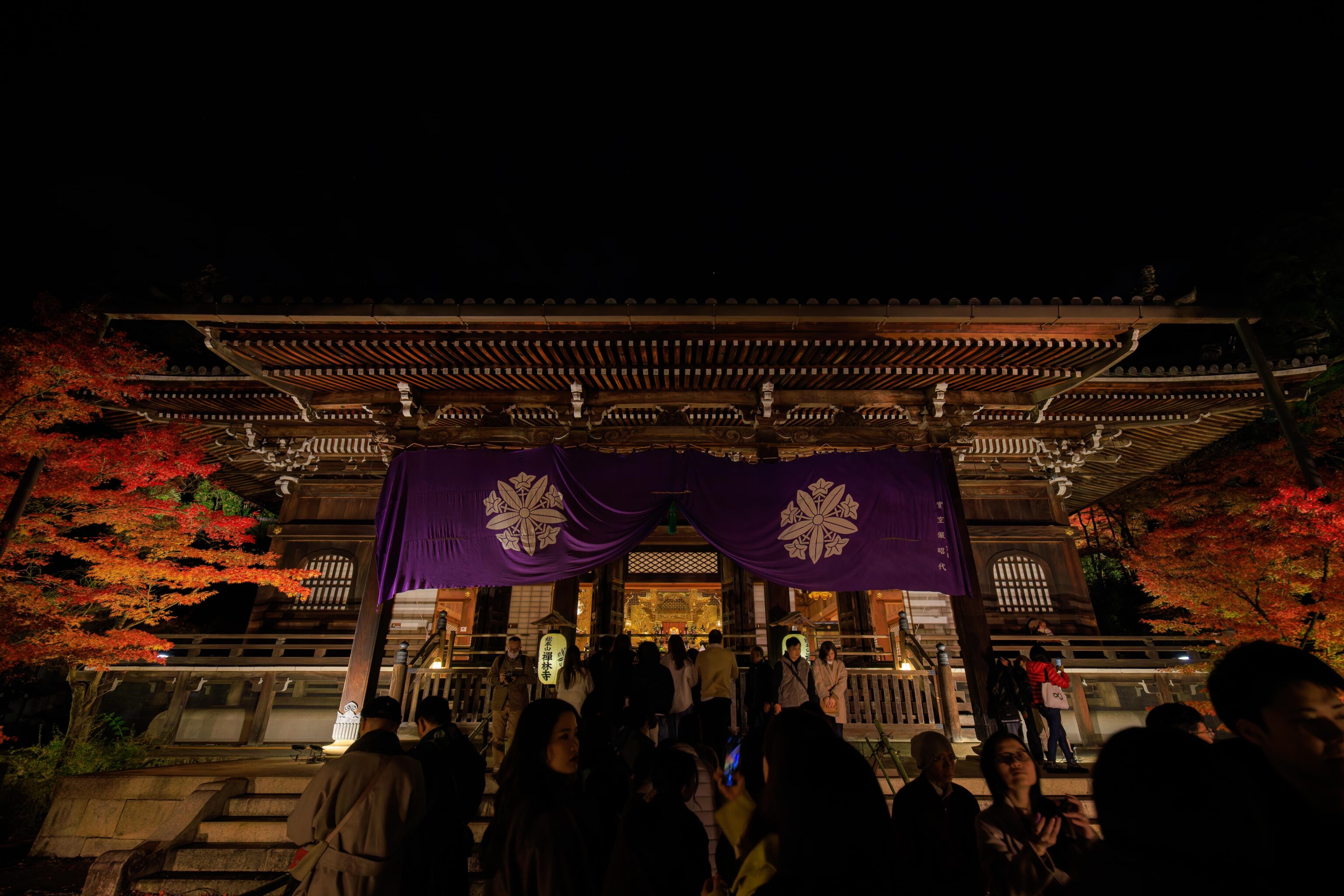
This entrance to the Miei-do, what seems like the largest temple building here, was still blocked off like it was earlier. Unlike earlier though, the exterior area was quite busy with people praying. The inside was fully illuminated as well with all the lights on.
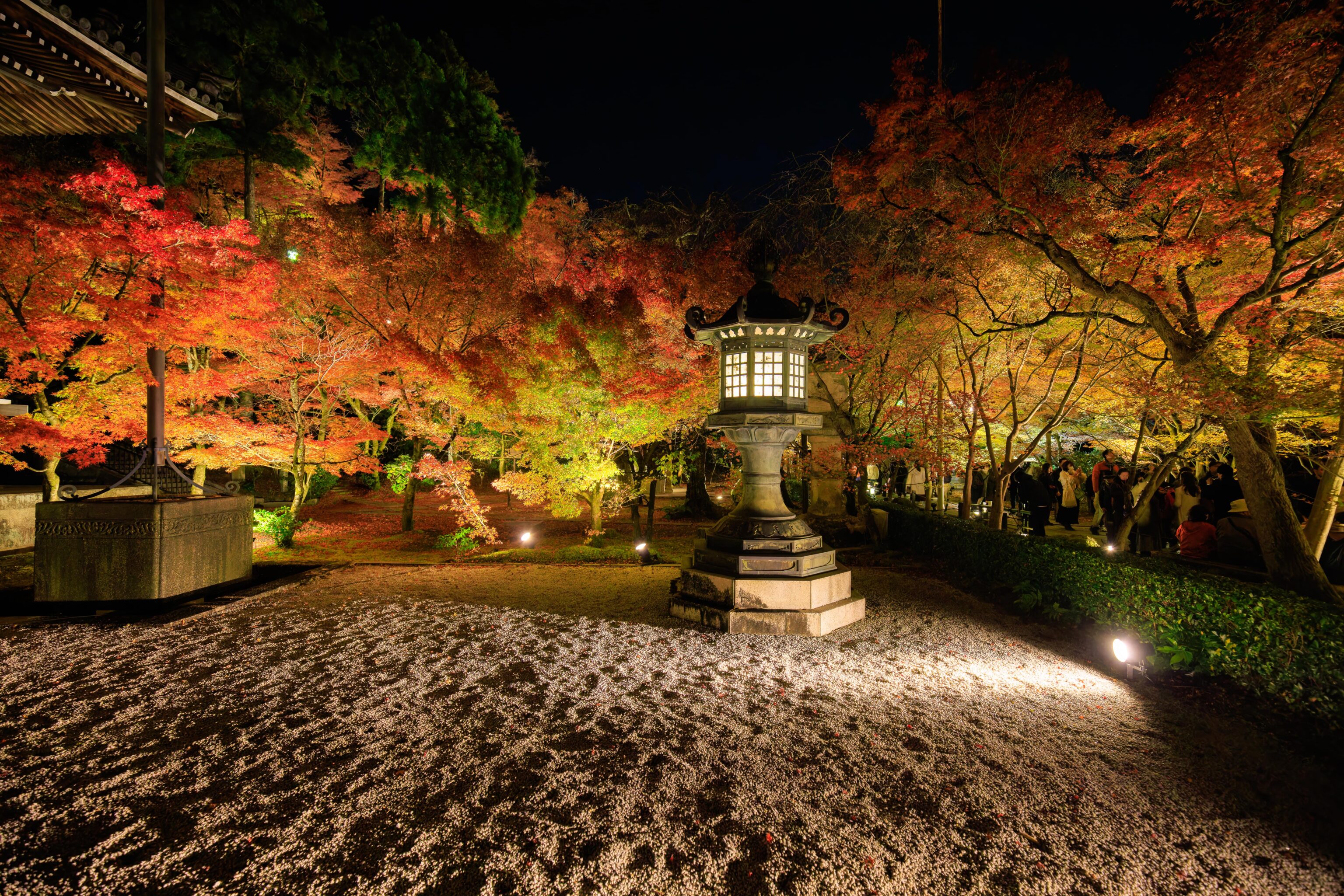
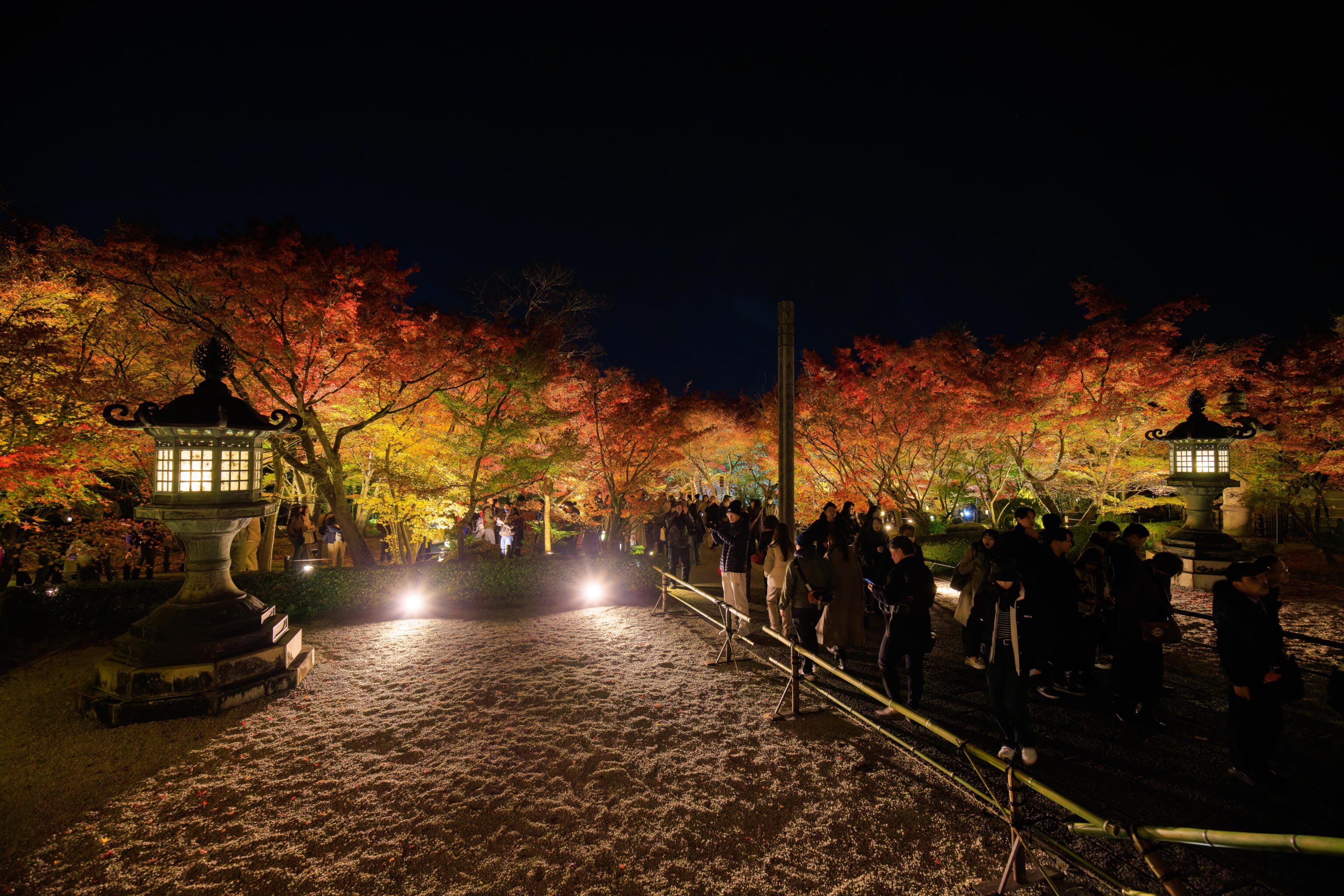
The left and right sides in front of the building have large stone lanterns.
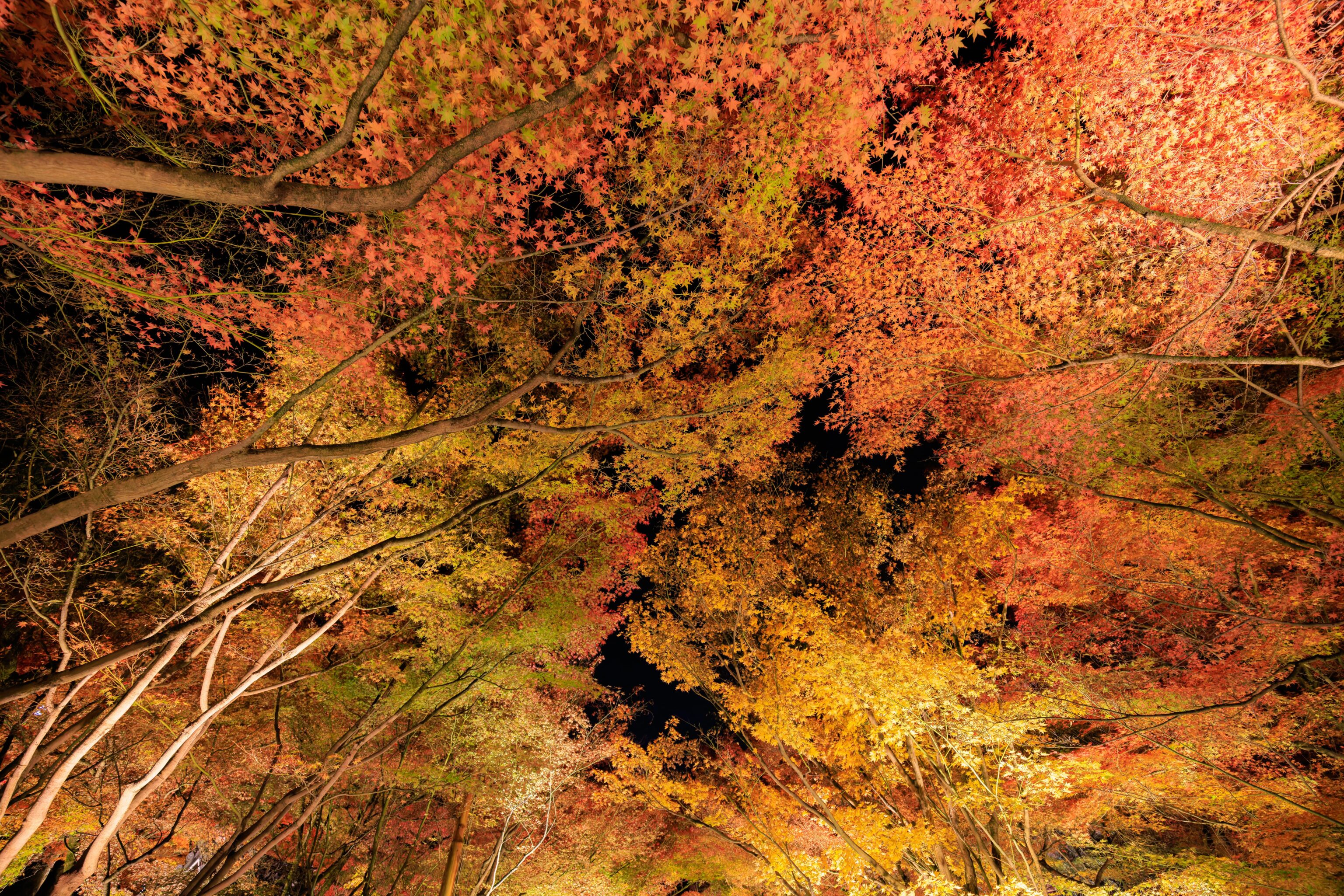
We continued on, again walking under a beautiful canopy of colorful leaves.
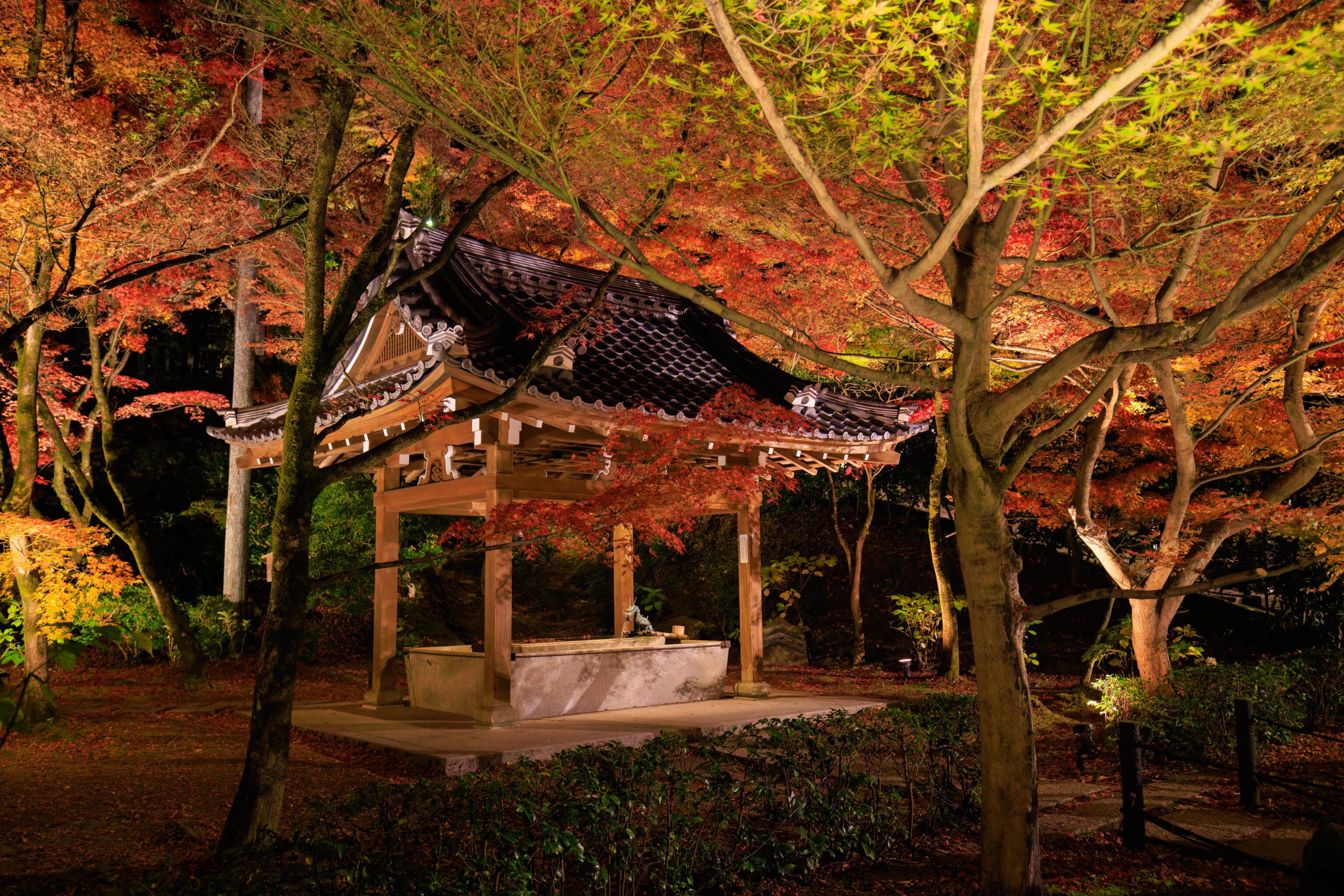
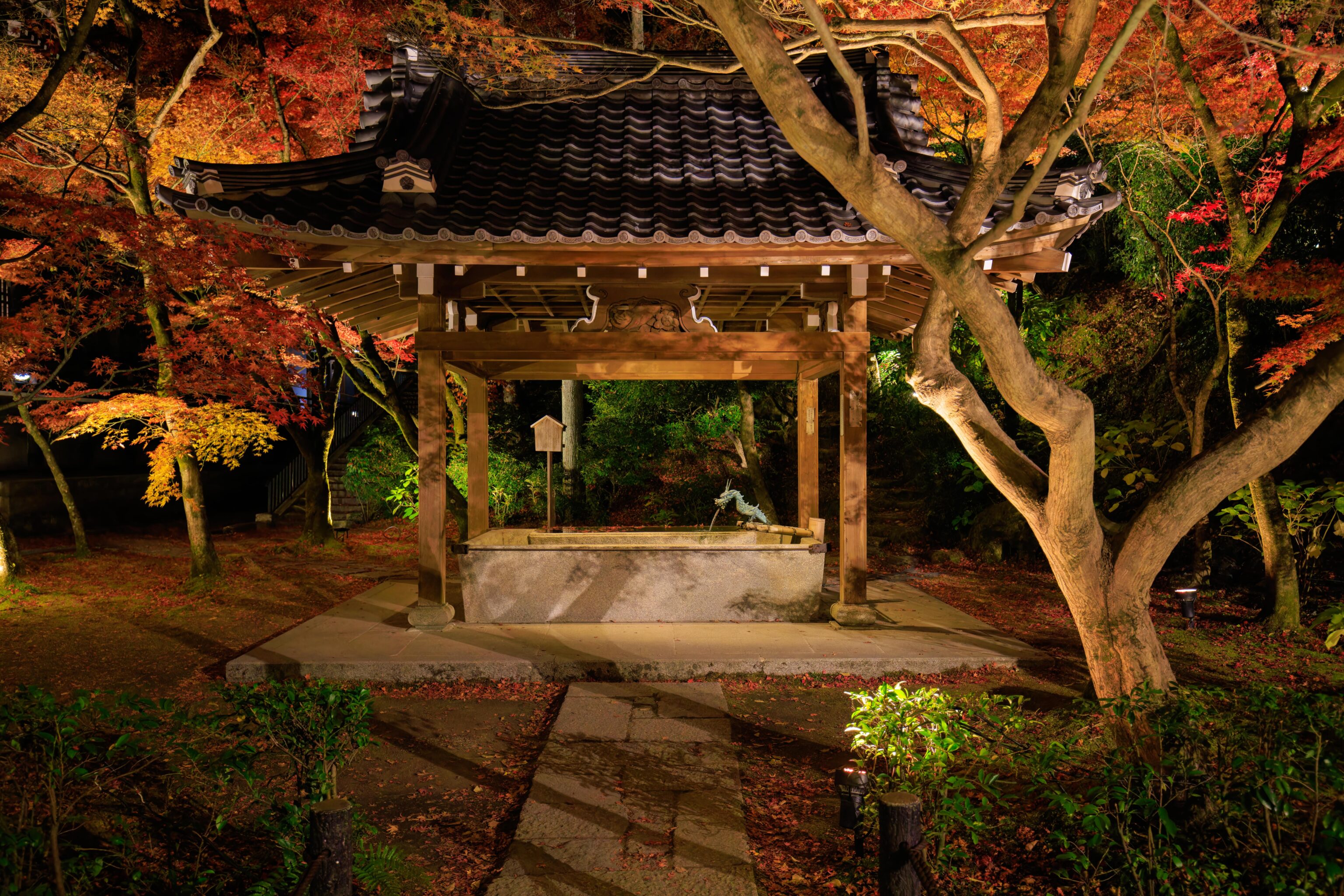
This cleansing station was in use earlier in the day.
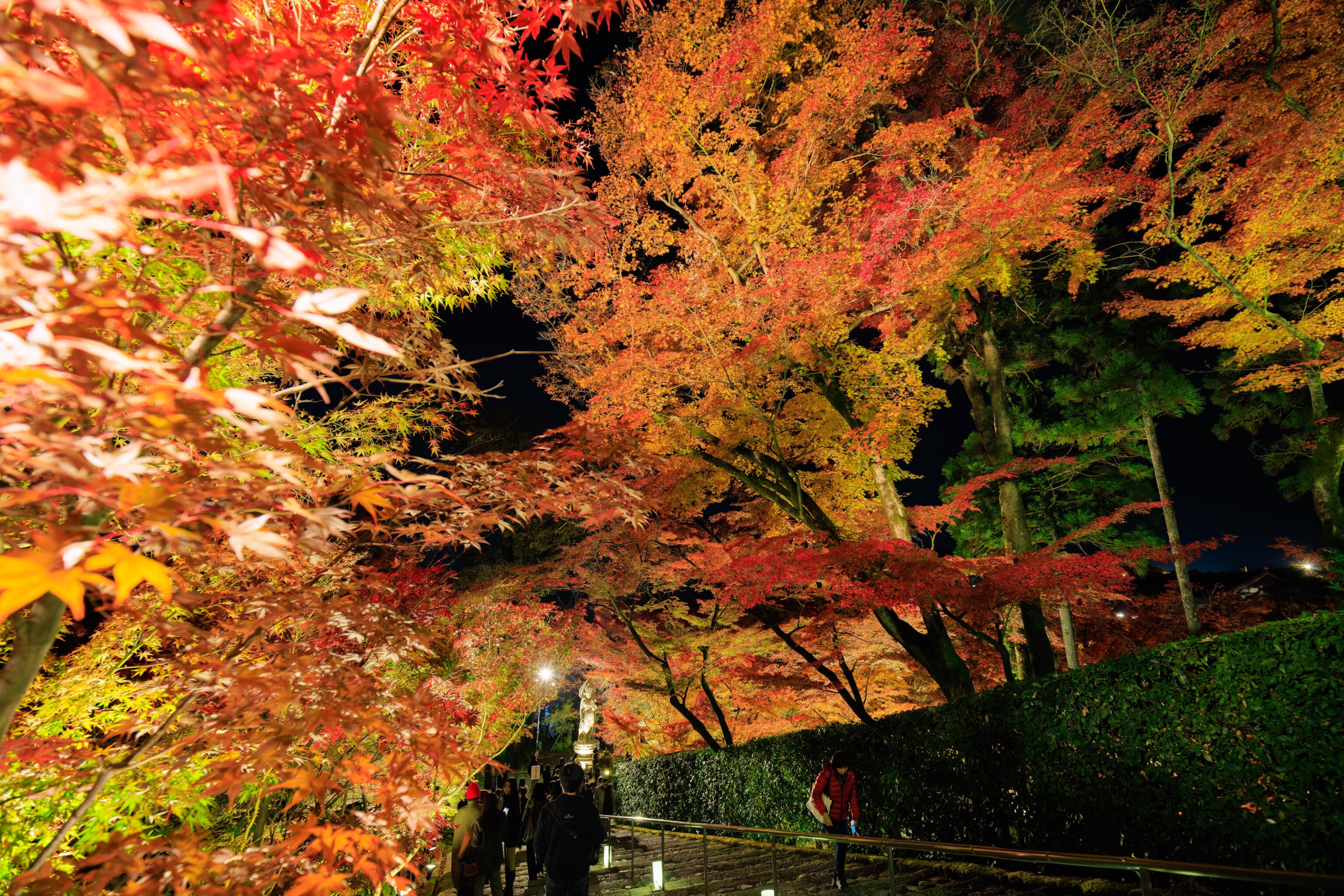
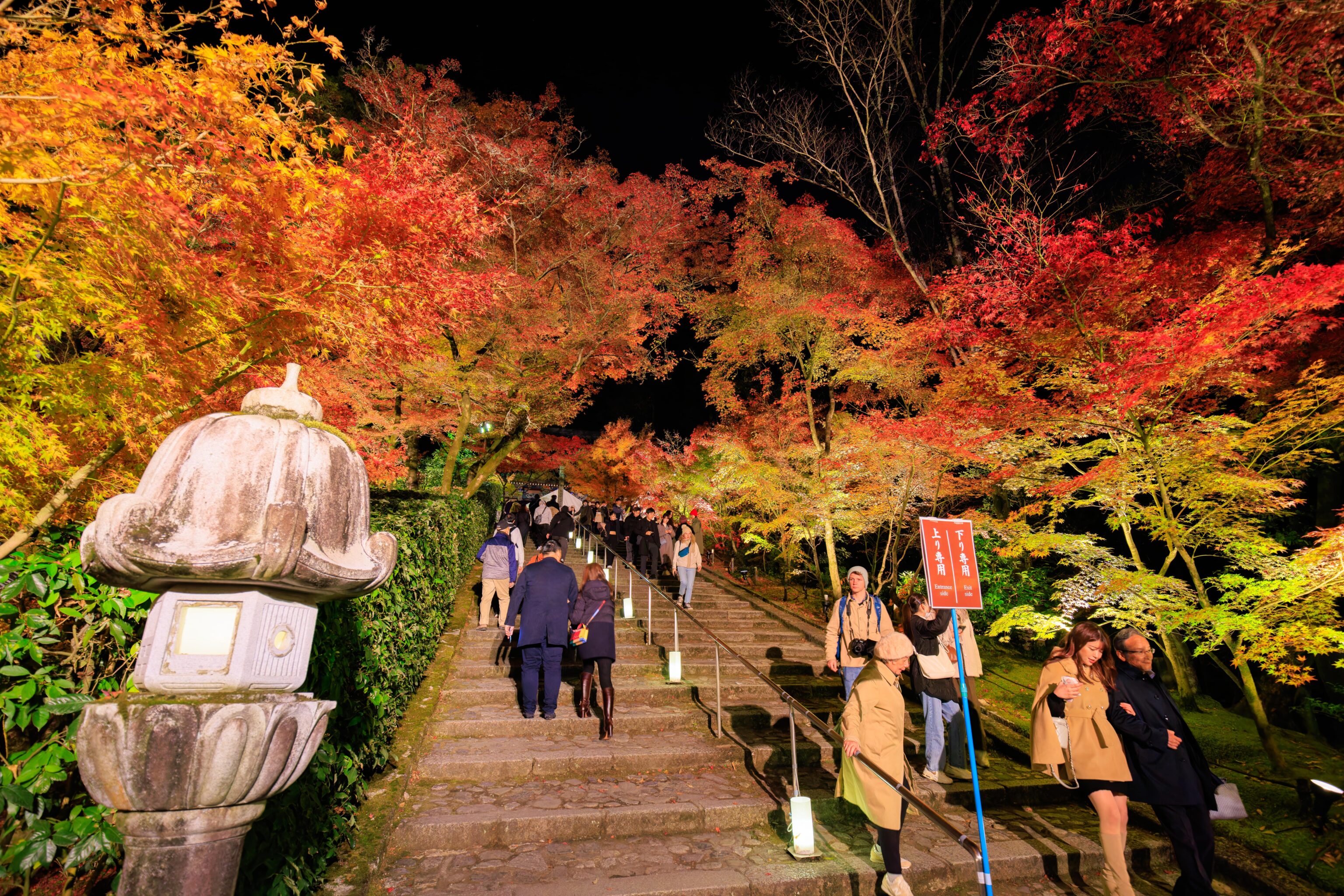
These stairs were down only earlier but were now both up and down in order to access the Amida-do.
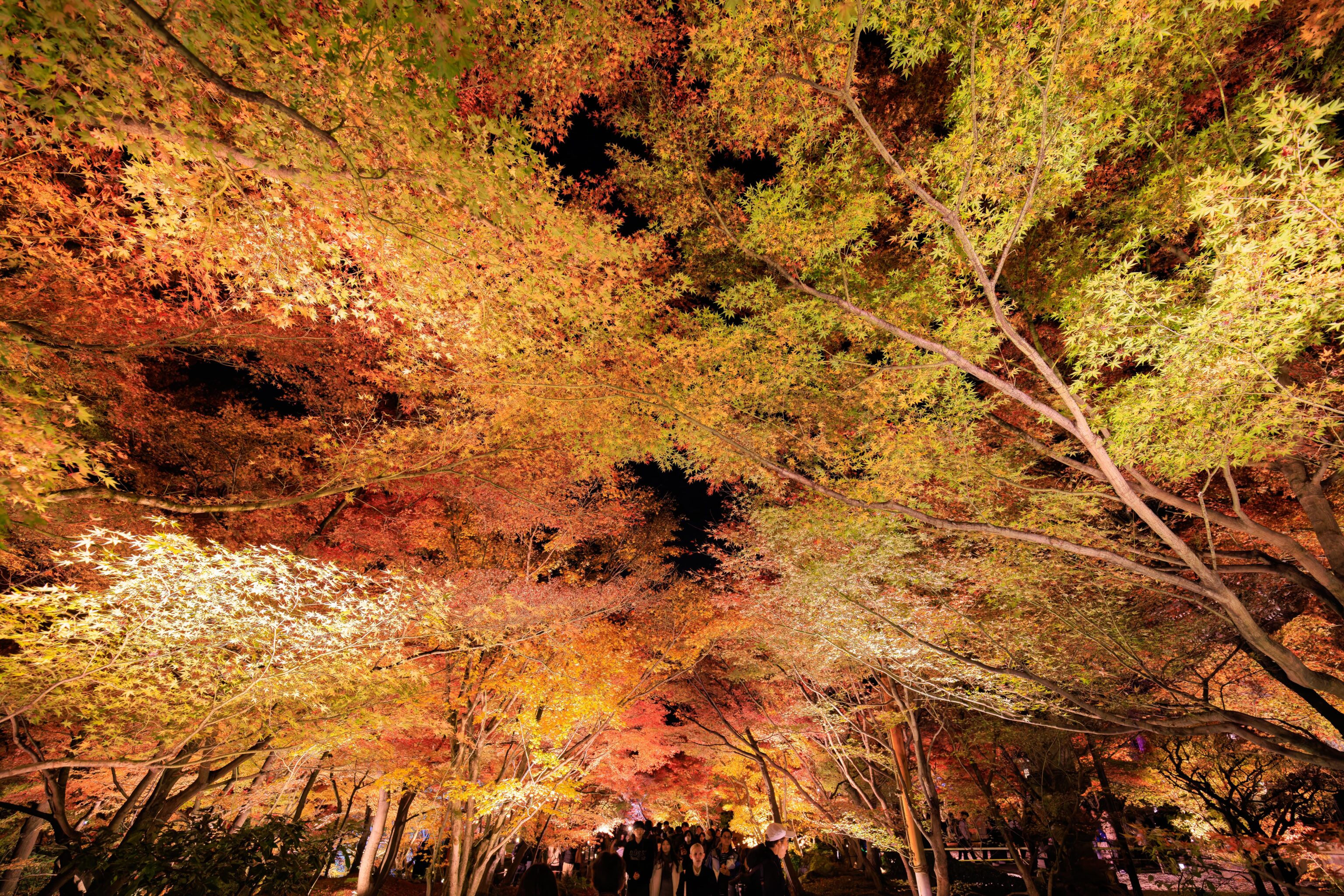
Another look at the beautiful canopy! And a bit of the crowd below!
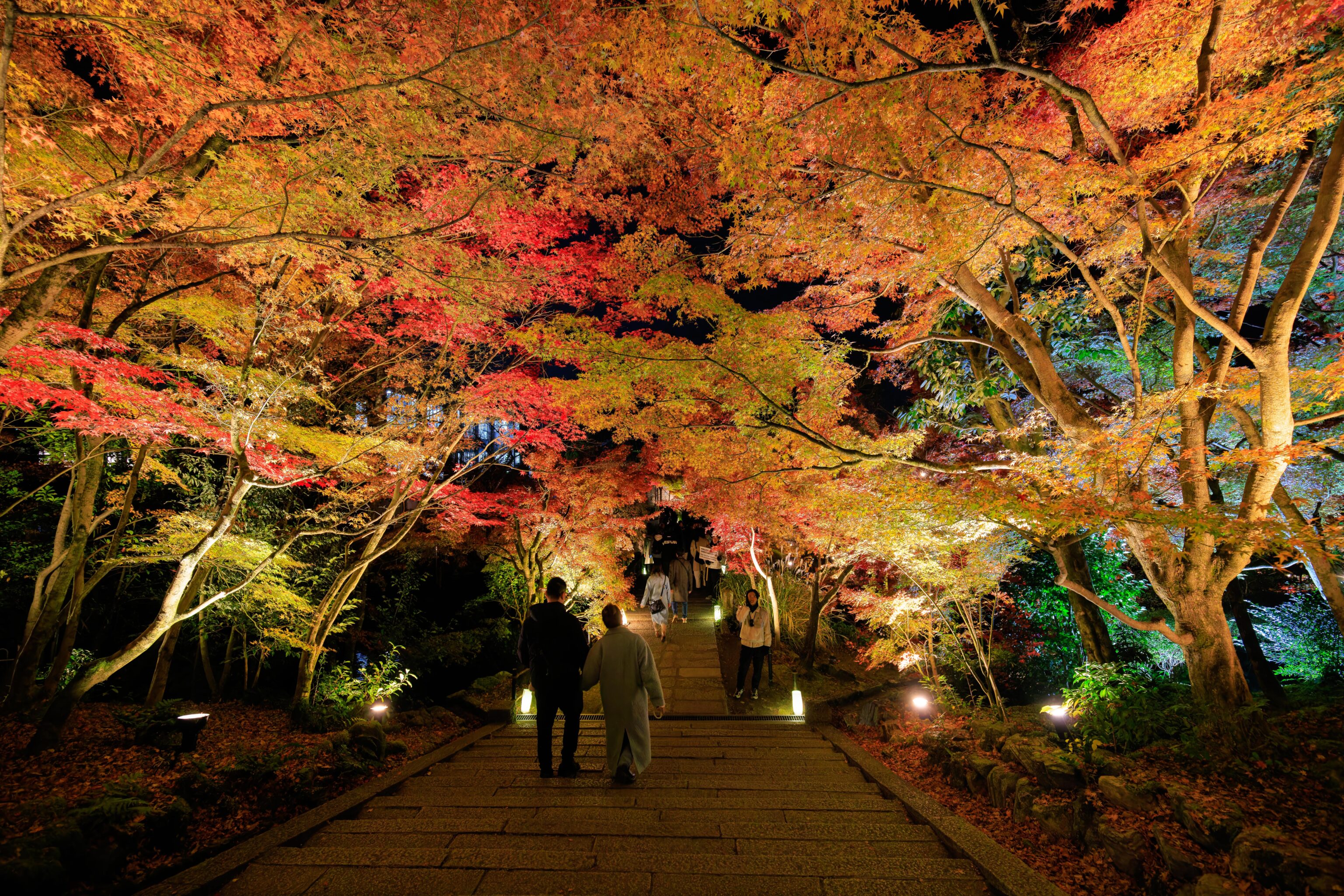
We continued on, heading down the stairs that lead ton the pond. There is a person holding a sign below that says not to stop on the bridge.
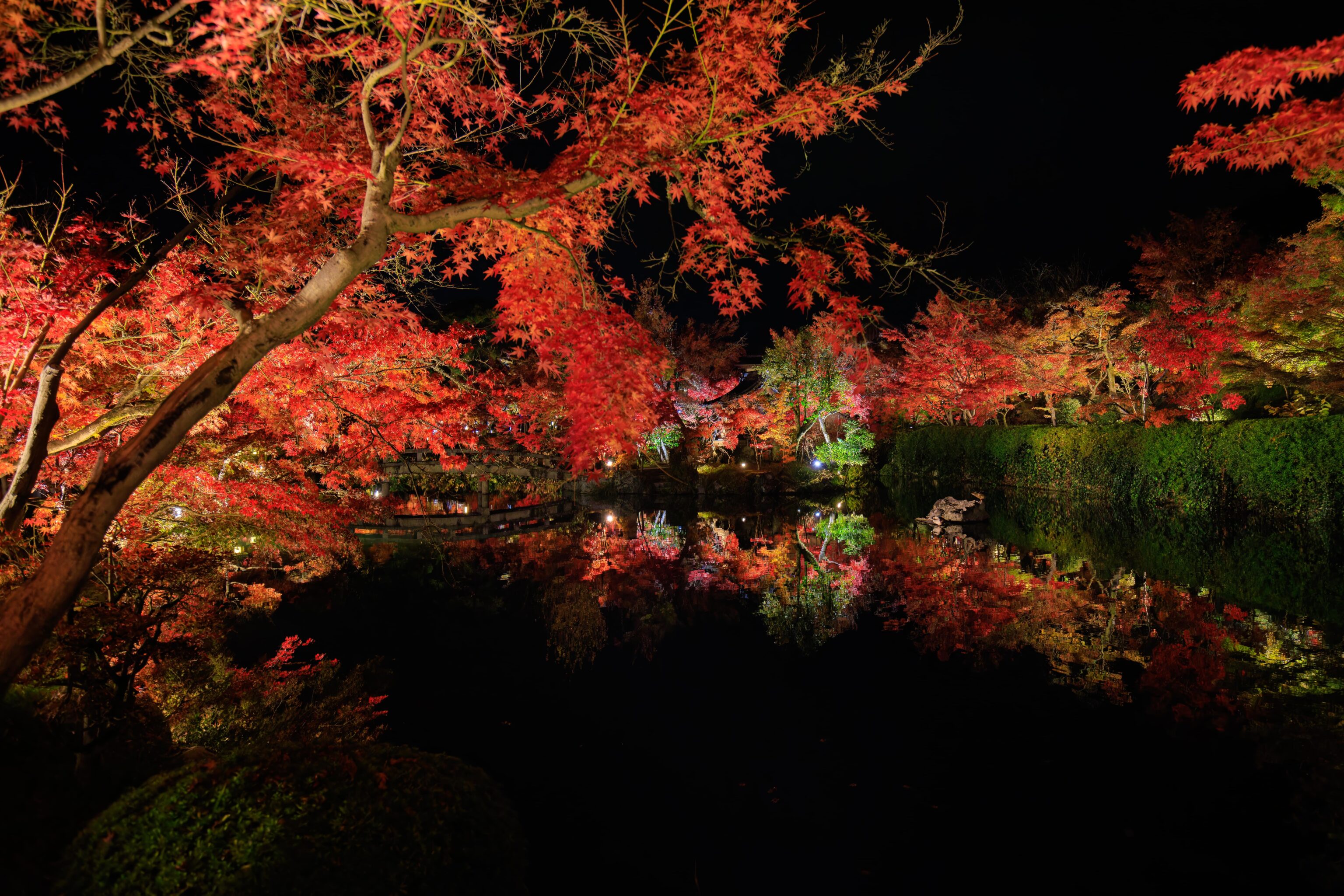
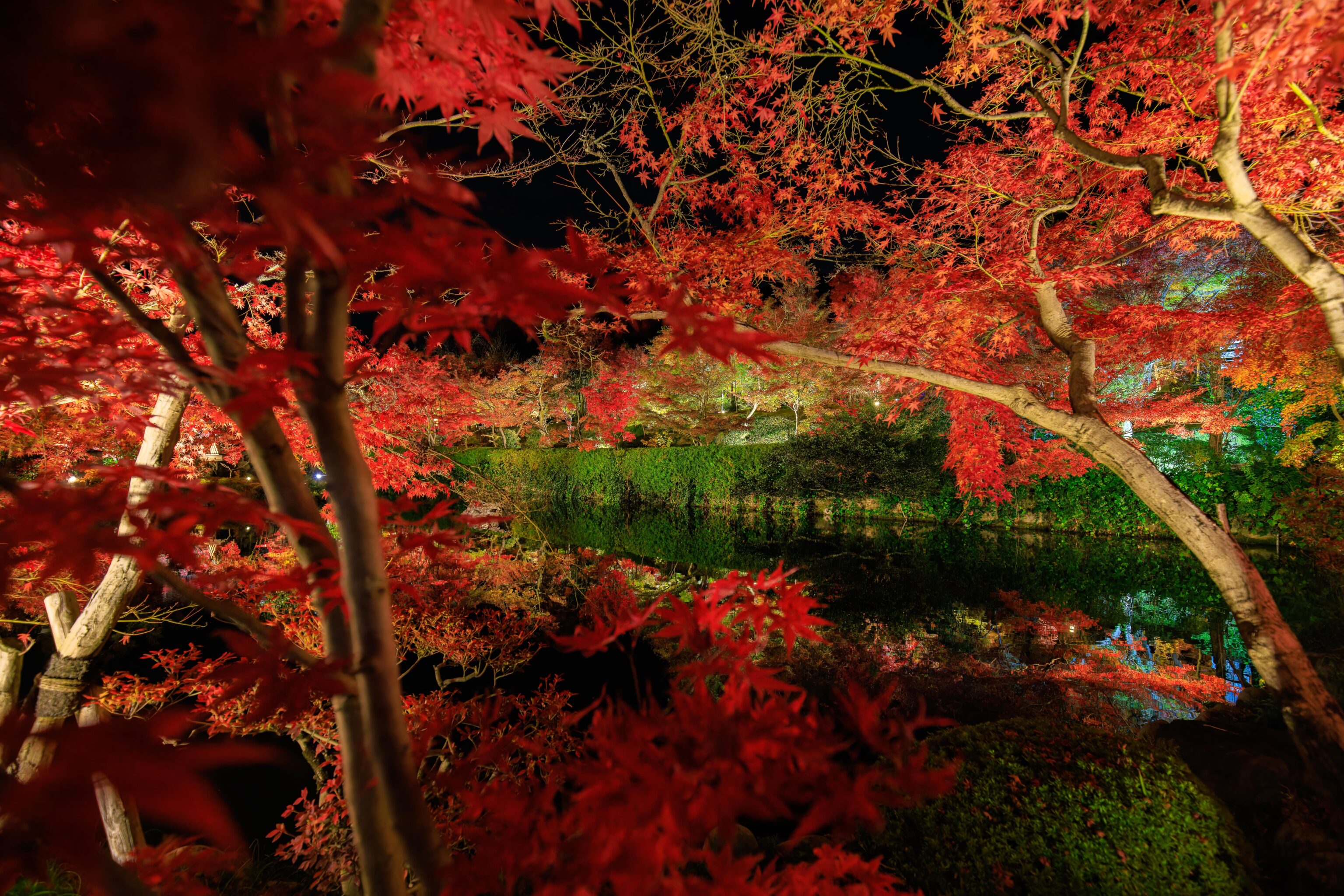
There was a nice view just beyond the bridge. The pond’s surface was extremely still and nicely reflected the illuminated trees all around.
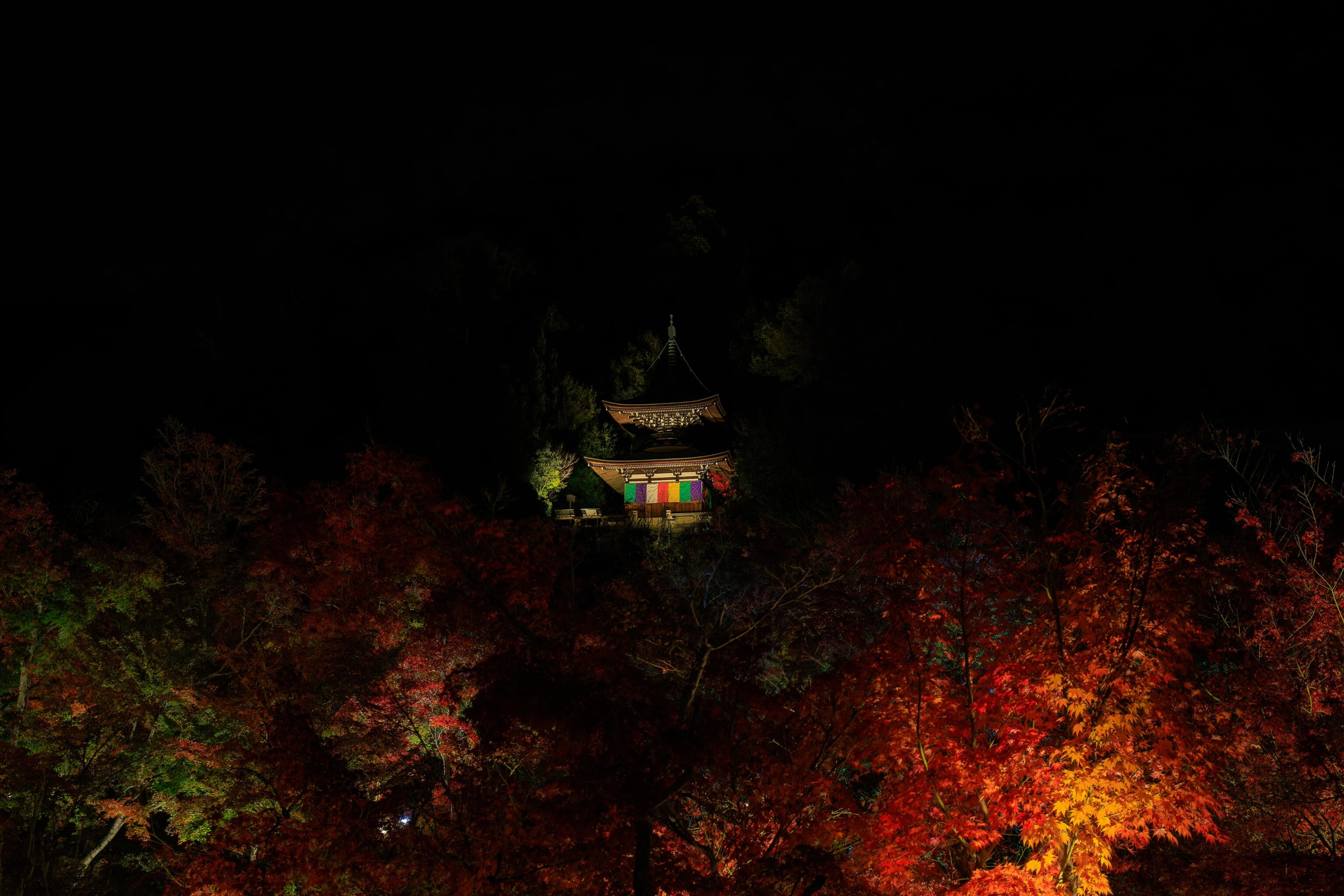
The Taho-to was illuminated, though nothing around it was.
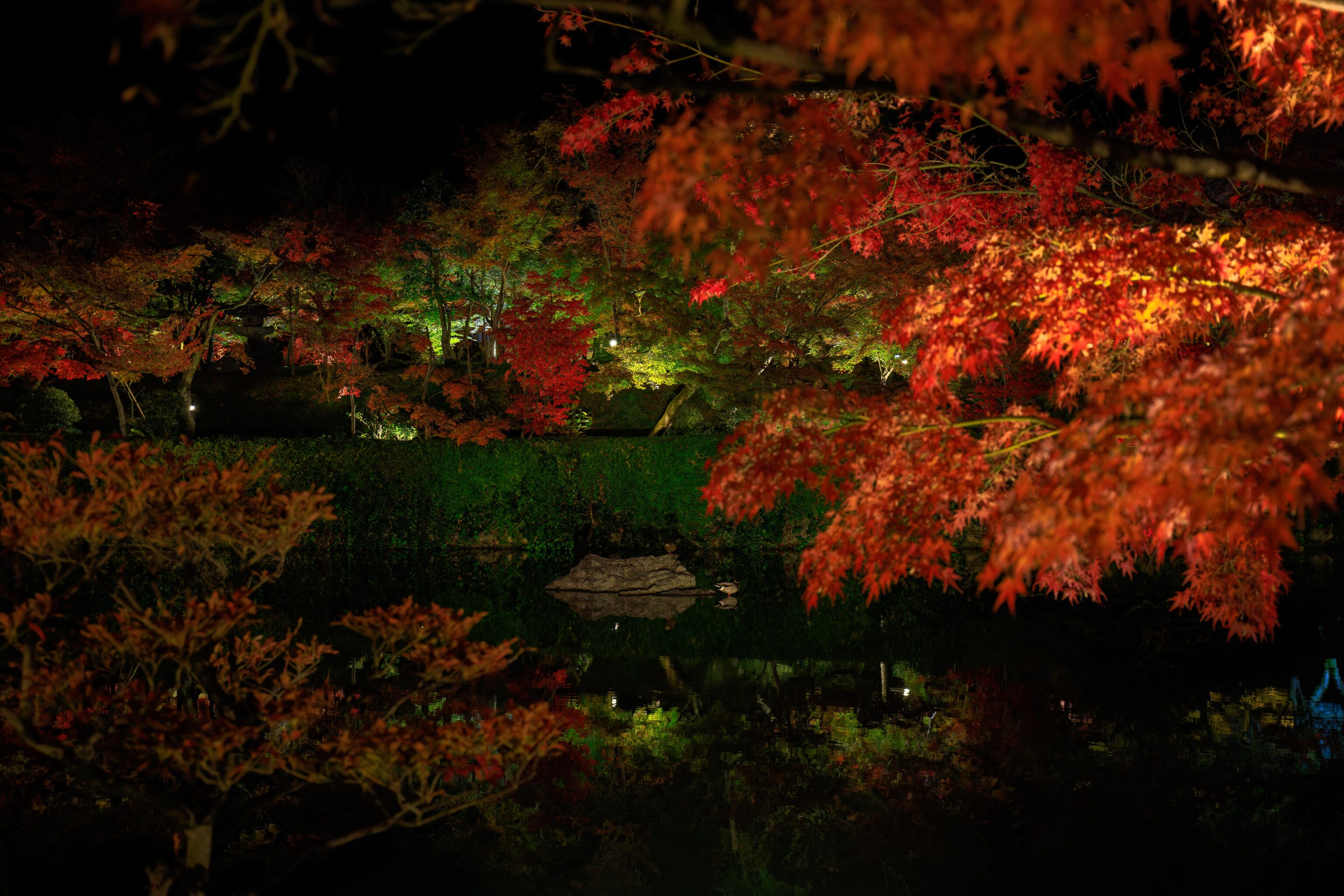
There were some ducks who seemed like they were trying to sleep!
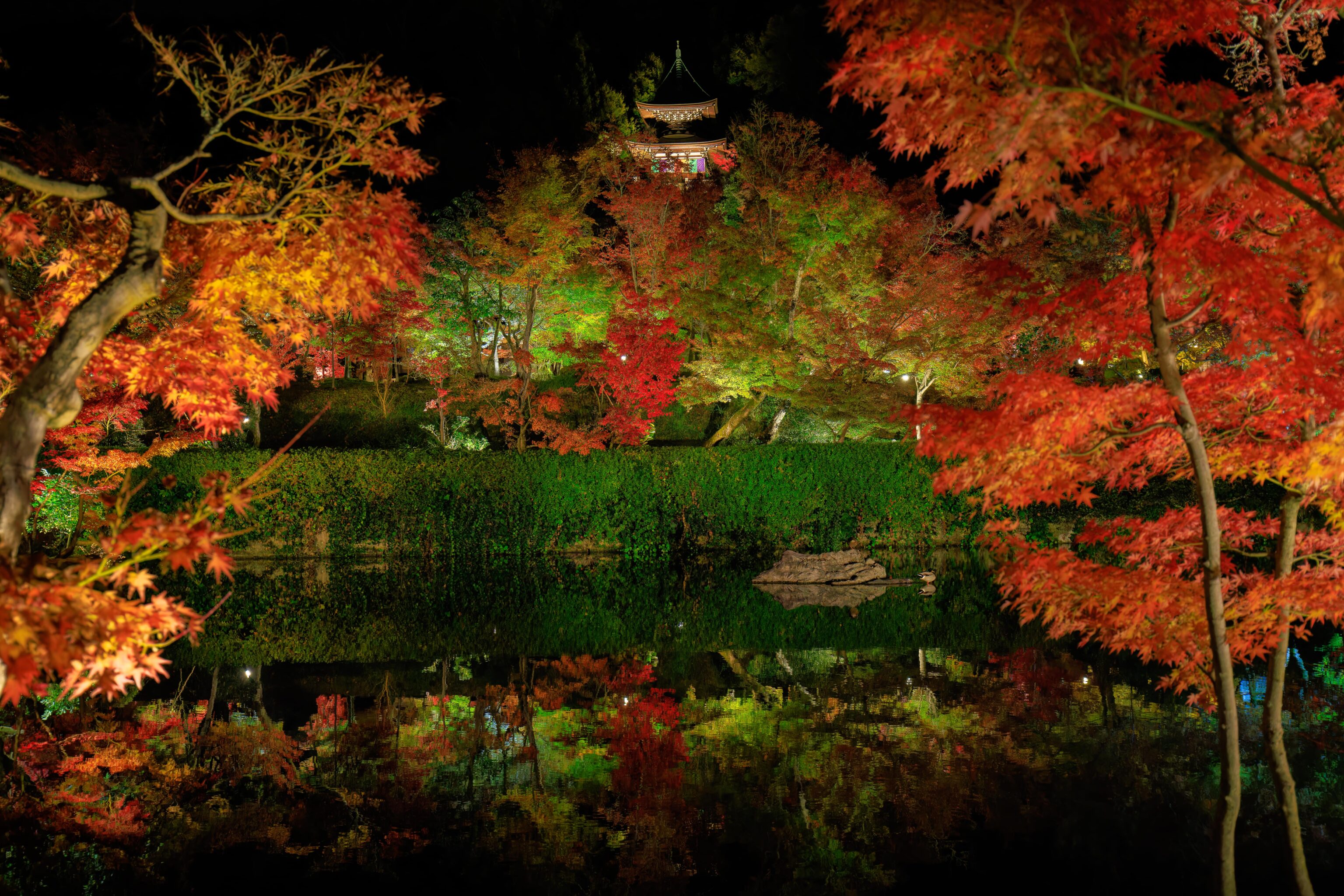
We got a beautiful view of the pond with the Taho-to above, peeking out above the foliage below.
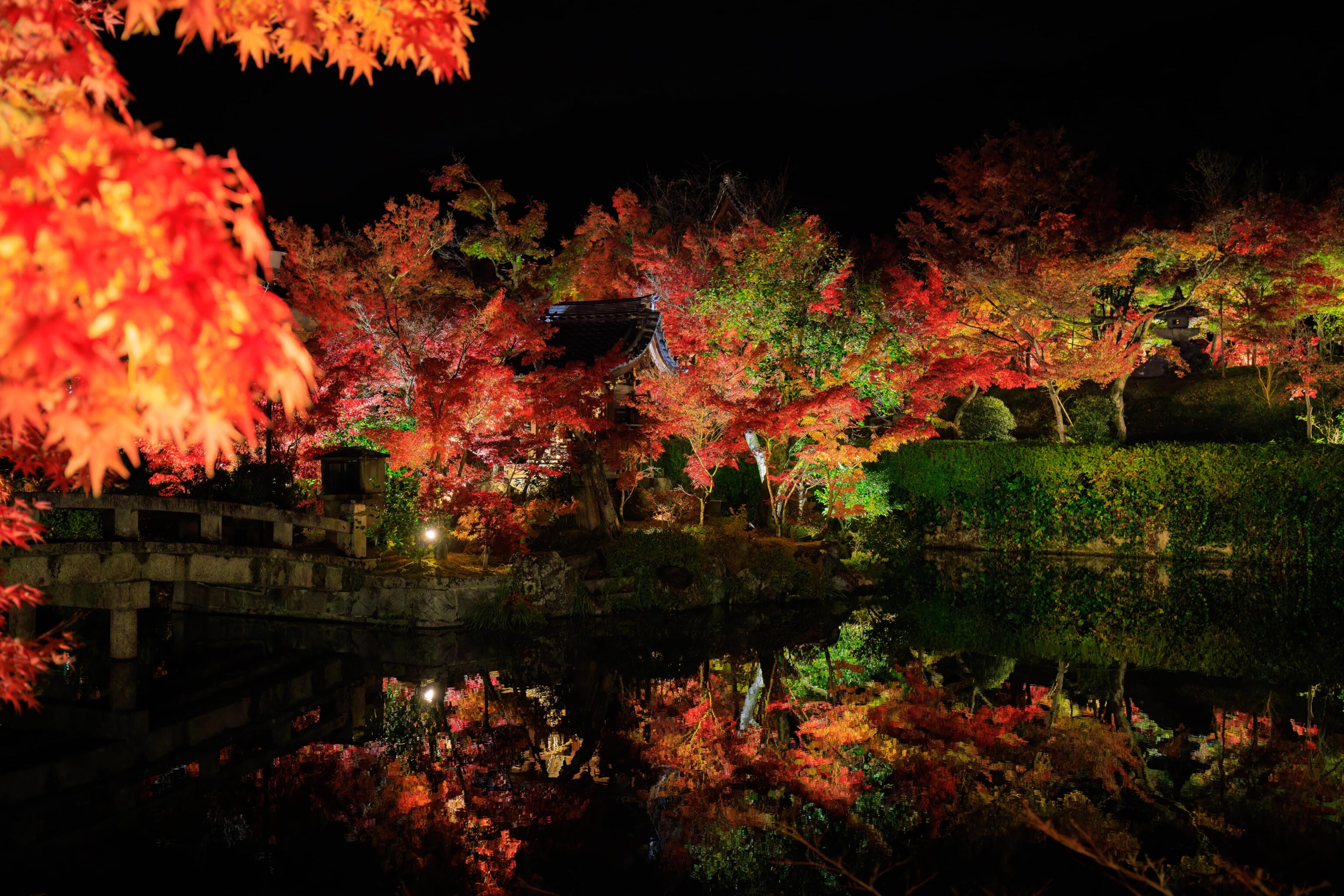
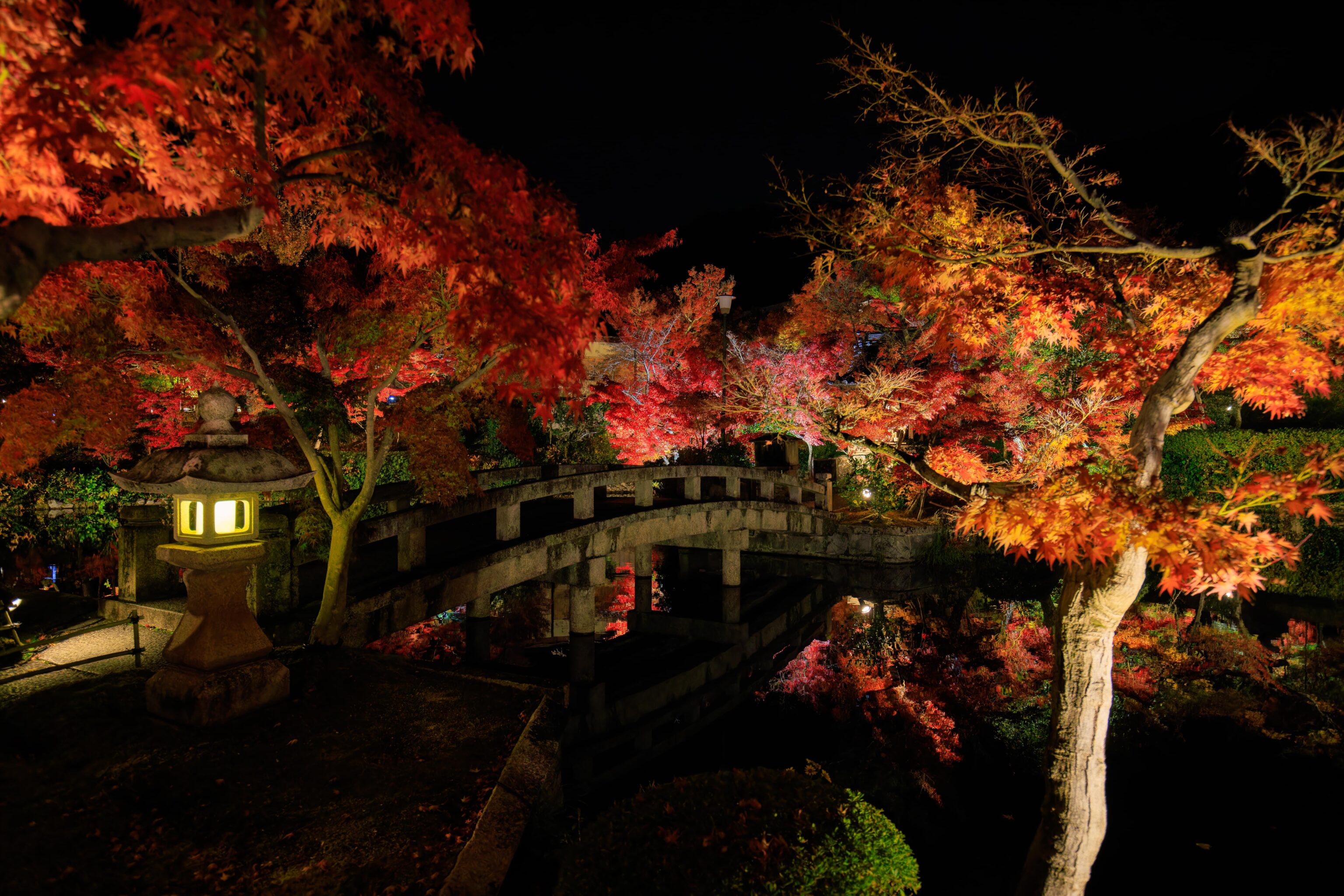
We soon approached the bridge to the island in the middle of the pond.
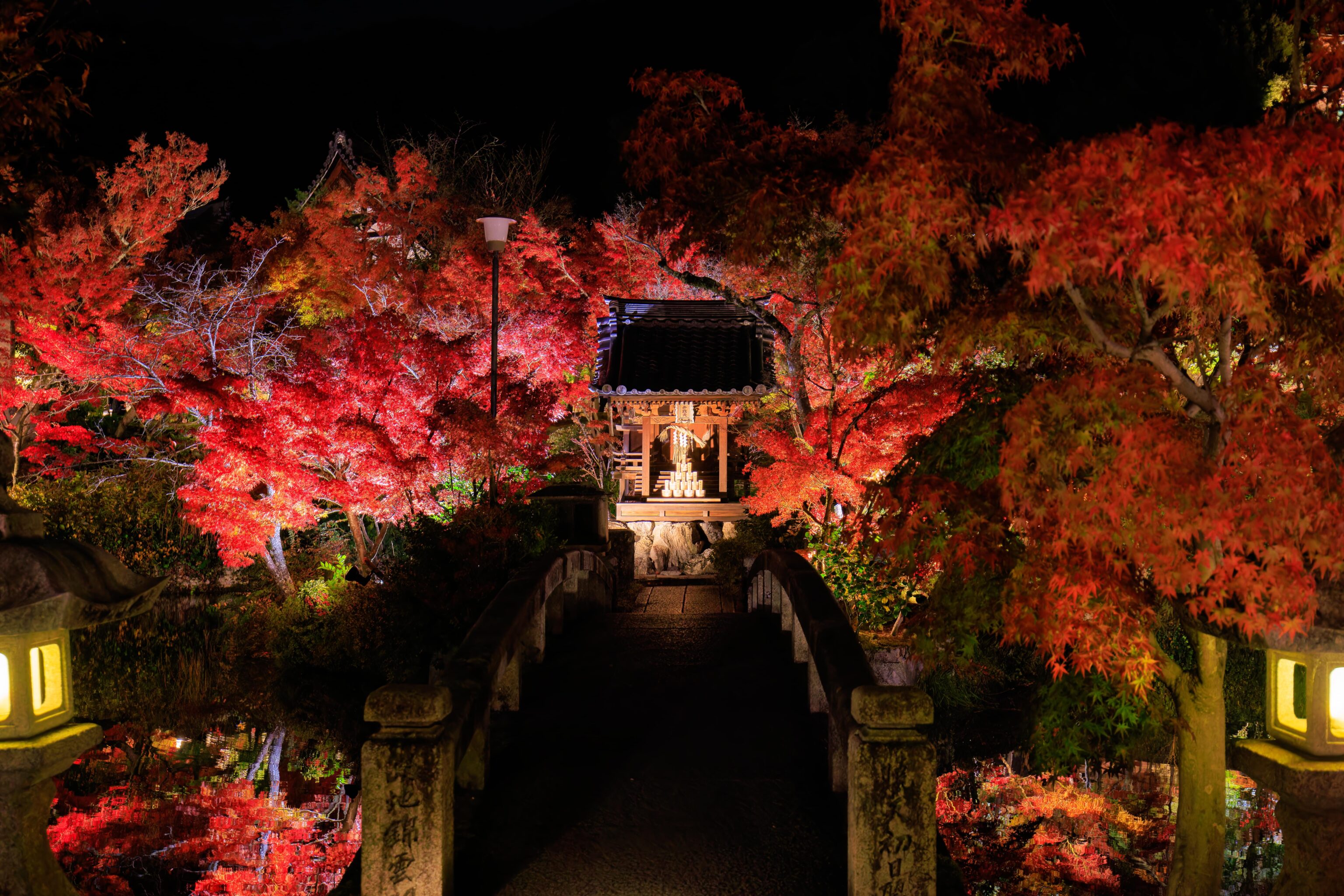
There were too many people to try and get a photo of the bridge with torii in front. This was the best we could do given all the people!
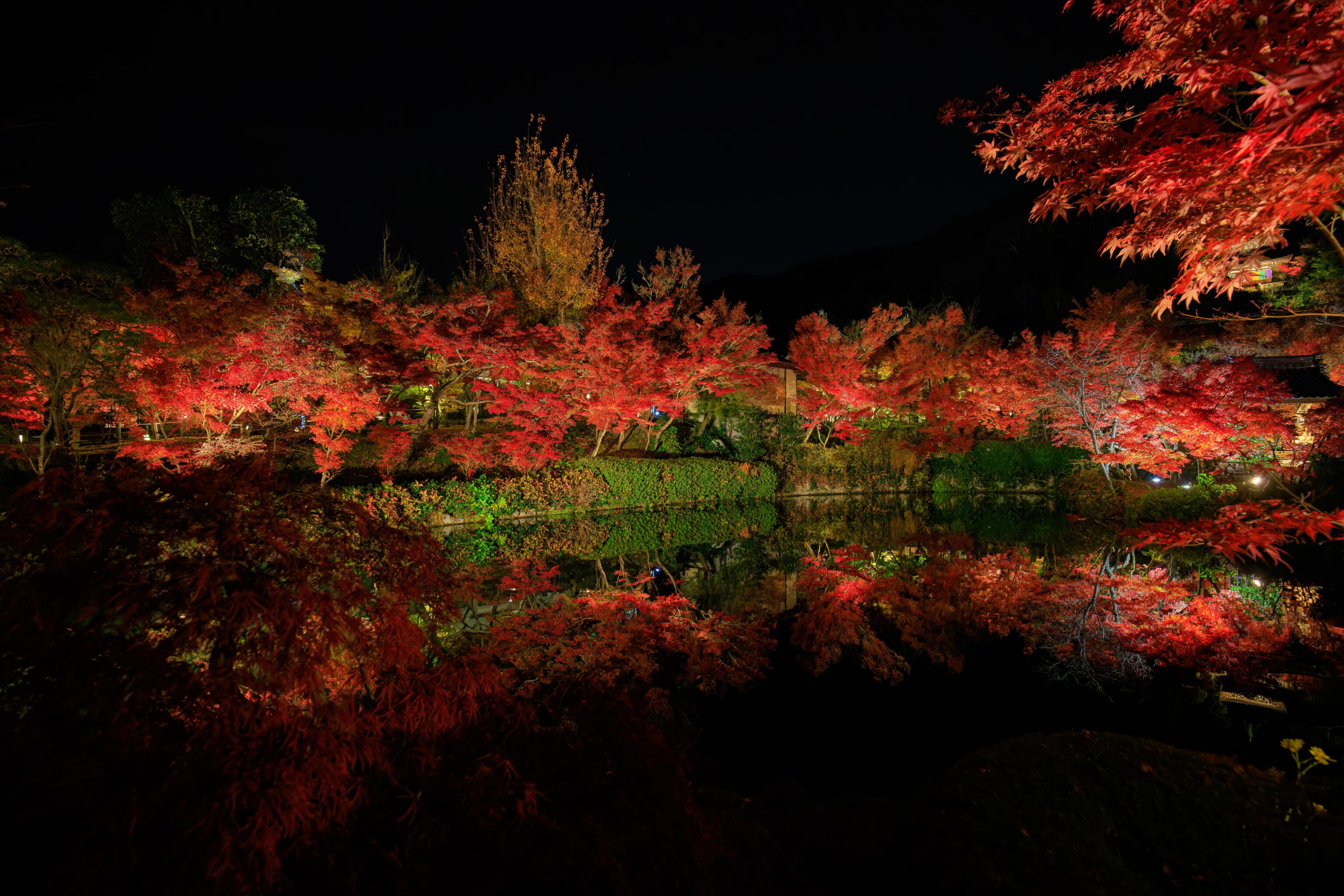
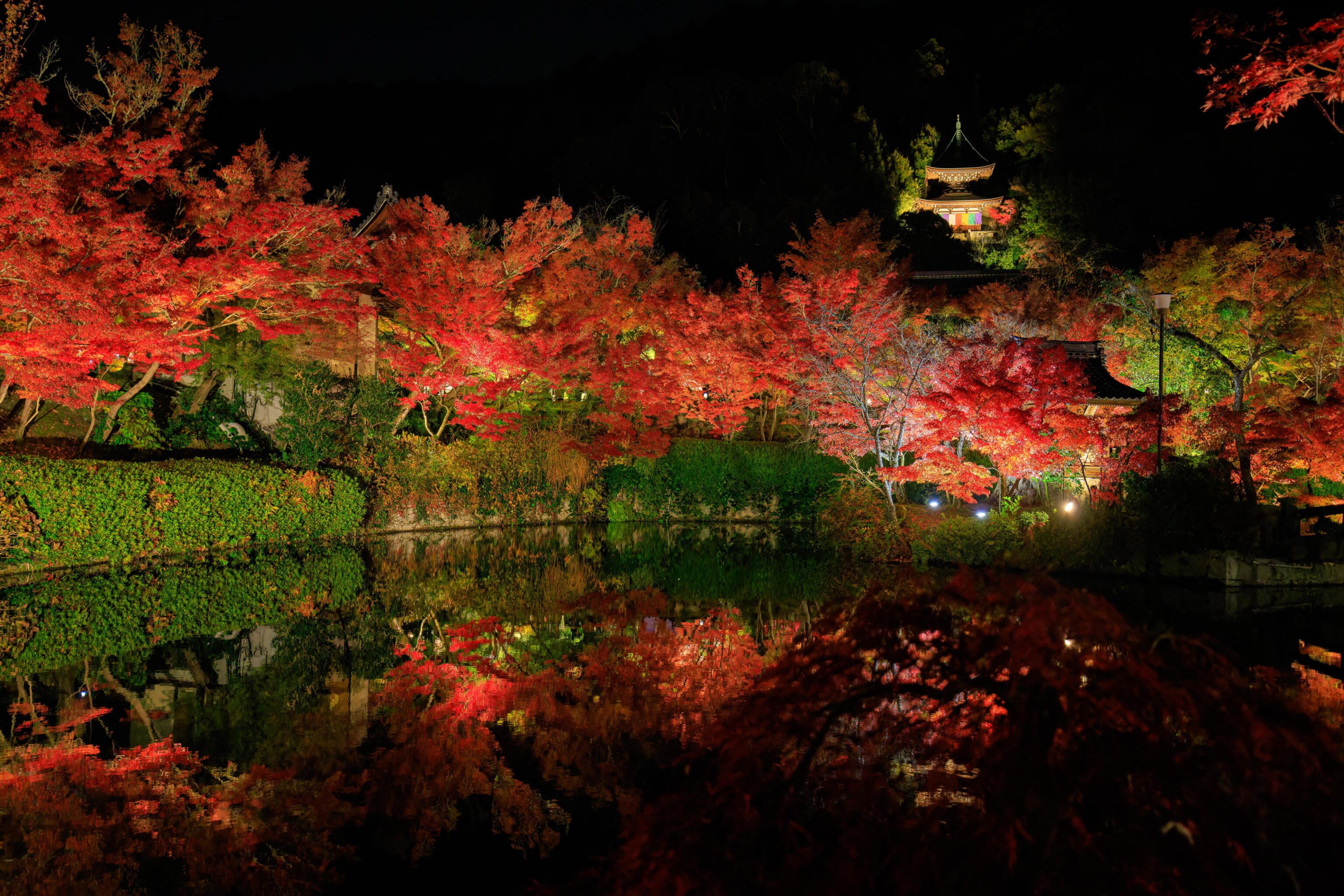
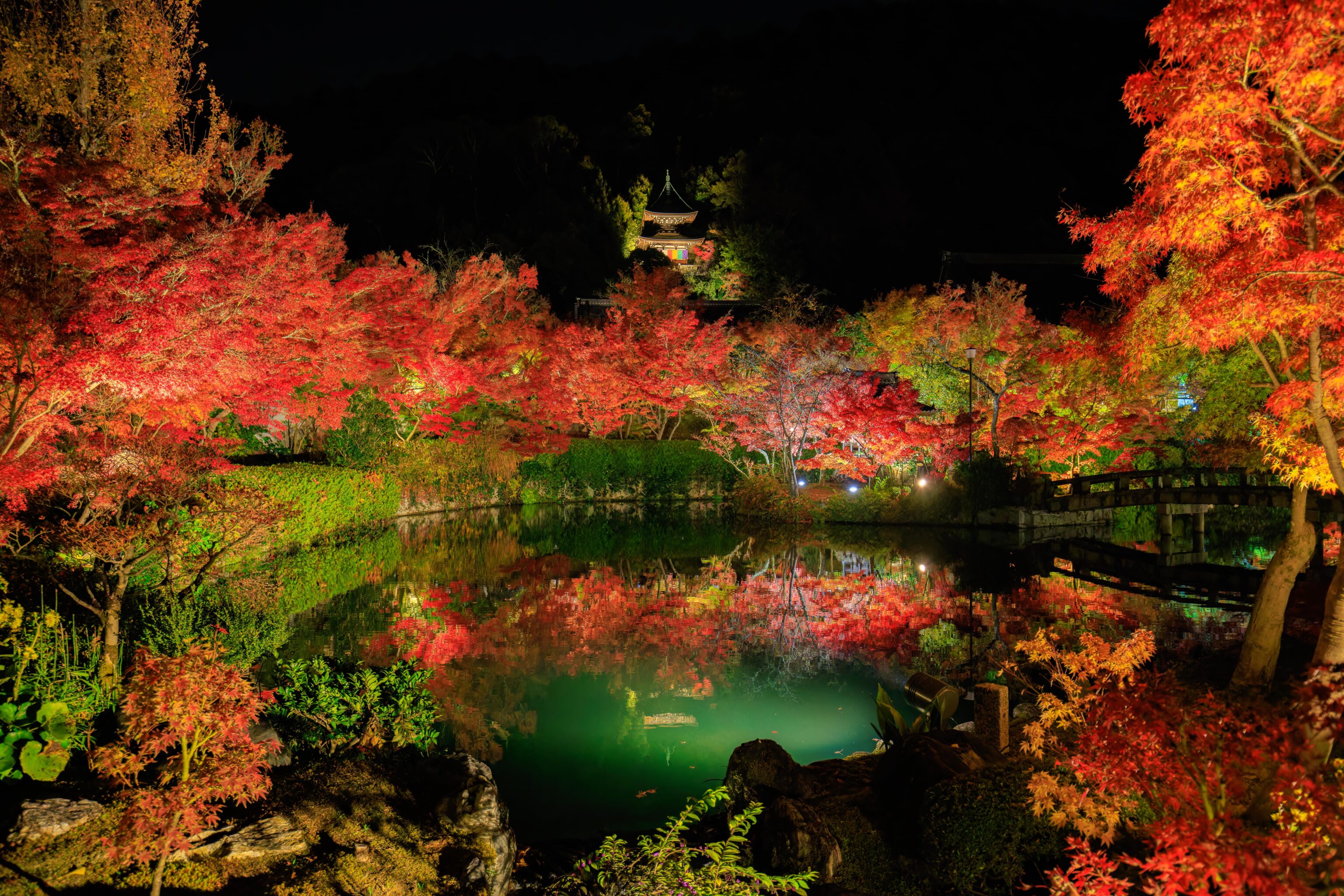
The pond was definitely beautiful and very different from walking under a canopy of illuminated leaves.
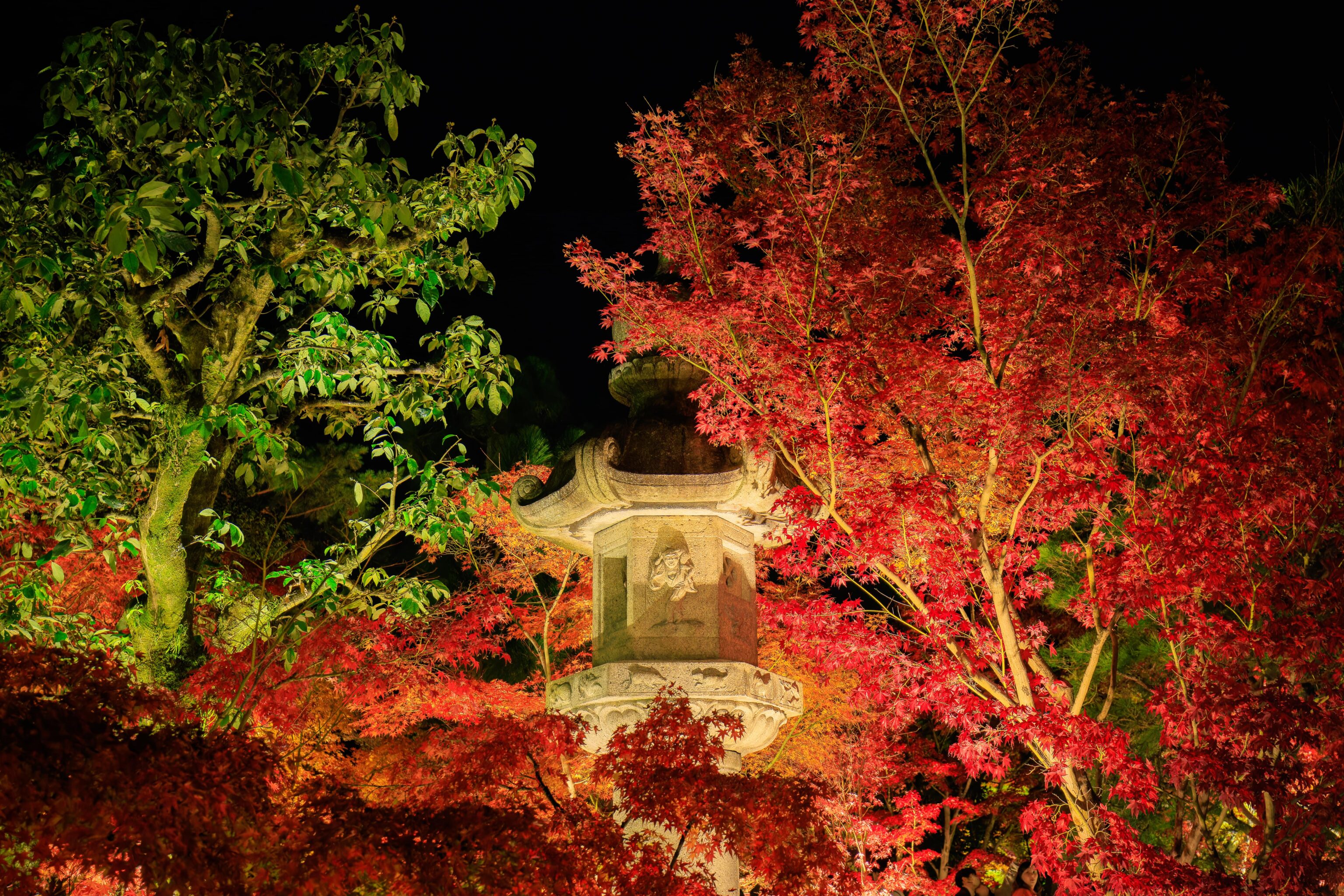
A stone lantern nestled in among the trees.
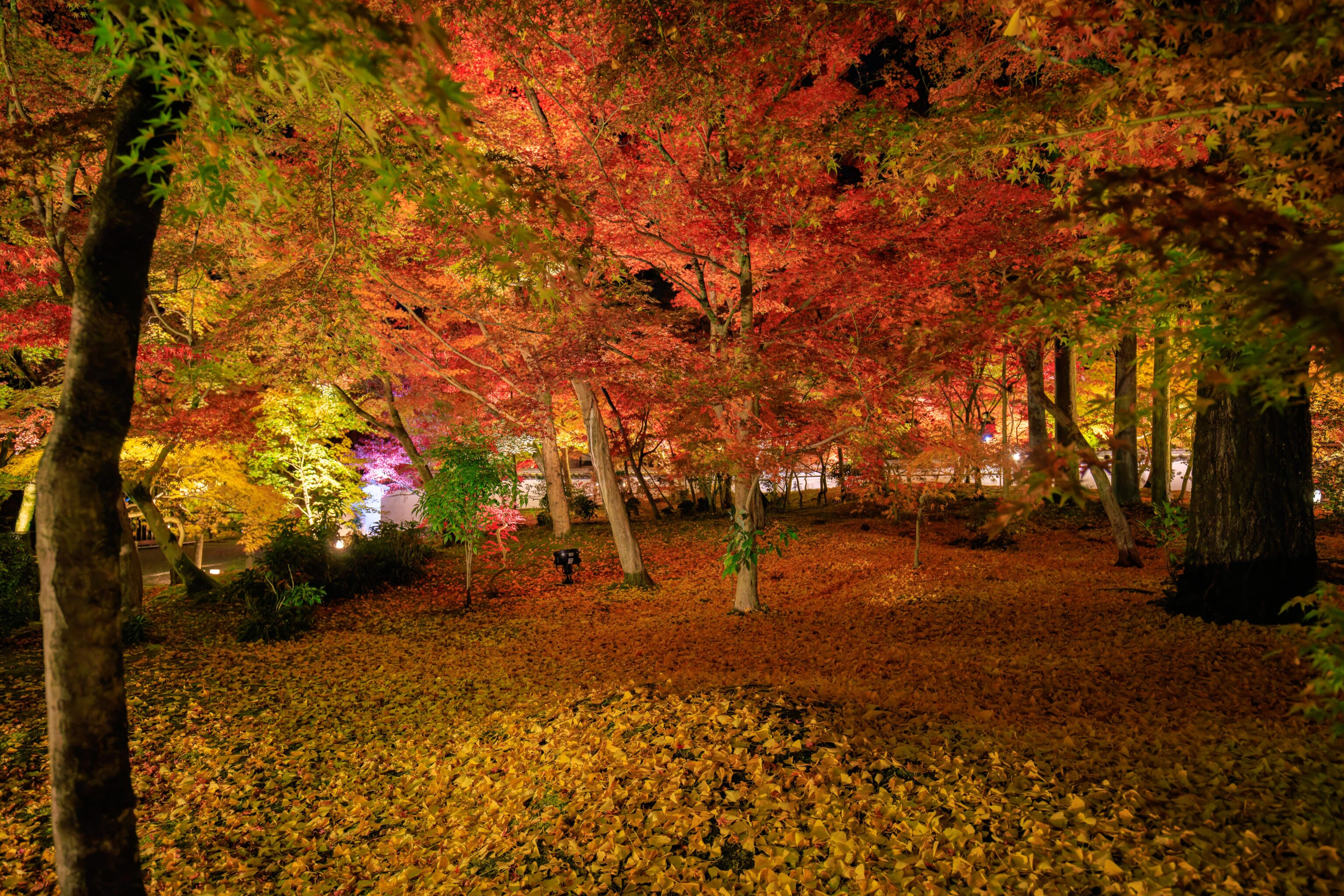
The yellow ginko leaves that had already fallen to the ground looked as nice now as they did before. We walked through this area on the way out as the path that was blocked off earlier in the day was now open.
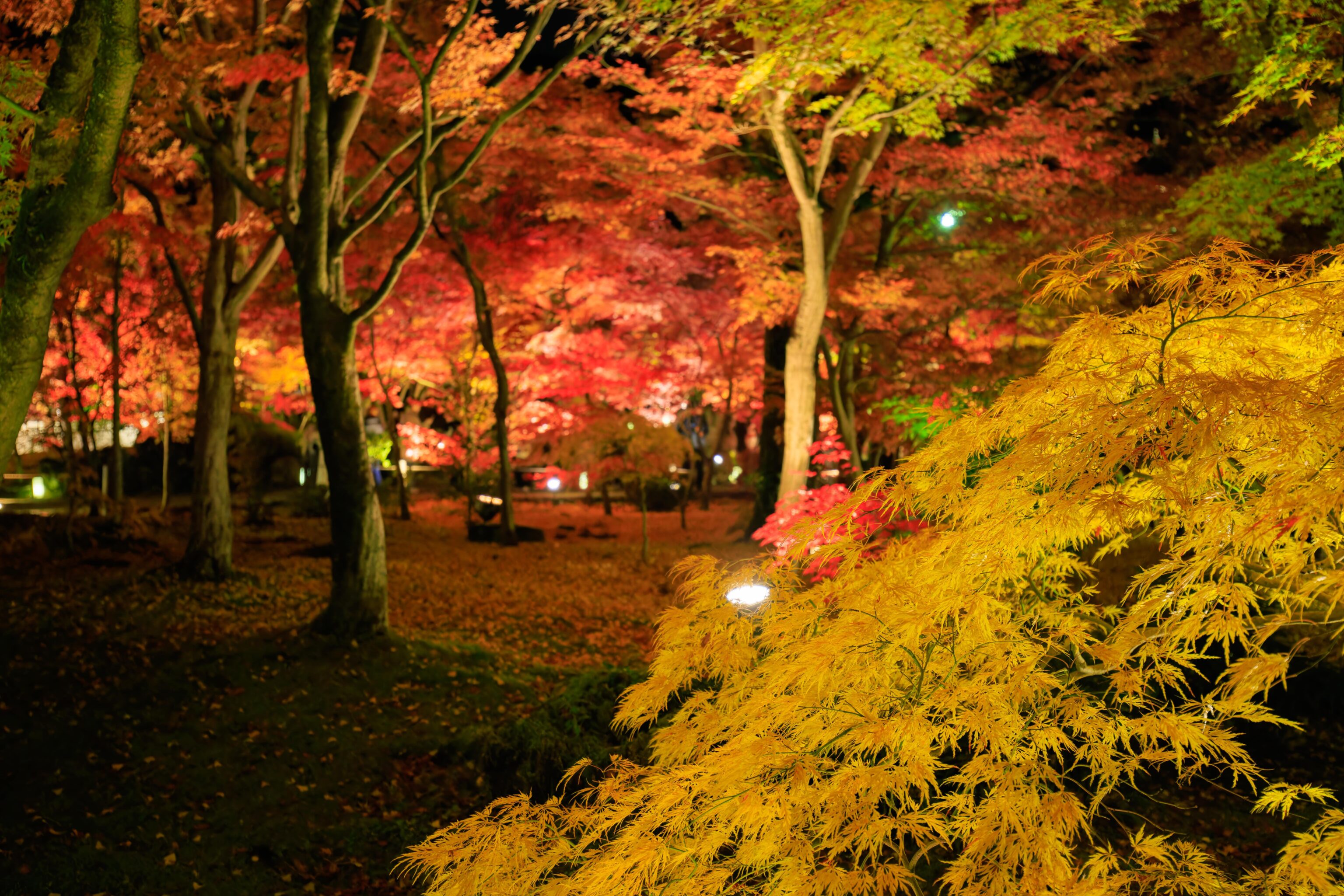
A pretty tree with yellow leaves as we approached the end of the route and the exit. From here, we walked ten minutes or so to a bus stop near the post office where we got money from an ATM earlier in the day. Both the 204 and 93 busses stop by the Hyatt Place Kyoto, our home away from home.
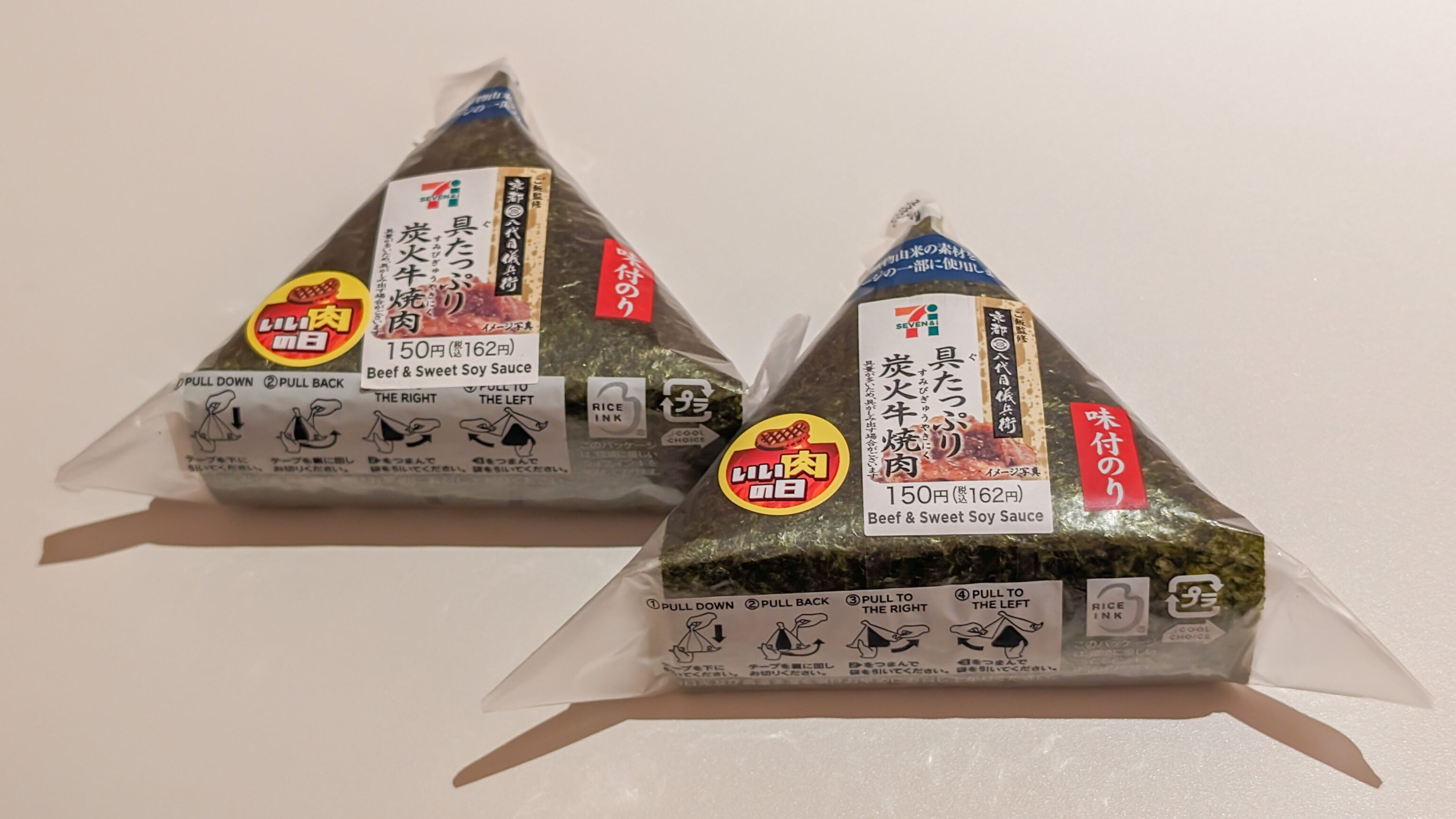
We did get an evening snack after getting off the bus though! More beef and sweet soy sauce onigiri from 7-Eleven!
Footnotes
- https://en.wikipedia.org/wiki/Lake_Biwa ↩︎
- https://muza-chan.net/japan/index.php/blog/pure-zen-in-kyoto-kogetsudai-moon-viewing-platform ↩︎
- https://en.wikipedia.org/wiki/Ginkaku-ji ↩︎
- https://www.japan.travel/en/spot/1170/ ↩︎
- https://livejapan.com/en/in-kansai/in-pref-kyoto/in-ginkakuji-temple_nanzenji-temple/article-a2000150/ ↩︎
- https://www.pinterest.com/pin/ginkakuji-the-temple-of-the-silver-pavilion–6755468163659839/ ↩︎
- https://www.mlit.go.jp/tagengo-db/en/R1-00465.html ↩︎
- https://www.mykawaiilife.com/ginkaku-ji-and-the-silver-pavilion/ ↩︎
- https://kyotofukoh.jp/report1926.html ↩︎
- https://biwakososui.city.kyoto.lg.jp/en/episode/detail/4 ↩︎


